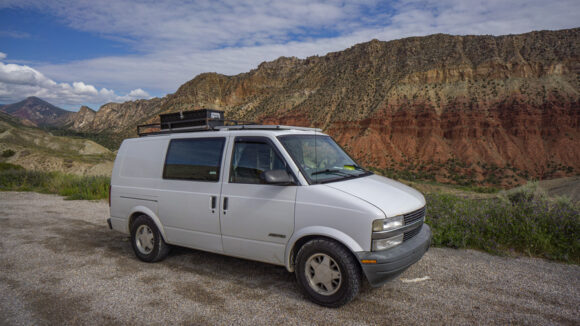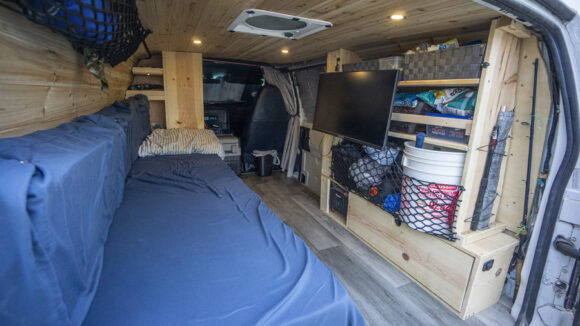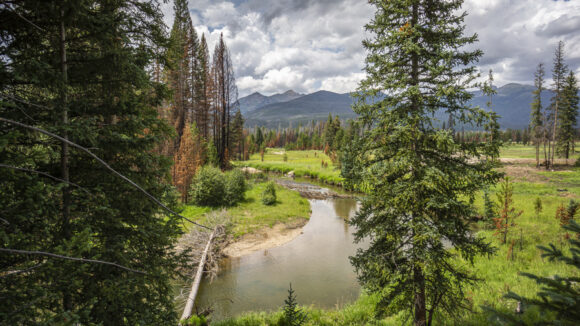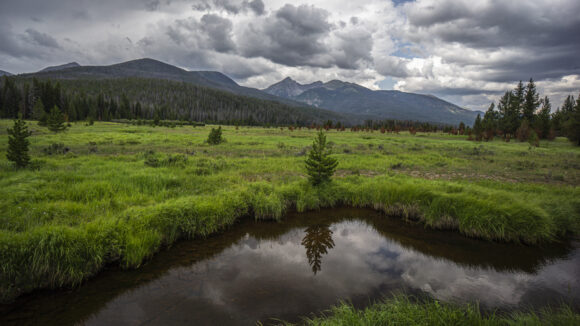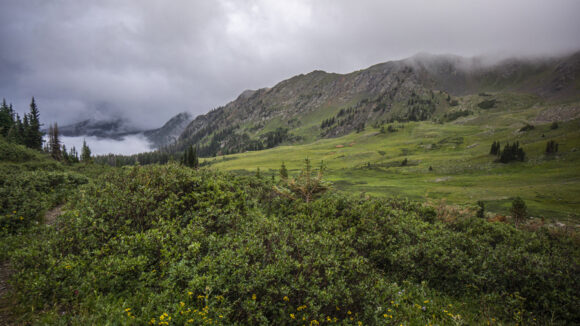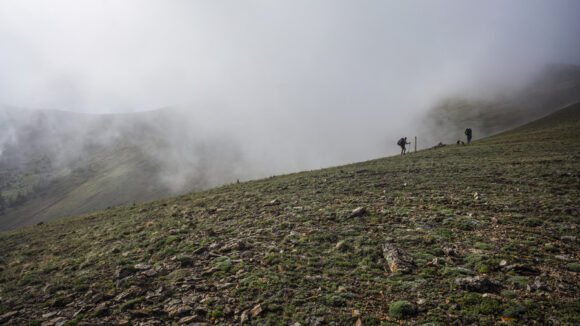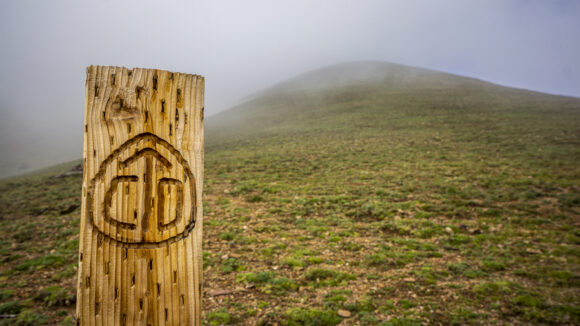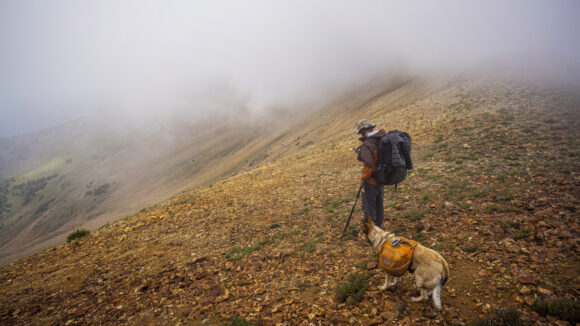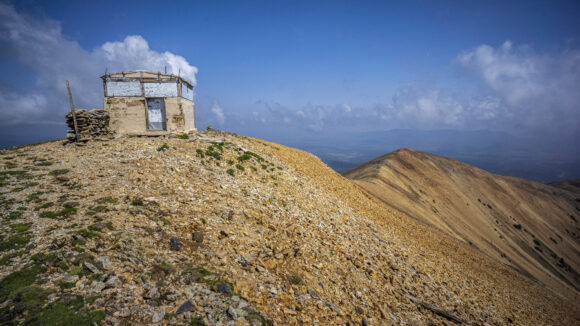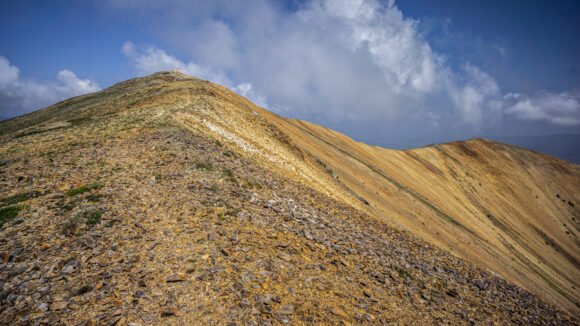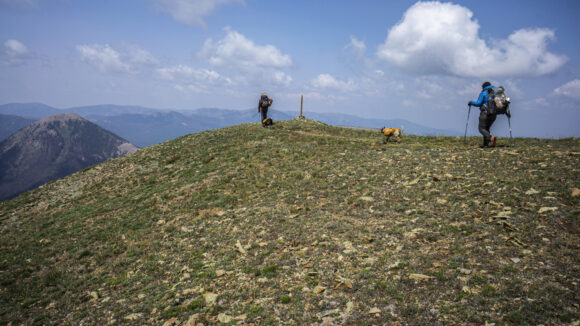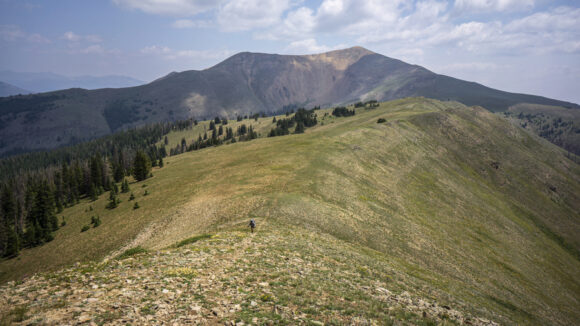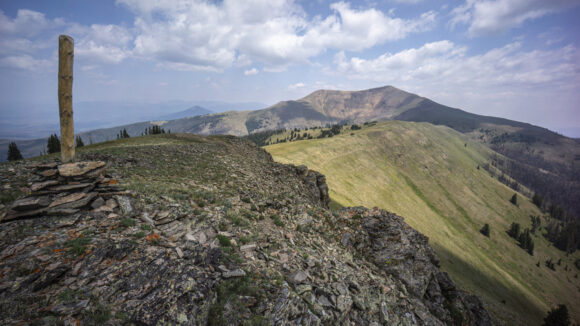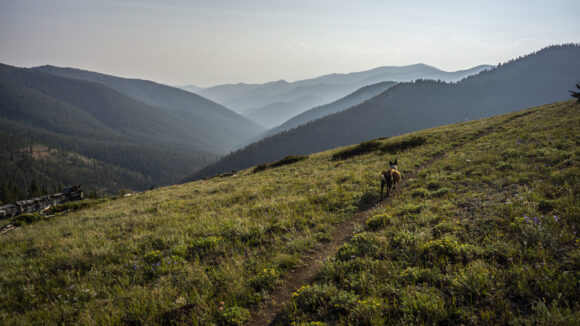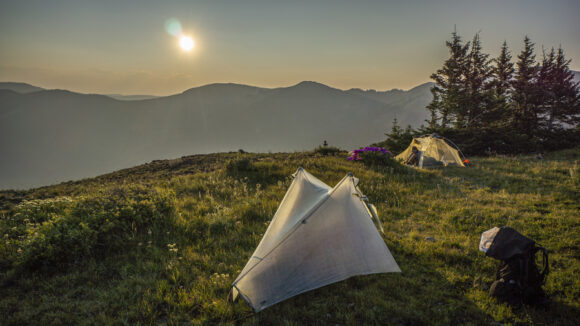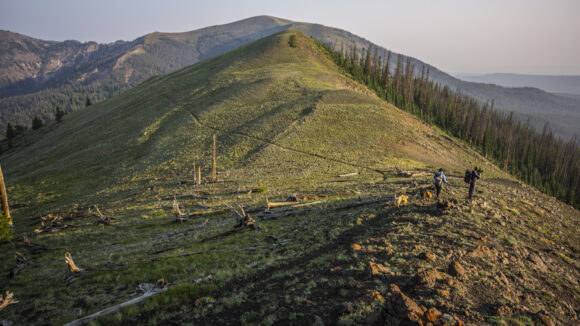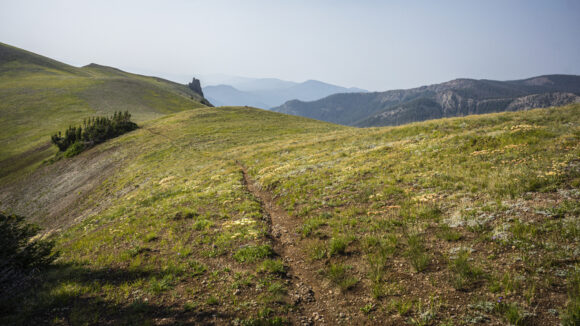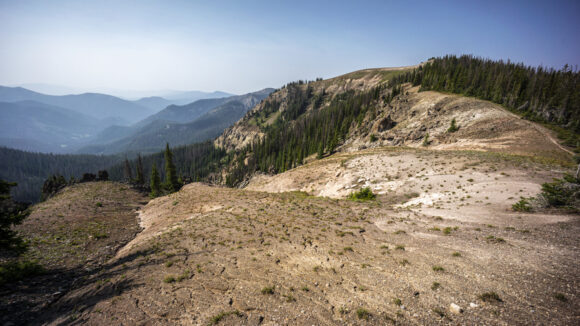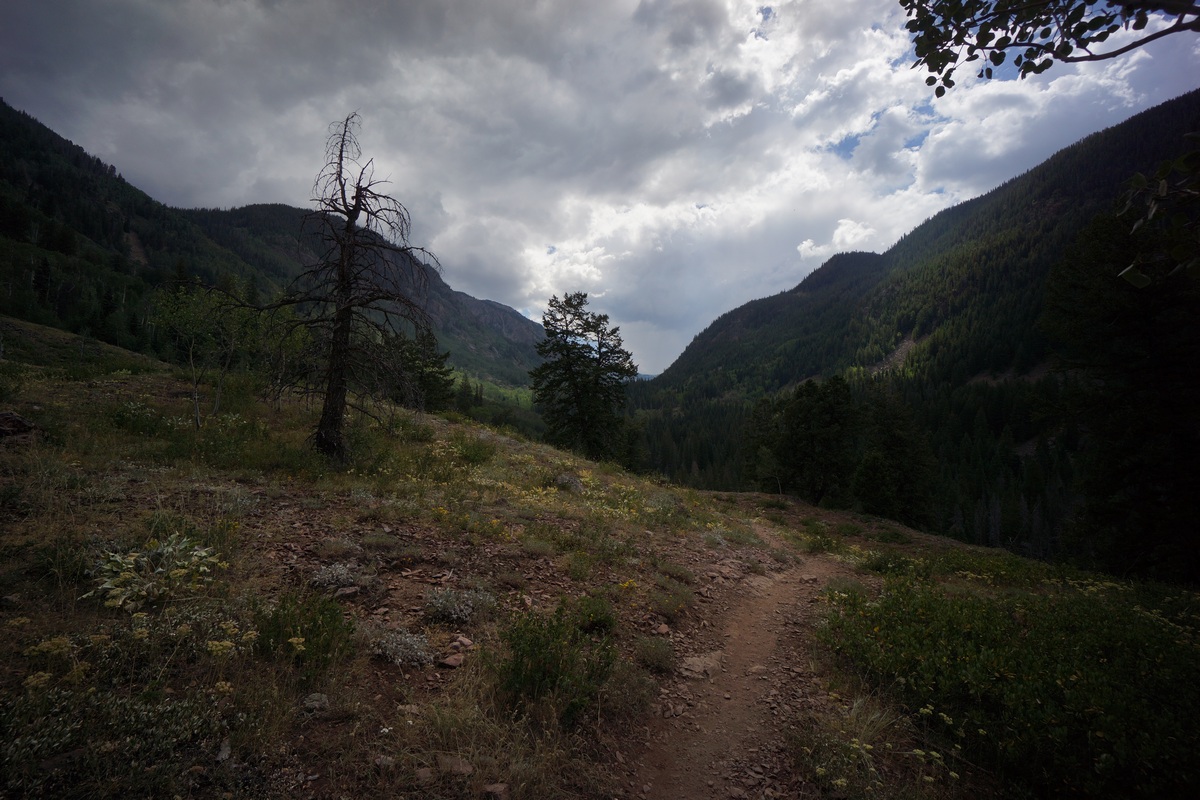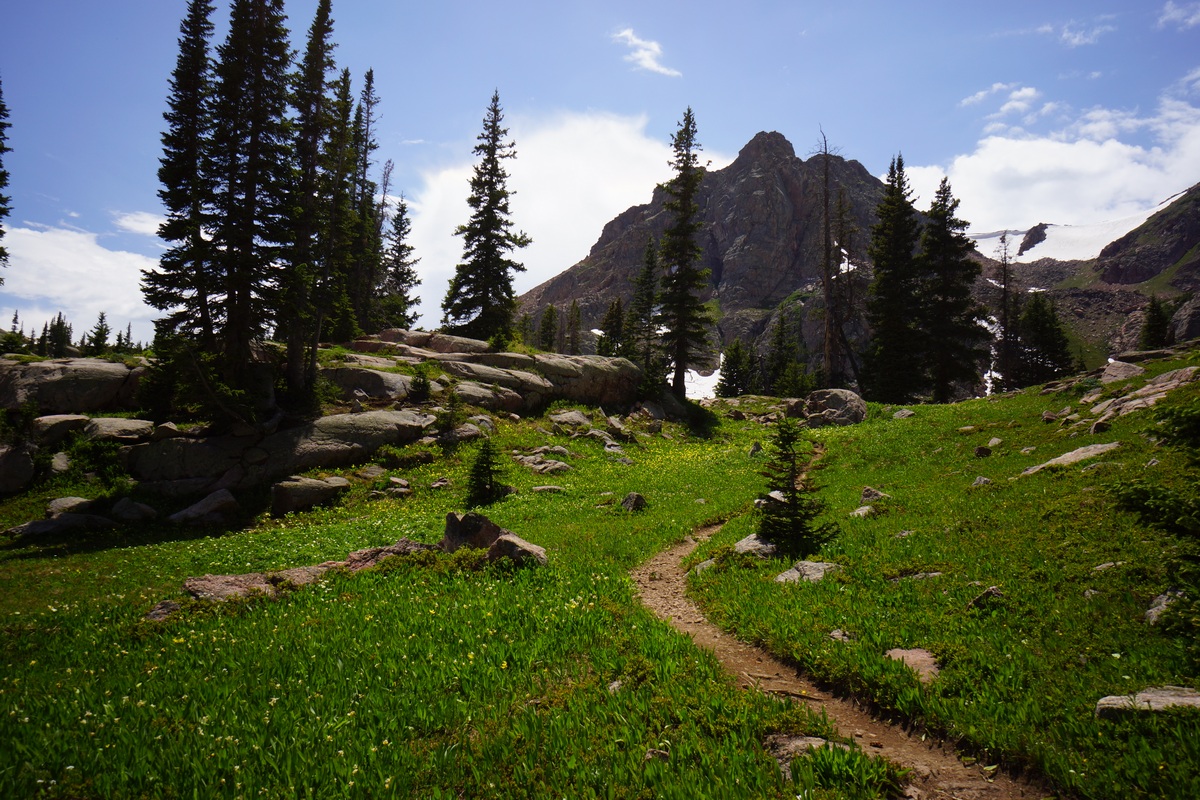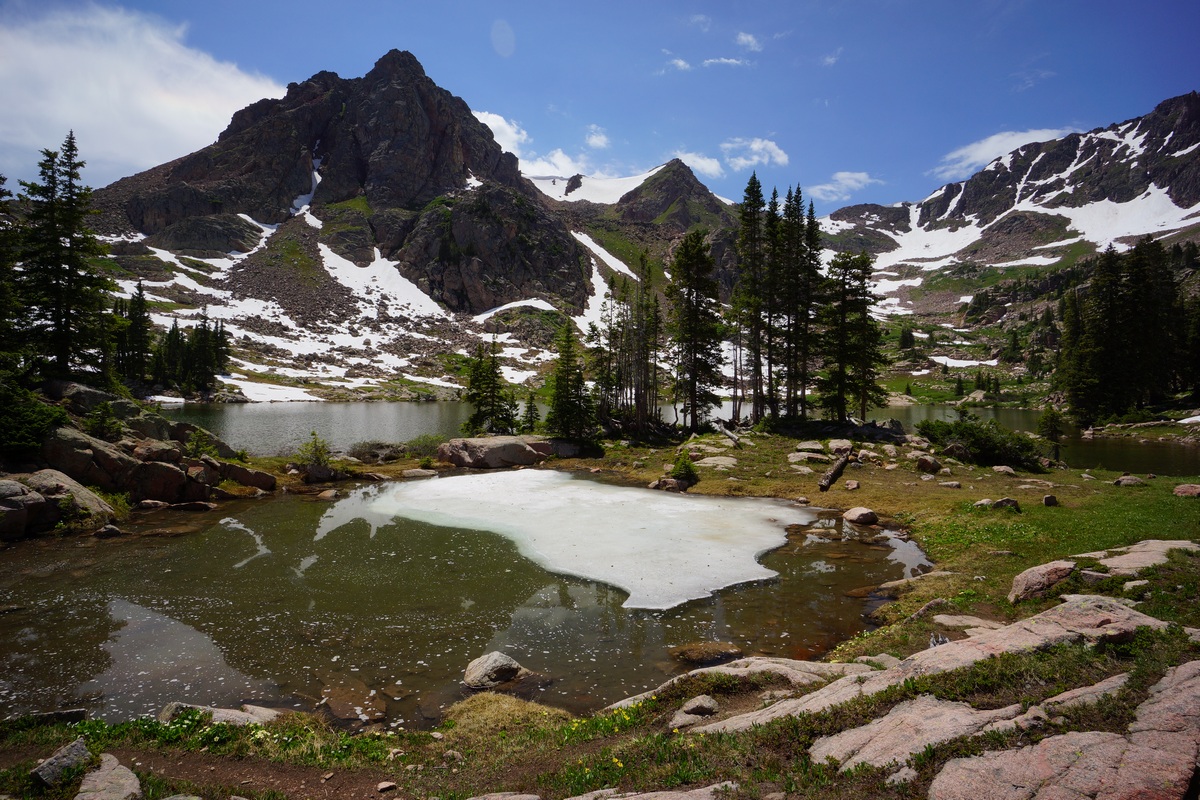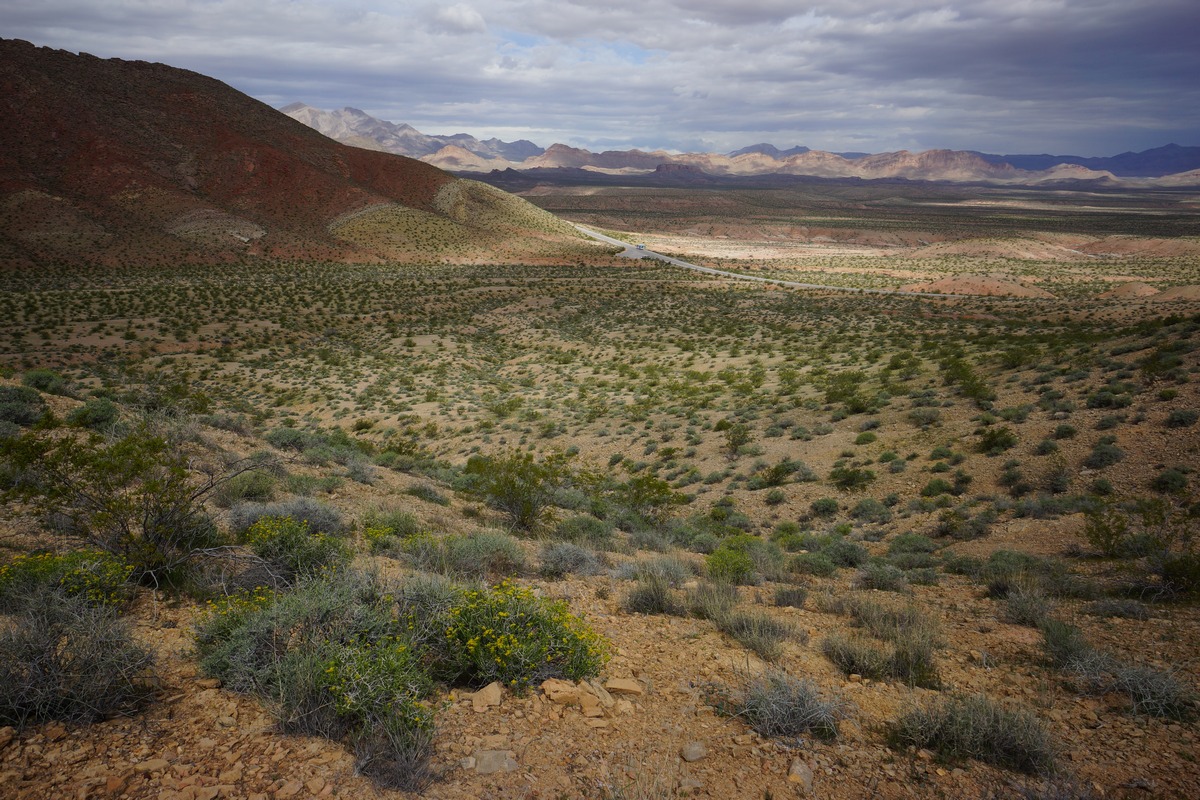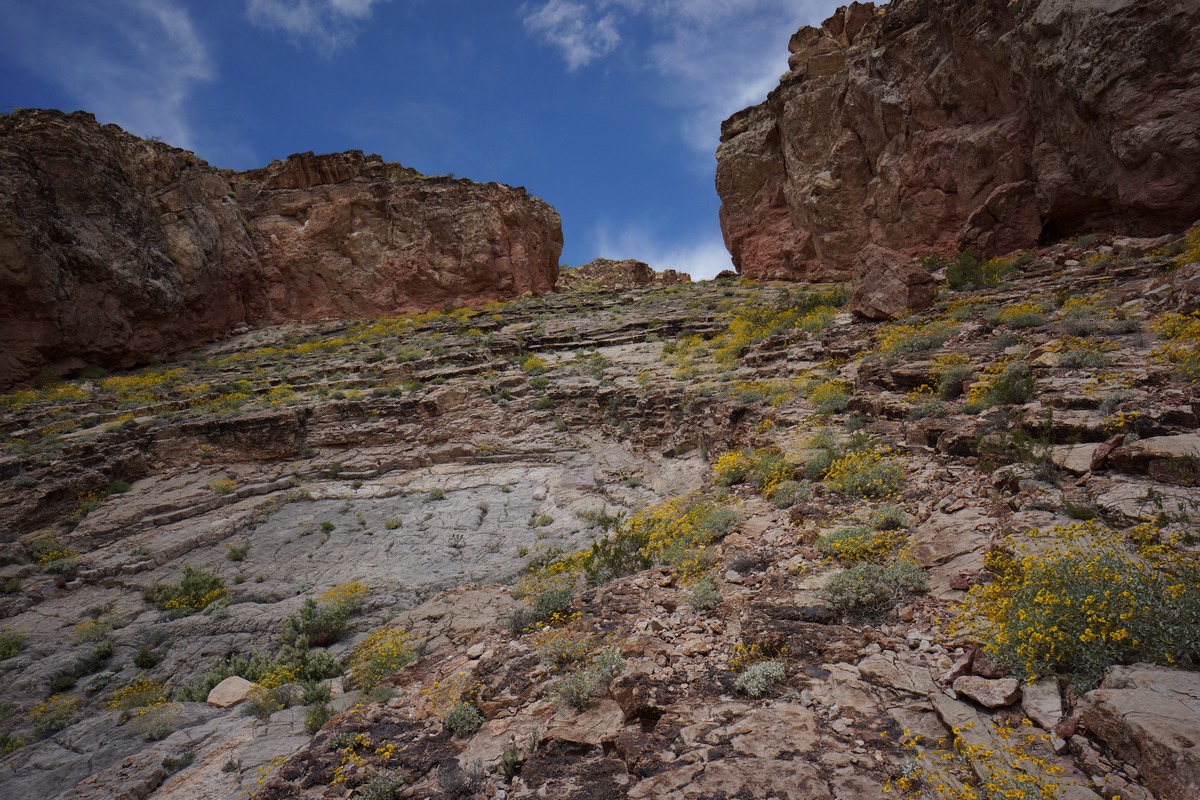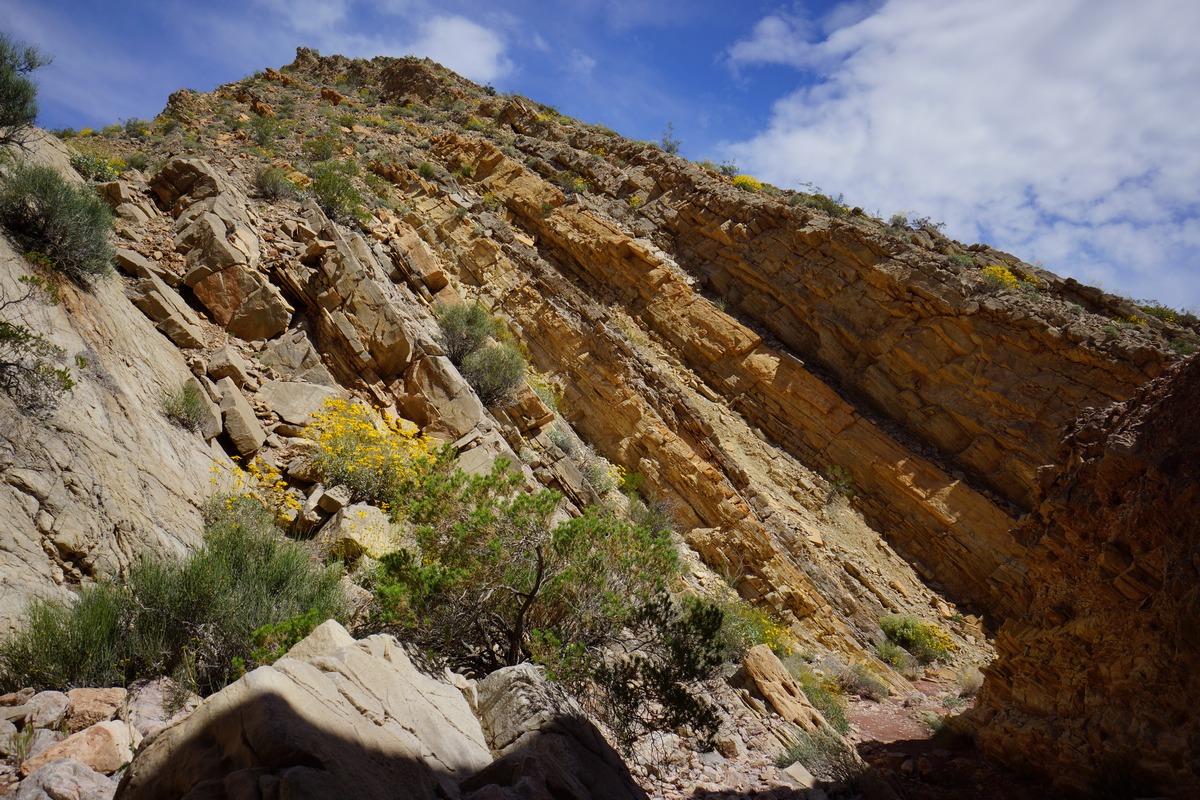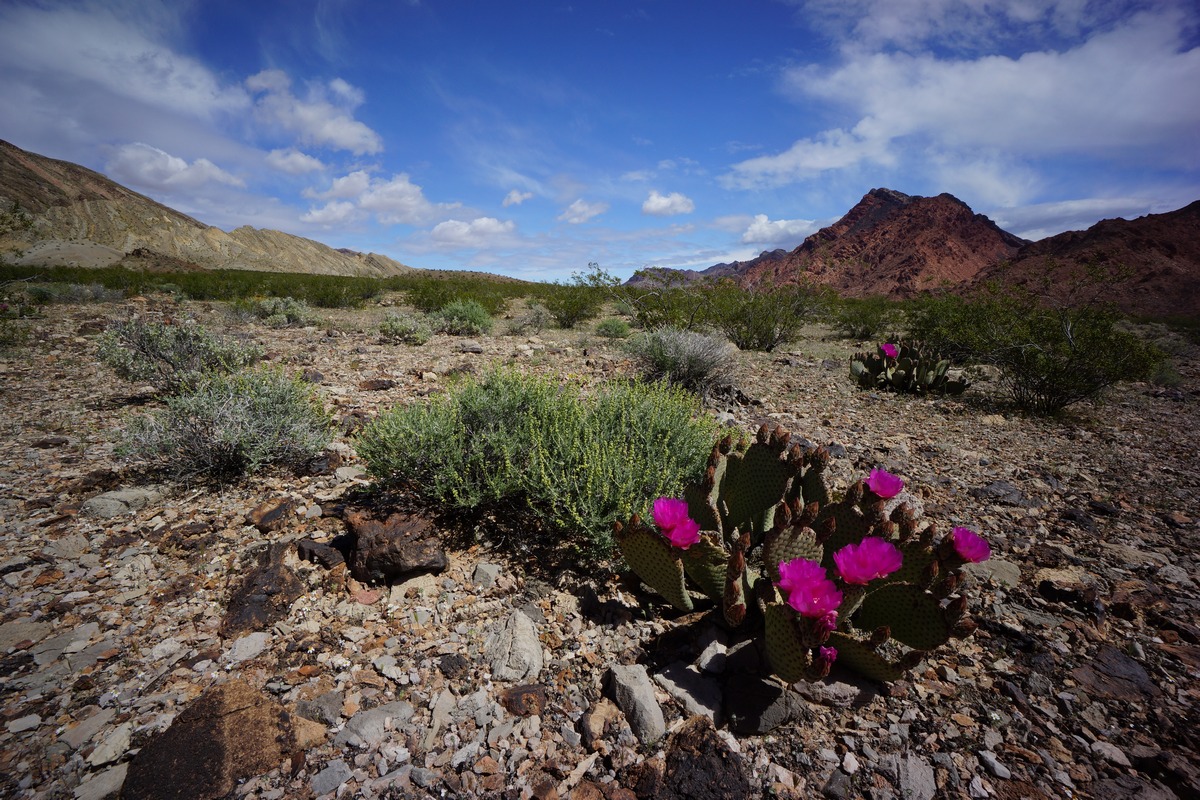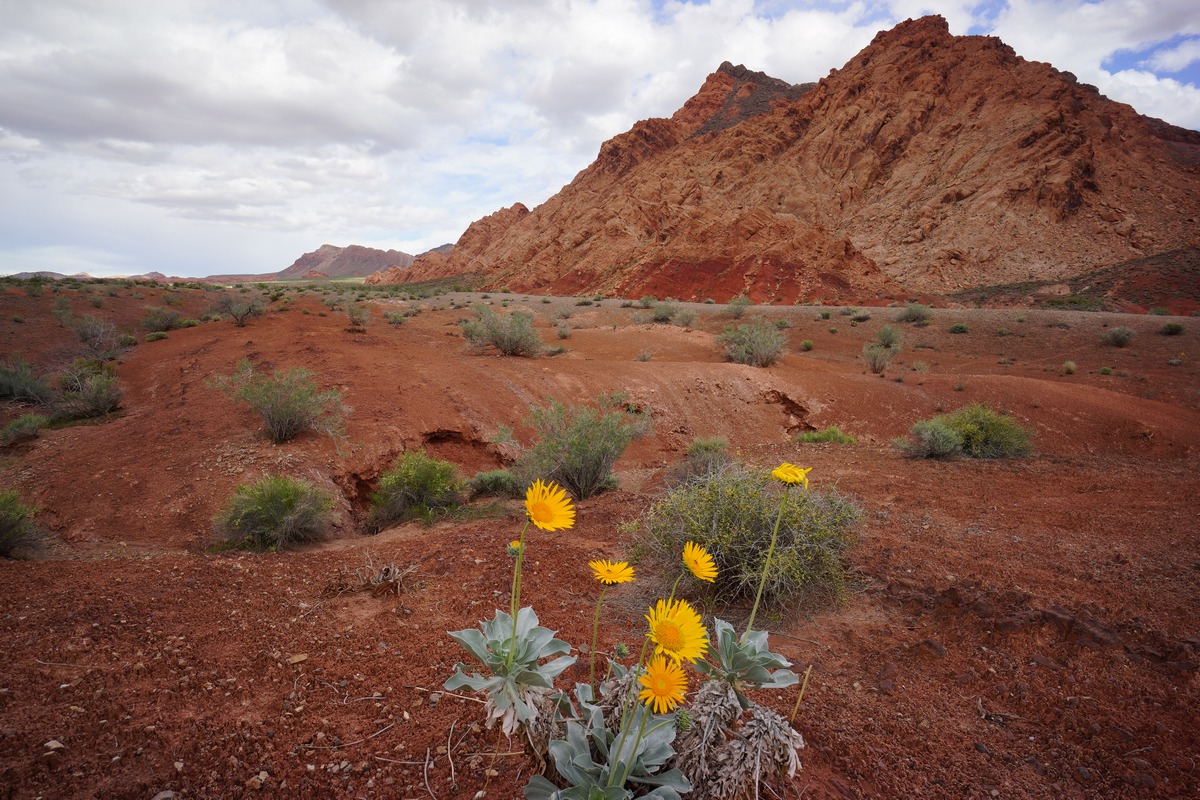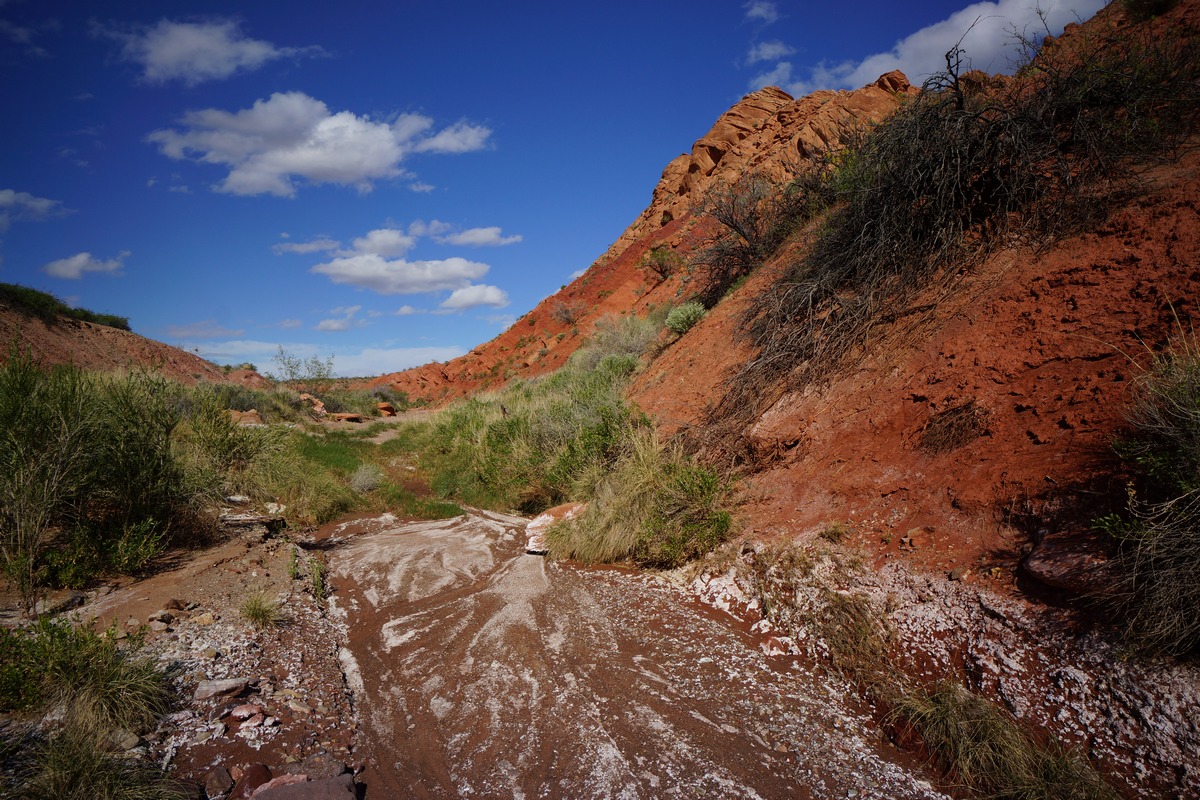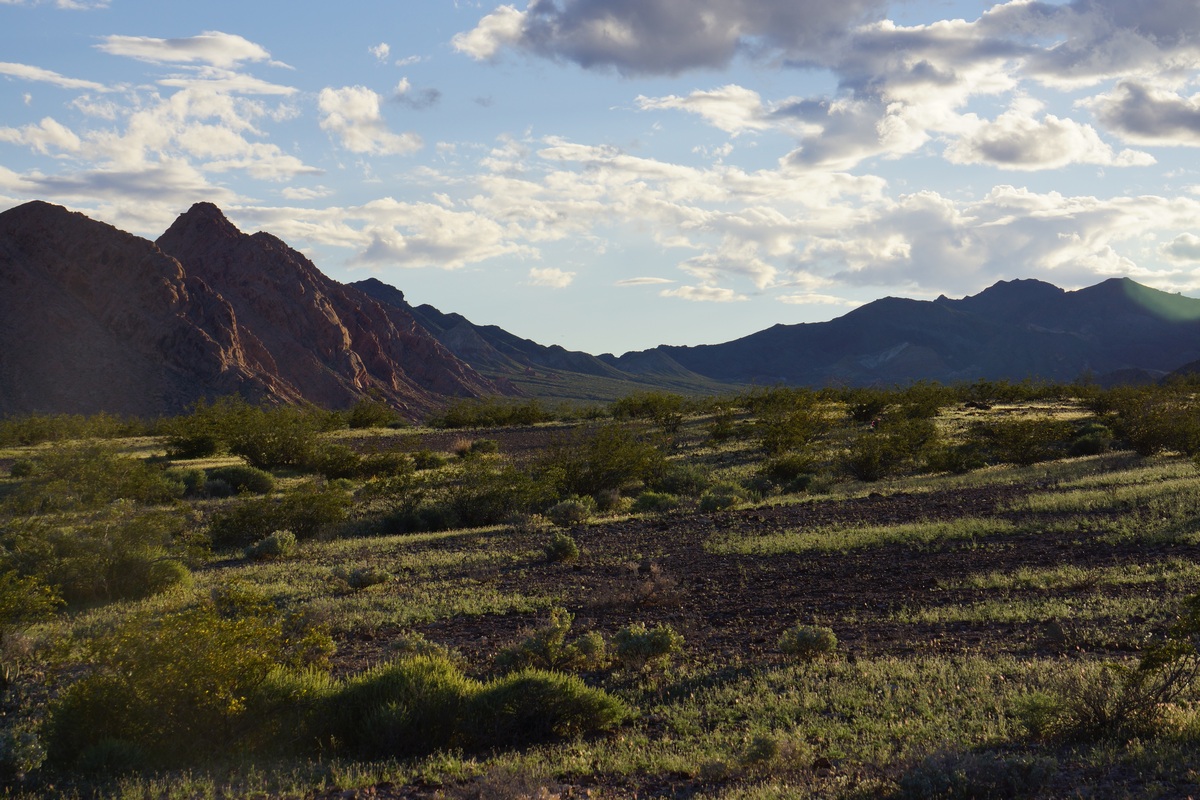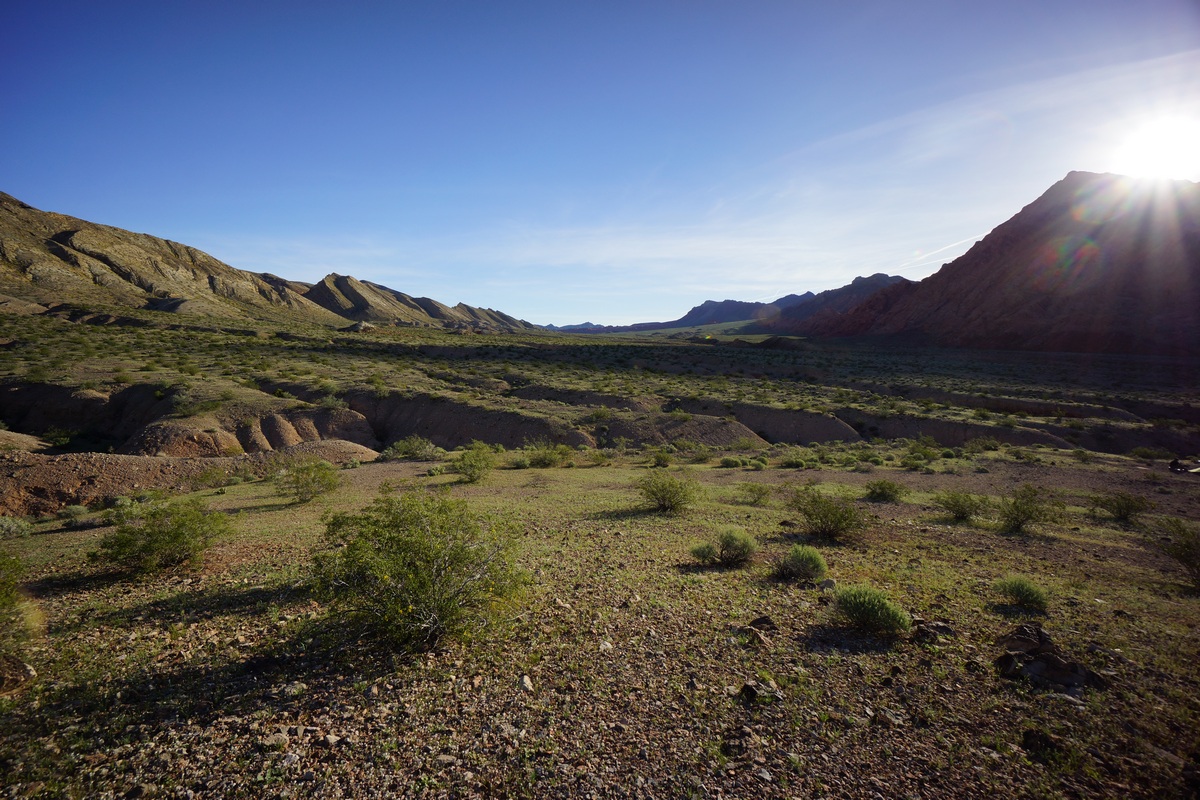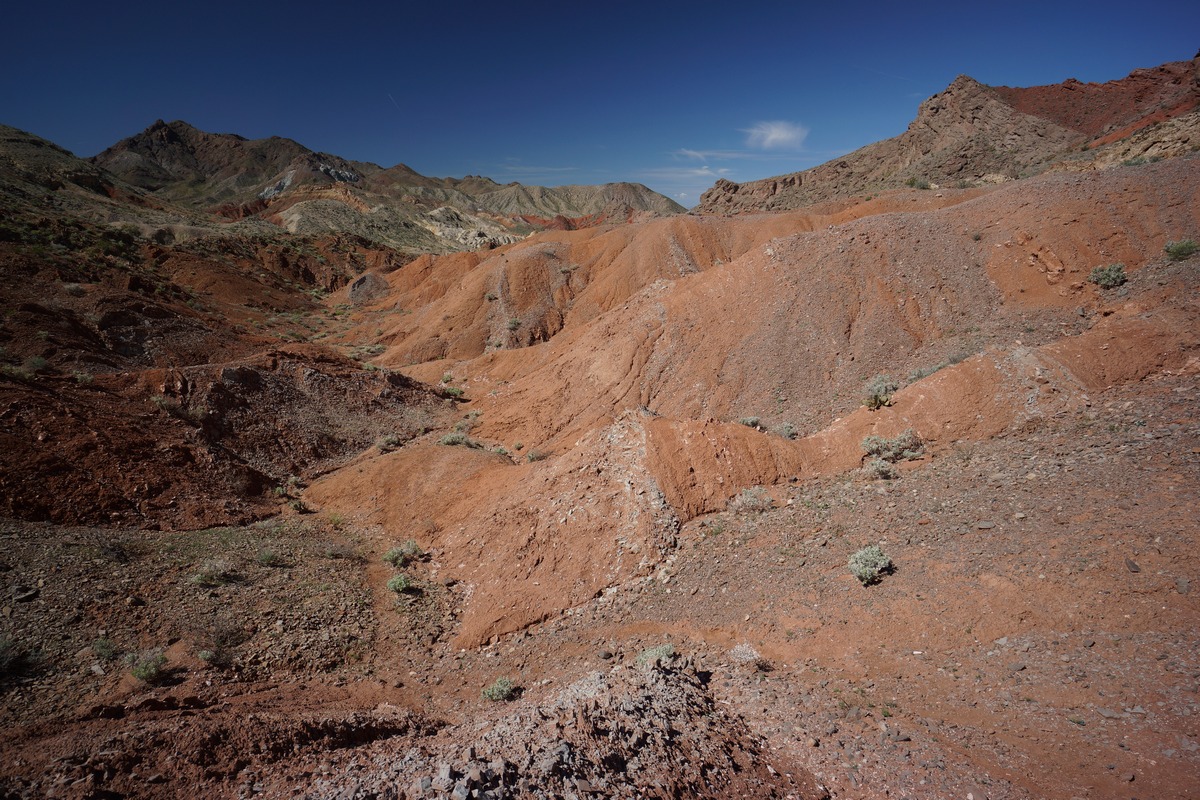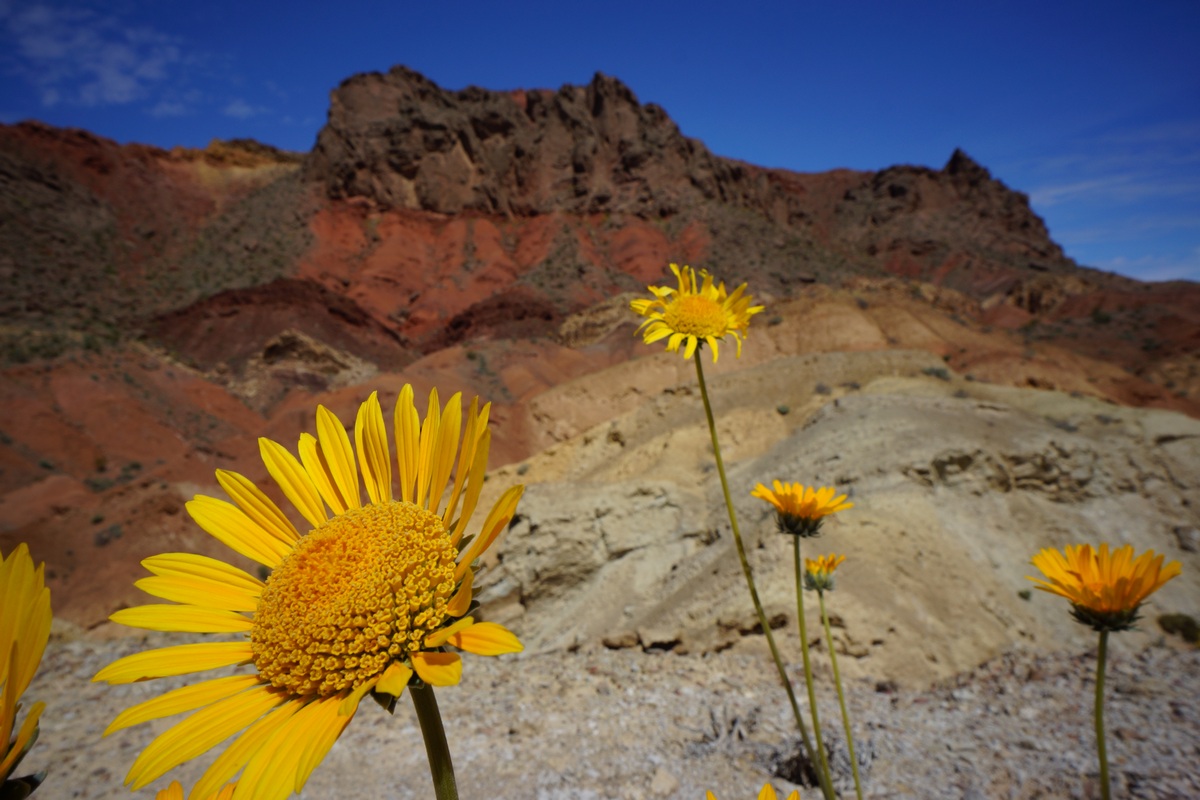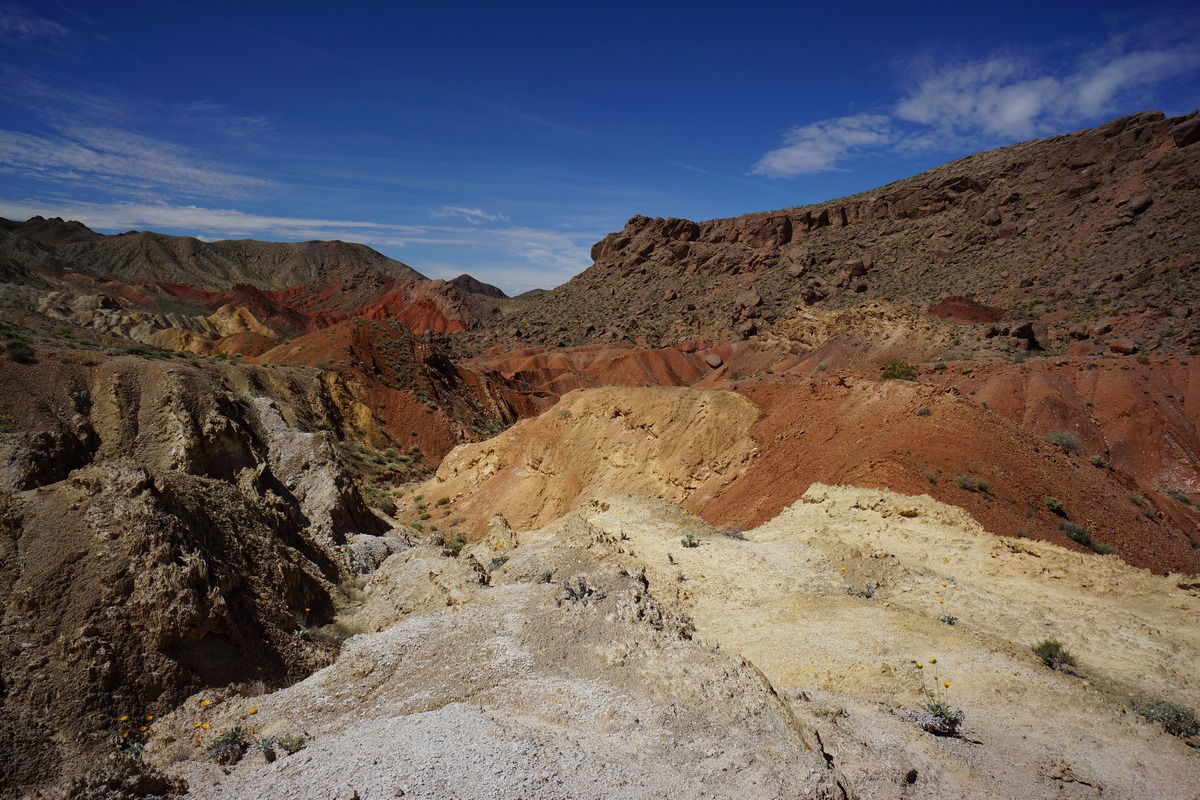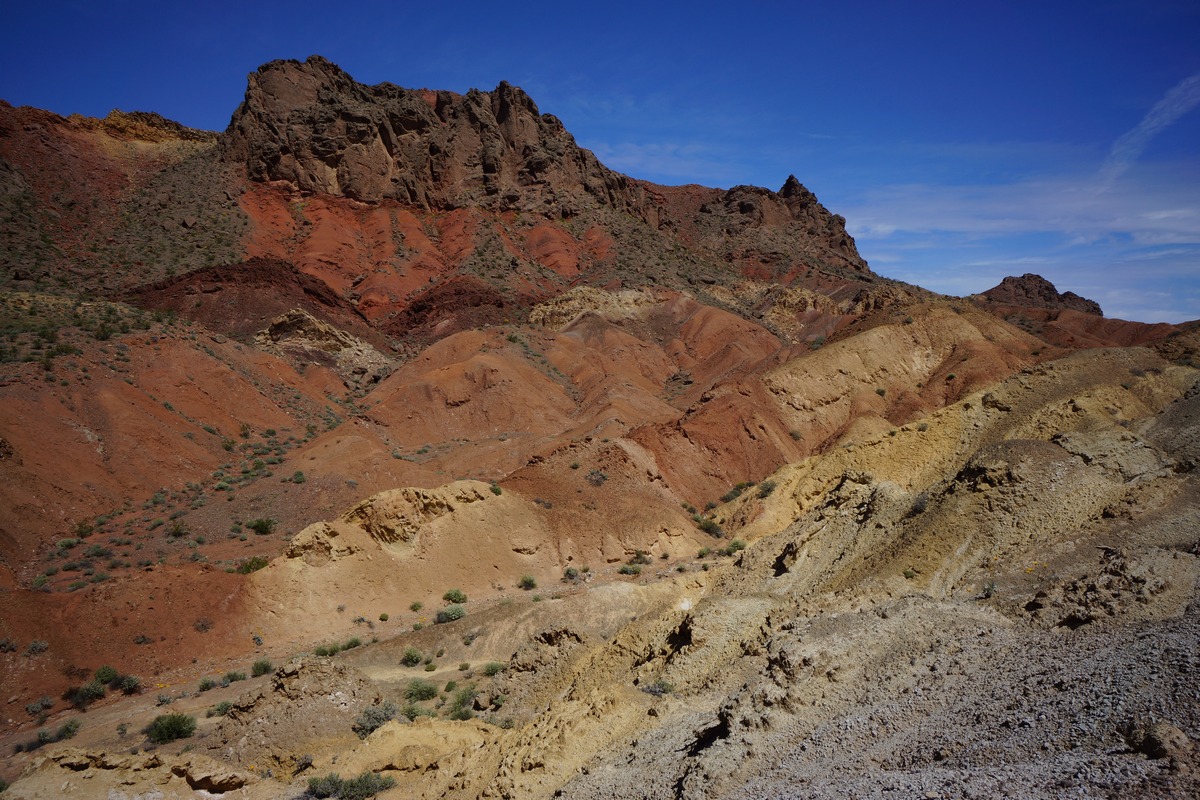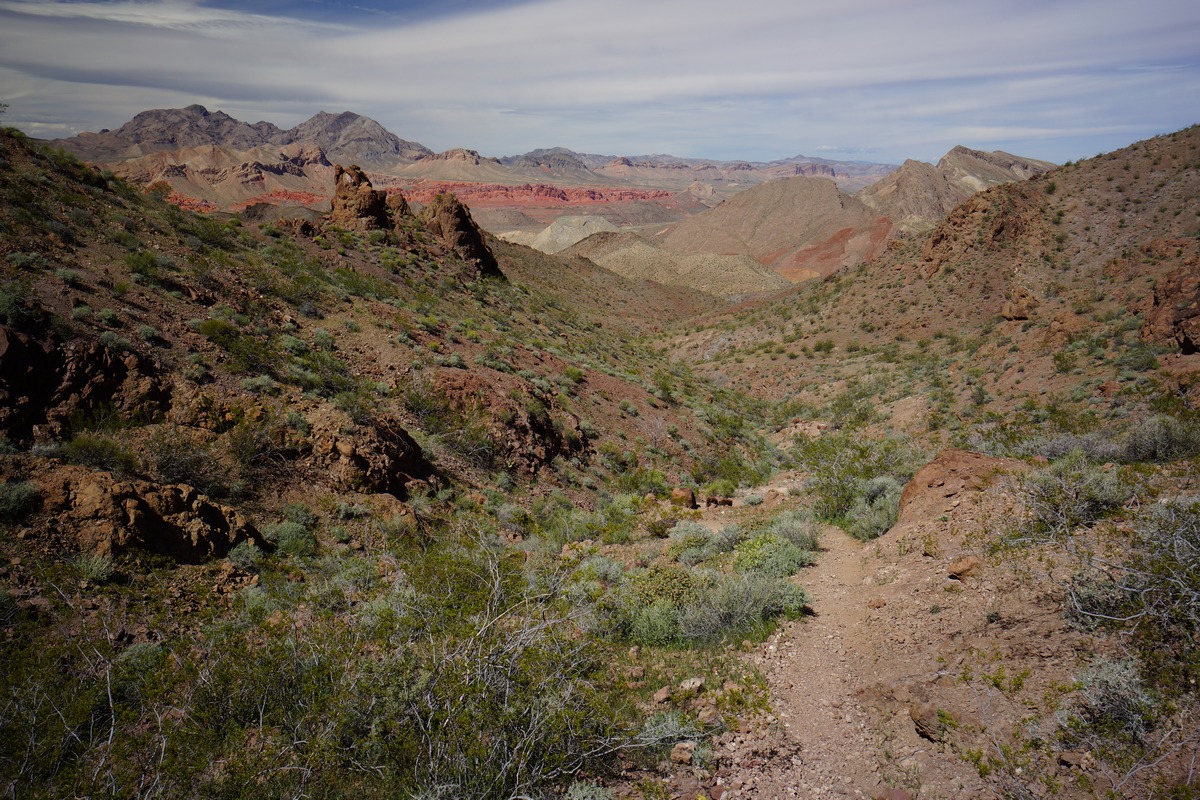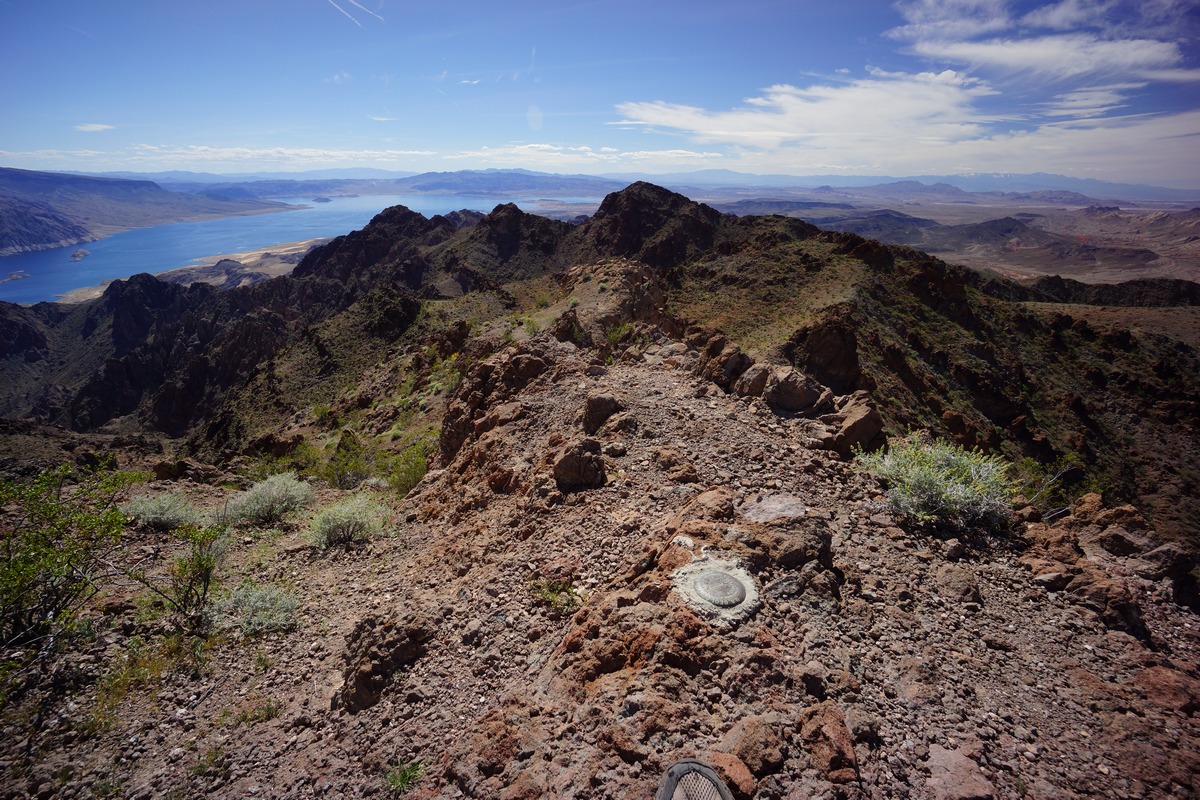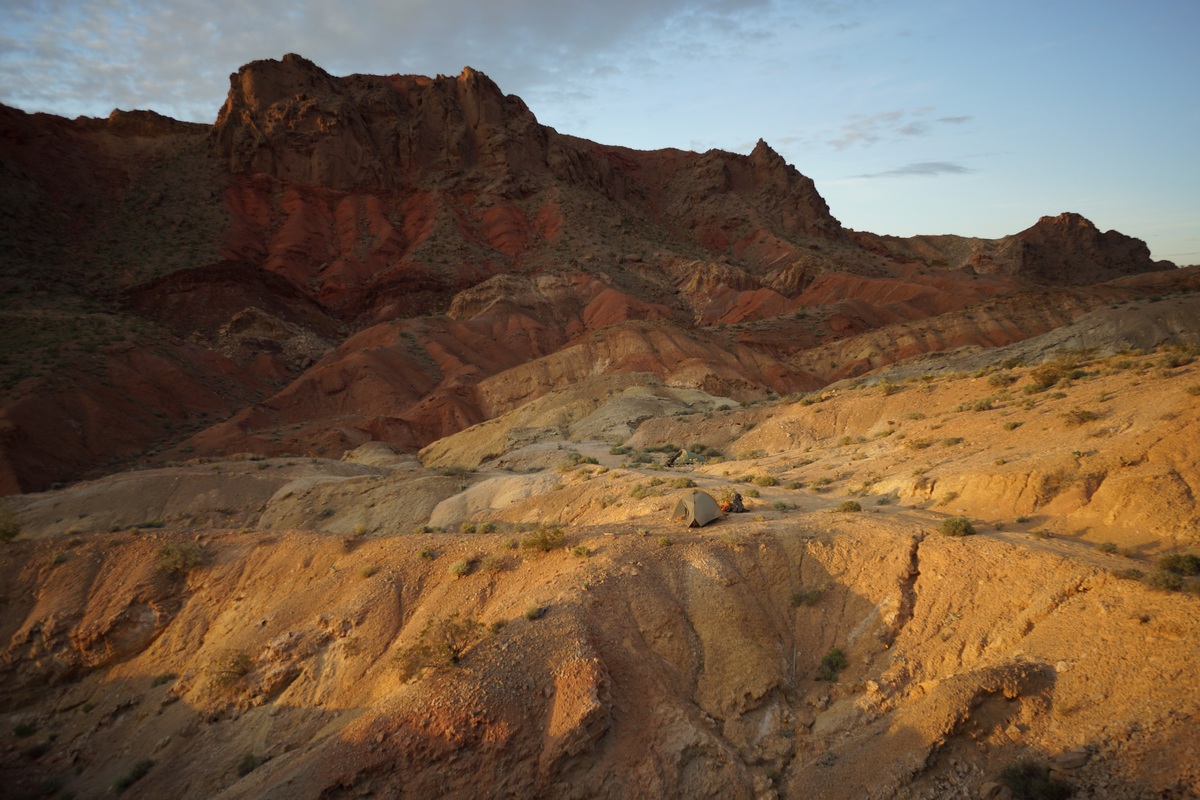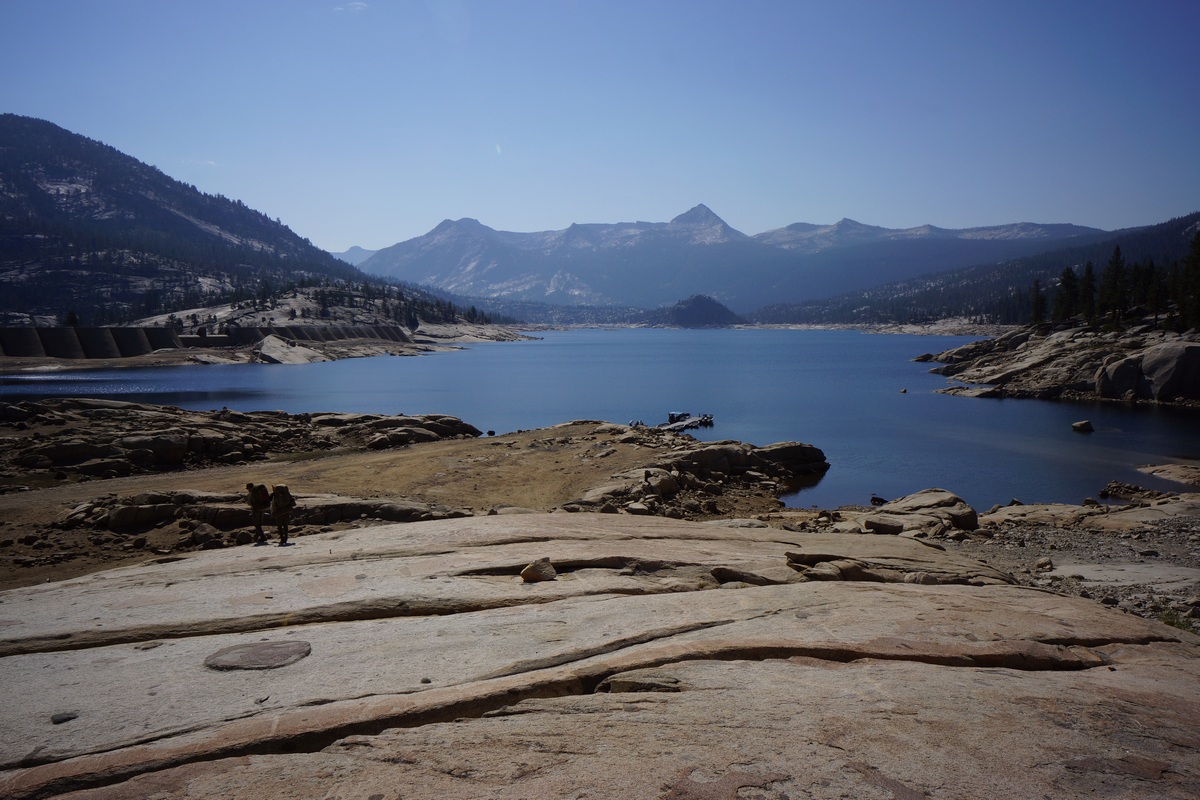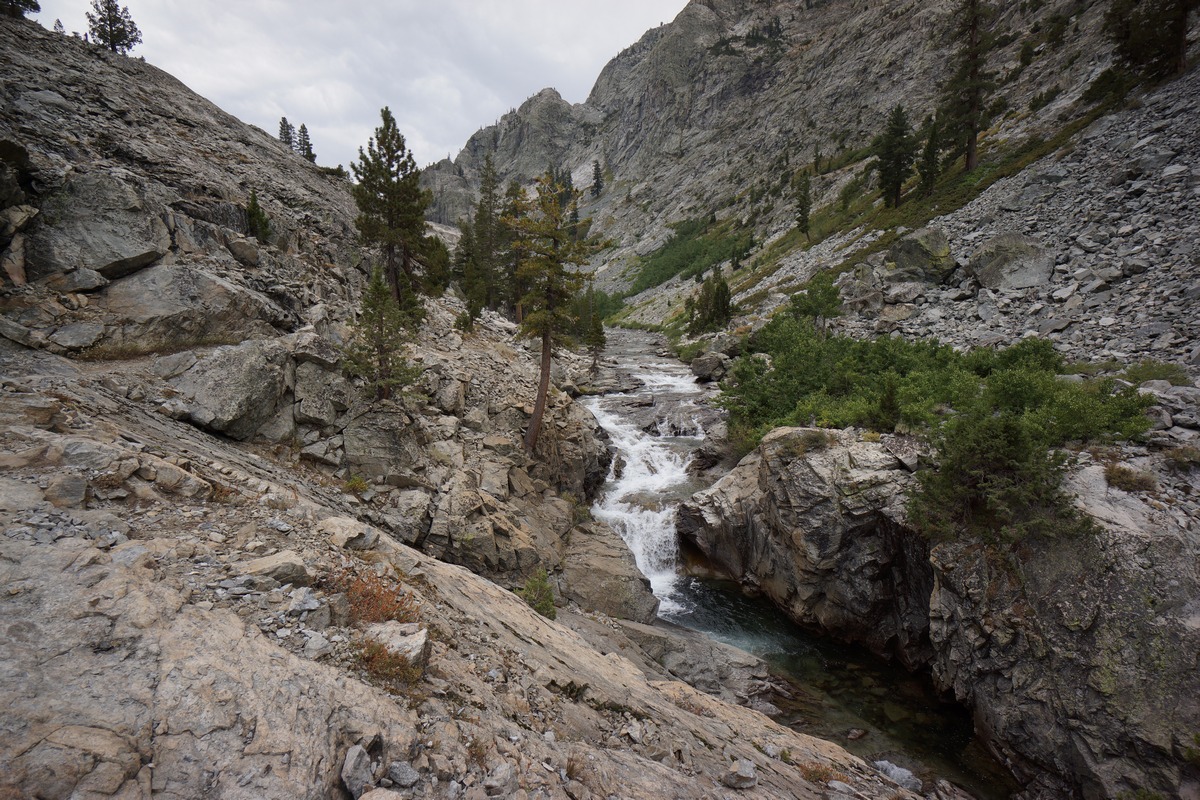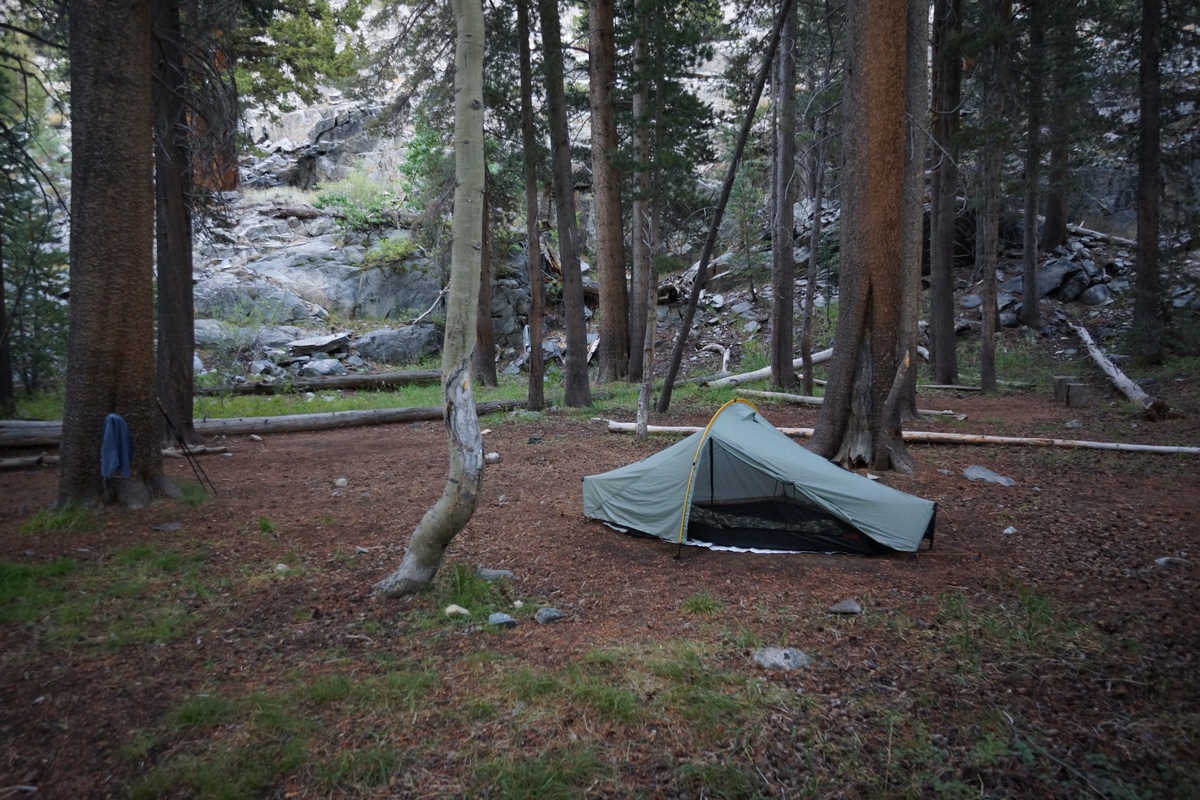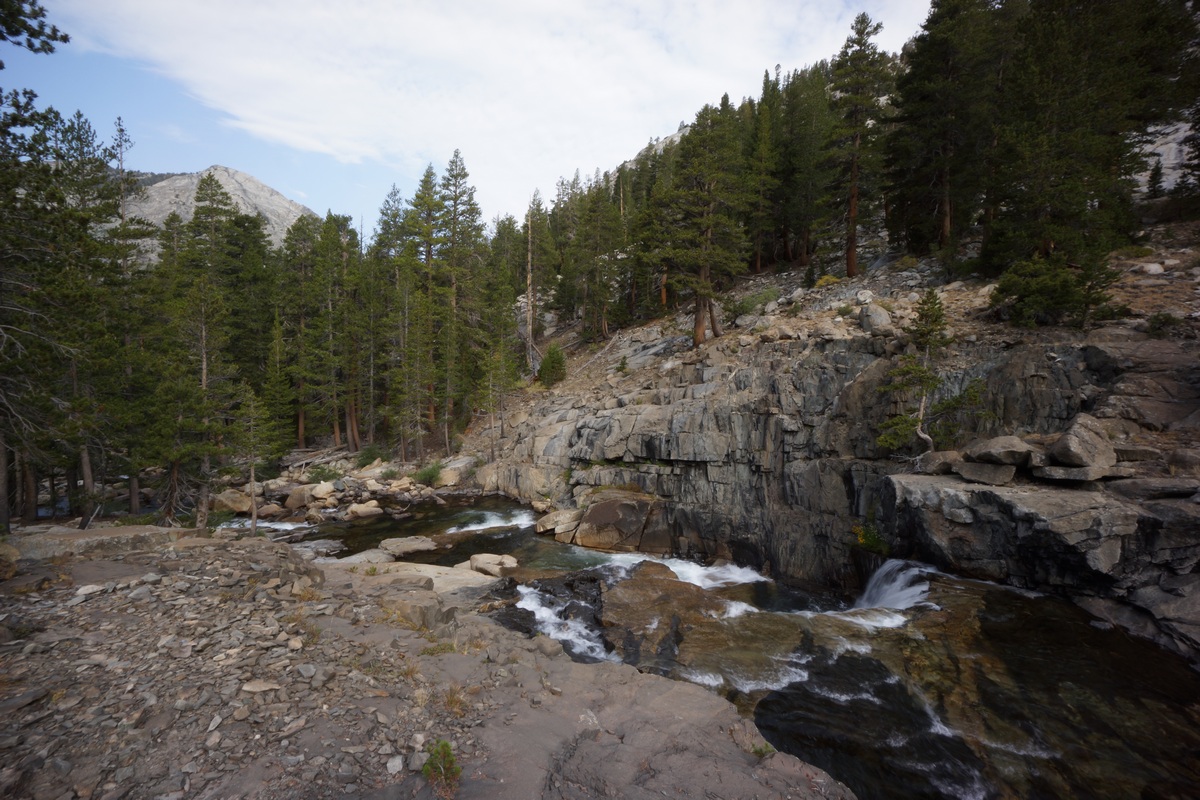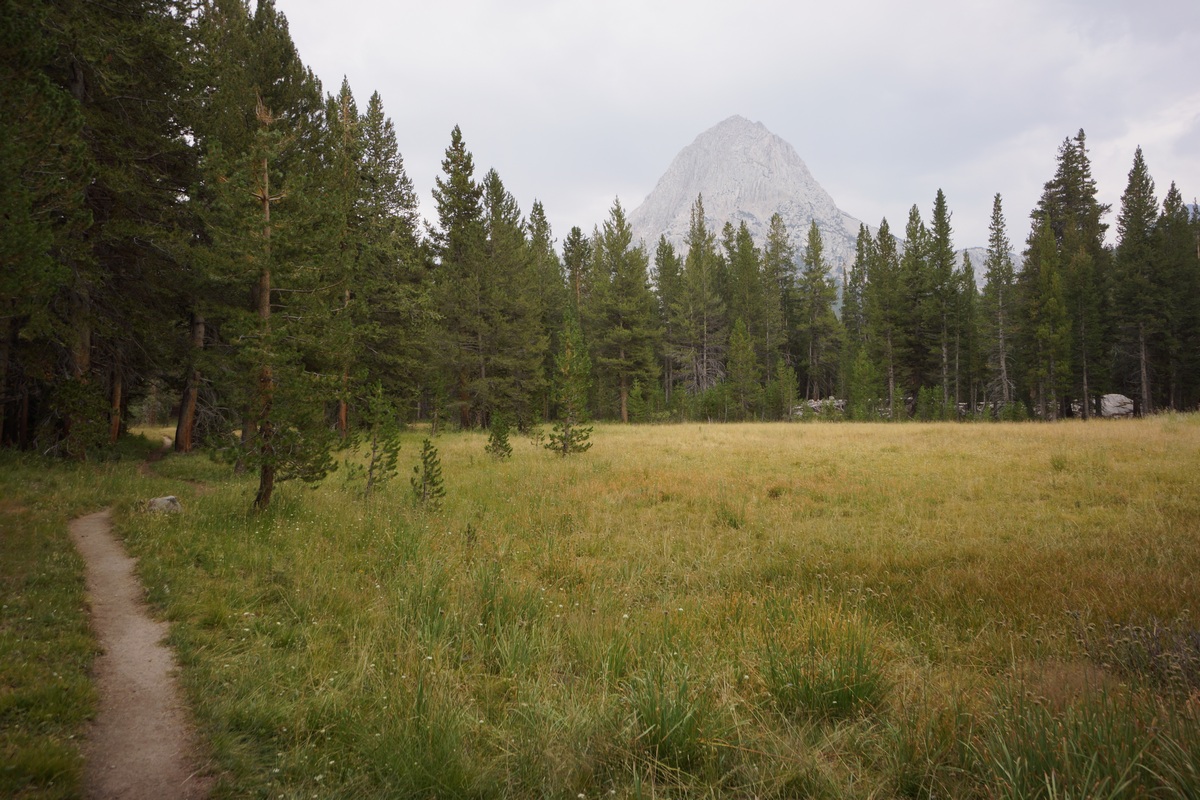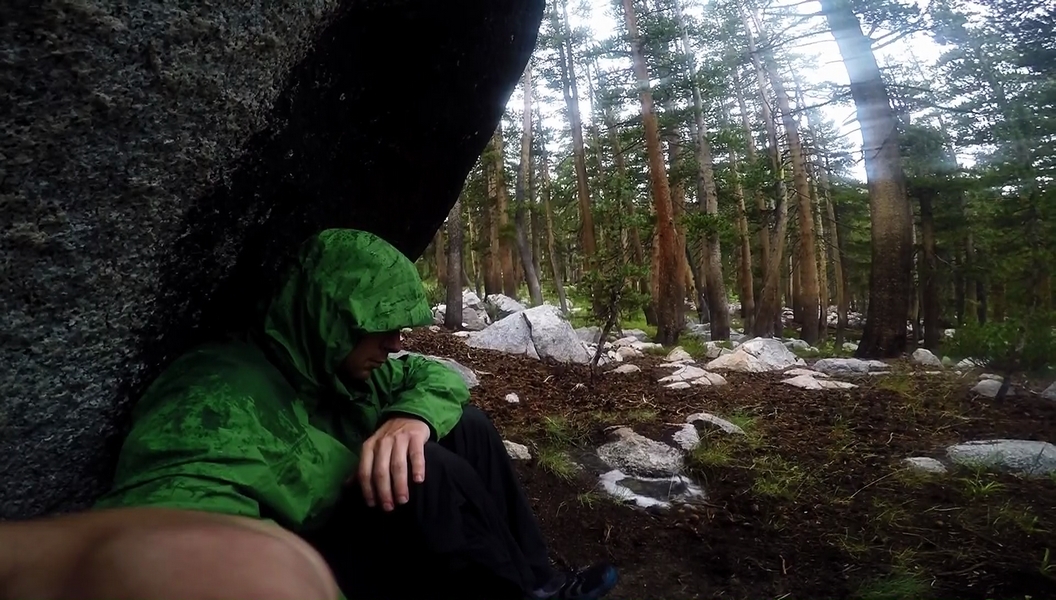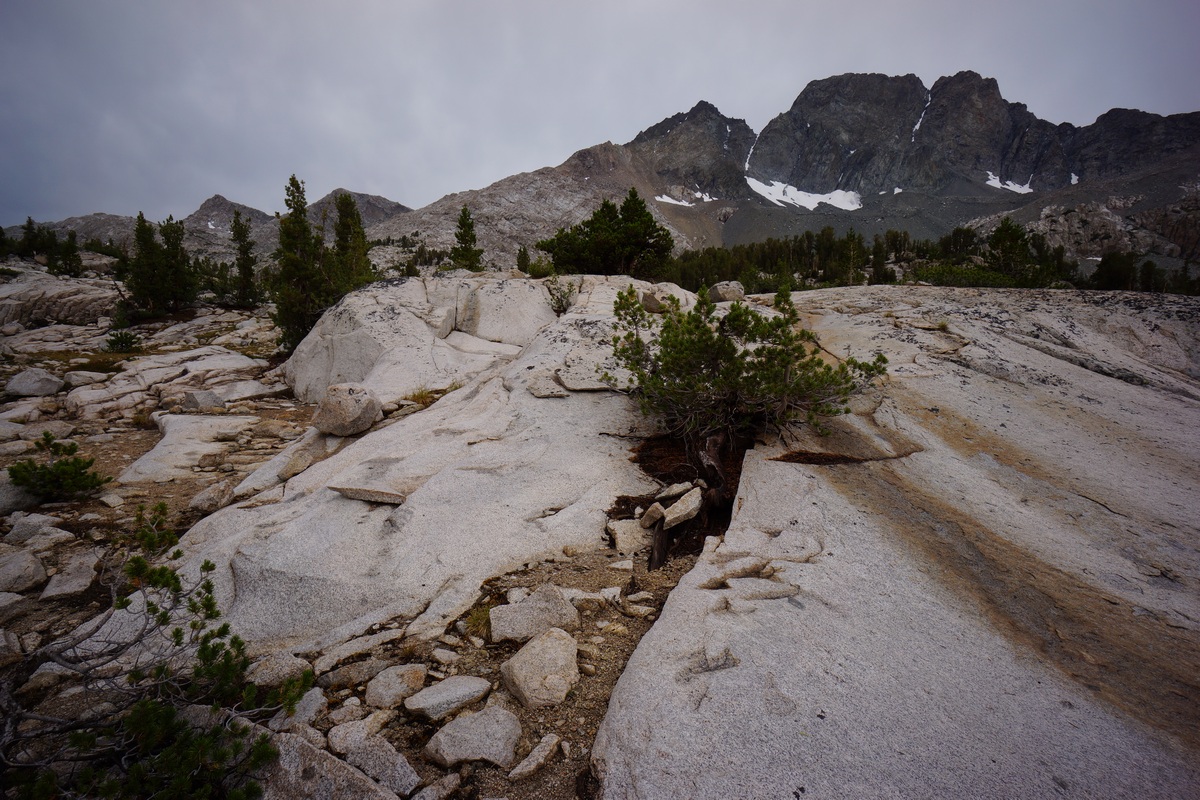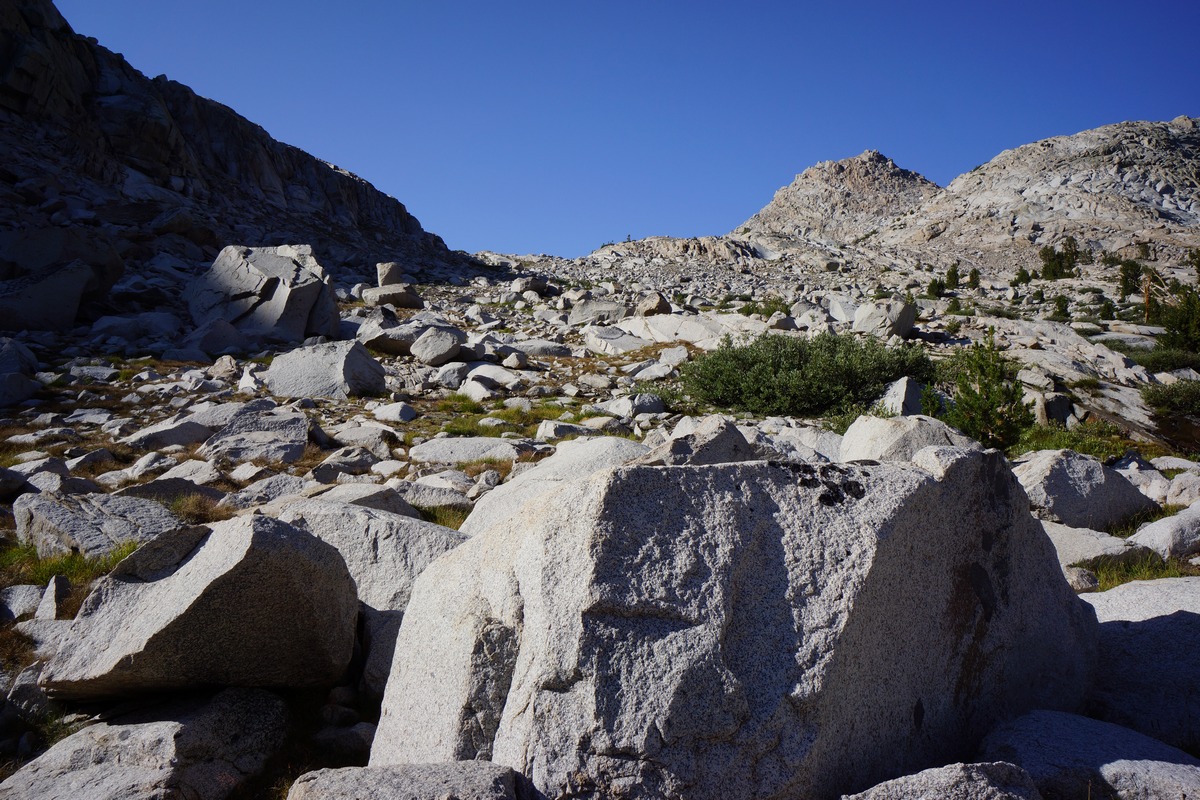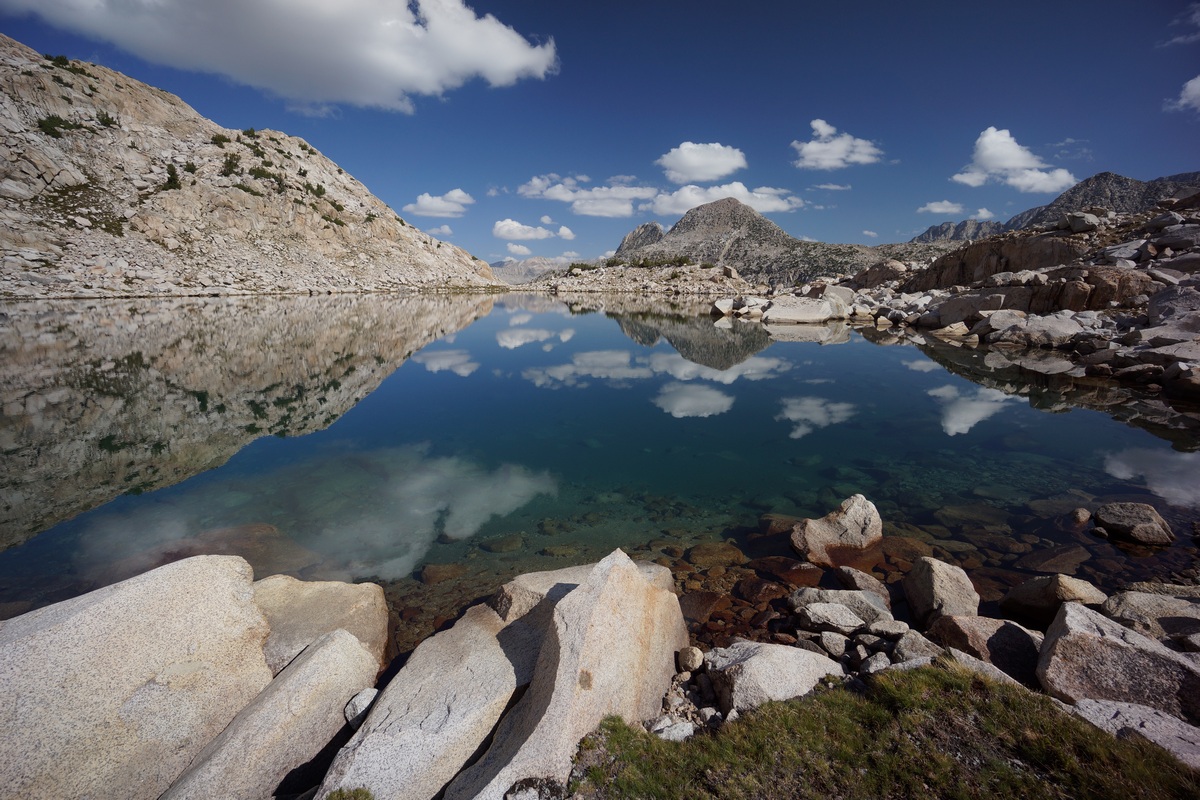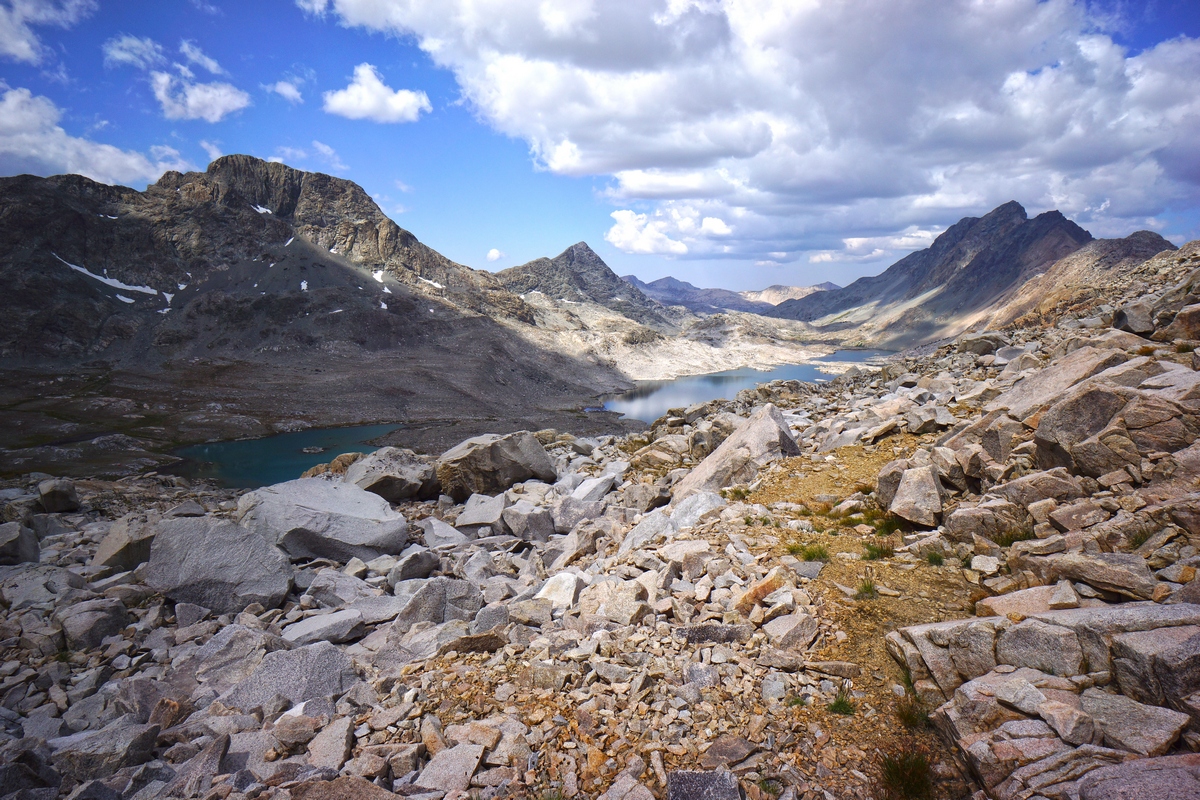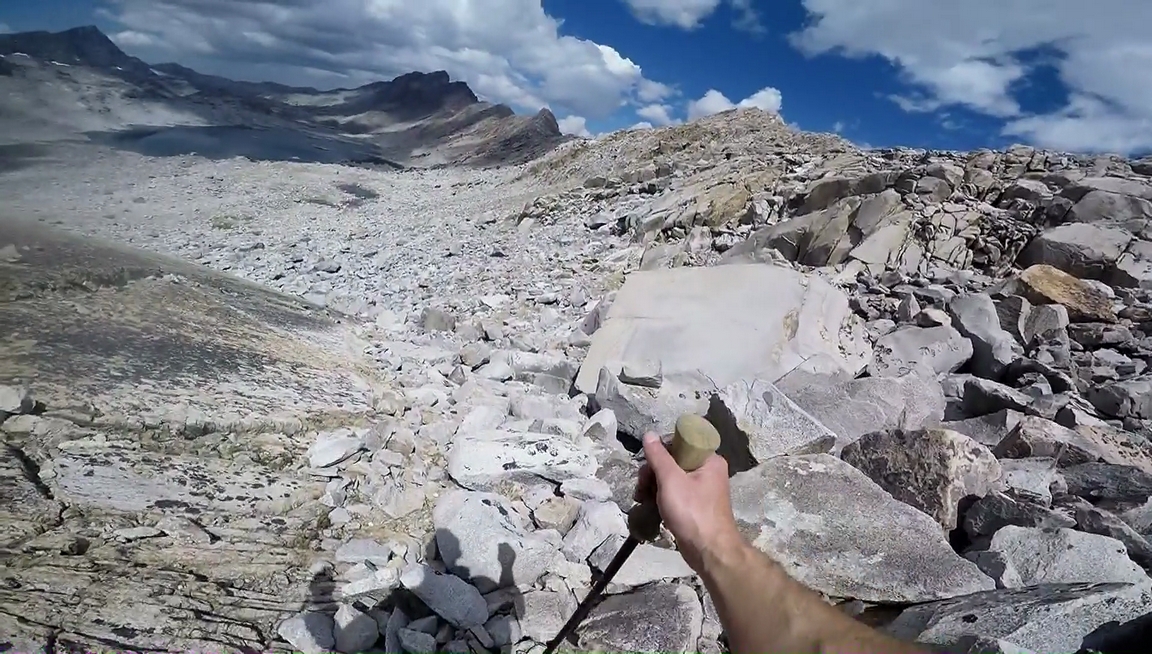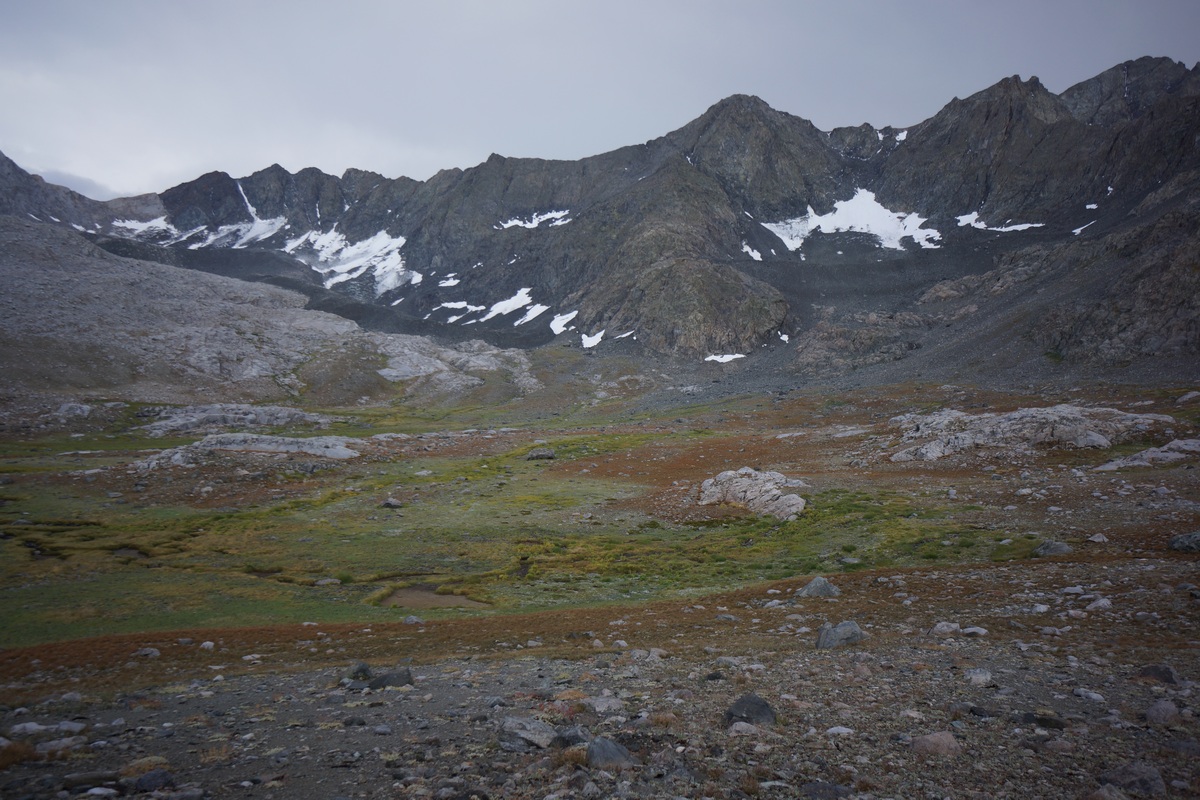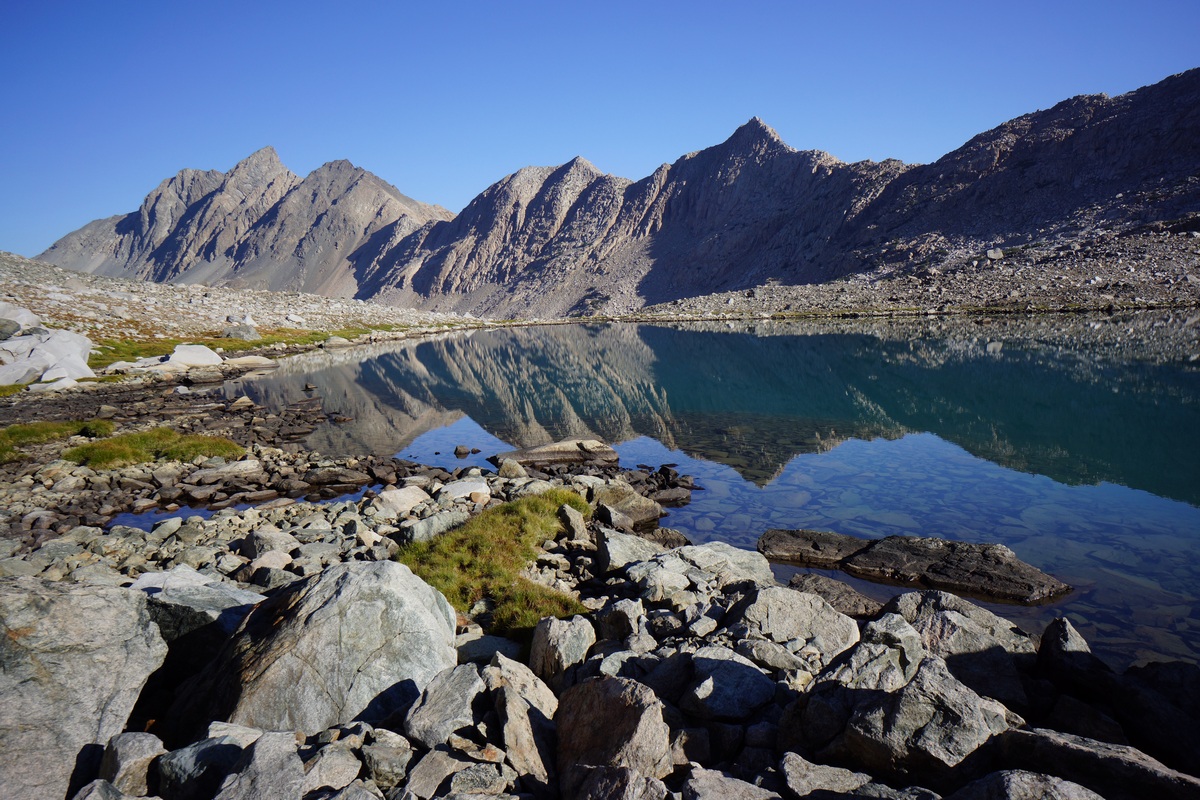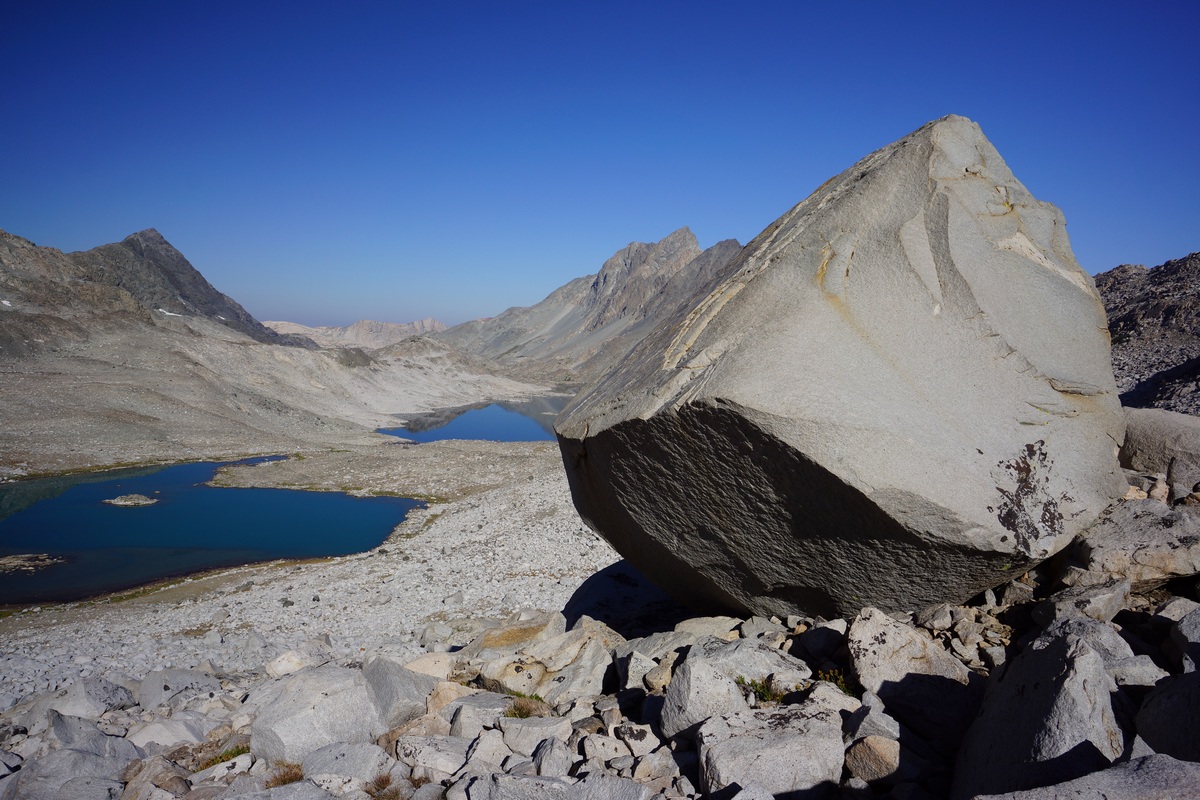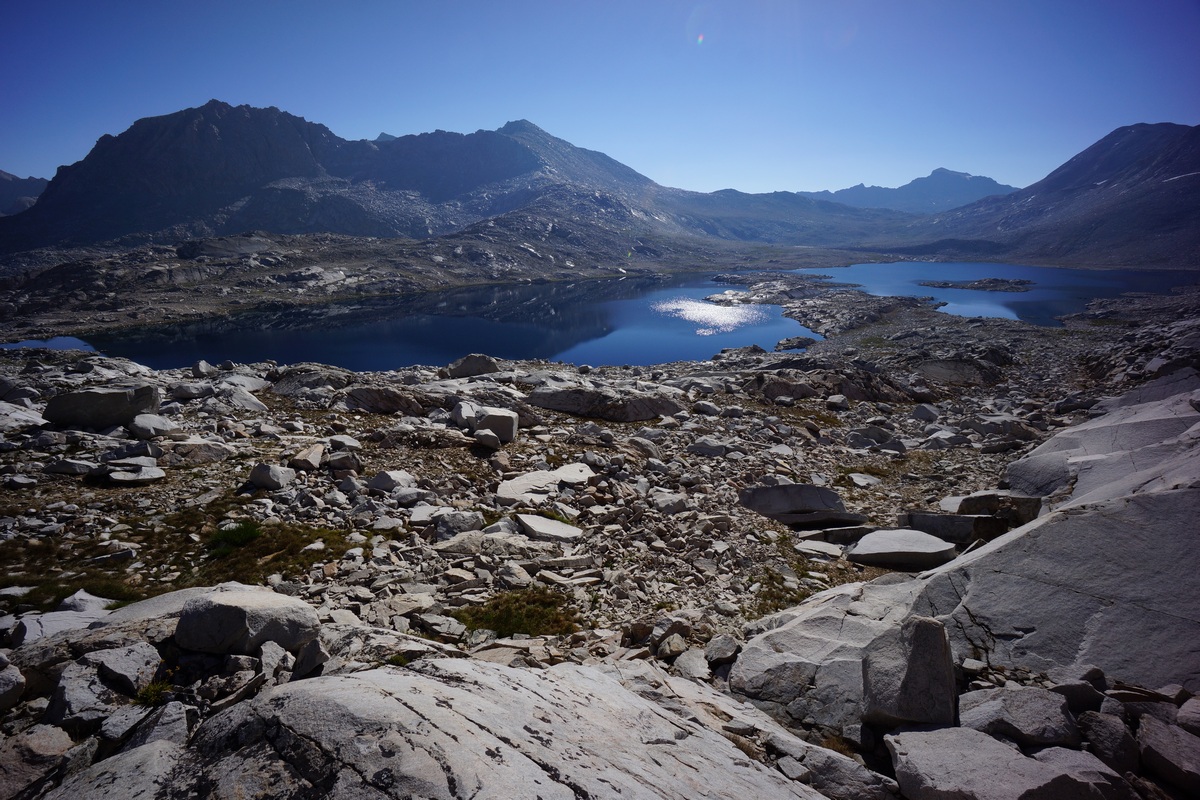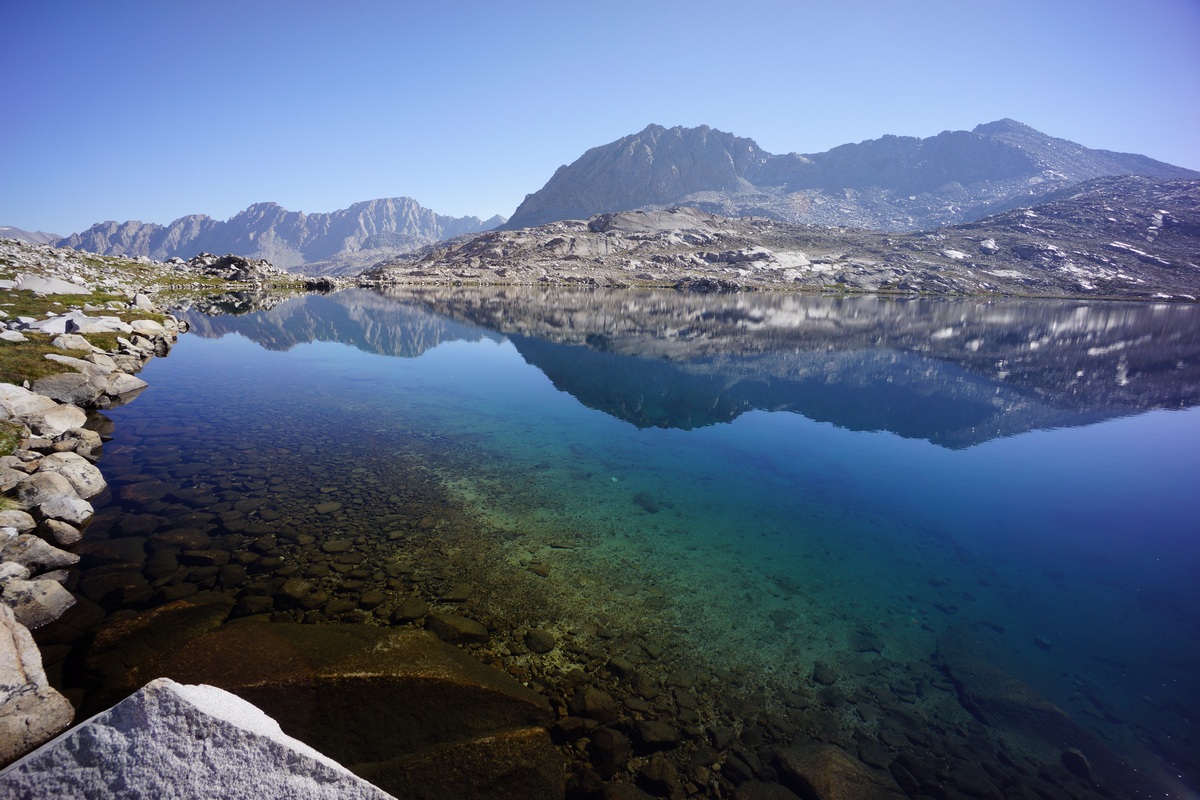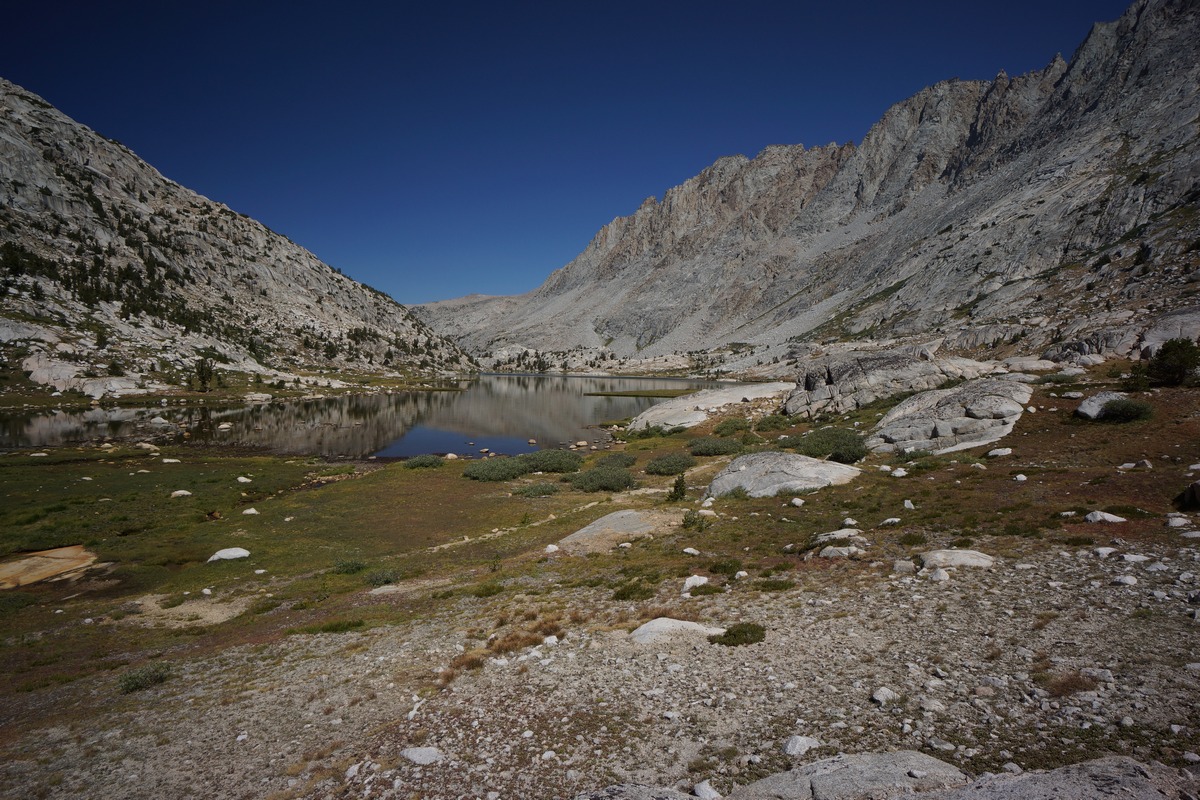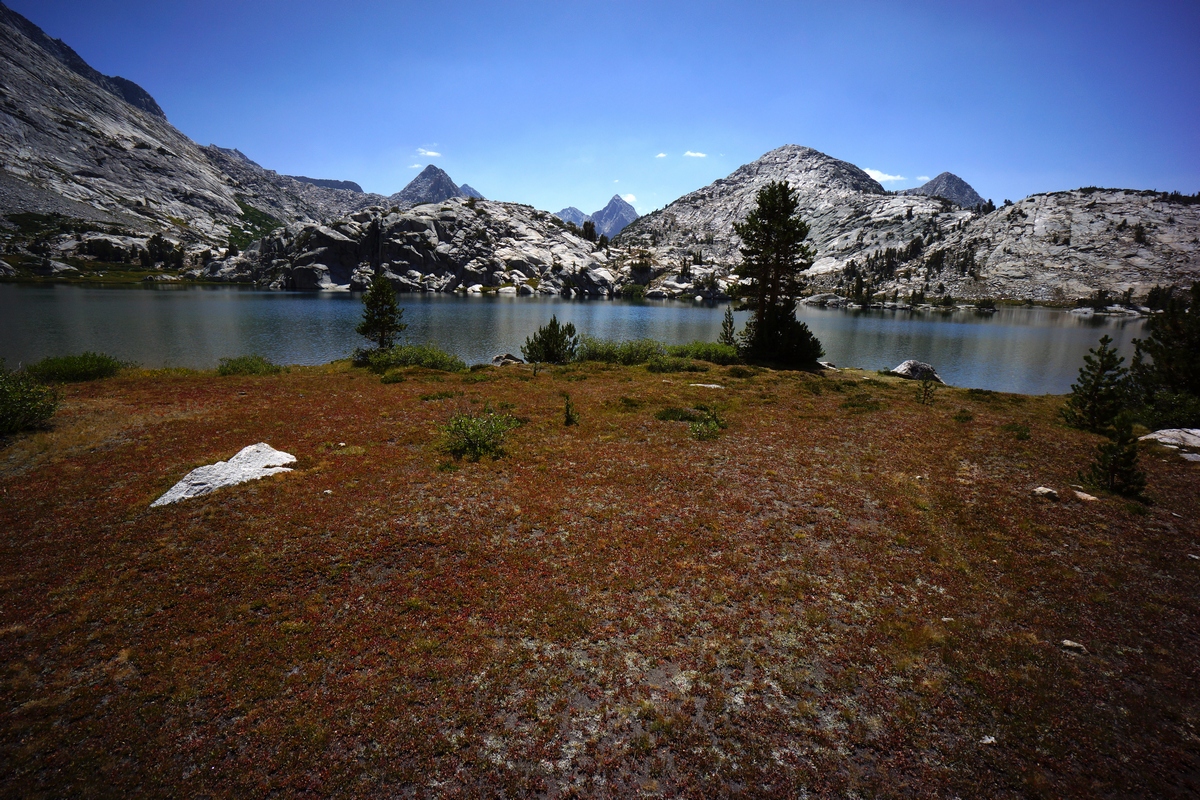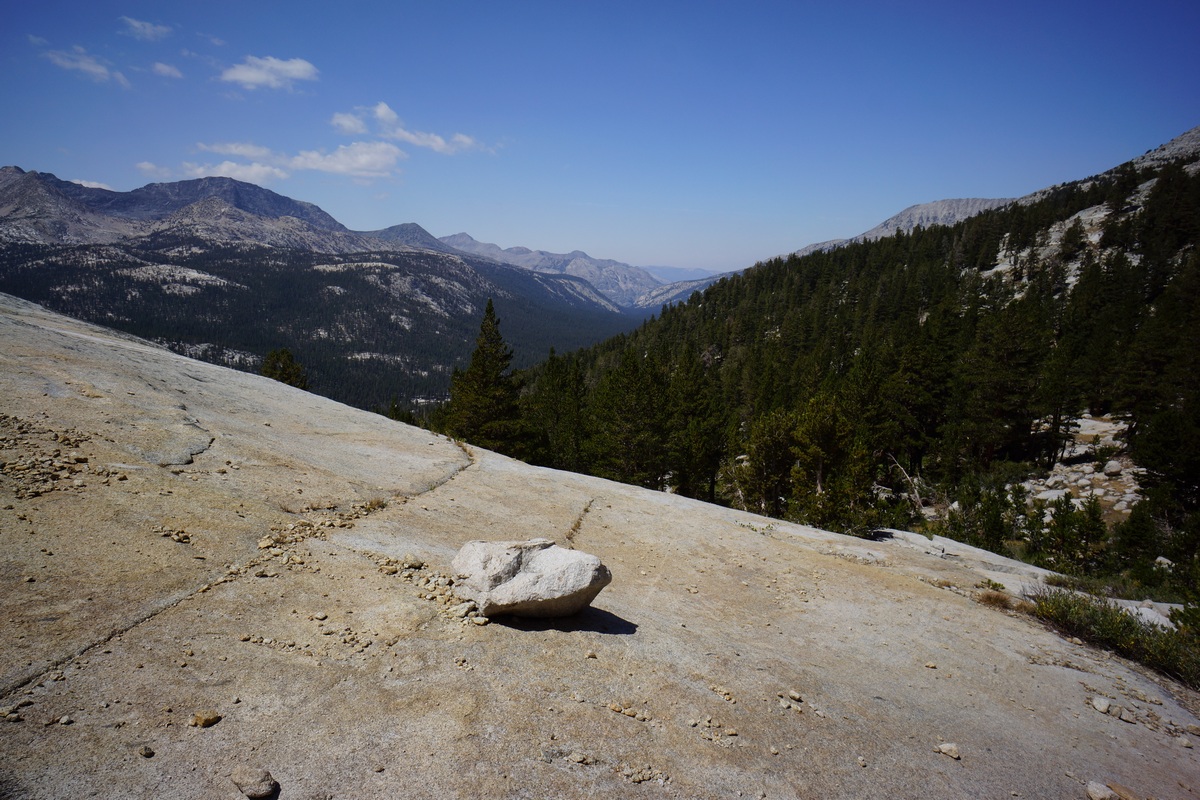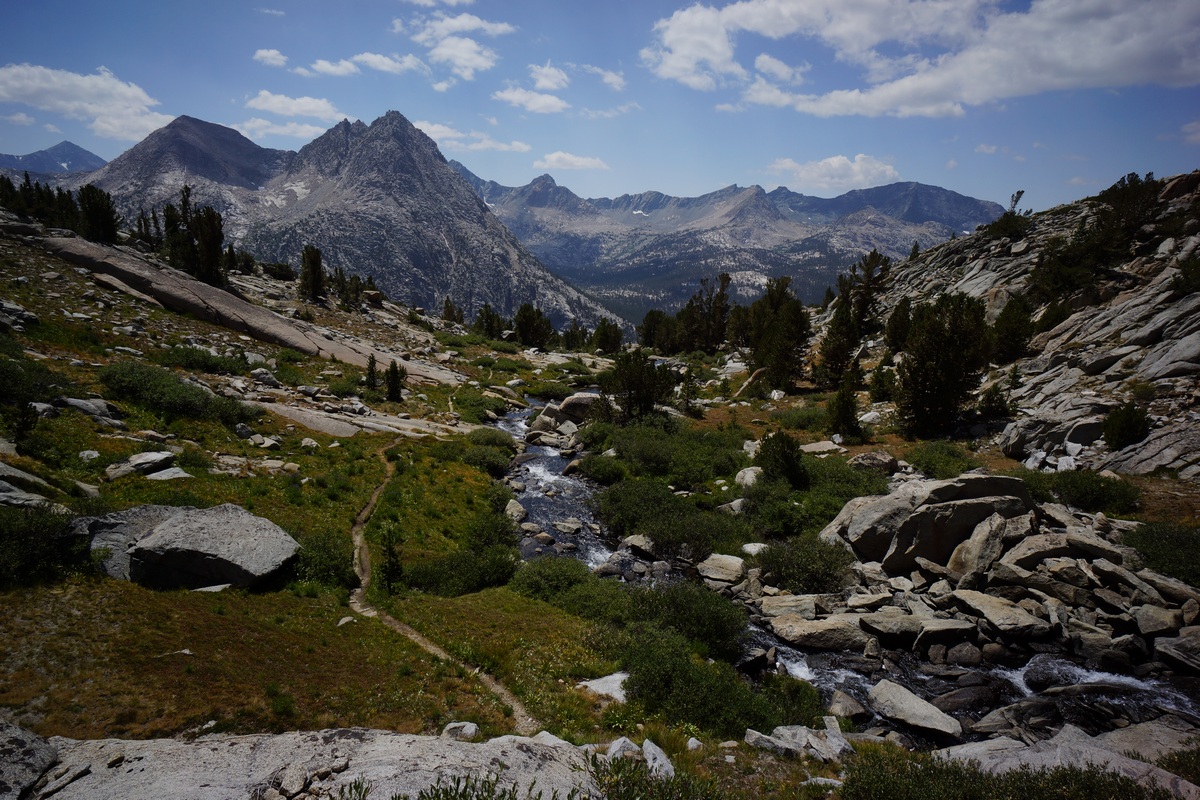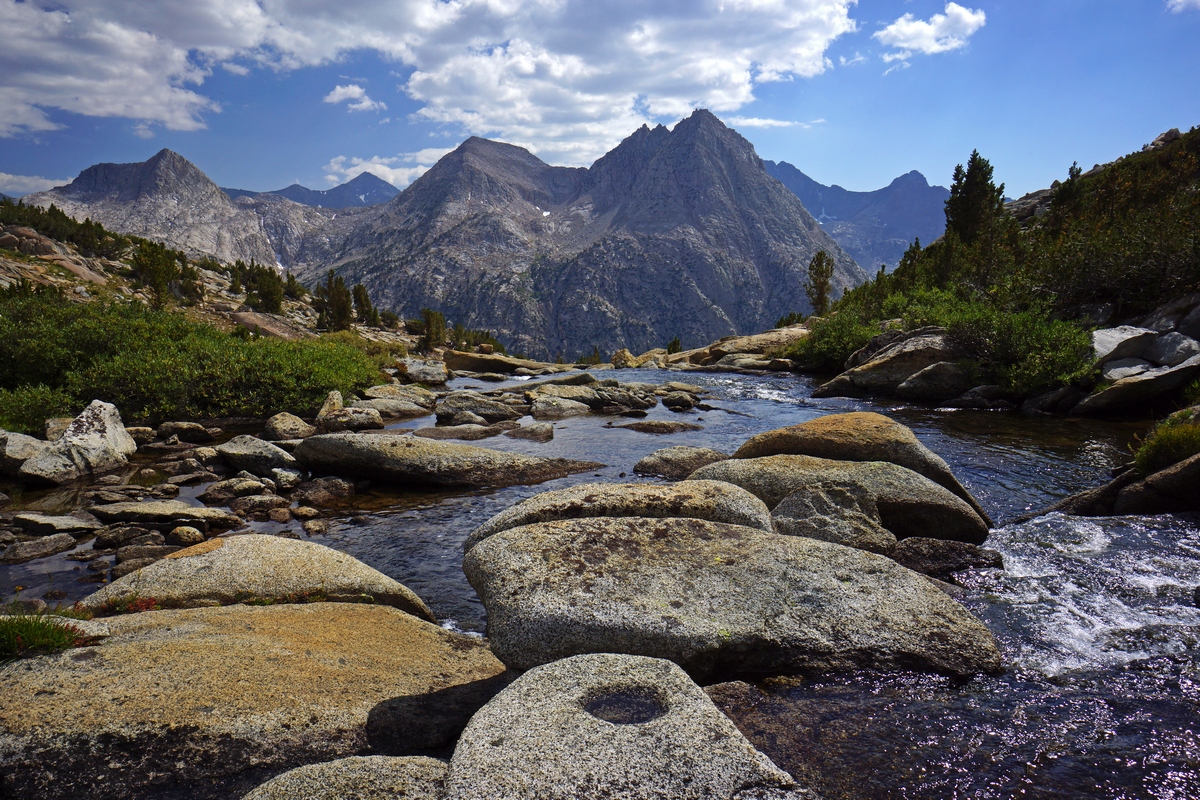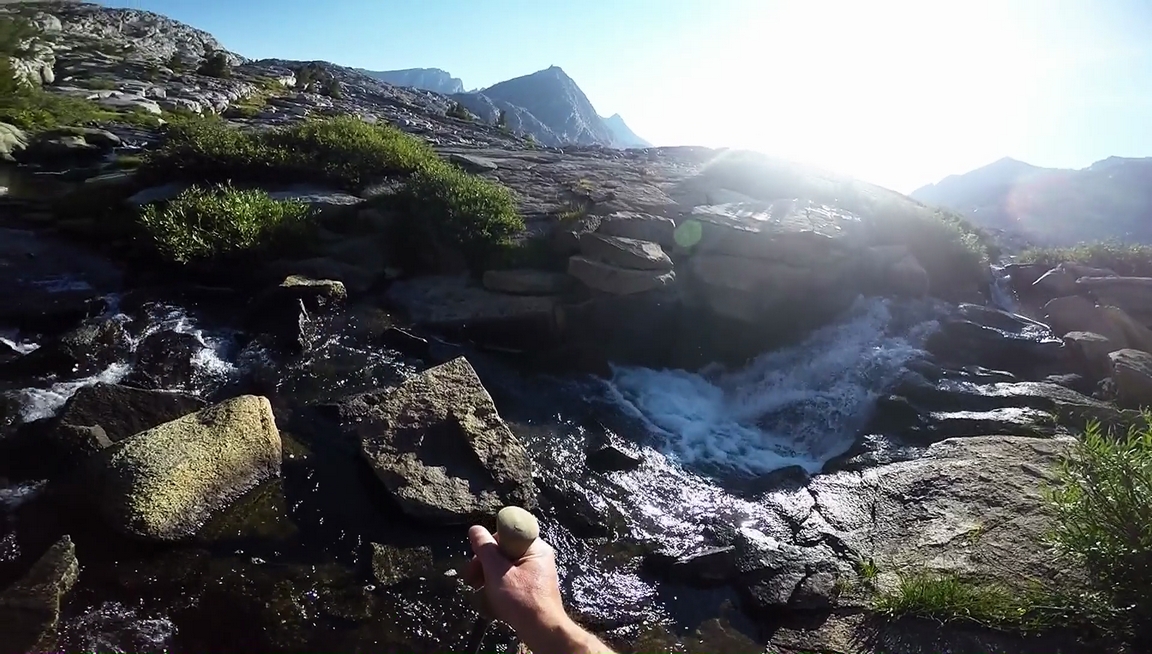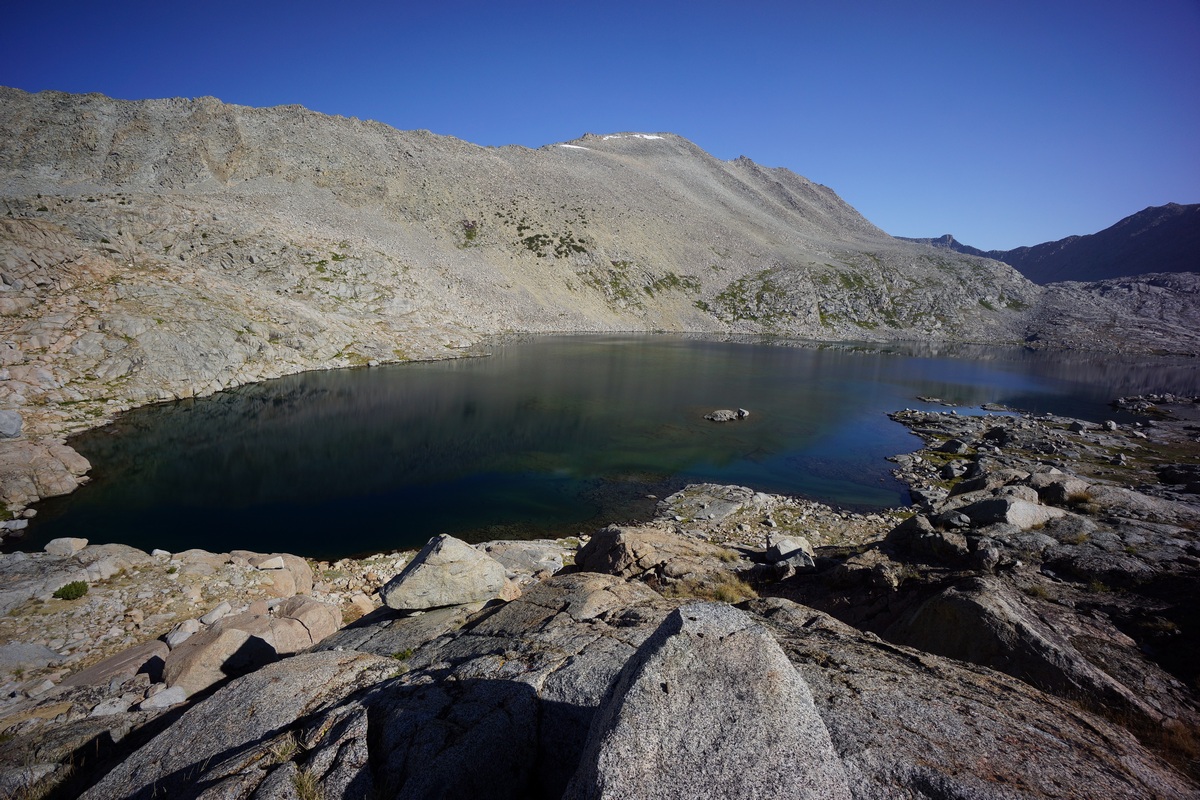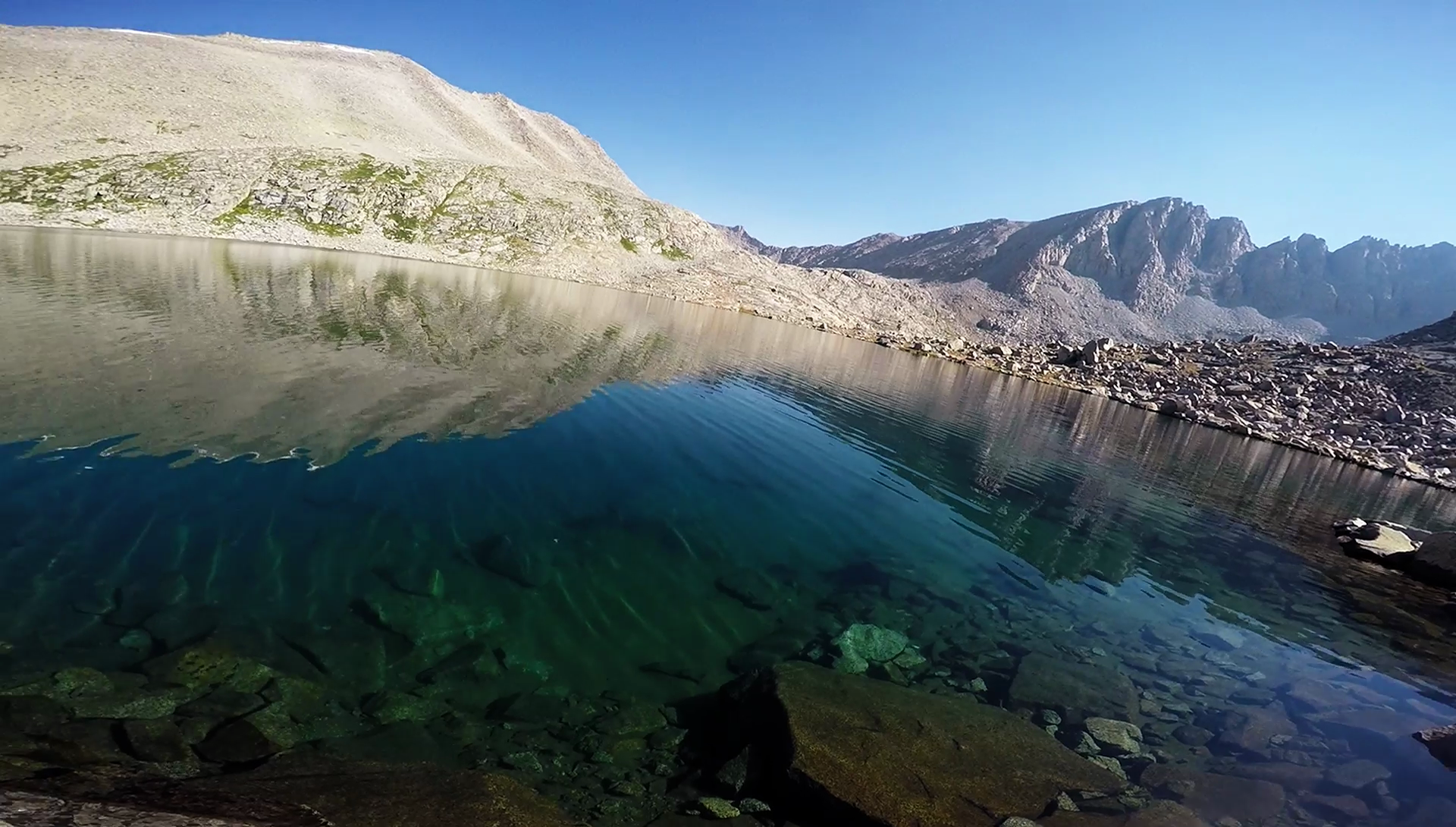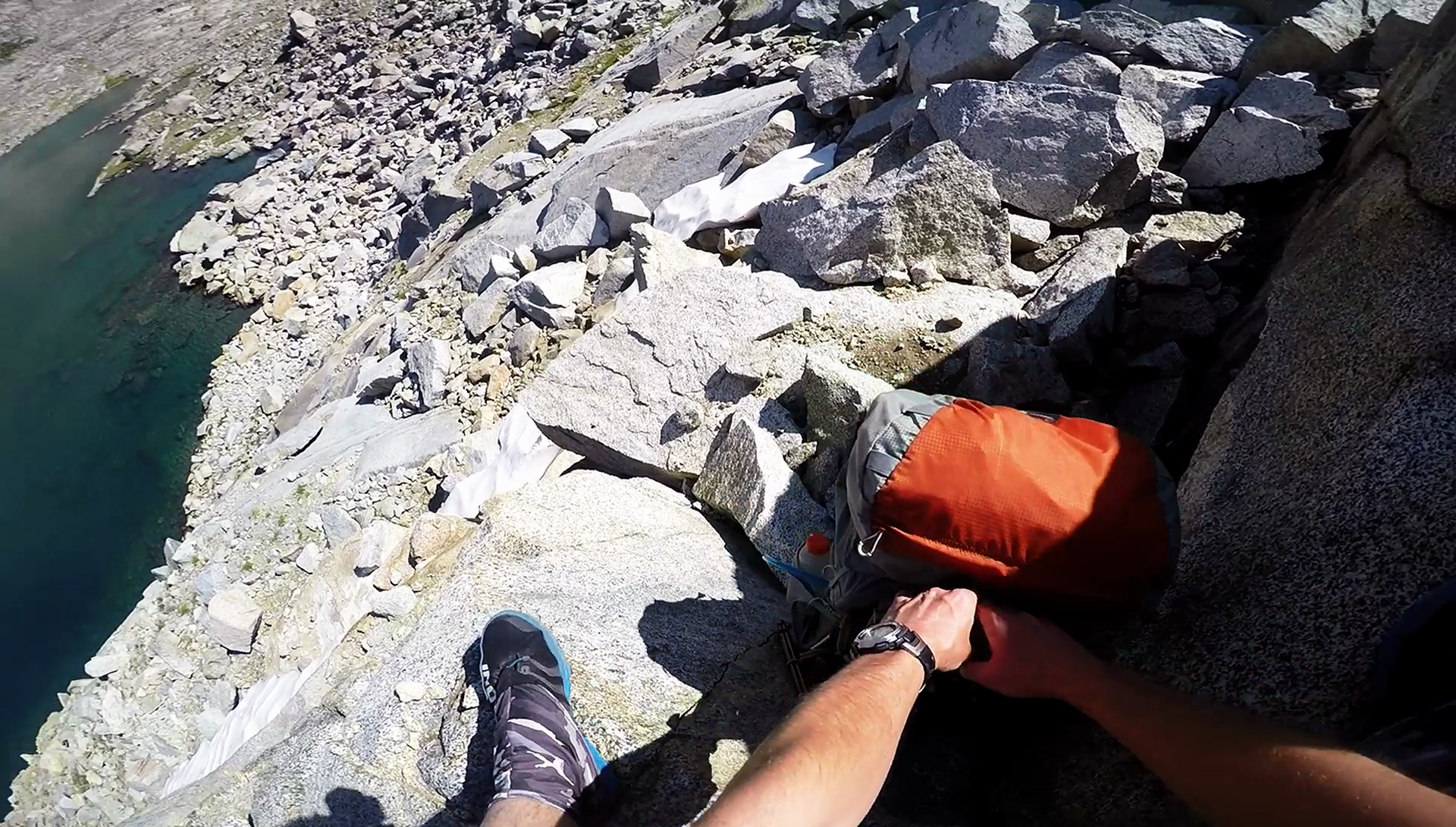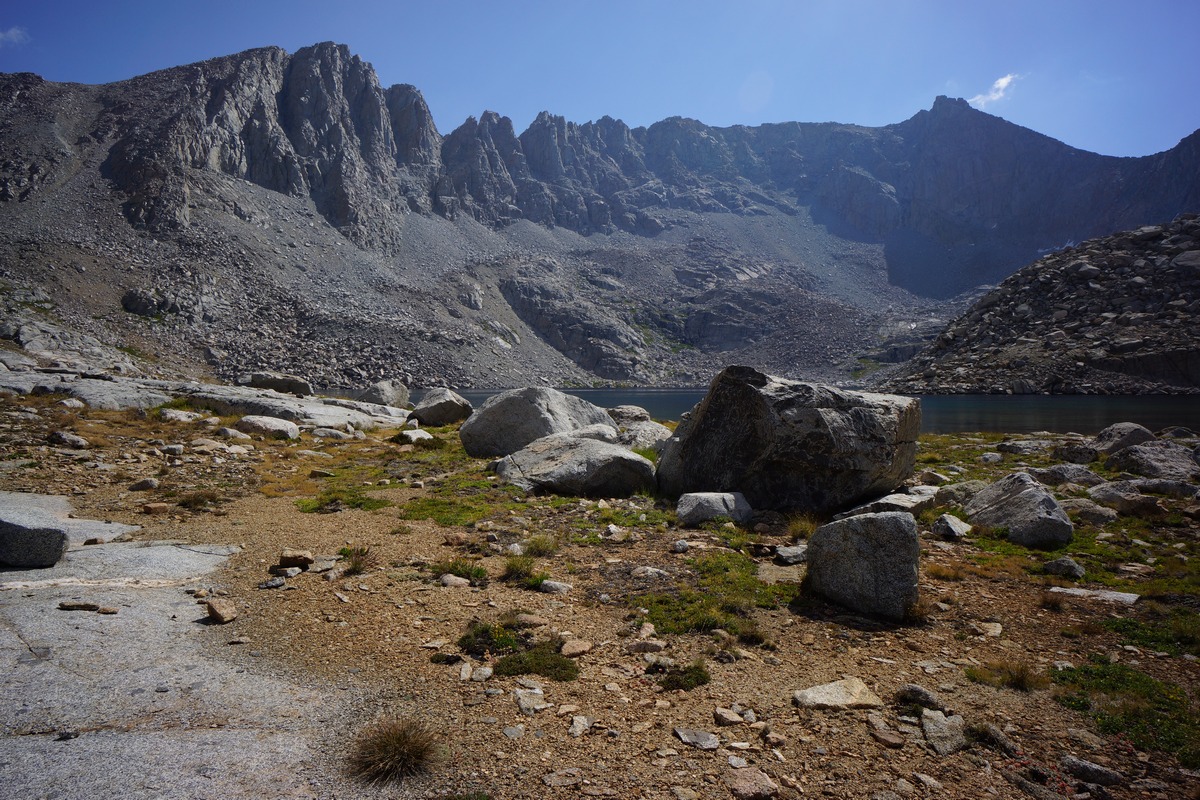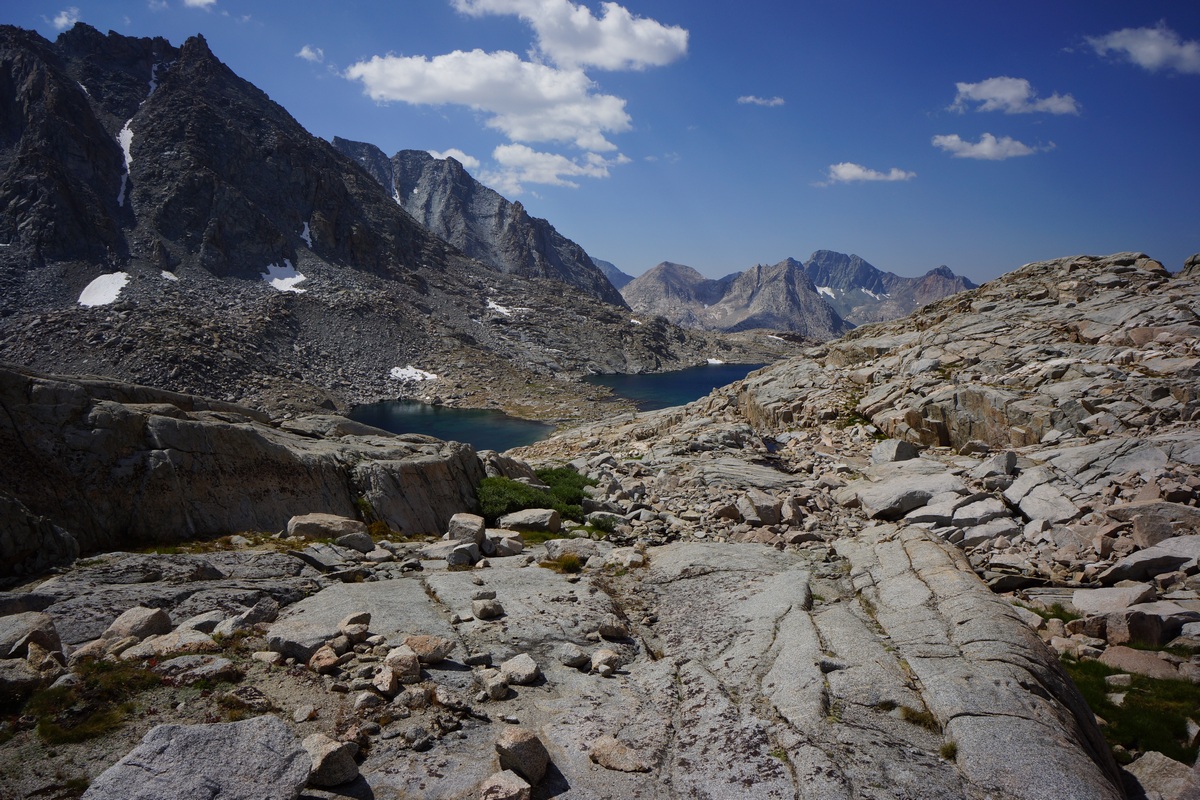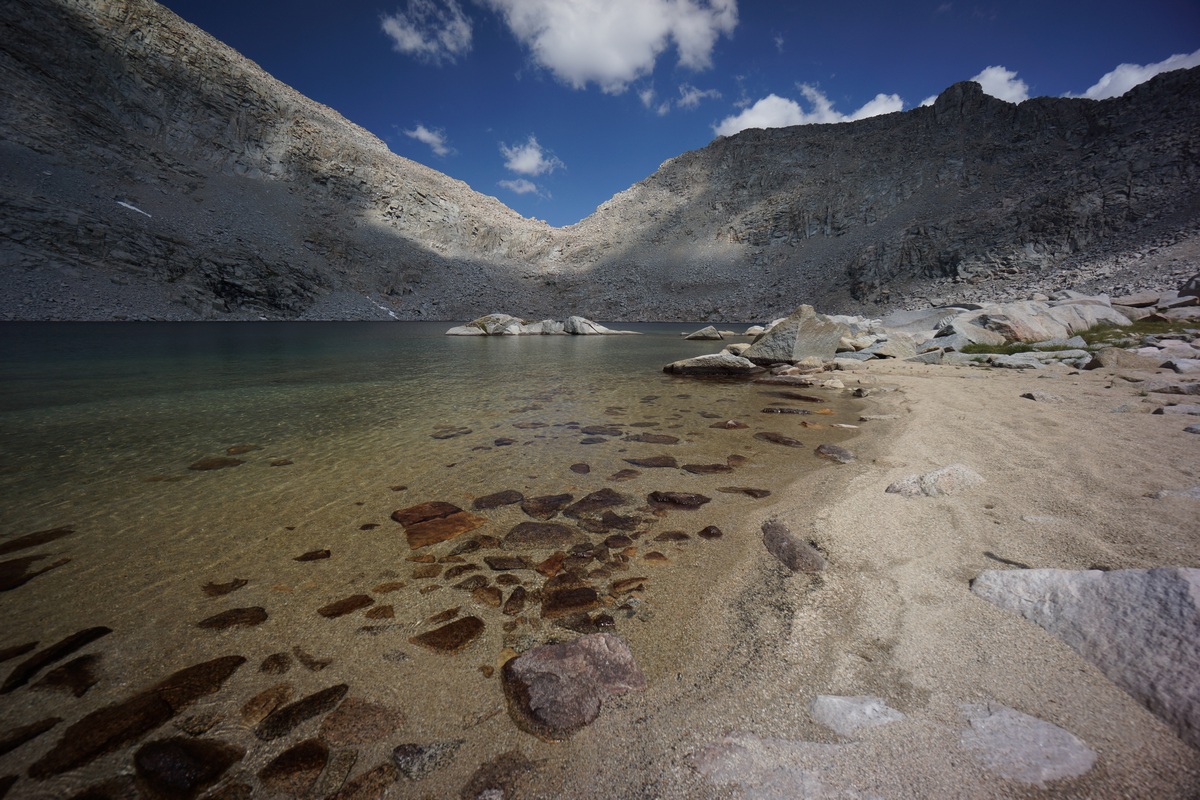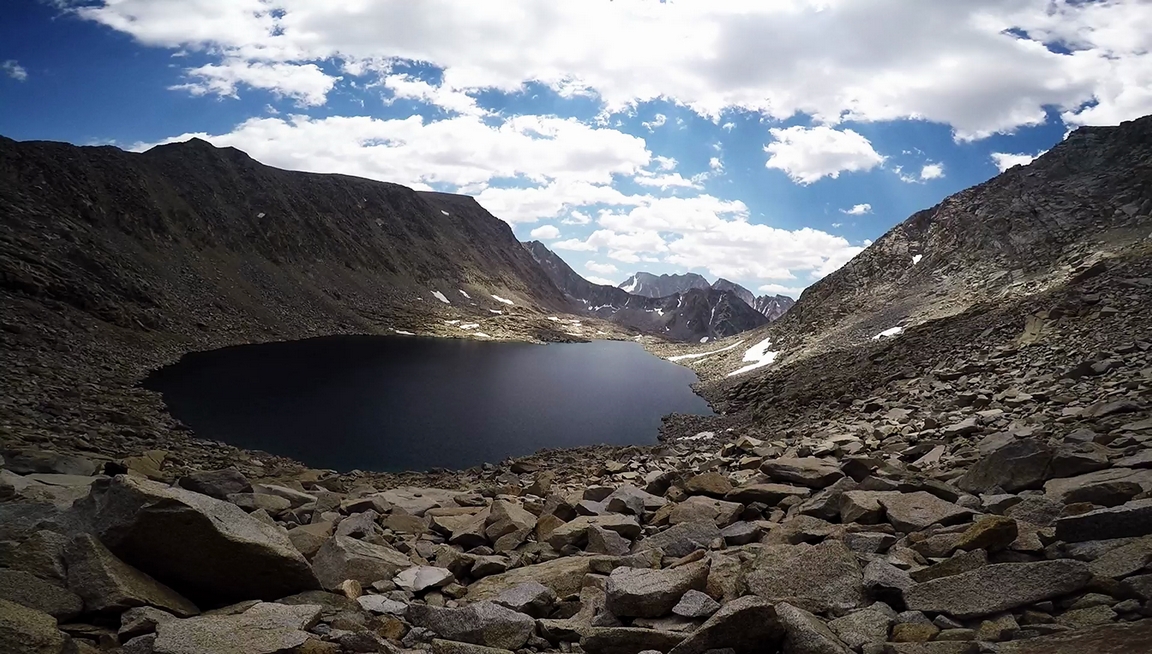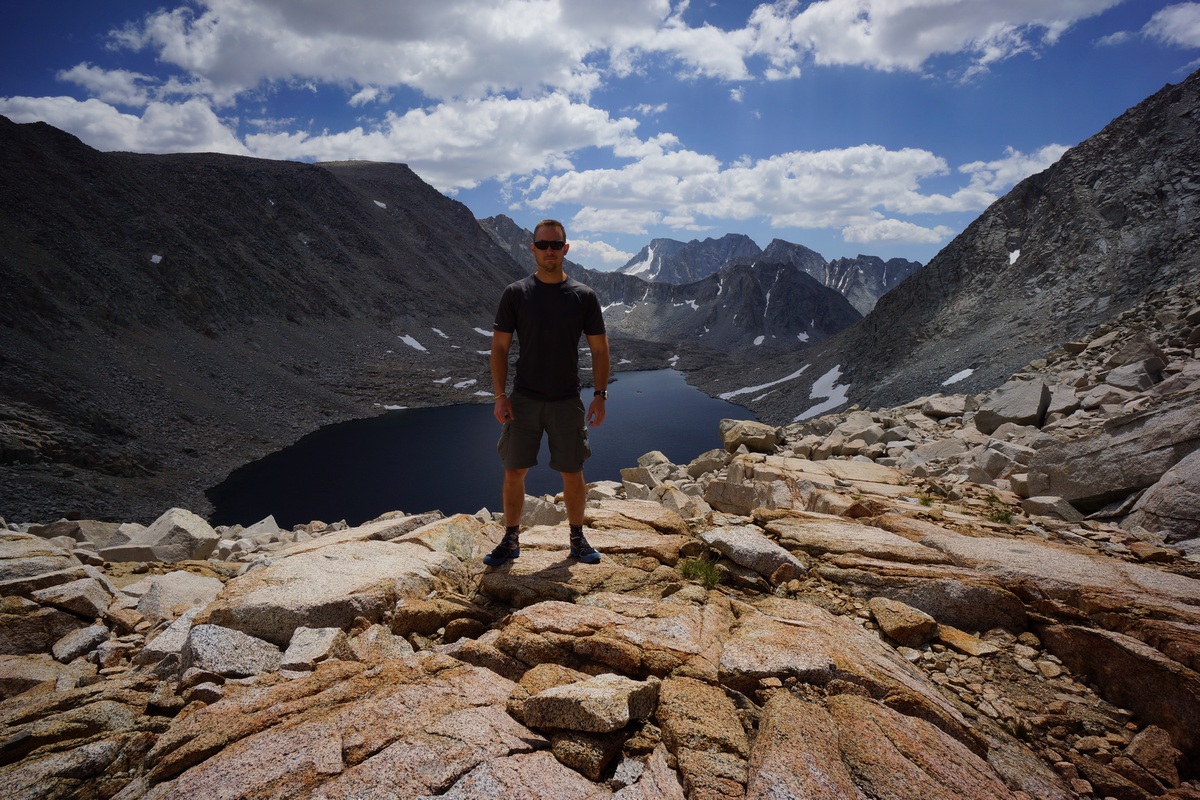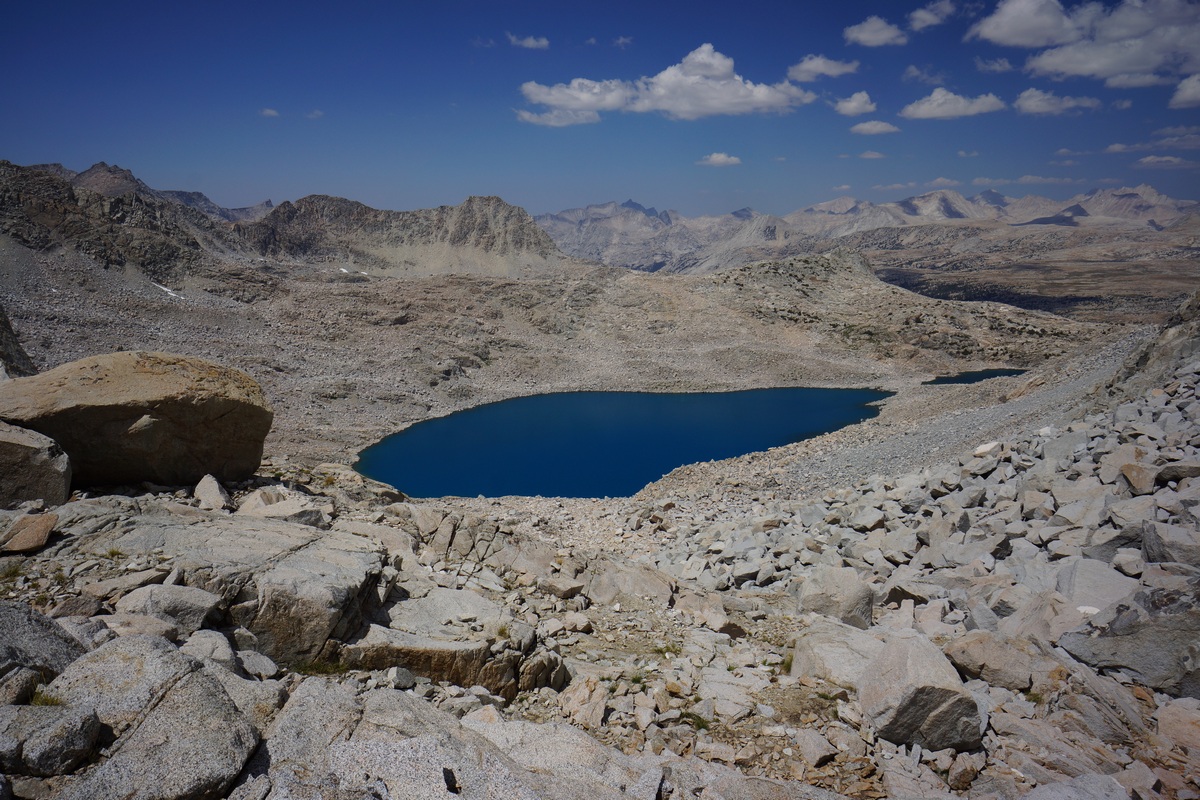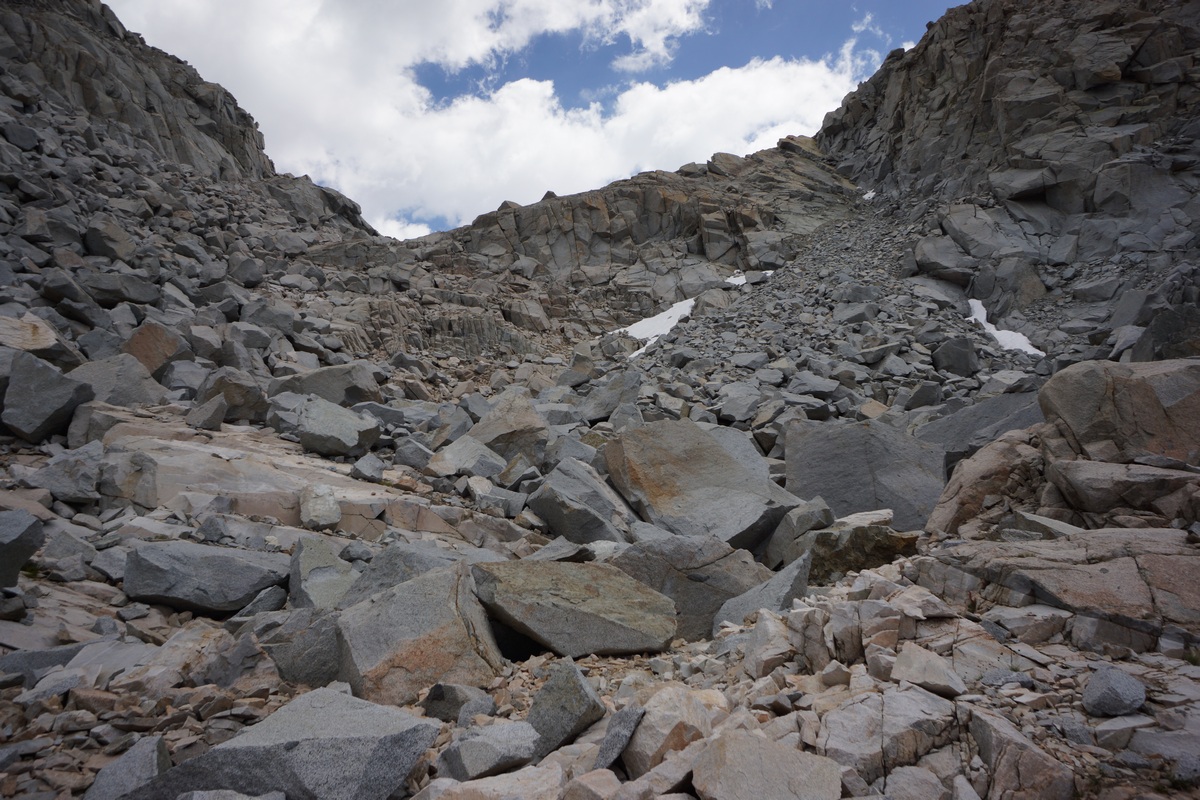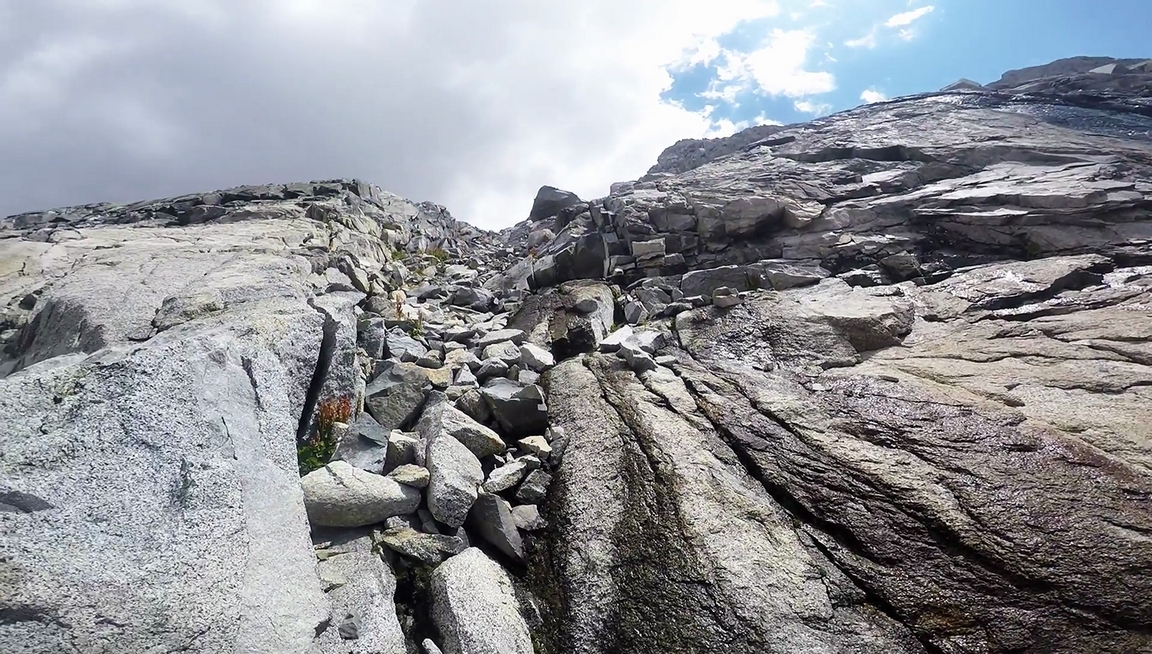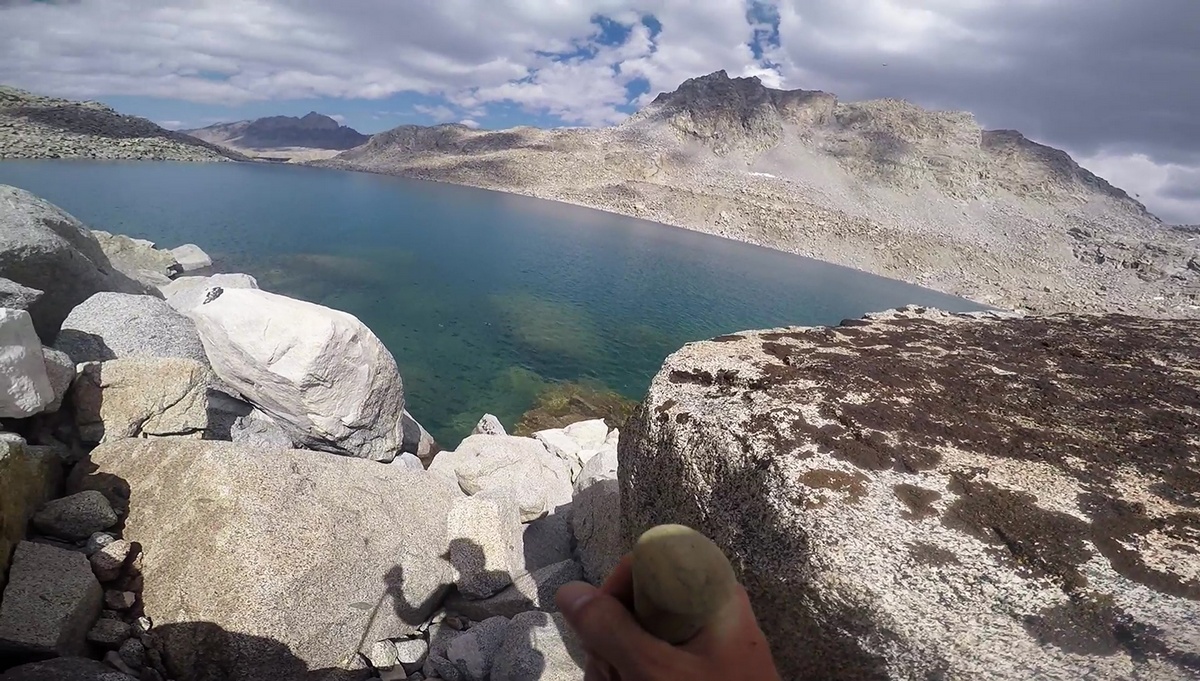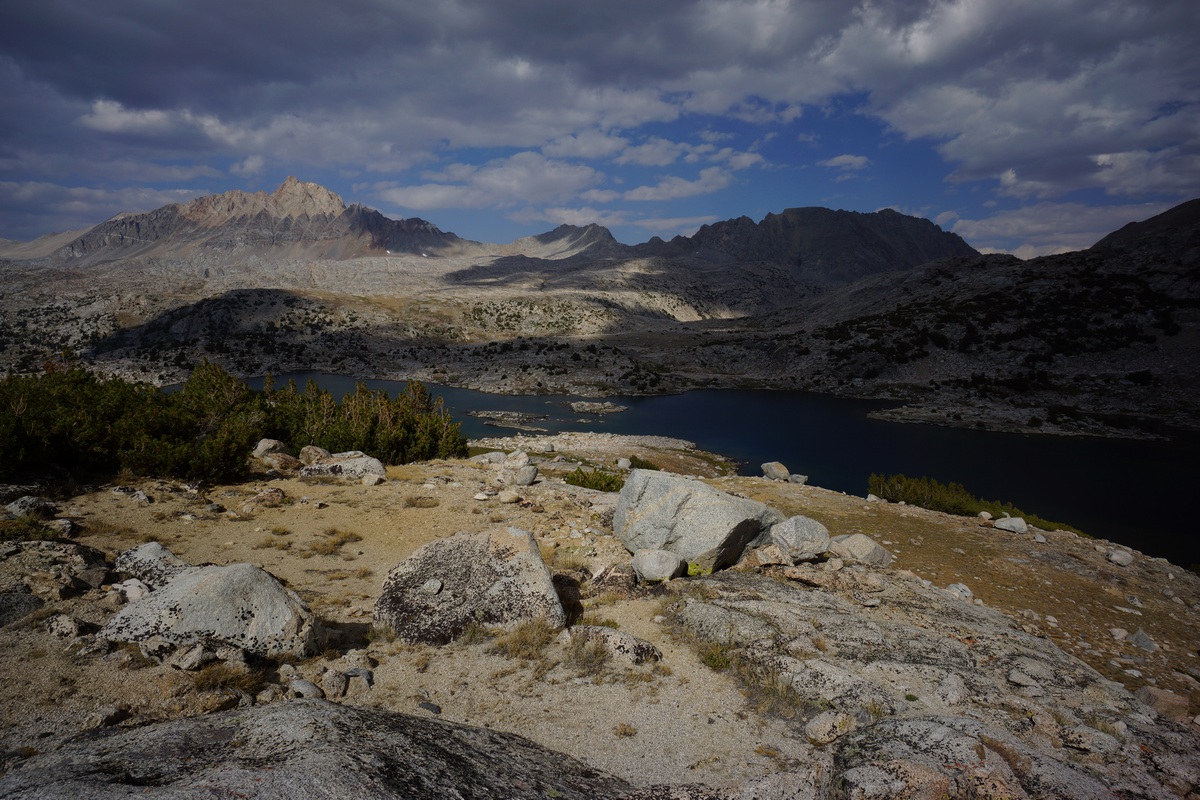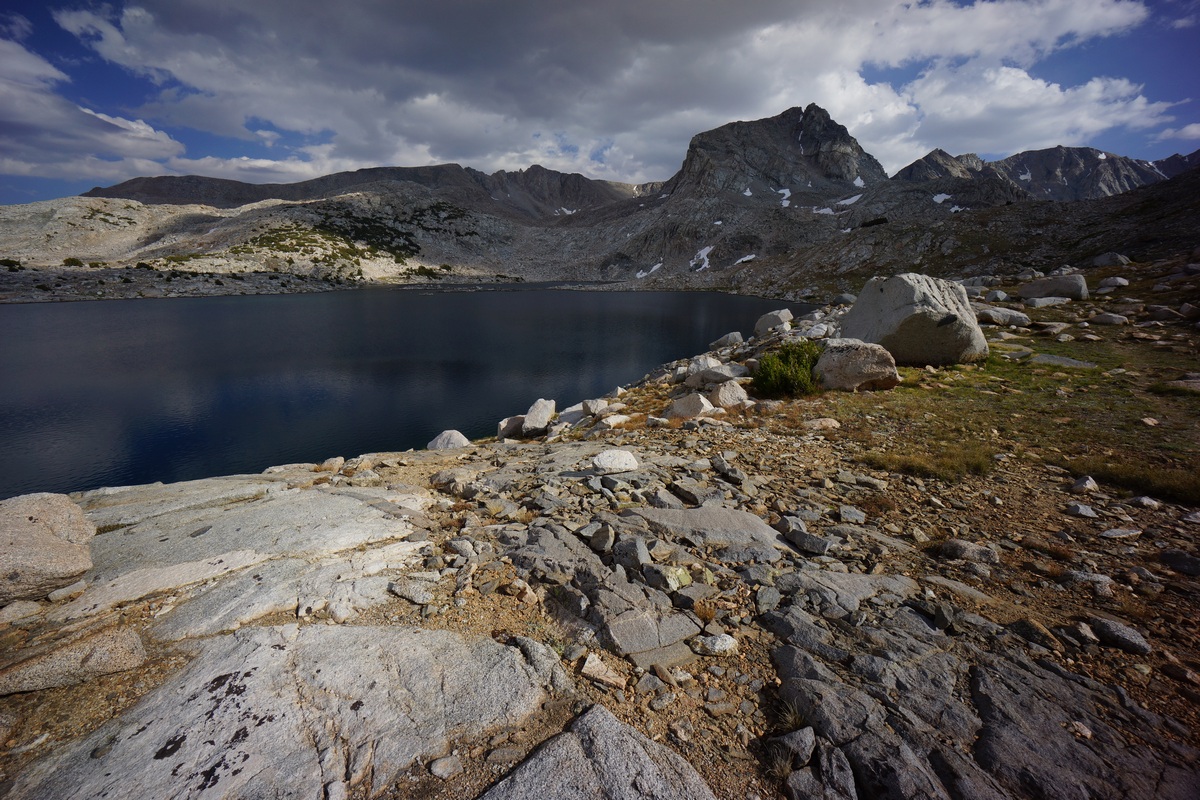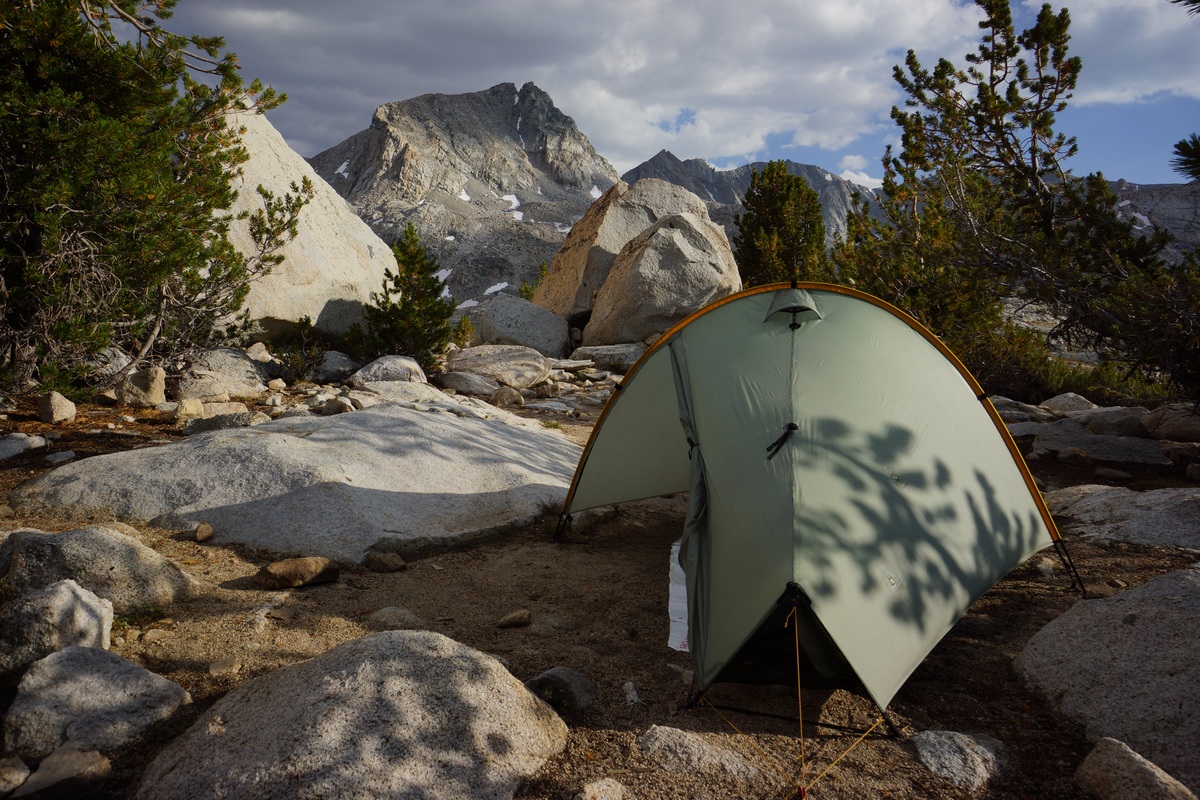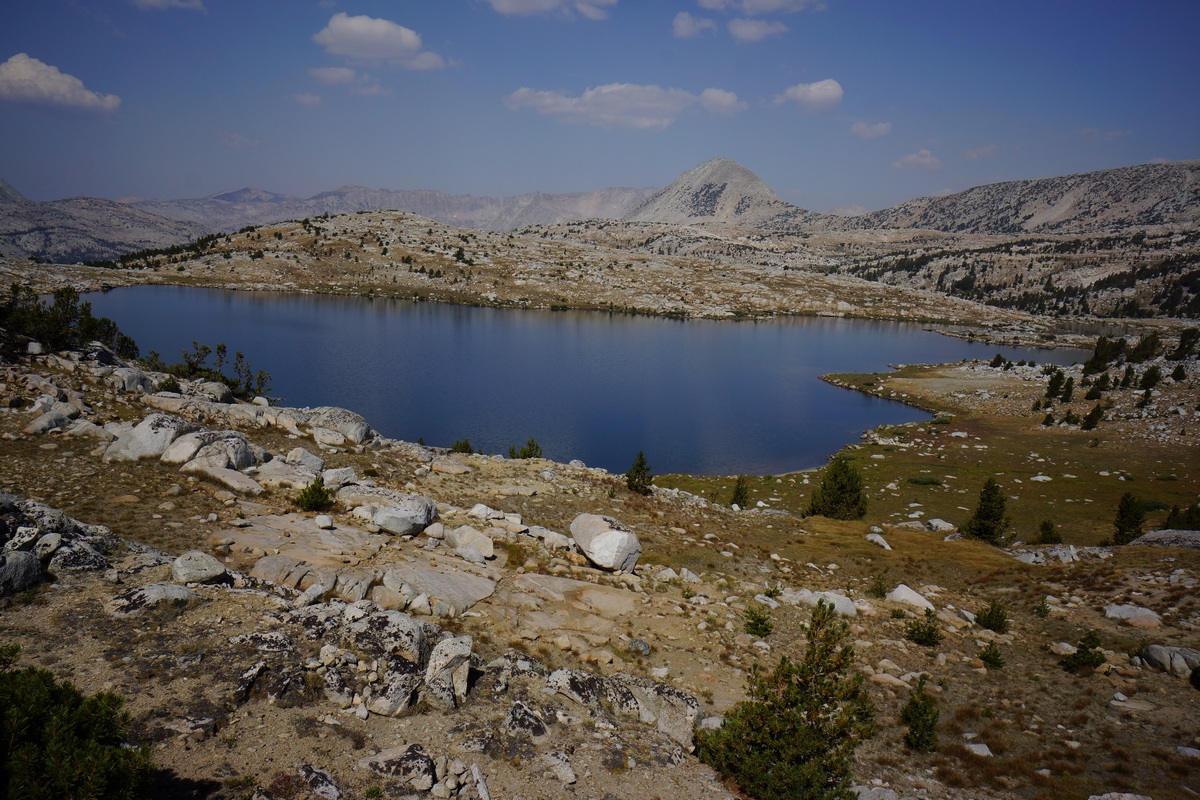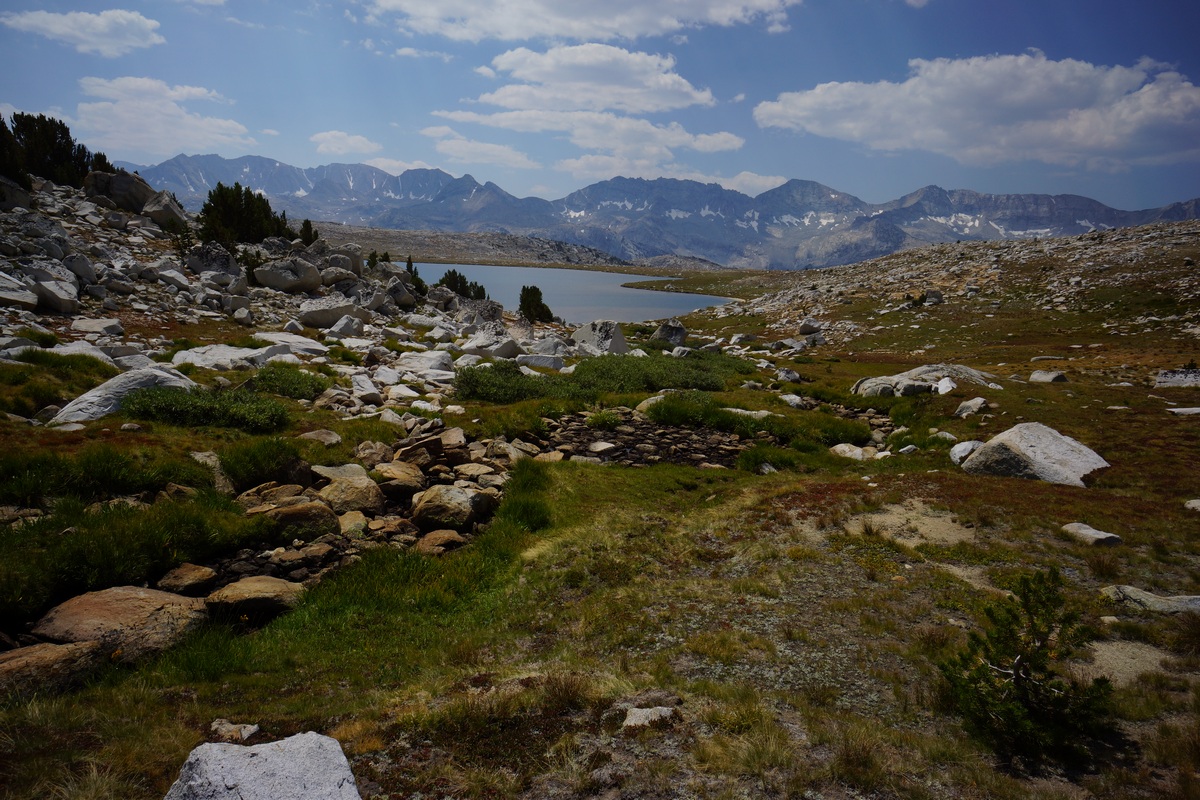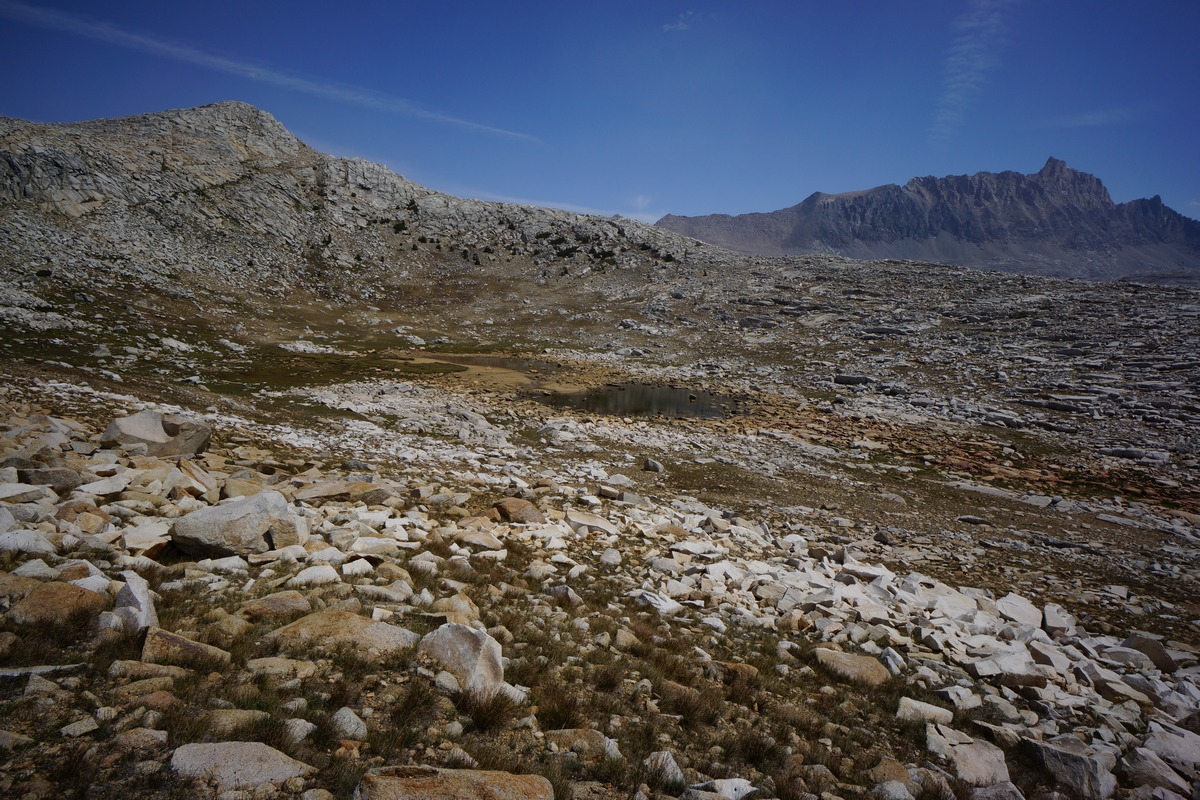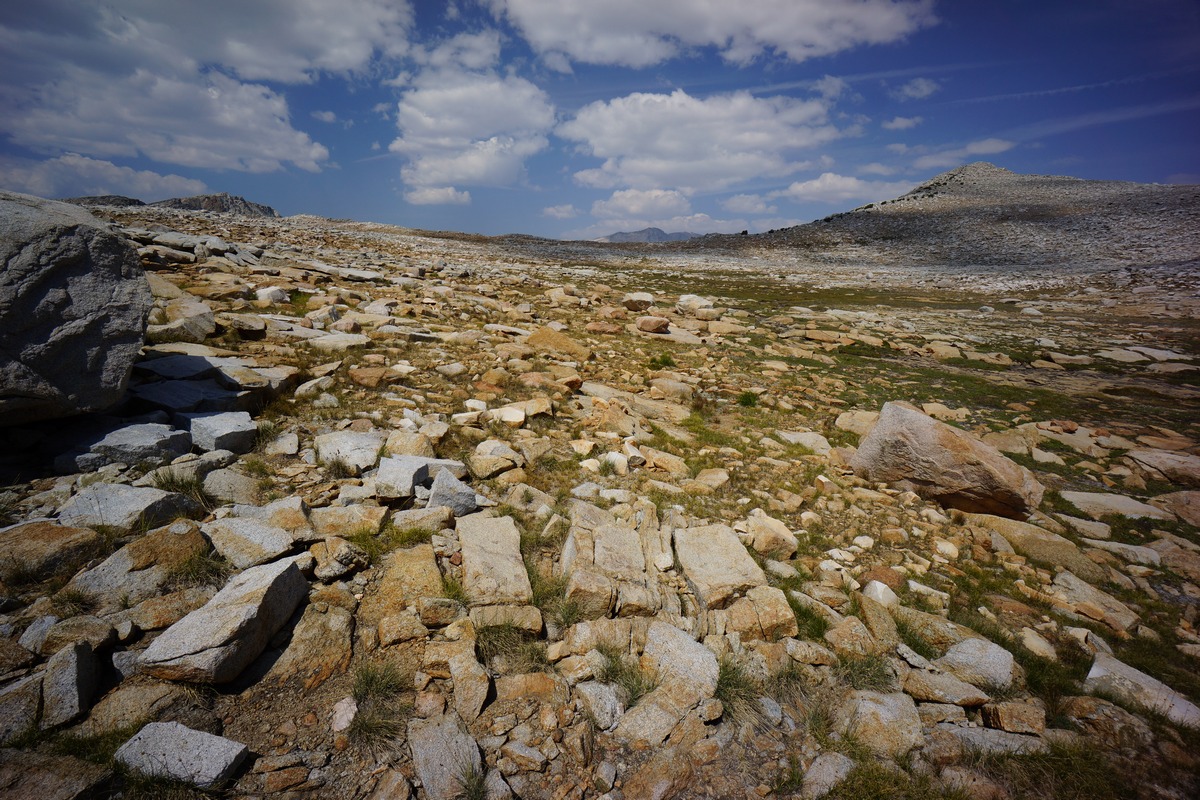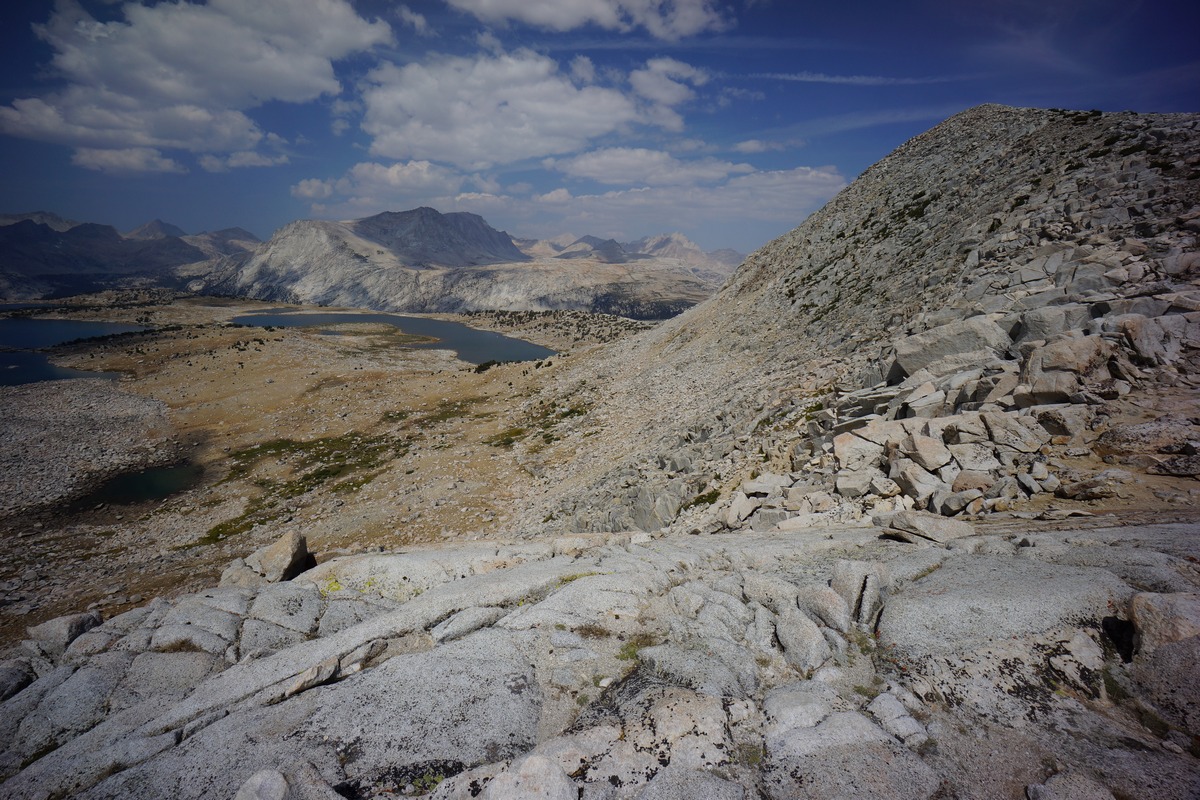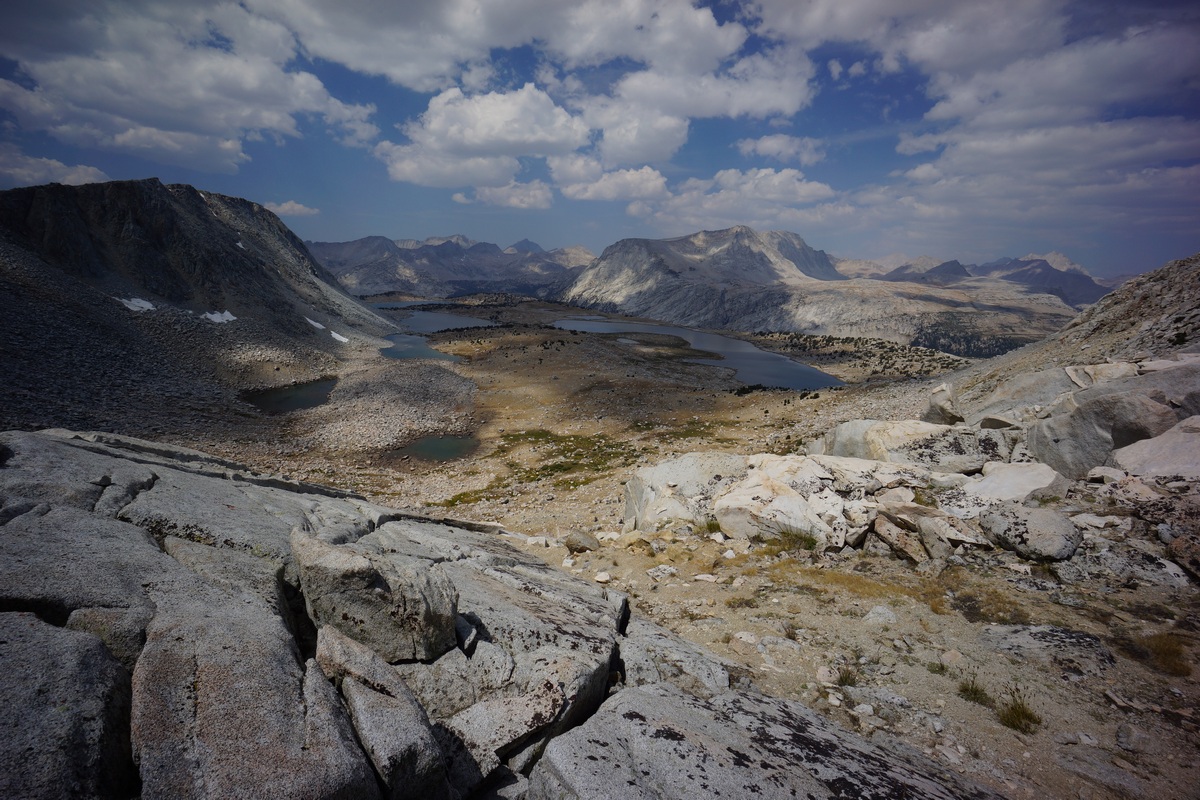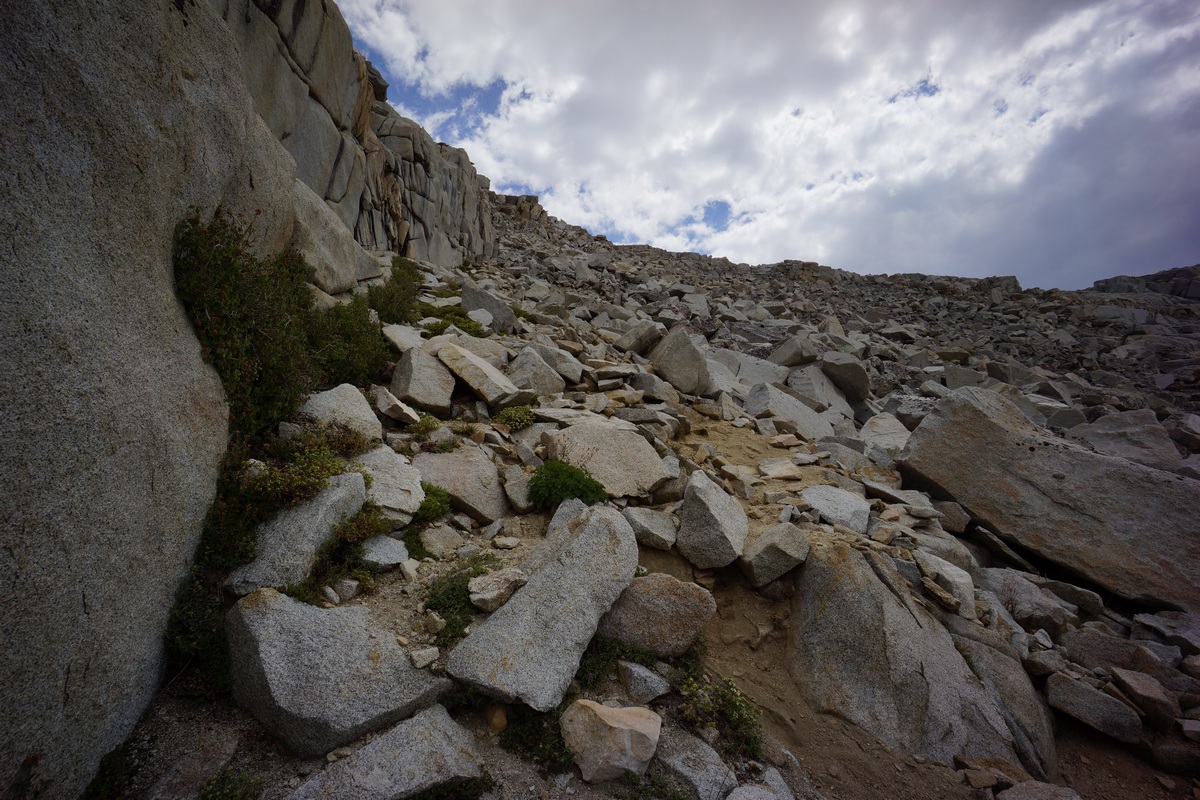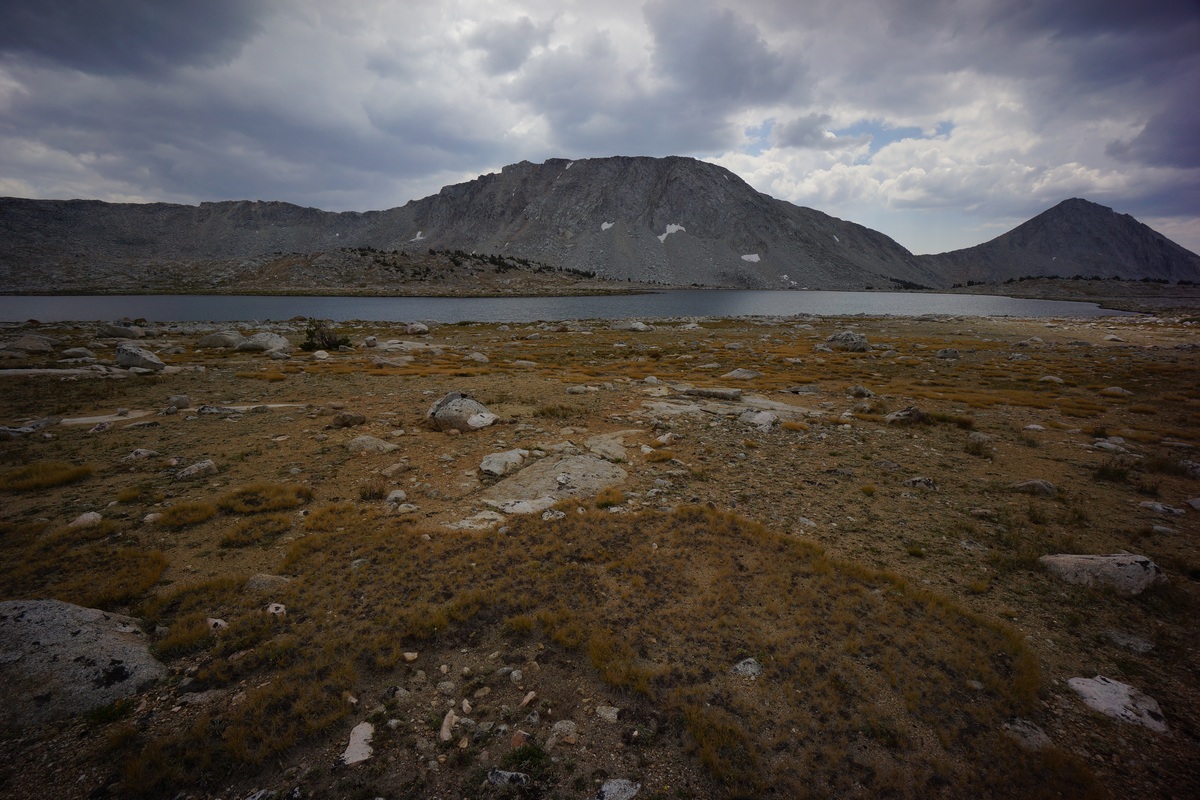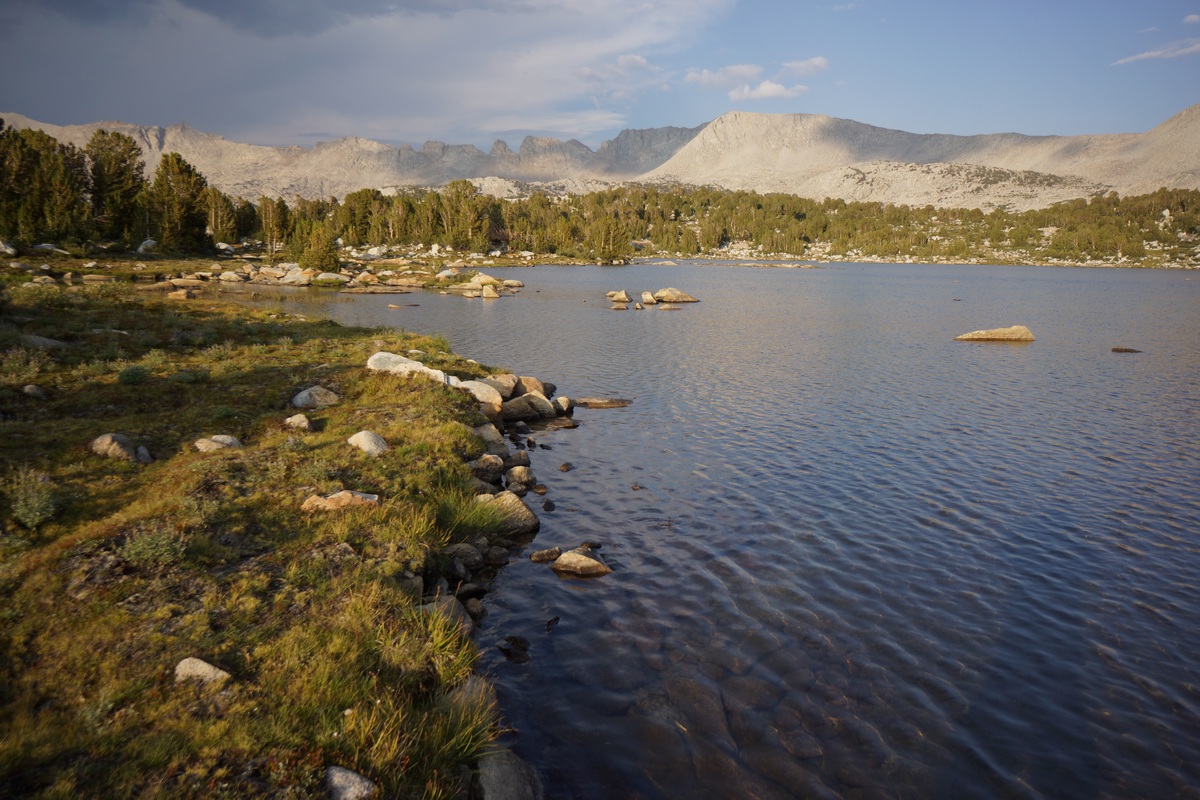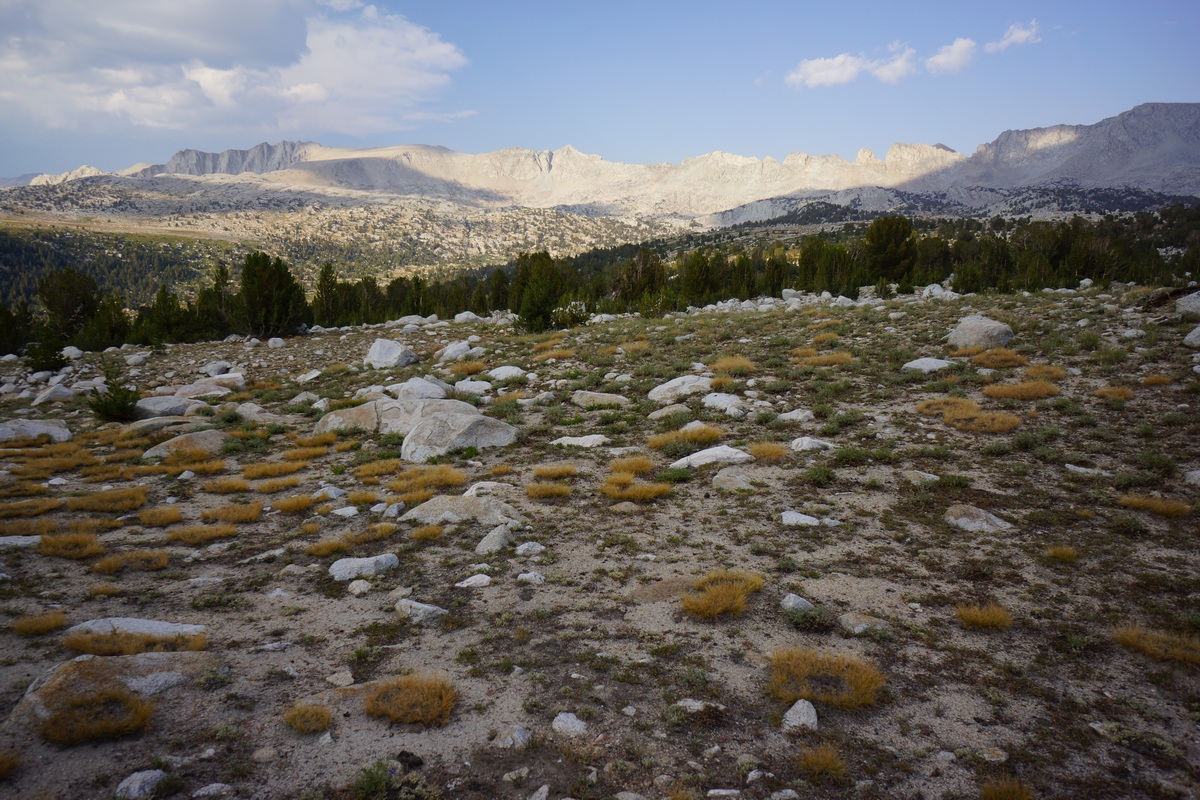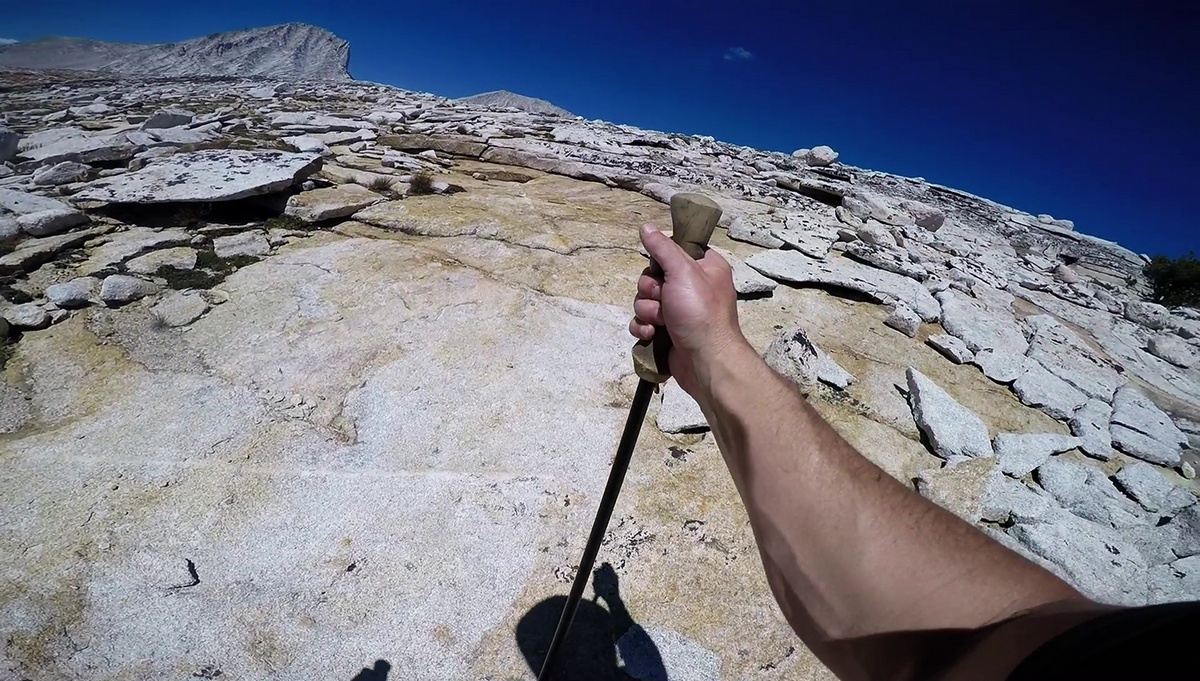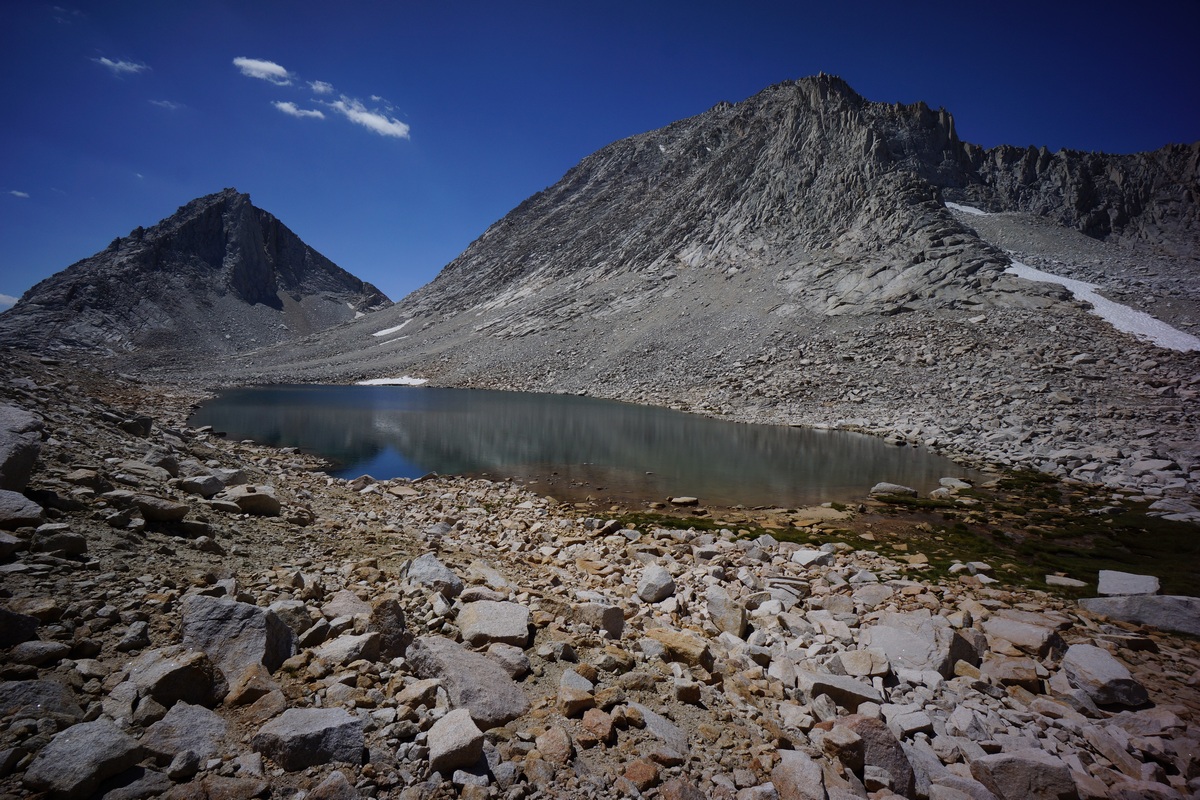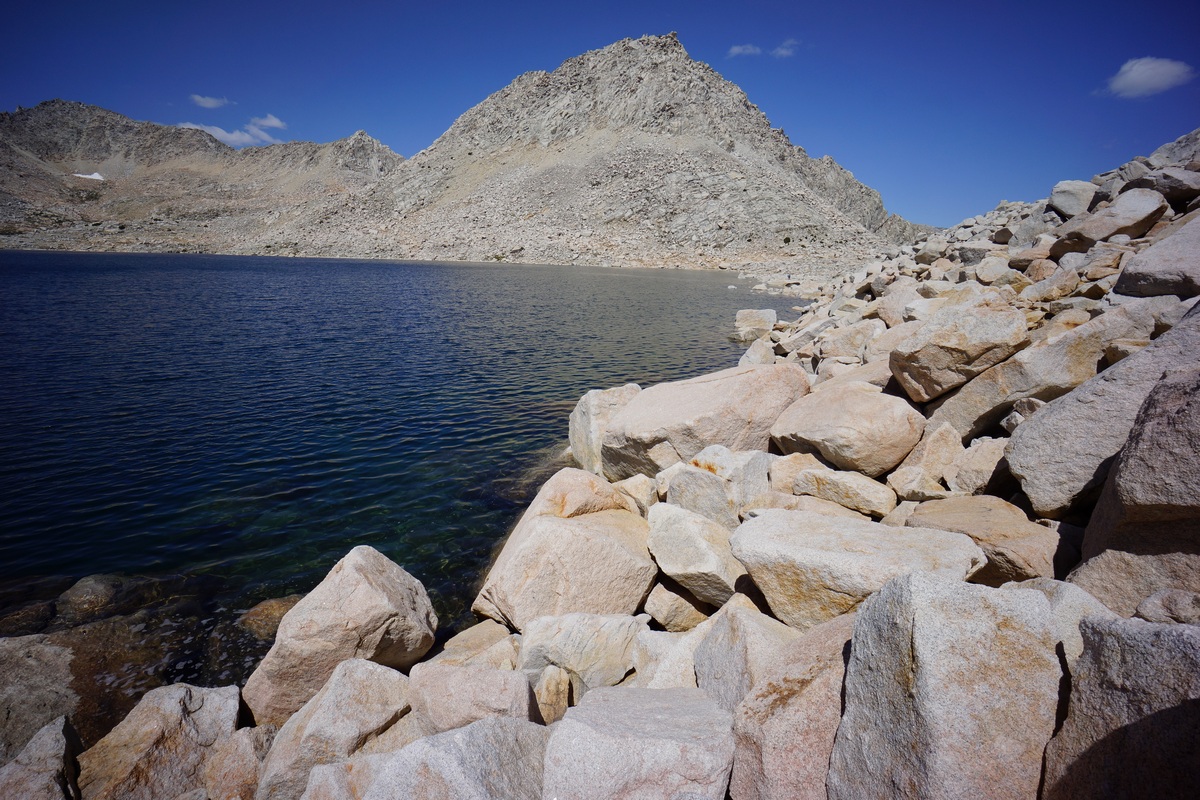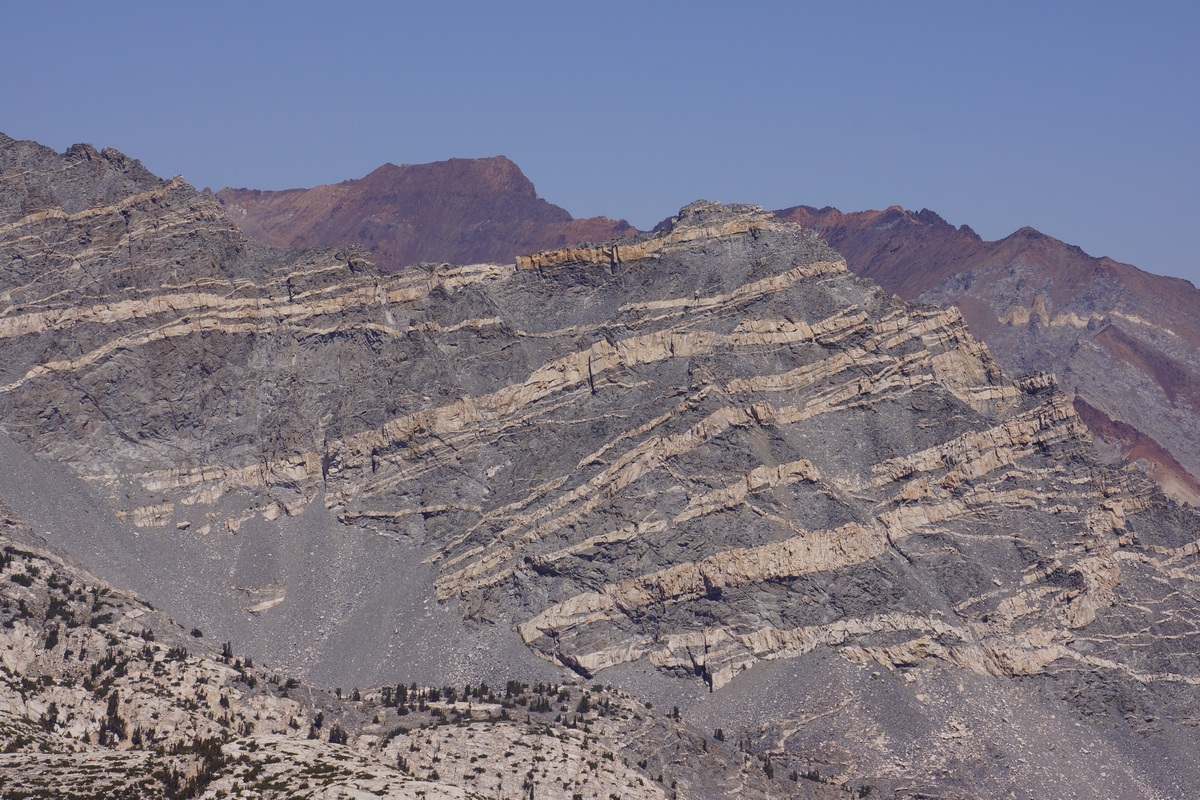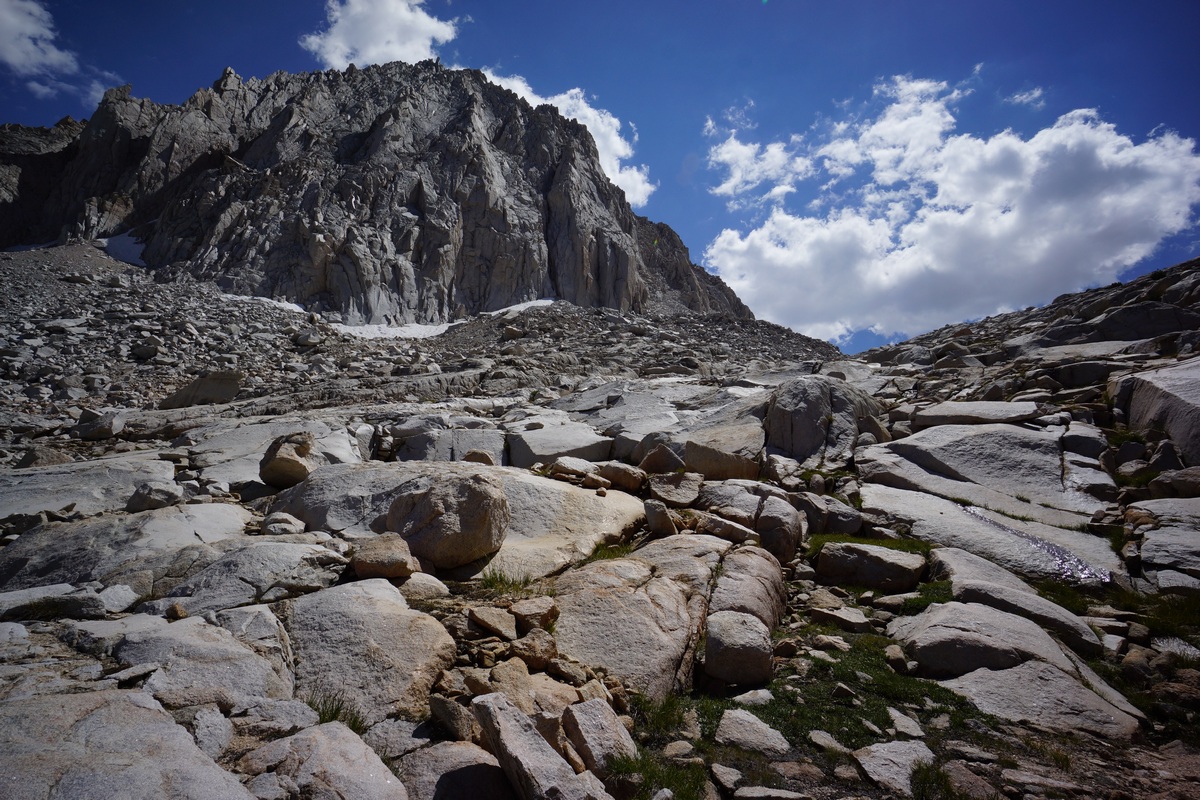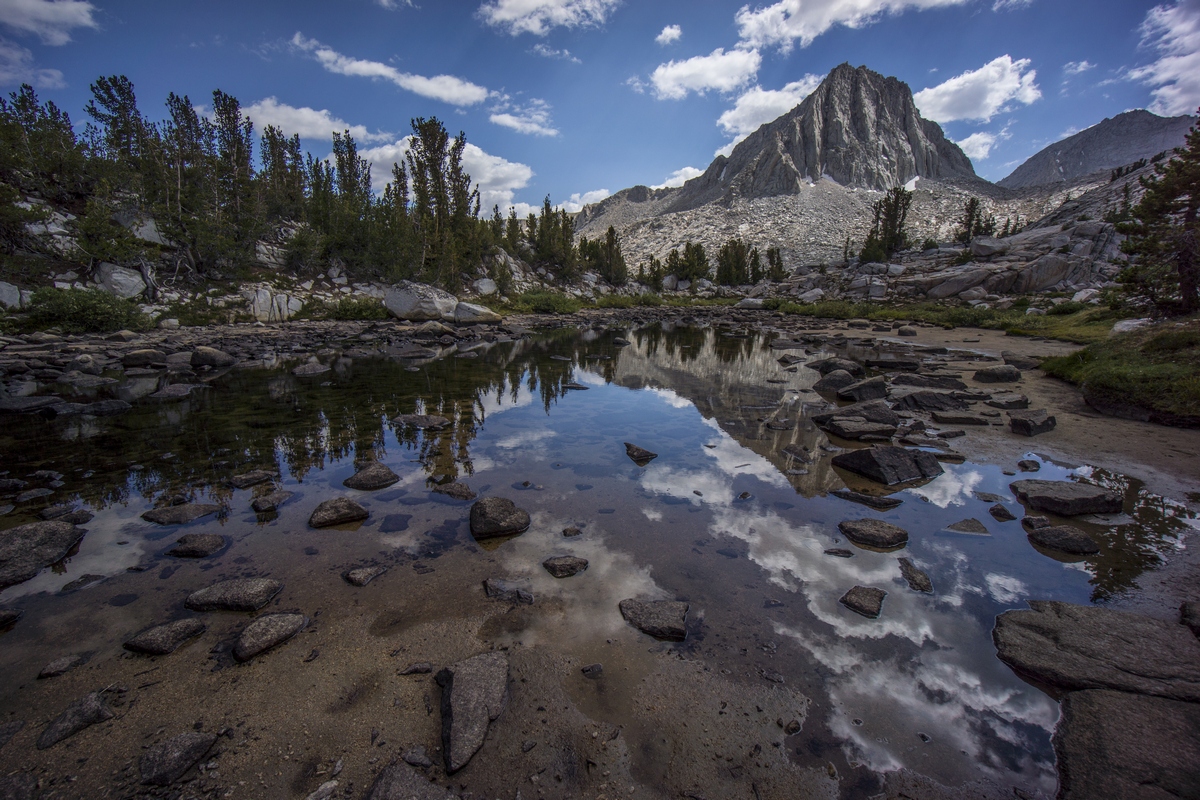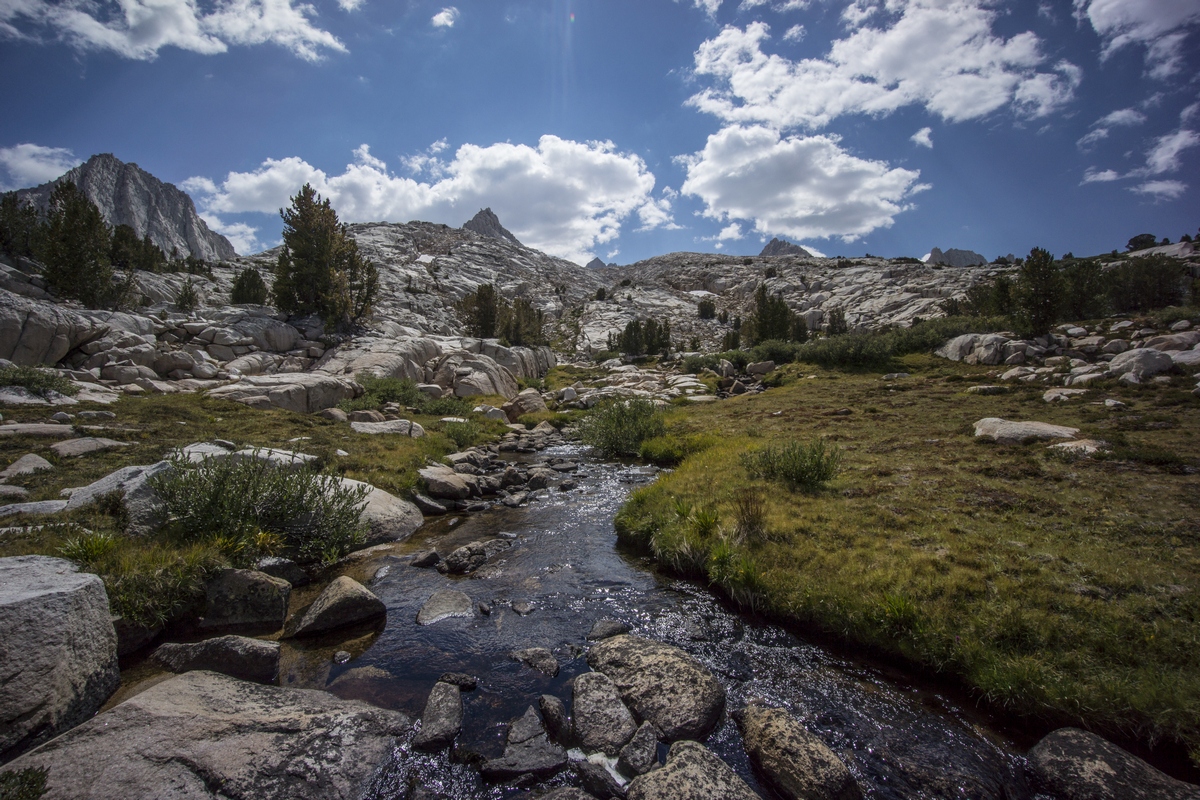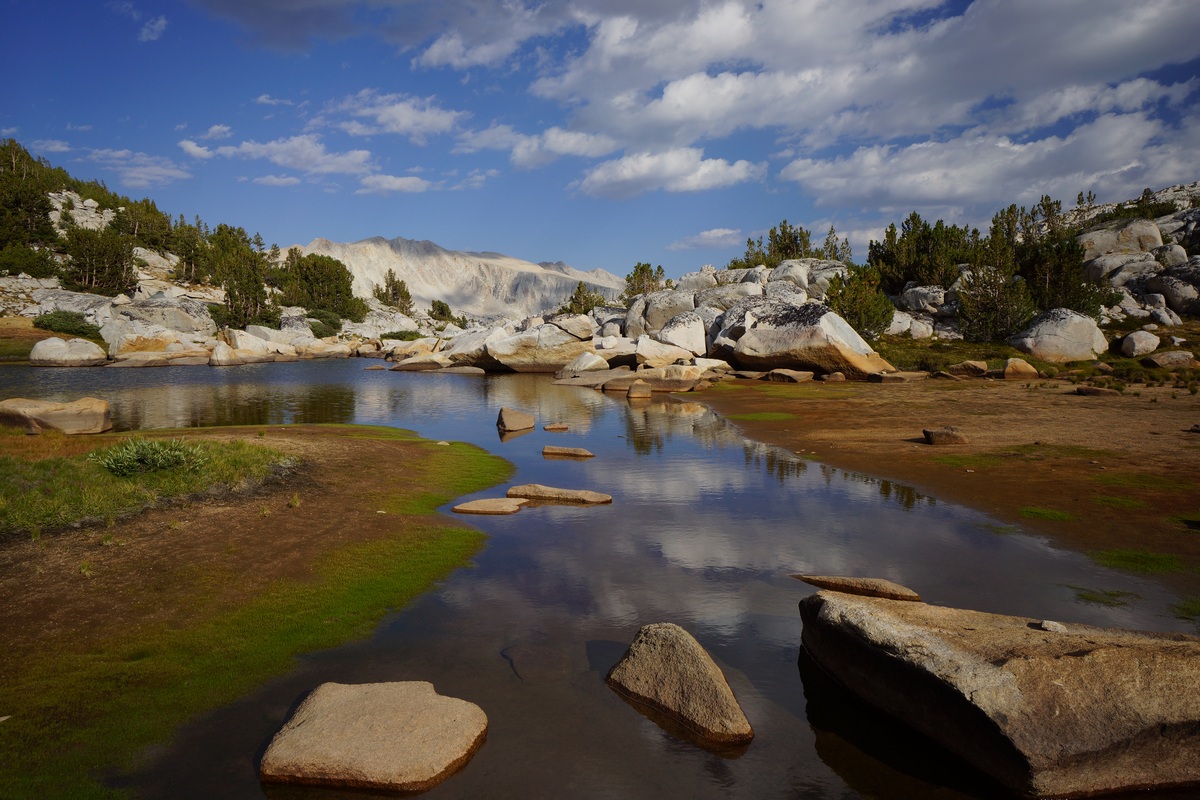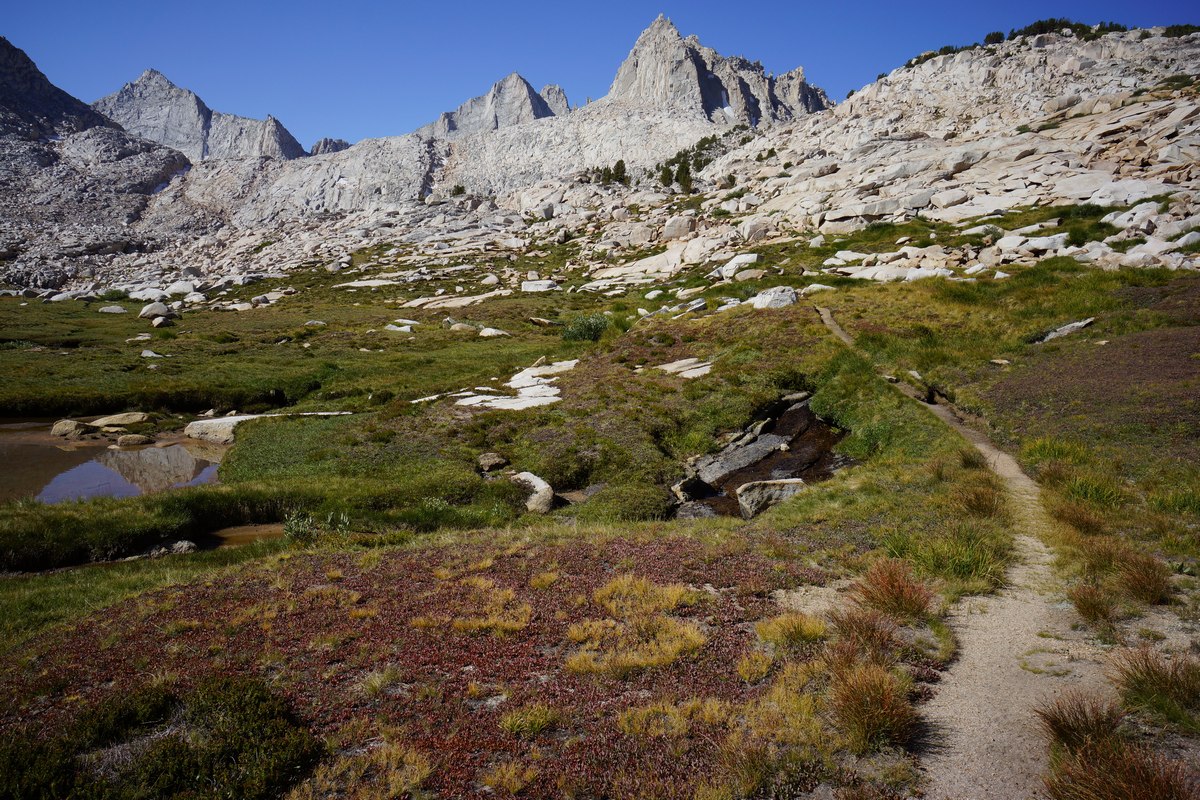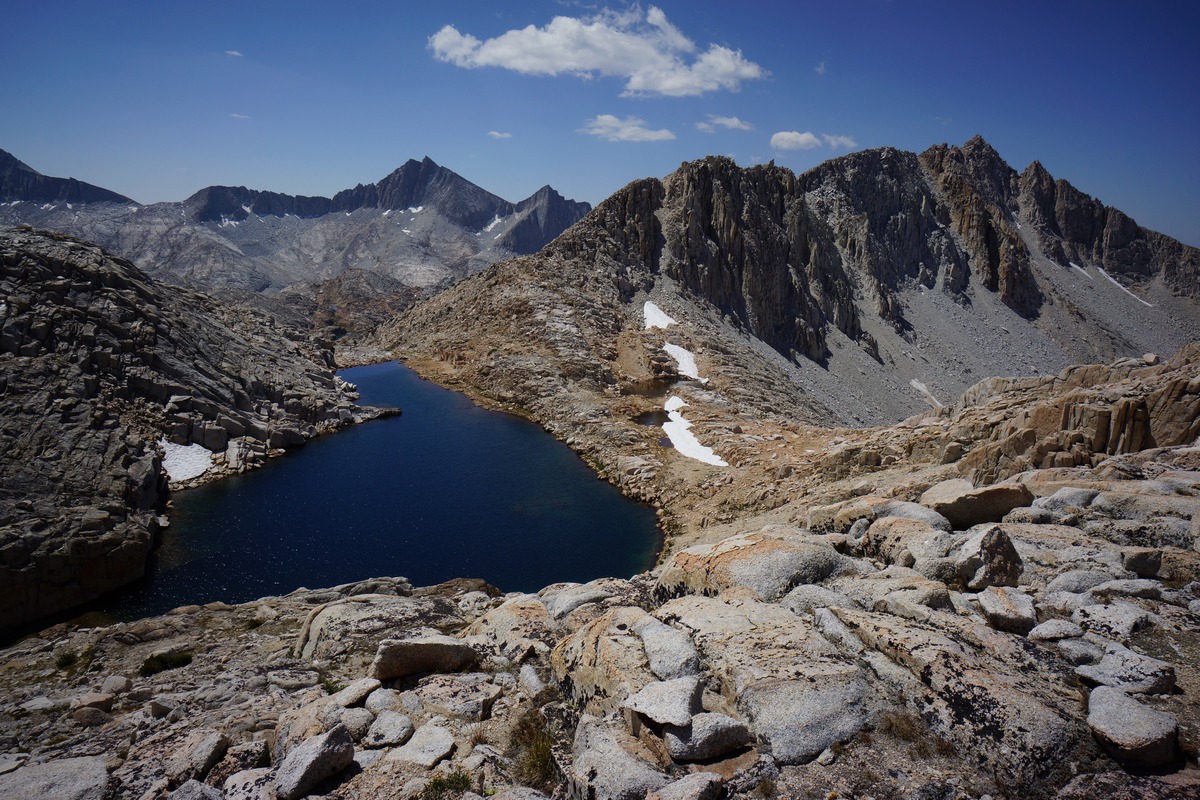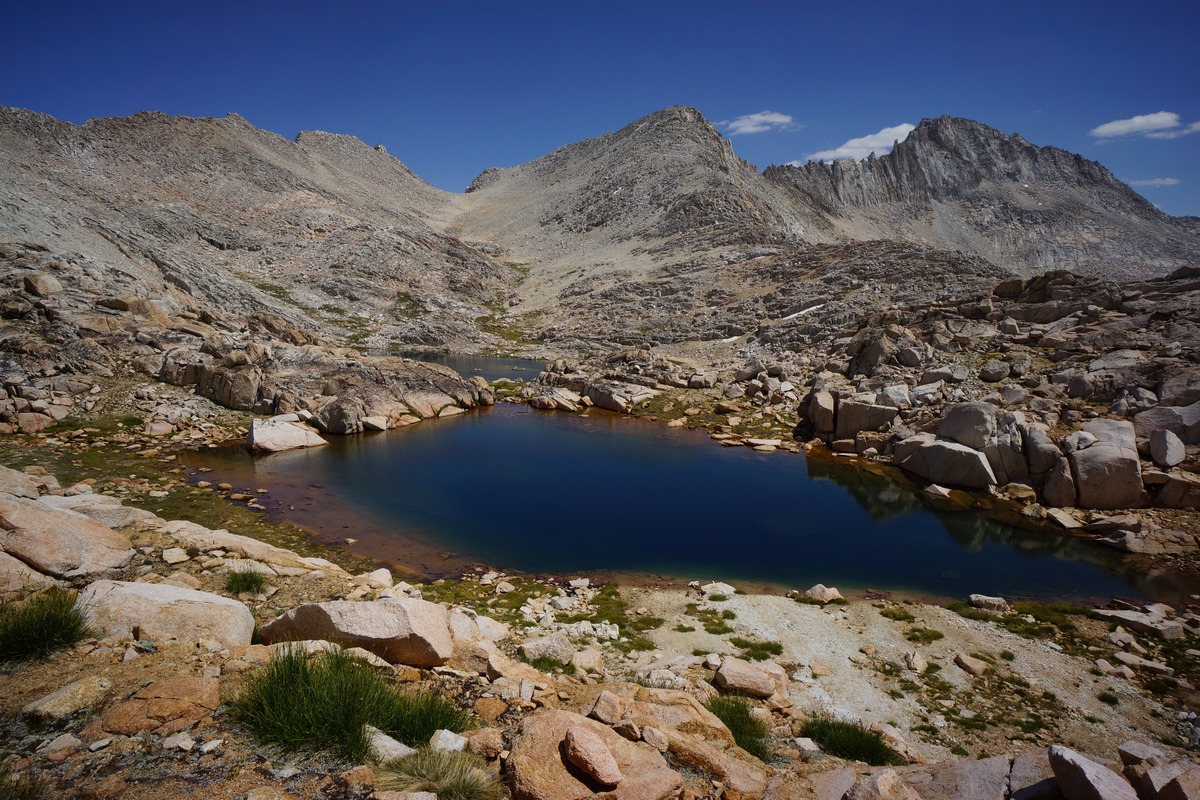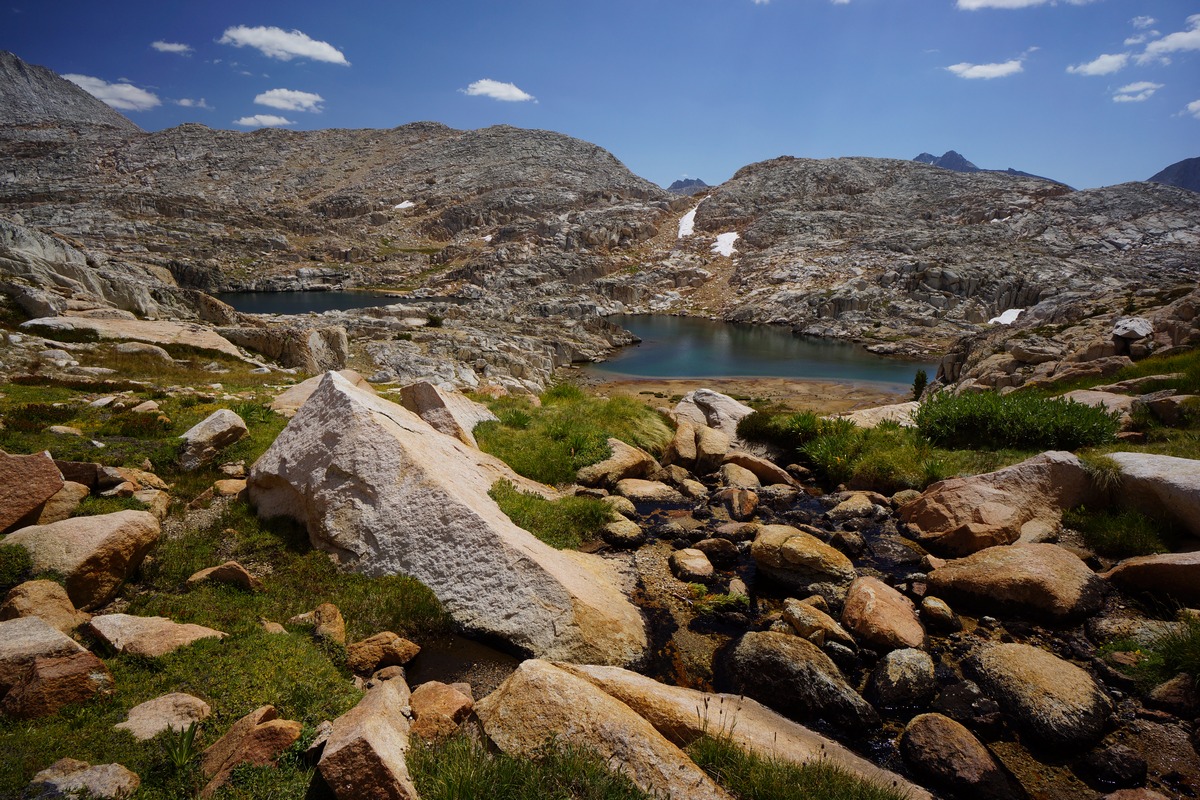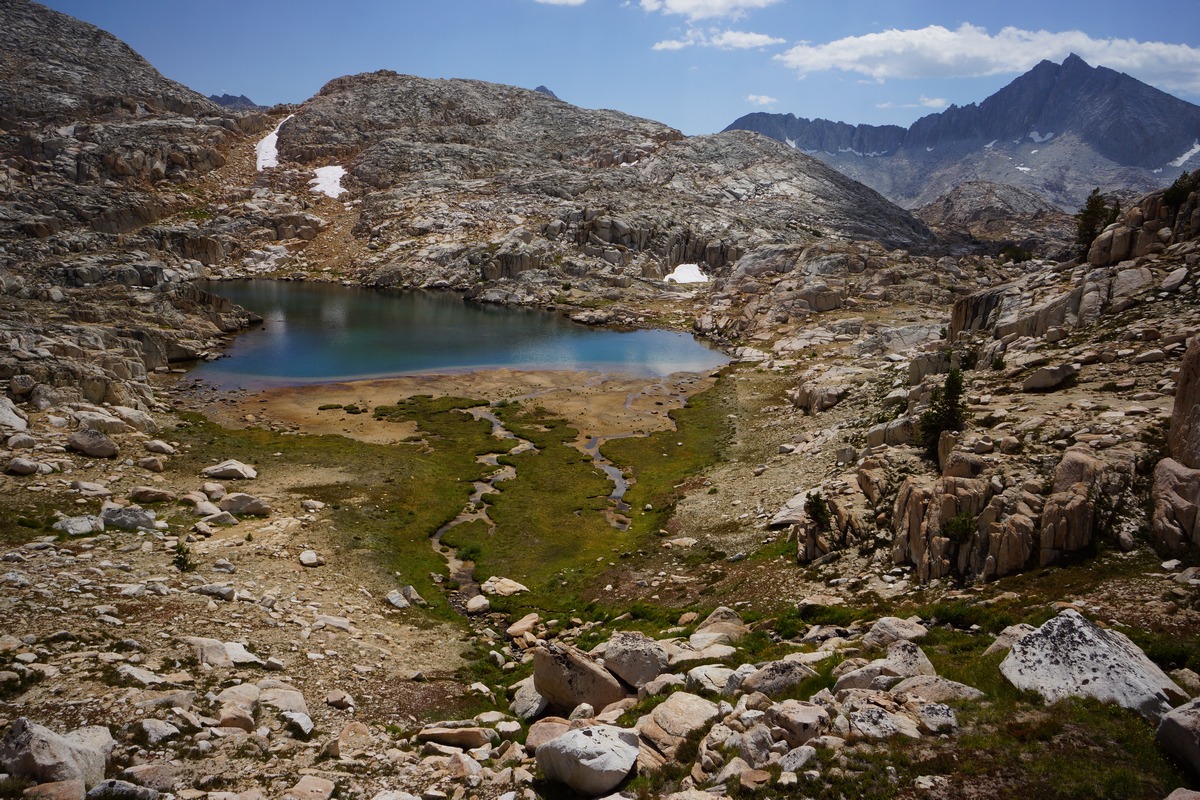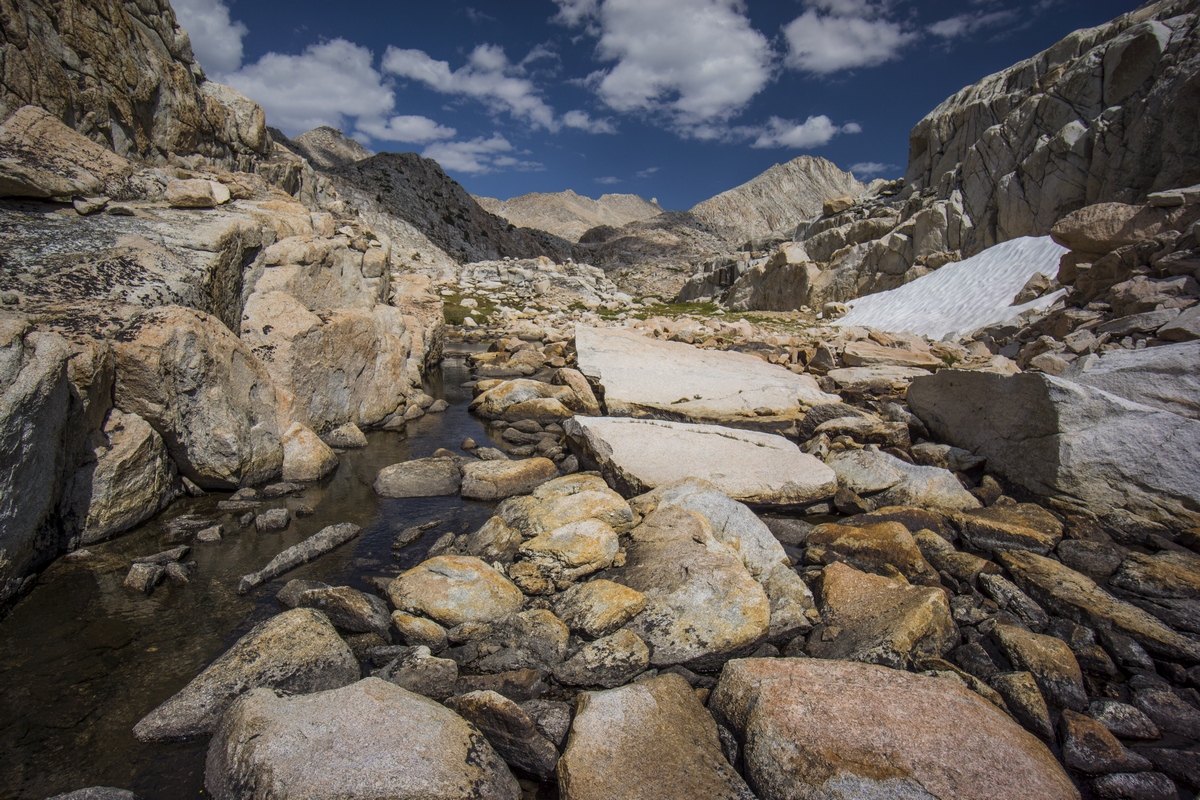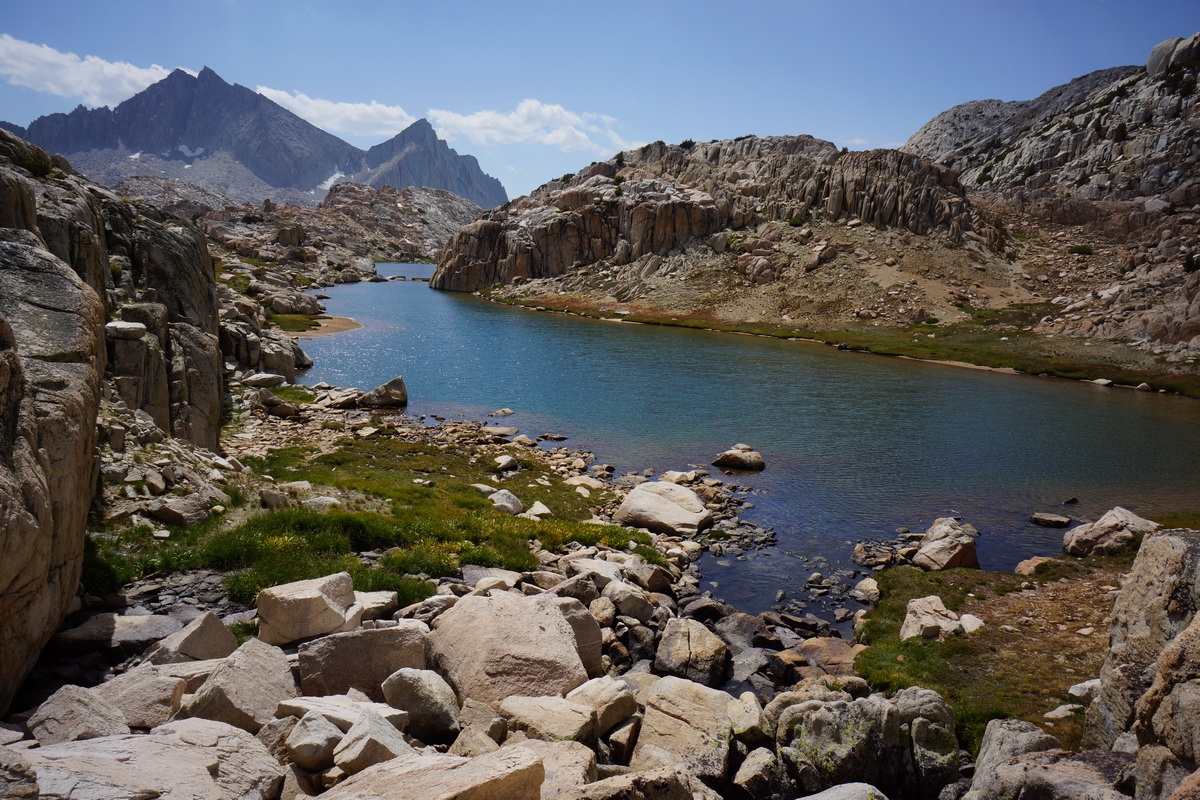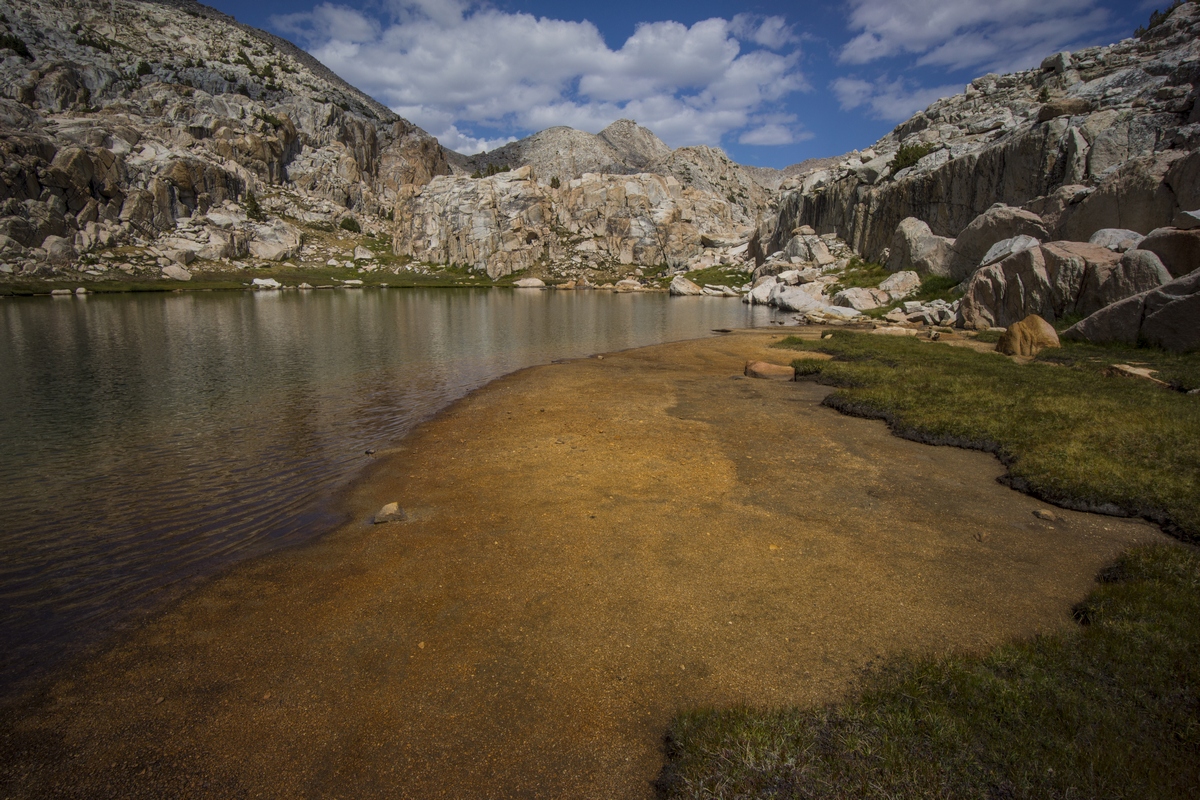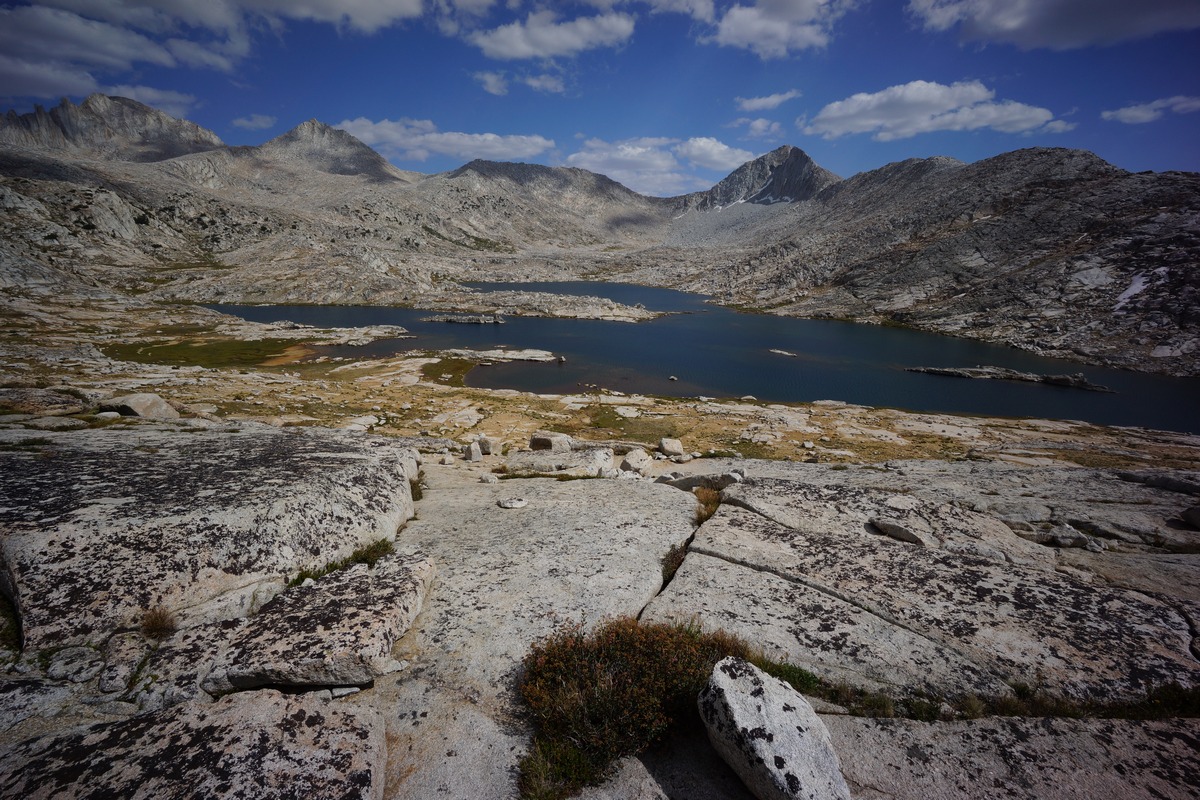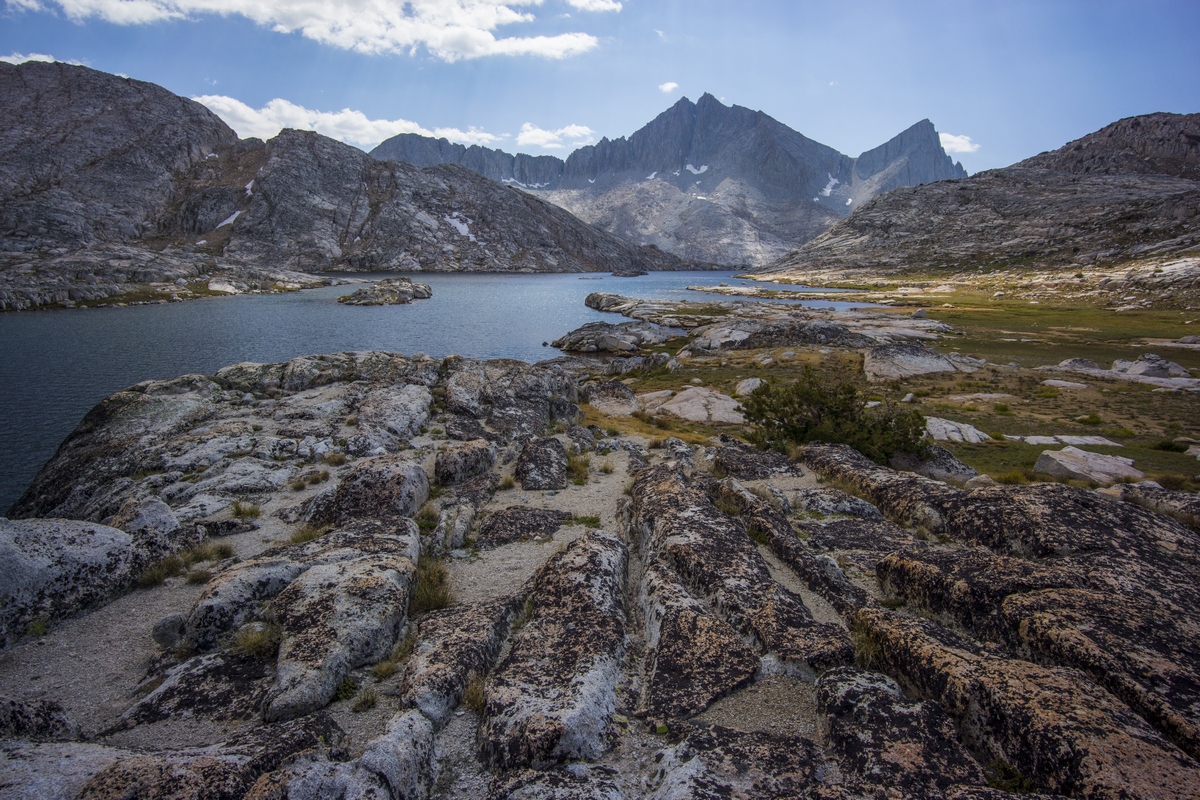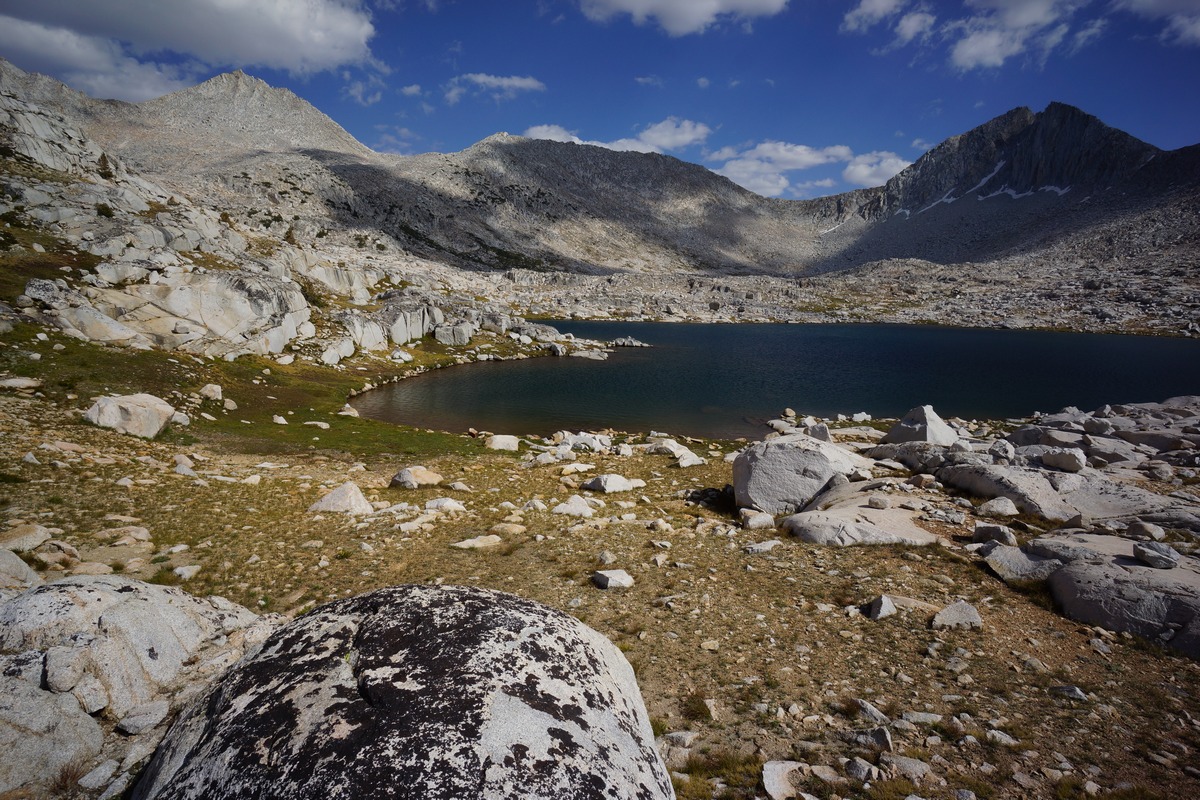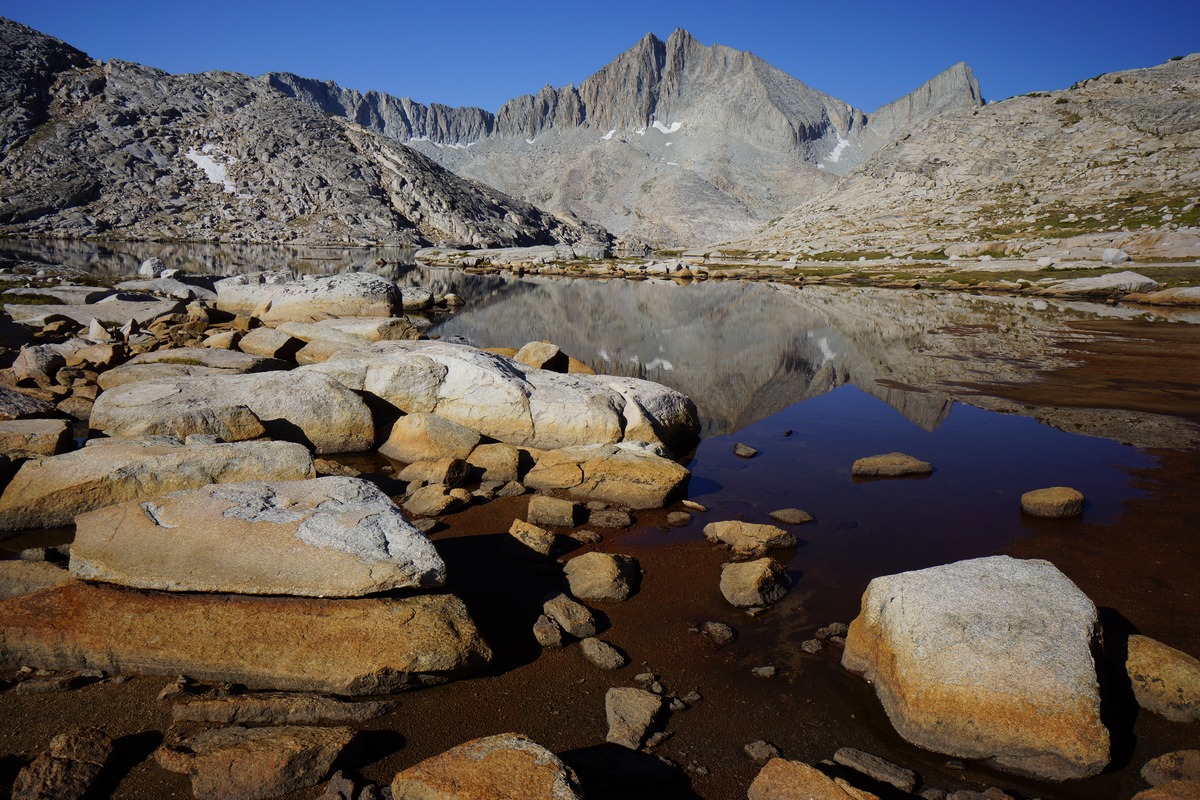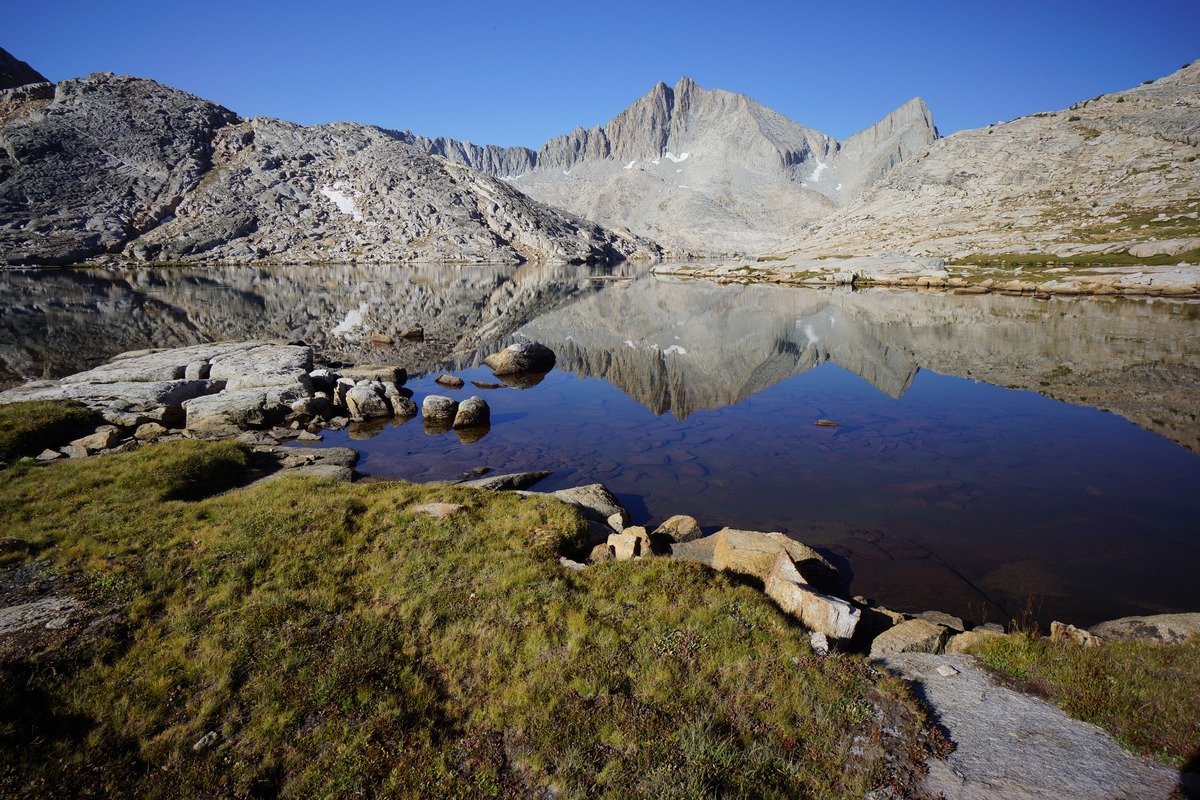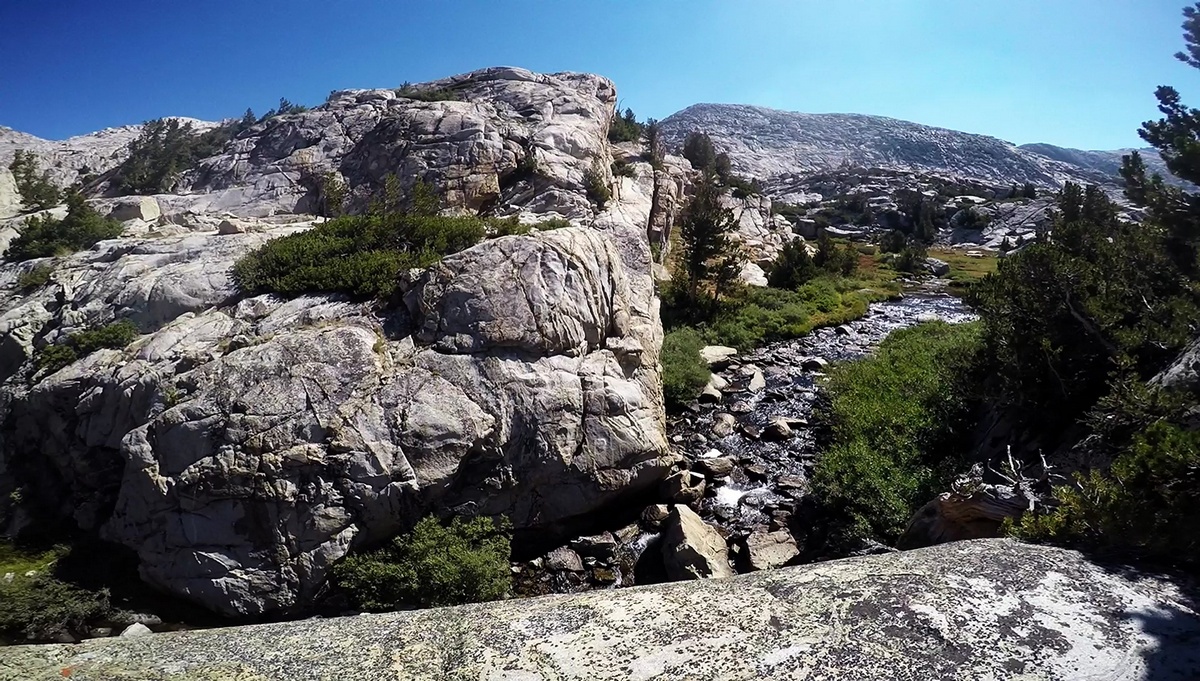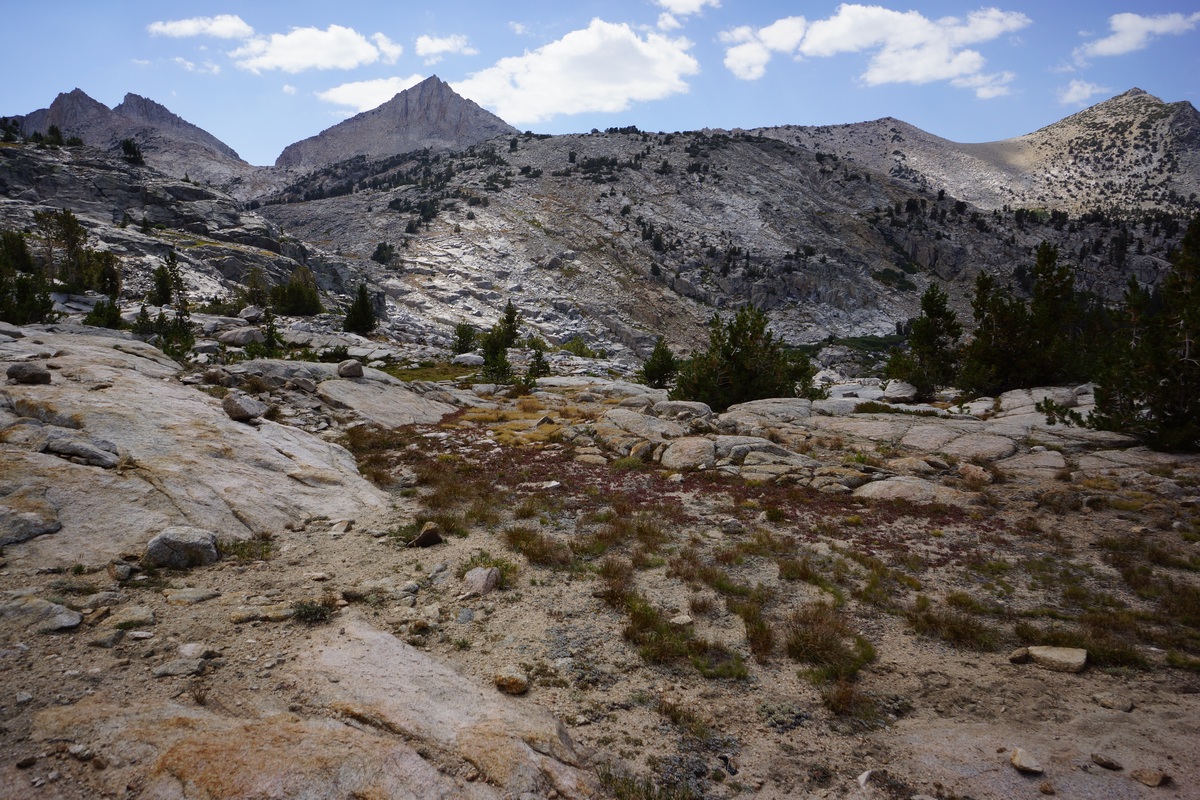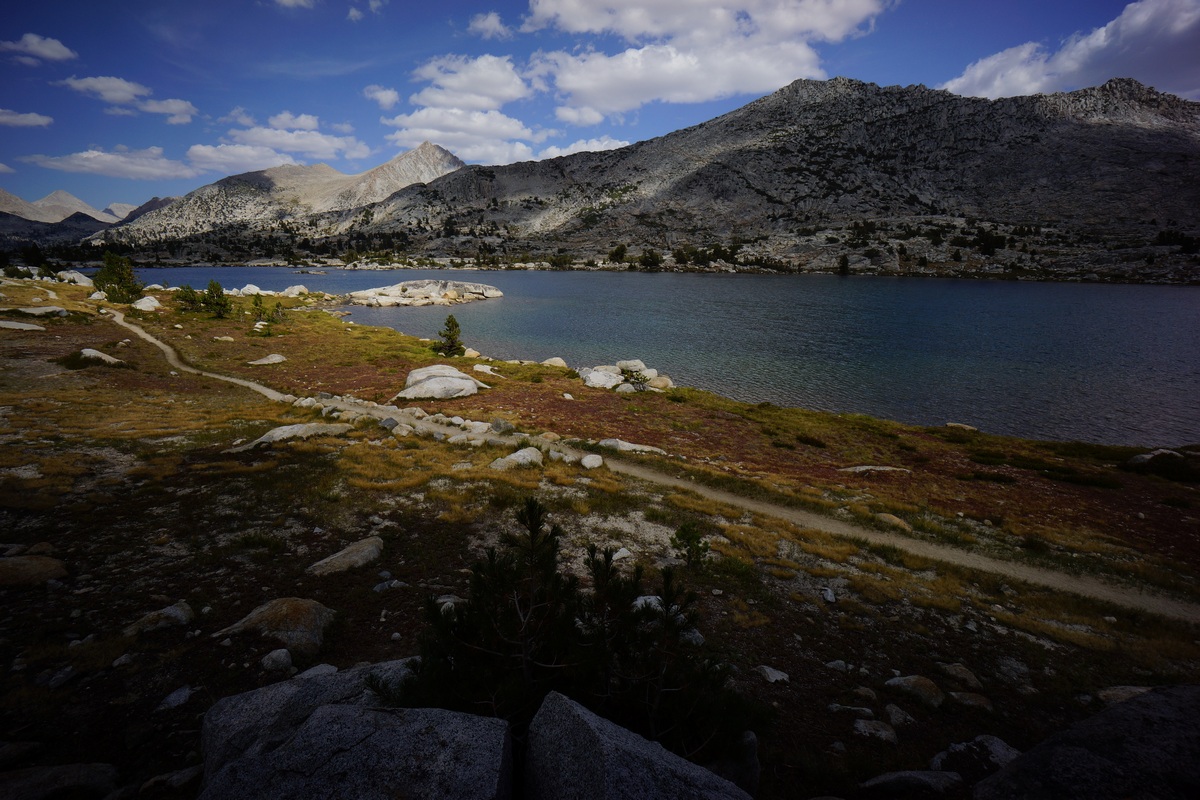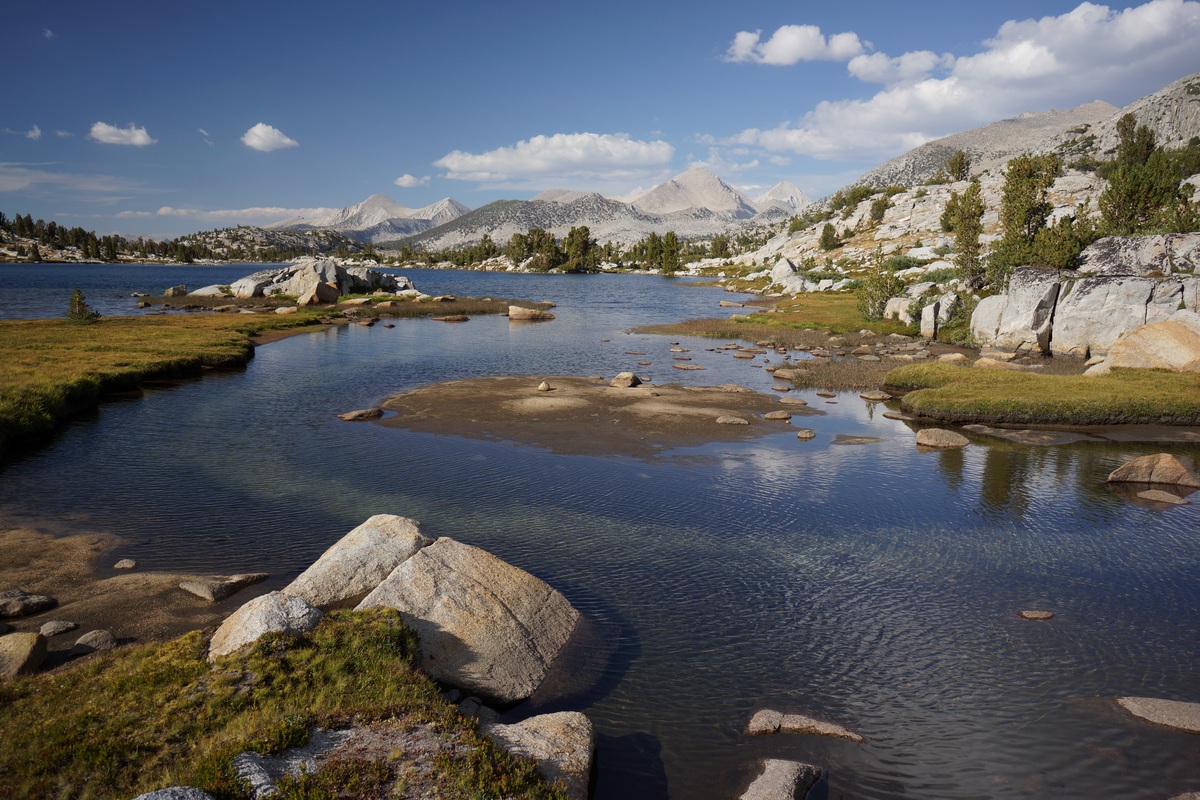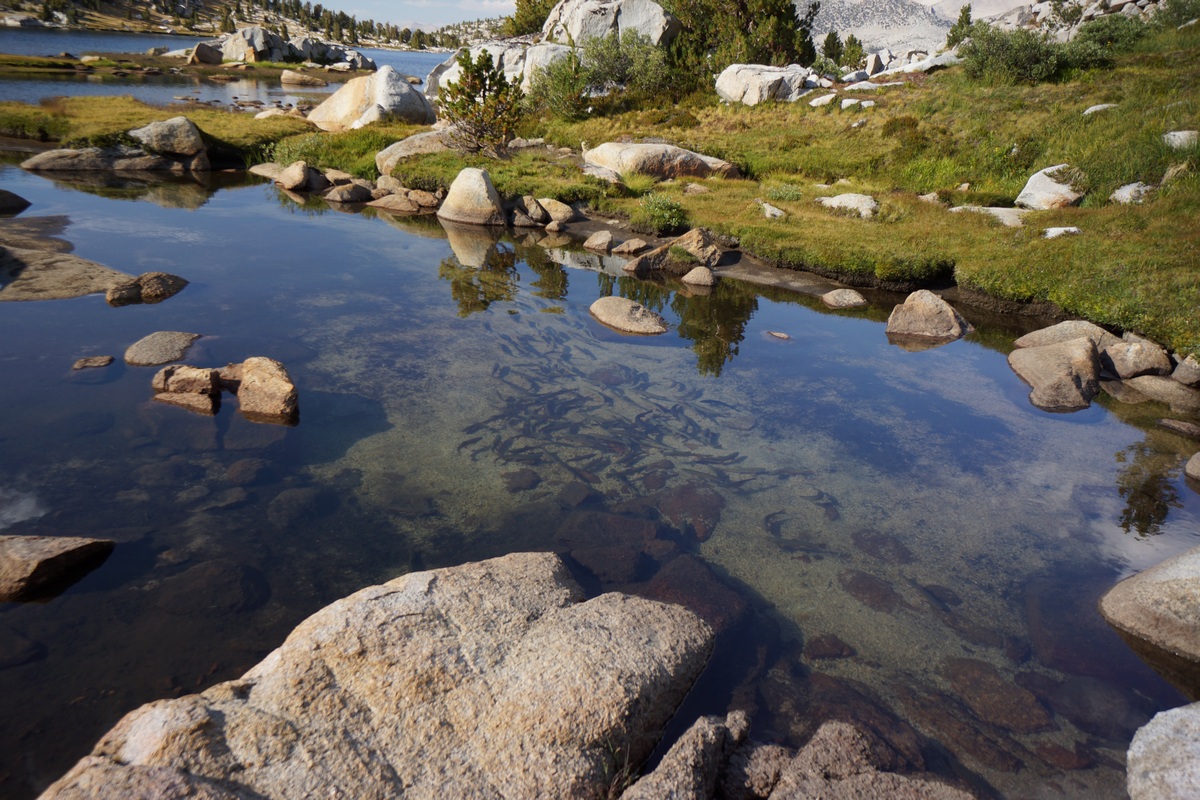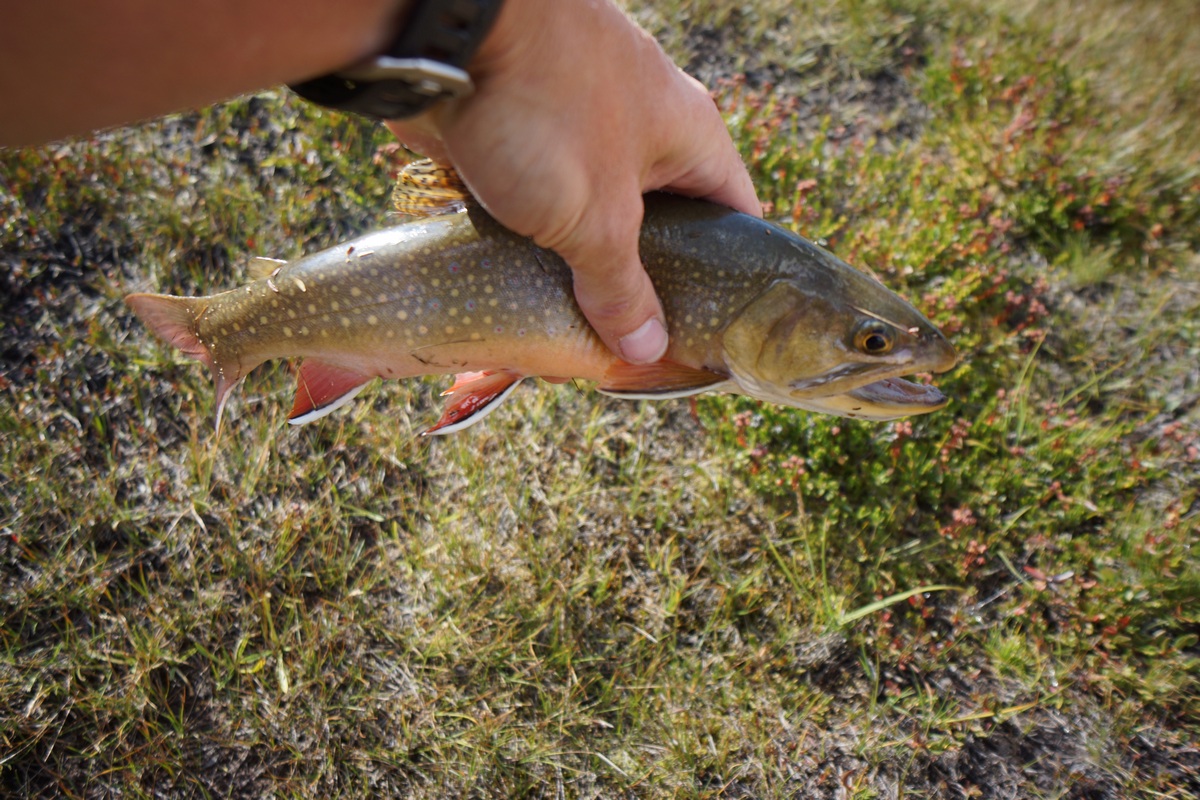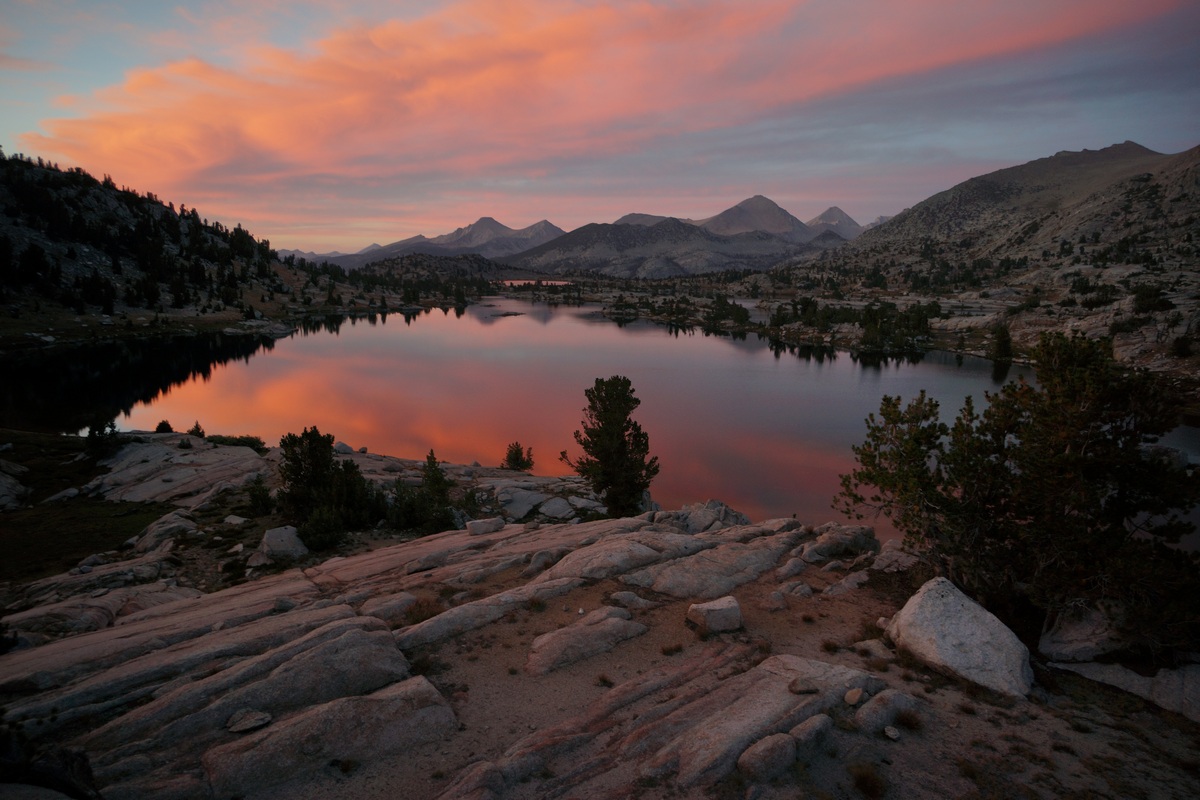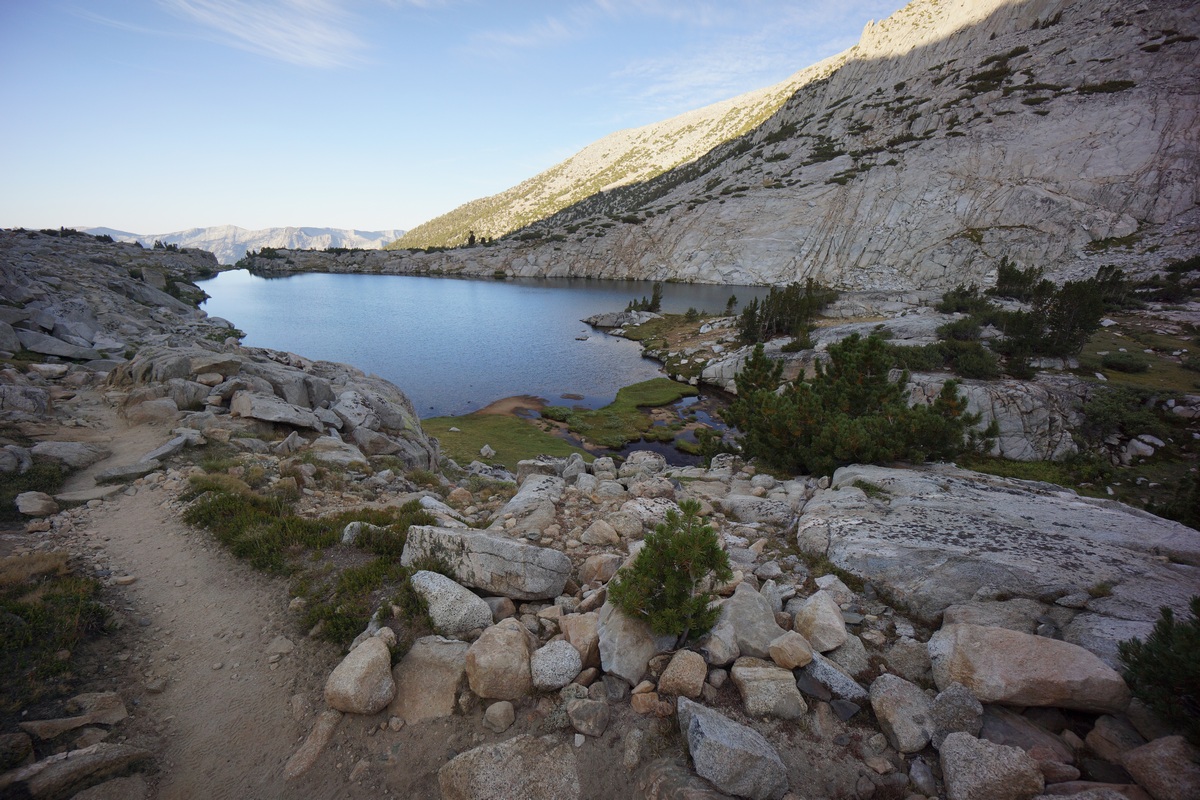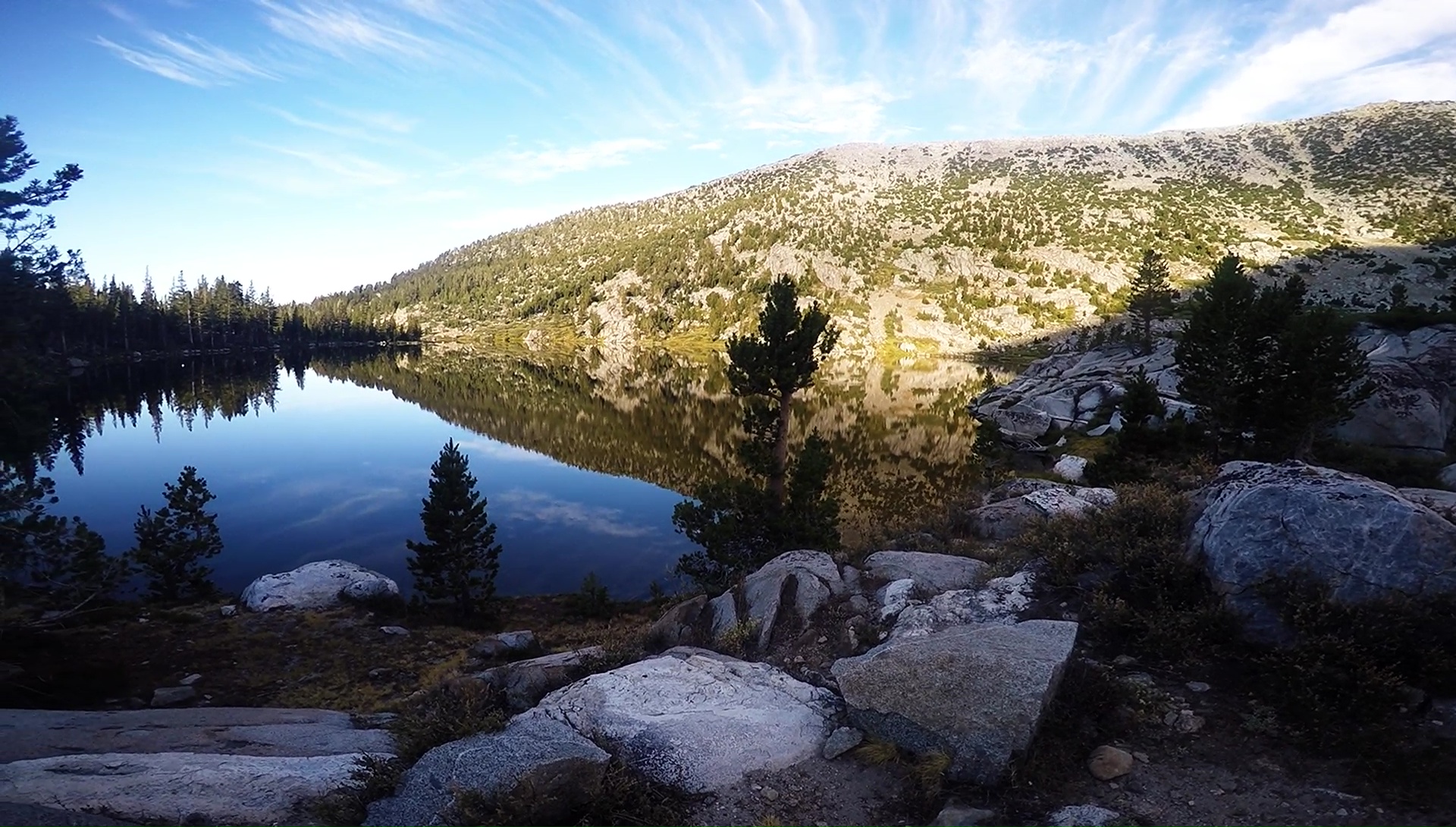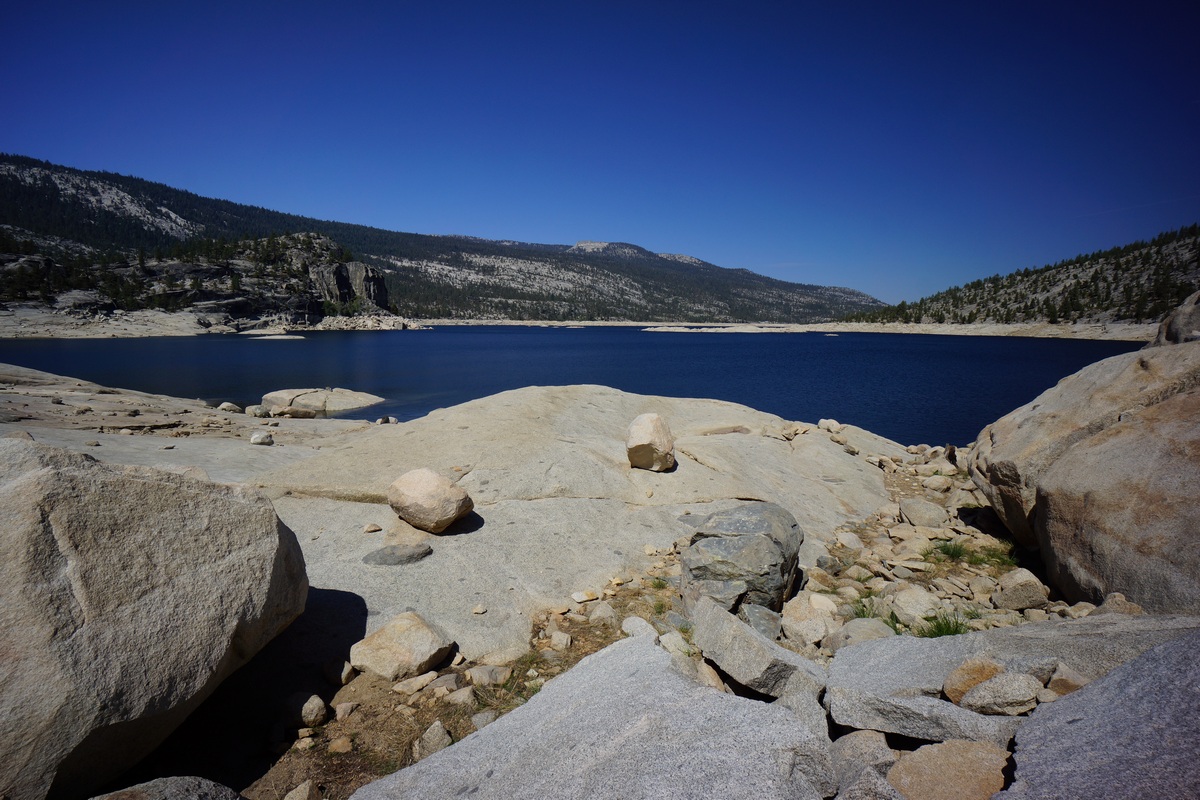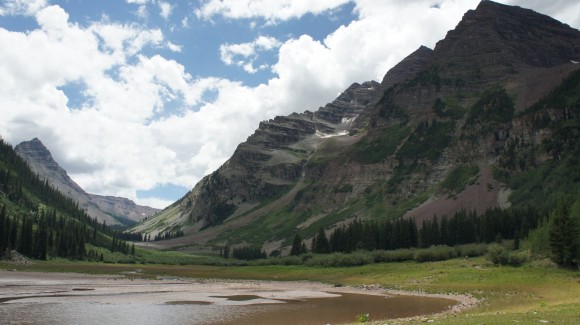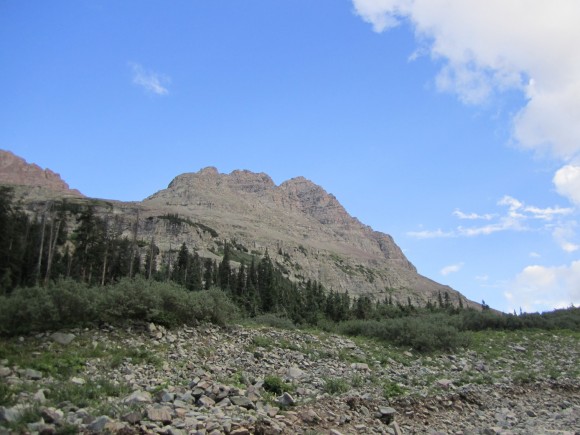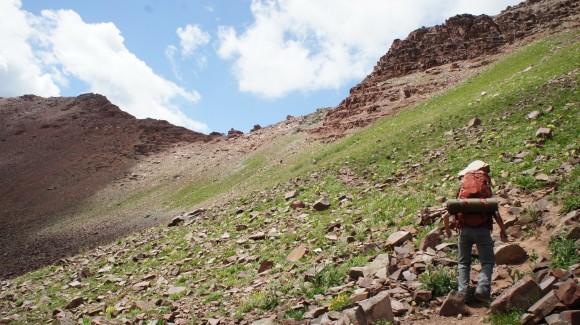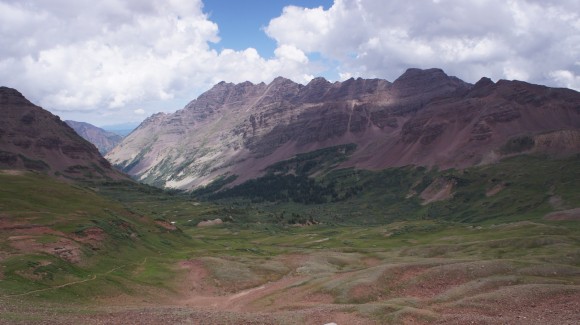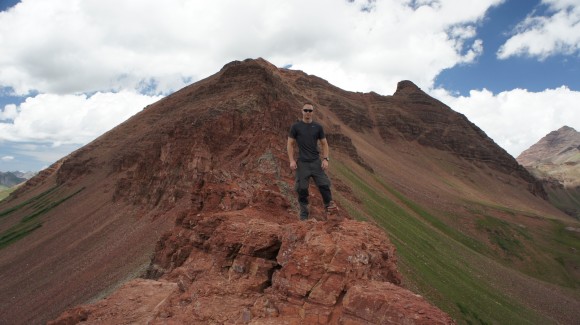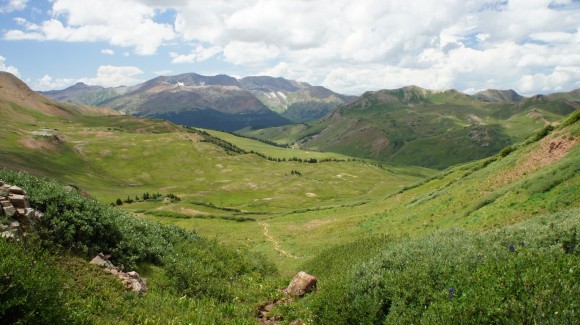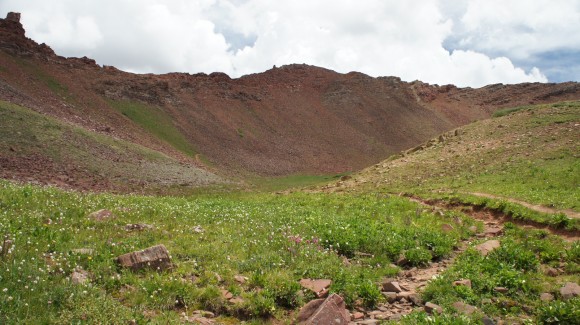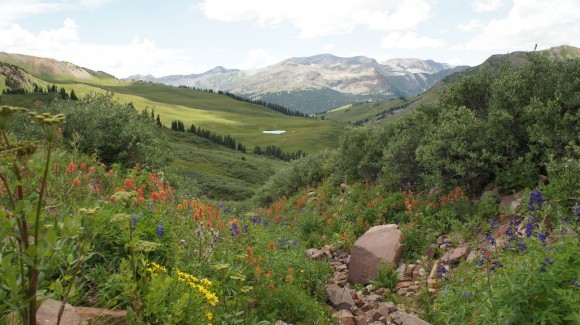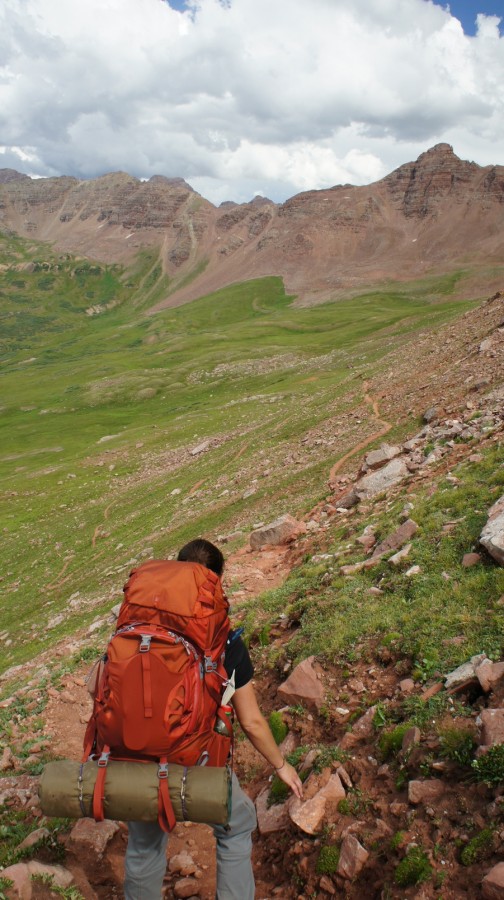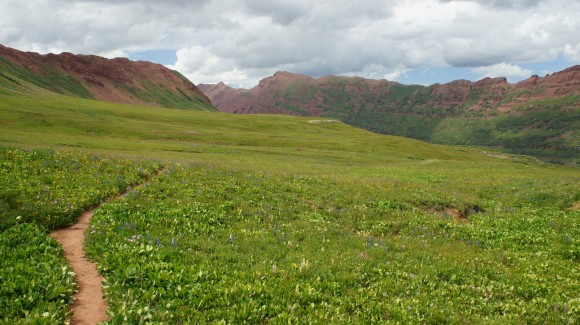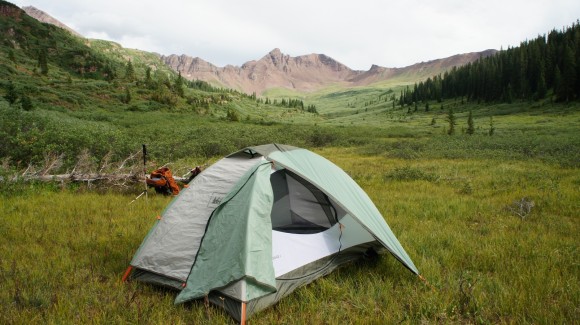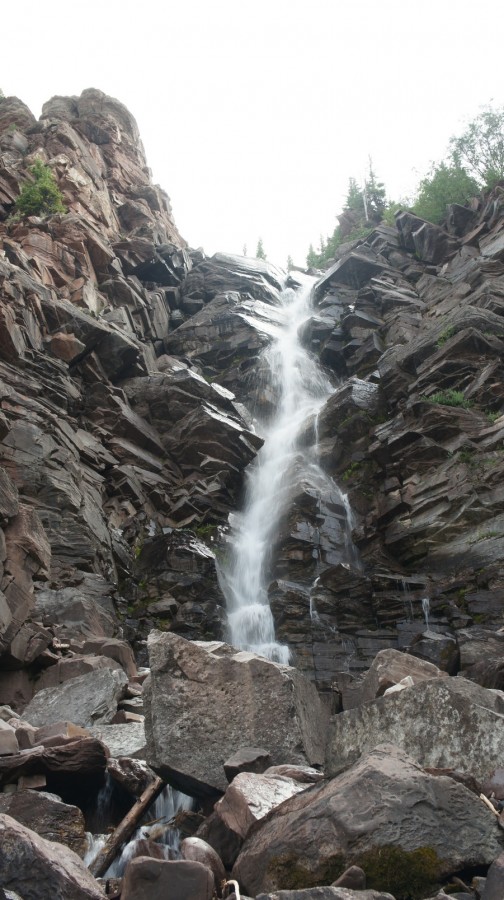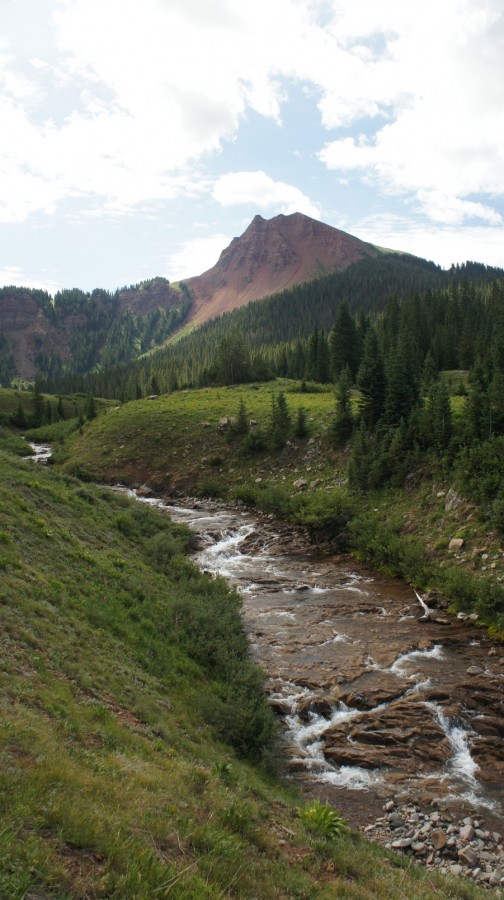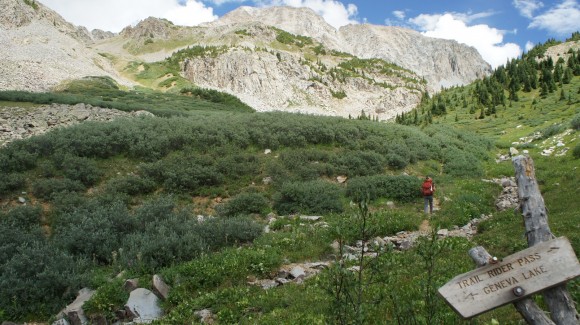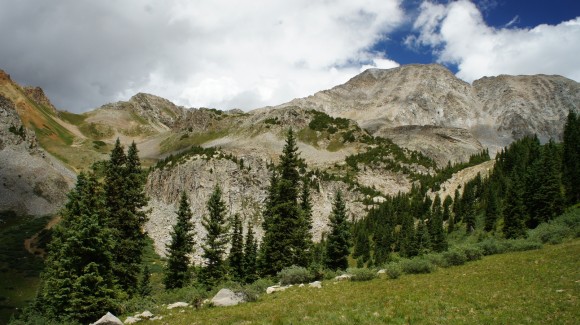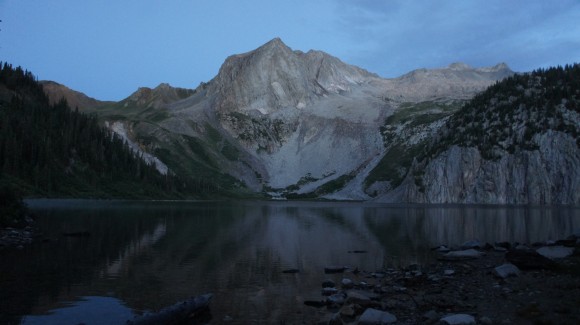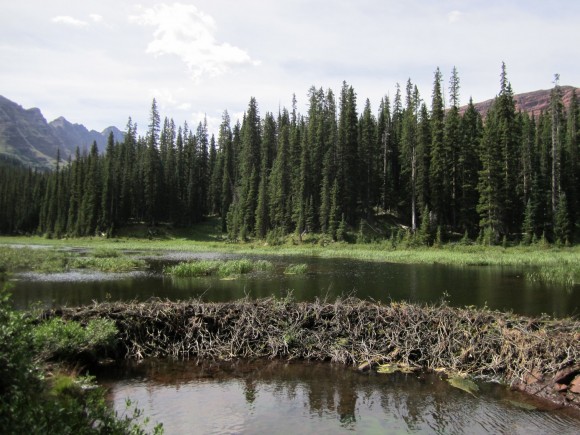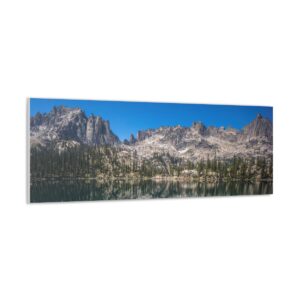CDT Section Hike 2021 – Never Summer Wilderness & Parkview Mountain
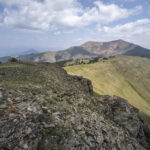
CDT Section Hike August 2021 – Rocky Mountain National Park, Never Summer Wilderness & Parkview Mountain, Colorado
-
- Hike Location – Rocky Mountain National Park, Never Summer Wilderness & Parkview Mountain, Colorado
- Land Administration – National Park, National Forest
- Hike Type – Point to Point
- Fees & Permits – No fees or permits needed (unless camping overnight in RMNP)
- Start Trailhead – Shadowcliff Hostel, Grand Lake
- End Trailhead – Forest Rd 104
- Length Of Time Hiked – 3.5 Days
- Miles Hiked – 60
- Route Difficulty – 4.5
- Scenic Beauty – 7.5
- Solitude – 8
Pre-Hike Planning Notes
I’ll be joining my friends Alex Maier and Amy Robin on their 2021 CDT thru hike as they walk from Grand Lake to Steamboat Springs. I’ve hiked this before myself on my 2018 CDT thru hike, and know it probably isn’t the highlight of the CDT. But, I wanted to join Alex and Amy for a section of hiking this summer and logistically, this is where it worked out for us both. I’ll have a friend pick me up along FR 104, south of Little Haystack Mountain. He’ll take me back to Grand Lake to get my van, where I parked it at the Shadowcliff Hostel, and I’ll follow him back to his place in Colorado Springs afterwards.
You’ll need a permit if you plan on camping overnight in Rocky Mountain National Park. But the RMNP section is only a few hours walk out of Grand Lake, and much of it has been burned recently in a fire, so you wouldn’t want to camp here anyways. Recent fires have also burned sections of the CDT south of Parkview Mountain. Much of this section has good trail and is a relatively easy hike.
Map of my CDT Section Hike:
Caltopo map of my CDT section hike from Grand Lake to, well, not quite Steamboat Springs
Download GPX file of this hike
Video: CDT Section Hike: Grand Lake to Steamboat Springs, Colorado
Day 1 – August 2nd, 2021
Miles Hiked – 12.92
Elevation Gain – 2973′
Route Hiked – Grand Lake to Upper Bowen Gulch
Let me start by backing up a bit. Two nights ago, my friends Alex Maier and Amy Robin hiked into Grand Lake. They have been hiking since April on the Continental Divide Trail, having started at the border of Mexico and New Mexico. This puts them roughly 1300 miles into their hike, with another 1700 remaining to the border of Canada. I completed the CDT in 2018, and now it’s my privilege to join Alex and Amy for a section of their hike this year. I had been touring the west for the past 6 weeks in my newly built camper van, and it’s here in northern Colorado that our paths cross this summer.
Alex is a documentary film marker, best known for his “Figure It Out On The Hayduke” movie. I really enjoyed Alex’s take on the benefits of being in the wilderness, and his ability to put profound concepts into clear, distinct words. So I was very interested in his latest project, “Mind Body Soul“. This project follow Alex and Amy’s 3,000 mile hike on the Continental Divide Trail, with a goal of exploring the effects hiking has on the mind, body and soul. Alex also has a youtube channel called Wilderness Mindset, where he shares high quality videos of his outdoor adventures and thru hikes.
We started the hike out of Grand Lake at Shadowcliff Hostel. Alex and Amy are also hiking with their two service dogs, Echo and Minnow. From here it’s a short walked through some burned forest. This had all burned since my visit here in 2018 on my CDT thru hike. The route I took before had us continuing north for a few more miles, but the trail was closed and we had to detour west. This led us back to HWY 34, the main road north/south running road in the area. And now it’s a few miles of road walking through Rocky Mountain National Park.
North of Onahu Trailhead, we leave the paved road for a dirt one. Life is suddenly more quiet and calm away from the traffic. We cross the Colorado River here, not all that far from its headwaters just 10 miles away, as the crow flies. We stop here for a lunch break along the banks of the river. This is nice. This brings back memories.
We leave the Colorado River behind and hike towards Bowen Gulch. We hike uphill though the the forest for a while and enter the Never Summer Wilderness. The trail is good and the grade is excellent for those long, continuous pushes uphill. This makes a 2,000ft climb like this one much easier.
The trees break as we reach the upper Bowen Basin area. We see a few moose in the area, and I remember seeing them here in 2018 too. This is their turf.
We found a pretty nice campsite with good tree cover not far off trail. The clouds moved in and out rapidly as the evening progressed.
Day 2 – August 3rd, 2021
Miles Hiked – 13.75
Elevation Gain – 2411′
Route Hiked – Upper Bowen Gulch to Willow Creek Pass
Last night we had a lot of animal activity. By the sound, they were large animals, and they were close by. We assumed moosr, since we saw several in the area lst night, and there were little trails leading through our general campsite area. One animal was probably only 4ft from my tent at one point.
After leaving camp, we still had a few hundred feet left to climb to reach the top of Bowen Pass. We saw a few more moose down lower in the valley. They really like this area.
West side of Bowen PassThe top of Bowen Pass was a bit of a let down, with all the fog around. This pass separates the Arapaho National Forest and Route National Forest though, so that’s something.
On the way down form Bowen Pass, we stop at a small creek for water. I remember stopping here for water too on my 2018 hike. I don’t remember the miles ahead being very memorable, though.
My memory served me right; the rest of the day was not that interesting. It had been raining on and off today, quite a bit in the afternoon. We were pretty wet and when we stopped, it was cold. We kept our breaks short and kept moving.
Later this afternoon, we hiked through several large burn areas. I didn’t take any photos here, apparently. It was pretty bleak looking, but very easy to walk. The terrain was pretty open and free of vegetation, and some erosion was starting to occur as a result.
We found camp above Willow Creek Pass. Nothing special, but campsites on the CDT seldom seemed special to me. This fits my recollection of CDT camping perfectly; a subpar campsite that looks a lot better at the end of a long day.
Day 3 – August 4th, 2021
Miles Hiked – 14.26
Elevation Gain – 4523′
Route Hiked – Willow Creek Pass to Poison Ridge
We got clobbered with rain last night. It was coming down heavily. Probably heavier than any single rain event on my entire CDT thru hike in 2018. But it barely rained at all on my 2018 hike. Now, I’m getting the full Colorado experience here.
We pack up camp wet this morning and hit the soggy trail. We emerge from the forest and find ourselves at the bouldery base of Parkview Mountain. We skirt this base and begin our ascent of Parkview as we punch through the clouds.
The weather is weird today; low clouds that rapidly come and go, alternating periods of high winds and total silence. Once we gain the crest of our first ridgeline, we get above the clouds for the first time. Well, we’re hiking in them now, too. It’s sunny and clear blue skies one minute, and within seconds, a big cloud blows in and visibility goes down to mere feet. It’s wild, and pretty damn cool.
The hike up the ridgeline is great. I enjoyed it in 2018, when the views were wide open and vast. But I enjoyed this more. Alex and Amy hadn’t had any days like this either on their CDT hike this year up to this point.
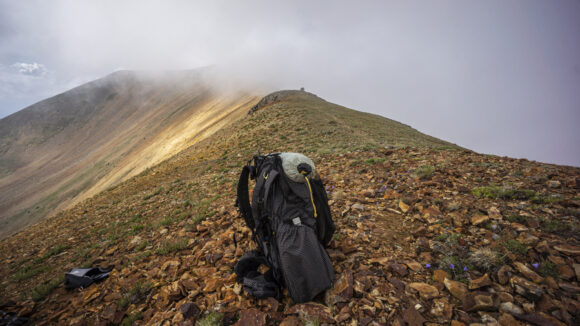
Optimism has my tent on the outside of my pack today, hoping it will dry out after last night’s rain
Conditions continue to change second by second and keep us on our toes. But, there seems to be no threat of rain. We take our time heading up the mountain now, as the 3 of us are all photographers. We are sidetracked with the constantly changing lighting, mood and landscapes!
We reach the summit of Parkview Mountain mid-day. For northbound CDT thru hikers, Parkview Mountain is the last 12k peak they will encounter. Unless you do the Wind River Range High Route alternate, and you’d be a FOOL not to! Just saying. We take lunch inside the shelter and enjoy the wind break. I’m sure the rodents would be an issue if one tried sleeping in here. The dogs were going nuts trying to get at them while they scurried around underneath the shelter.
We begin the descent down Parkview Mountain by doing exactly what I did in 2018; taking a wrong turn here and walking down the obvious looking ridgeline. While there is good trail leading this way, and good views too, the correct route was to take the ridge to the west. This was a dumb mistake, and even dumber because I made it twice.
Back on trail now, CDT signs and posts lead the way. The hiking here is excellent, just as I remembered it from 2018. It’s not the most scenic place you’ve ever been, but it has a simple beauty to it. It’s mot going to wow you, but it’s extremely pleasant. You just feel good being here.
We get some distance from Parkview Mountain and watch it become smaller on the horizon. It’s also an excellent backdrop now to the scenic ridge we’re hiking.
Next, we hike around Haystack Mountain. The trail drops down off the ridgeline about 450ft and contours around the east side of Haystack at the 10,200 mark. This section had a few downed trees and minor obstacles, but nothing too bad.
We cross Troublesome Pass and keep hiking towards Poison Ridge. The sun is getting lower in the sky and it’s time for camp. We find a pretty nice spot with an elevated view over Sheep Creek. With the full sun of the afternoon, we have been able to fully dry out our gear. What a great end to a day that started out wet and dreary.
Day 4 – August 5th, 2021
Miles Hiked – 15.47
Elevation Gain – 3075′
Route Hiked – Poison Ridge to FR 104
This morning’s hike was nice. Clear skies and sun, good trail and good views. Again, this area is not spectacular. But it’s enjoyable. I felt good being here. However, today is the day I’ll meet up with my friend who will pick me up somewhere along FR 104. And so, after a few hours, I say goodbye to Alex and Amy and hike ahead. I’m slightly behind schedule now, and increase my pace to make up for the time. I don’t want to keep my friend waiting any longer than he has to, he drove quite a long ways to meet me out here.
The ridgeline hike continues to be enjoyable. Eventually though, it’s time to drop down to Middle Fork Arapaho Creek near Hyannis Peak. It’s here that I run into another moose along the trail. Fortunately he went on his way, and I could keep running down the trail. And that’s what I was doing now, jogging where possible.
I climb out of Middle Fork Arapaho Creek to the ridge on the south side of the canyon. This is FR 104, the 4×4 road I have been shooting for. The spot my friend and I chose was a little farther downhill, so head that way. The road looks pretty good here, but I have a feeling it’s rough lower down the mountain. I get a brief moment of cell service and call him. He’s about 6.5 miles downhill from here, but the road is really rough. I get going to try and knock out these final miles as fast as possible.
I hike another hour or so, and was surprised to see my friend’s Subaru coming uphill. He was able to keep driving since our last call, but as rough as the road was here, I was not expecting him at all. So that saved me about 3 miles of the 6.5. But I would not recommend driving on this road without a high clearance vehicle!
That’s it for this hike. What’s next? I have a killer Wind River Range hike planned for next week!
Sawtooth Wilderness, ID High Route – 8 Day Solo Hike Aug 2017
Sawtooth Wilderness High Route – 8 Day Solo Hike August 2017
View All Sawtooth Wilderness Photos | Watch the Sawtooth Wilderness Hike Video On Youtube
- Park Administration – National Forest Service
- Fees & Permits – No fees to access the Sawtooth Wilderness. You need a permit which is FREE. Permits are available via self-registration at the trailheads.
- Trailhead – Tin Cup Trailhead at Pettit Lake
- Length Of Time Hiked – 8 Days, 7 NIghts
- Miles Hiked – 67
- Route Difficulty – On marked trails, 6. Off trail sections, 9
- Fires Allowed – Yes, on a fire pan or fire blanket. Campfires are not allowed: Off-trail from July 1st through Labor Day. In the following drainages: Alice/Twin Lakes, Toxaway/Farley Lakes, Goat Creek (tributary of the South Fork of the Payette River), or Alpine Creek. Within 200 yards of Sawtooth Lake, Goat Lake and Alpine Lake near Iron Creek, Alpine and Saddleback Lakes in the Redfish drainage, and Scenic Lakes.
- Scenic Beauty – 9
- Solitude – 4 on Trail, 9 Off Trail
Sawtooth Wilderness Pre-Hike Planning Notes
Actually, the route I set out to hike was much longer, closer to 90 miles and over 25k feet of elevation gain. Averaging 8517′ over 89 miles, I called it “The Ultimate Sawtooths High Route”. Over 50 miles of the 89 mile route was off trail. A route like this would have a lot higher chance for successful completion if one had firsthand knowledge of what to expect in key sections. I didn’t have that luxury though, this will be my first visit to the Sawtooths, and first to the sate of Idaho. I will be sharing more info on the Ultimate Sawtooths High Route later on.
My goal with the route was to to stay as high as possible, while hitting as many of the places I could that were on my “must see” list. As far as planning a hike goes in the Sawtooths, you’ll find information from scattered sources online but there is no dedicated forum or “go-to” resource for the Sawtooths. I gathered what info I could about my route between trip reports and pictures, google earth, and studying the topo maps to create the route.
Sawtooth Wilderness Weather Forecasts
For weather in the Sawtooth Wilderness, I was using mountain-forecast.com for Mount Cramer:
https://www.mountain-forecast.com/peaks/Mount-Cramer/forecasts/2500
Sawtooth Wilderness Backpacking Maps & Route Information
Here’s my caltopo map I used to plan my route:
Download GPX file of this hike
Day 1 – Friday August 18th, 2017
Miles Hiked – 6.35
Elevation Gain – 2090′
Route Hiked – Pettit Lake to Alice Lake
The road to Pettit Lake from ID-75 was well graded and in great shape for a dirt road. I was driving a Chevy Cruze, and wouldn’t hesitate to take the smallest car. High clearance not need whatsoever. I arrived at the Tin Cup Trailhead (located at Pettit Lake) around 6pm, and man was it packed. I was able to find a spot, but there were’t many left if any at all. I changed clothes and did my final packing, and was on the trail at 6:30pm.
My destination tonight is Alice Lake, hopefully. I have 2.5 hours of daylight max to work with, better get moving. I quickly passed several groups of hikers, walked past the lake and hit the Wilderness Boundary sign. Here is where you self register for your permit.
The trail is mostly forested for the first few miles. Eventually, it emerges into a couple of open areas where boulders and talus have spilled down the slopes above. Hiking is still easy through these sections because this is such a well traveled trail, and in great shape. Once the first set of switchbacks are encountered, roughly half the way there to Alice, you start to get some nice elevated views. The Sun was already going down fast at this point.
The hike to Alice Lake was pretty nice for a day 1 hike. Normally, the trail taking you to the high country is in a low valley, long and rather uneventful. I would say the trail to Alice Lake is much more interesting, and if nothing else, shorter than many of the approach hikes I’m used to.
Right before I reached Alice Lake is a couple of small ponds, with great views and lots of people already camped there. Farther up the trail, at Alice Lake proper, I was again out of luck finding a campsite in a prime location such as the outlet. With the Sun fading quickly I hurried on farther along the lake. The trail starts to climb above the lake offering no viable campsites.
Towards the center of the lake, at a point where the trail had veered farther from the water, I found a place to hang my hammock. Not the most scenic spot, but who cares, it was already time to bust out the headlamp. Nothin’ to see here tonight. No need to use the tarp over my hammock, skies are looking clear and will remain so for the next couple of days according to the weather forecast.
I arrived at camp around 9pm, and after setting up headed to bed at 10. I’ve got a long week ahead of me!
Eagles Nest Wilderness (Gore Mountains), CO – 4 Day, 25 Mile Hike July 2017
Eagles Nest Wilderness, CO – Gore Mountains 4 Day Backpacking Trip July 2017
View All Eagles Nest Wilderness Photos | Watch the Eagles Nest Wilderness Hike Video On Youtube
- Park Administration – US Forest Service – White River National Forest
- Fees & Permits – No fees to access the Eagles Nest Wilderness. Register at trailhead (although I didn’t see where!)
- Trailhead – Gore Creek Trailhead
- Length Of Time Hiked – 4 days, 3 nights
- Miles Hiked – 25
- Route Difficulty – 7.5
- Fires Allowed – Yes
- Scenic Beauty – 9
- Solitude – 7, less within 4-5 miles of trailhead
Eagles Nest Wilderness Pre-Hike Planning Notes
Gore Mountains Weather Forecast
– https://www.mountain-forecast.com/peaks/Buffalo-Mountain/forecasts/3894
Gore Mountains Road & Trail Condition Reports
– https://www.fs.usda.gov/Internet/FSE_DOCUMENTS/fseprd542981.pdf
The Eagles Nest Wilderness is a 133,496 acre tract of land located within the White River National Forest. The Gore Mountains are the backbone of this wilderness area. It’s right off I-70, giving you the impression that it’s going to be a popular, well known hiking destination, but it’s not. Apparently, this area doesn’t get much use in comparison to other Colorado backpacking hotspots. One reason for this is the fact that there are no 14ers in the Gore Mountains. Don’t let the lack of notoriety fool you, as the Gore Mountains are definitely a hidden gem.
The first thing you need to realize about hiking the Gore Mountains is that it’s a rugged place with a lot of steep terrain. Because of this, many of the valleys are “dead ends” for the average hiker, and some are completely unpassable by all except the most skilled climbers. Stringing together a long hiking route that stays high is pretty difficult here. To make long loops, you either have to be OK with spending a lot of time in the lower valleys or be a really good climber.
Access to the Eagles Nest Wilderness is said to be easier on the west side near Vail. See this map for trailhead locations in the Eagles Nest Wilderness. I parked at the Gore Creek trailhead, 2.3 miles east of Exit #180 off I-70 on Bighorn Road. This road to this trailhead is completely paved, so you can access it in any vehicle. Watch out for all the bikers on the road, there’s a tons of ’em here. Coloradans are probably used to seeing this many cyclists, but here in southeast Michigan the only people riding bicycles on the road are doing so because they have a DUI! The Gore Creek trailhead was pretty packed but many of them were bikers, not hikers.
Nearby towns of Vail, Silverthorne and Frisco should have everything you need for last minute stops. Also note that you can get a shower after your hike for $5 at the Silverthorne Rec Center if needed. The address for the Silverthorne Rec Center is 430 Rainbow Dr, Silverthorne, CO 80498.
Eagles Nest Wilderness Backpacking Maps
[sgpx gpx=”/wp-content/uploads/gpx/EaglesNestWilderenssJuly2017.gpx”]Download GPX file of this hike
Here’s my caltopo map of the route I hiked:
Day 1 – Saturday July 8th, 2017
Miles Hiked – 6.54
Elevation Gain – 3058′
Route Hiked – Gore Creek Trailhead to Gore Lake
I started my hike at the Gore Creek trailhead (8688′ elevation) around 10:15 am, just in time for a few clouds to start brewing. The trail immediately begins to climb after leaving the trailhead. The trail itself is pretty well maintained here. There’s a sign marking the entry to the Eagles Nest Wilderness after about 1 mile. Once you pass the sign, the trail goes over the top of a small hill where you lose sight of I-70. The sound from the road is also gone, and replaced with that of Gore Creek. The trail winds through a few patches of aspens before the evergreens become the dominate tree with increased elevation.
The crowds of people started to thin out about two miles from the trailhead. Most of the people on the trail were older folks, and seemed to be locals coming out to get a few miles in for exercise. I stopped along a slow bend in Gore Creek after an hour to eat a little food. I didn’t see any fish, but it looked like there would be potential if one were to walk the bank looking for deeper holes.
There were few sweeping views of the valley, and the trail only occasionally swings alongside Gore Creek. The trail maintains a pretty manageable incline much of the way to the intersection with Gore Lake trail, with occasional steeper bursts. I passed a guy who said he’d just seen a large bear at the intersection, which I arrived at about 10 minutes later. No bear, fine with me.
At the intersection of Gore Creek trail & Gore Lake trail, the elevation is 10,180′. AT this point, the elevation gain is roughly 1800′ (with the ups and downs of the trail) over 4.15 miles. Now on the Gore Creek trail, I’ll climb 600’+ in about a half mile. There’s a little view of the valley below after gaining a little elevation. The trail then overlooks a creek, although don’t believe it’s the main creek flowing out of Gore Lake. I saw my first patch of snow around 10,700′.
At the top of the 600′ push I was rewarded with a nice meadow. It was flat, open and green, the first of the hike. It sprinkled a little now, but not heavy enough to be a bother. The views were definitely improving now. In the meadow, jagged peaks and snow capped mountain sides loom in the distance. There were some small patches of colorful flowers here and there, still a ways off from peak bloom though.
After passing through the meadow, the trail then climbs another 500′ in .6 mile along the final stretch to Gore Lake. I enjoyed the final approach to the lake, where your view of a nearby peak is hidden and then revealed as you crest the top of the final slope. A somewhat “dramatic” way to arrive at such a beautiful lake!
Pinto Valley Wilderness, NV (LMNRA) – 3 Day 25 Mile Loop Hike March 2017
Backpacking The Pinto Valley Wilderness, Nevada (Lake Mead National Recreation Area)
View All Pinto Valley Wilderness Photos | Watch the Pinto Valley Wilderness Hike Video On Youtube
- Park Administration – National Park Service (Lake Mead National Recreation Area)
- Fees & Permits – No fees or permits to access the Pinto Valley Wilderness, but there IS a fee to enter the Lake Mead National Recreation Area (in which the Pinto Valley Wilderness is located)
- Trailhead – Northshore Summit Trail parking lot off Northshore Rd.
- Length Of Time Hiked – 3 days, 2 nights
- Miles Hiked – 25
- Route Difficulty – 6.5, except where on descent into Pinto Valley near the “choke point” on my GPS file where it’s an 8.5
- Fires Allowed – Yes, but only if you bring your own, or use driftwood below the high water line of Lake Mead (which is not nearby)
- Scenic Beauty – 9
- Solitude – 8
Pinto Valley Wilderness Pre-Hike Planning Notes
The Pinto Valley Wilderness is relatively new, only being designated a wilderness in 2002. Therefore there are not a whole lot of references to this wilderness online. Many people just refer to the area as the Lake Mead National Recreation Area, which is technically also correct since the Pinto Valley Wilderness is located within the LMNRA.
The northern boundary of the Pinto Valley Wilderness is Northshore Rd, and this is pretty much the only place to park unless you have a 4×4. Here, there are several pull-offs along the road where you can park for a day hike. But what about overnight hikes? Well, you aren’t supposed to park in the pull-offs overnight, and even that was OK with the park service, would you want to leave your car there? Probably not. For me, the only real option was parking in the Northshore Summit Trail parking lot. It’s located approximately a half mile east of mile marker 20 on Northshore Rd. The southern boundary of the wilderness is Lake Mead, the western border is Callville Wash Rd and the eastern boundary is Boathouse Cove Rd. Also not that Boathouse Cove Rd separates the Pinto Valley Wilderness (39,173 acres) from the Jimbilnan Wilderness (18,879 acres) to the east. You can access the Pinto Valley Wilderness from the east, west and southern boundaries, but by far the easiest is Northshore Rd.
Water sources in the Pinto Valley Wilderness are limited. While there are likely other water sources located in the Pinto Valley Wilderness, the two most prominent sources (from my pre-hike research) are Sandstone Spring and Cottonwood Spring. I did not make it to Sandstone Spring to check if it was flowing. I passed by Cottonwood Spring, but did not search for the source. I did see that an animal had dug down into the wash near Cottonwood Spring and there was a pool of water about 6 inches down. Neither one of these springs are reliable enough to count on as a easy water source (you might have to dig for water). Pack in all water you will need for this hike and assume you will not find any!
It does not appear that backcountry camping is very popular in the Pinto Valley Wilderness. The lack of trail heads with overnight parking, marked trails and water sources seem to indicate that most people use the area for day hikes. However, the off-trail enthusiast will find that the Pinto Valley Wilderness provides some excellent 2-3 day hikes to those willing to haul their own water.
Pinto Valley Wilderness Backpacking Maps
[sgpx gpx=”/wp-content/uploads/gpx/PintoValleyMar17RouteHiked.gpx”]Download GPX file of this hike
Here’s my caltopo map I used to plan my route:
Day 1 – Saturday March 25th, 2017
Miles Hiked – 8.26
Elevation Gain – 1228′
Route Hiked – Northshore Summit Trail parking lot to Pinto Valley near Sentinel Peak
Dan and I spent the previous day in the nearby Valley of Fire State Park, and camped in the Arch Rock campground. From here, it was about a 30 minute drive to the Northshore Summit trail head. It was cloudy this morning and was sprinkling when we were packing up our gear, but that quickly faded away. The drive along Northshore Rd was very scenic, and worthy of spending some time here by itself. However, we did not have the extra time, and drove directly to the parking lot.
When we arrived at the Northshore Summit Trail parking lot, we were the only ones there. Good sign. Yesterday, Valley of Fire State Park was packed. There’s a bathroom and garbage cans here, but that’s it. We left the parking lot around 9:30am and started walking east on Northshore Rd. While road walks are never ideal, this was the best route I could come up with that fit together a starting point, the destinations I wanted to hit and the time frame. Despite walking this paved road for 2 miles, it was beautiful country. Big views to the north, looking across Bitter Spring Valley.
After 2 miles, we reached a pull-off where another vehicle was parked. Here, we leave the road and head south towards the Pinto Ridge. We hiked up over a small ridge to start the climb up. The terrain is pretty jagged here, with lots of sharp rocks. As we climbed up the ridge, I came across a turtle shell. The turtle itself was long gone, but the shell was an interesting find. A few hundred feet farther and I saw a second shell.
Farther up the ridge, the path narrows as we reached the top of the “pass”. The vegetation was a little greener, thicker, and thornier here. Lots of wildflowers in bloom, and some of the cacti as well. There’s not much of a view form the high point, but this changes as you descend into Pinto Valley.
The descent from the top is pretty gradual at first. We could tell there was a steeper section ahead, which I anticipated. Now the views of Pinto Valley were materializing, and they were impressive. However, the immediate problem was the terrain that lies between us and the valley below. The steepness would have been enough to worry about, but of course, loose rocks and debris compounded the difficulty. The angle was such that you could grip decently walking down slowly, but only just. Any steeper and this would have been questionable. I crab crawled in a few spots after watching Dan fall a couple of times.
It took a good amount of time to safely work our way down this steep slab, only to be led to a choke point… a couple of boulders wedged between the steep, narrow canyon walls. There’s no easy way to climb down it, but there’s a route around it. Backtrack about 50 feet from the boulders and go up a ridge on your left (to the east). Here, there’s a more manageable route down and the rest of the way is less frightening.
Now down off the worst of Pinto Ridge, jumped down into one of the two washes, which merge, and headed out into the valley. It’s a whole new landscape here. In the wash we could see chunk of earth pushed upright, with a variety of layers visible. This isn’t solid rock like granite, though. It’s made up of compacted, crumbly dirt and smaller rocks.
After emerging from the wash, we found ourselves in the expansive Pinto Valley. Sentinel Peak was in front of us, dominating the view with shades of orange and red. We decided to camp here, on the north side of the valley, so we could have a good view of Sentinel.
We found a couple of flati-ish spots and cleared the sharp rocks to make way for our tents. The view was great, but there’s no shade anywhere nearby. After setting up camp, we took a break for lunch. Afterwards, Dan rested while I took some pictures.
After our break, we headed over towards Sentinel in an attempt to climb to it’s summit at around 2:30pm. The path to Sentinel from our camp involved dropping down into and climbing out of several washes along the way, before finding the main wash that runs through Pinto Valley. We took this to the Base of Sentinel where the route I had planned begins. The path up to the top was not very obvious from here, so I was hoping the track I created in Caltopo, based off someone else’s route up Sentinel, was accurate.
We started climbing up Sentinel, and quickly found the most promising route to be blocked by a huge boulder. We moved farther east and started uphill here. Dan wanted to go right up the mountainside whichever place looked easiest from his point of view, while I wanted to try and stick to the GPS route I created ahead of time. We both pursued various route options but keep finding ourselves in tough spots. I ended up breaking one of my Gossamer Gear LT4 trekking poles, again. Looking back, I think I’ve broken more of these poles than I have completed hikes with them. I don’t think I can use those poles anymore, need something beefier.
The climb was a lot harder than we anticipated. While we probably could have made it to the top and back to camp if we continued, we decided that it was getting late in the afternoon and didn’t really want to be getting back right at dark or after if the route continued to be as challenging. We turned around and headed back to camp, somewhat defeated. At least there’s Hamblin Mountain tomorrow, which should have an easier route up.
While we walked back to camp in one of the washes, we saw what looked to be bobcat tracks and poop. We saw lots of similar tracks throughout our hike, but of course, never saw anything.
When we got back to camp we still had no shade. Dan set up his emergency blanket (he was using it as a footprint under his tent) as a lean-to, and we had a nice shaded spot to escape the sun for a while.
There was a TON of plane and helicopter traffic overhead in this region. Commercial planes I understand as we’re not that far from Las Vegas. The helicopter though, I don’t understand why there were so many. Throughout the day we saw a couple per hour. Right before nightfall, I saw 6 in row, flying the same flight path spaced about 1 minute apart. Maybe some sort of training exercise?
Looking to the east, the views of Sentinel and the mountains beyond were colorfully illuminated by the sun now. To the west, the distant landscape looked lush and green as the sun shined on it, although it in reality the vegetation is much more sparse up close. Dan said it looked like Jurassic Park. I watched the sun set and headed to bed shortly after.
Day 2 – Sunday March 26th, 2017
Miles Hiked – 9.88
Elevation Gain – 2173′
Route Hiked – Pinto Valley near Sentinel Peak to Pinto Valley Castle
It was a calm night with no animal sounds or high winds. The only sound I could hear was Dan snoring, as we set up our tents a little too close together. I got up around 6:30 to watch the sunrise, and tried to wake Dan. Of course, Dan continued to sleep and didn’t get up until 7:30 or later.
While Dan wrestled with the agony of leaving his tent, I sat on a small hill near camp and took some pictures. The sunrise was not very impressive from this spot though as it was so high in the sky by the time it peaked out over the top of Sentinel Peak. I was already packed and ready to go by the time the sun rose and Dan finally left his tent.
We broke camp around 8:30, following the nearest wash to the main wash running through Pinto Valley. Walking in the washes is the easiest route through Pinto Valley. This is not because the terrain outside of the washes is difficult, but because the washes are cut steeply and often deep into the surrounding earth. Hiking in and out of them gets old after a while.
Hiking the main wash was very easy. We made good time as we traveled west through Pinto Valley. We passed an outcrop of rocks and boulders that people have been signing their names on for years, dating back to the 1920s. Even though some of the writing is nearly 100 years old, it still looks brand new. Is is really that old then? Surely they would have been weathered somewhat in 100 years, right?
West of the rocks with writing along the main wash, we could start to see the colors of Pinto Valley Castle in the distance. Soon we left the main wash, and headed up another wash towards Pinto Valley Castle. This is a really interesting area, visually and geologically. Lots of upheaval going on, exposing many different layers of sediment. Small patches of “badlands” can be found all over here too.
Pinto Valley Castle was impressive. Erosion has shaped the walls of PVC in an unusual way, with sharp edges and symmetry. The top is made up of some lighter colored sediment, while the bottom is comprised of a contrasting red color.
After heading general north for a while through the Pinto Valley Castle area, we abruptly turned west after passing by PVC. After hiking through a small patch of badlands, we noticed an obvious path up one of the ridges, which led us to the top of a small pass. This is the general area I wanted to camp, since it looked so colorful from the satellite maps I studied before coming out here. It certainly lived up to the hype I had in my mind. Now, we just needed to find a place to set up camp.
Coming down from the little pass, we followed an obvious path down and along the side of the high ground. This path appeared to be an old mining road or something. We followed it a short ways before find a couple of small flat areas for our tents. Excellent views, and enough space to spread out more than we did last night.
After setting up camp and eating lunch, we headed out to climb Hamblin Mountain. From camp, it appeared that there was a high and low path to take. We opted to take the high ground since we were already up here. This path led us generally where we wanted to go, but then started curving south. We backtracked a little and realized we had to go over a ridge to get to where we wanted to go. We should have taken the low ground from camp as it would have gone around this ridge, but I didn’t realize that at the time.
We followed the ridge for a while looking for a weakness. After a short but steep climb over it, we still didn’t see an obvious route to follow. We headed down hill and along the top of a very deep cut wash below. On the other side we could see a trail, but we needed to cross this wash. We found a spot to descend, and even saw a cairn in the wash. We figured we were on the right path now.
The land was changing from red washes and badlands to green, rocky mountainous terrain. We followed our new trail up a ridge and along the mountainside. The path was very narrow and barely cut into the steep slopes. Eventually this path merged with a larger one, and it was much easier to follow from here on out. We hiked a short ways before seeing a path that led down into the wash below, which looked easier and more direct than the route we took up here. We noted this and decided to go this was on the descent.
Next we encountered are first humans of the trip, a couple from Henderson, NV who a had just left the summit of Hamblin Mountain. We chatted for a few minutes and parted ways, knowing they had only been hiking 25 minutes from the top. I was really looking forward to this view!
The hike up was not technically challenging or particularly steep, but there were a few false summits. Really great views as your near the top. Not far from the summit, we passed an older couple from Colorado making their way down. The woman seemed bewildered that we had “large” backpacks on, and asked if we were camping at the top. Ha, nope. Just carrying our water, snacks, camera gear, etc.
We had the summit of Hamblin Mountain to ourselves when we made it up here at 2:30. It had taken us 2 hours from camp. From the top I could see Lake Mead, Bowl of Fire, Sentinel Peak, Pinto Valley and all the other landmarks for many miles. Las Vegas lies hidden from view in a valley, but beyond that the snow-capped peaks of Mt. Charleston can been seen. Several USGS markers dot the summit as well as a summit log/register.
We stayed on the summit for about an hour taking pictures and soaking in the view. However, we were also soaking in quite a bit of sun, and with no shade, it was time to head back to camp.
Dan went ahead of me as I snapped a bunch of pictures on the way down. For some reason, I enjoyed the view better going down than up.
Before we knew it, we reached the path that leads down into the wash that we noted on the way up. We headed down here and found this route to be quite obvious, and in fact, the actual route. The first trail we found on our way up was actually an alternate route the just happened to meet up with this main trail. This was confirmed by passing the same cairn that we passed in the wash on our way up. We originally thought the cairn marked the way to the main path that we took, instead, it marks the main path which we crossed right over without realizing.
Our path in the wash was leading us directly back to camp now. We passed the junction of the old 4×4 road that passes by Cottonwood Spring and heads out to Northshore Rd. This would be the route the day hikers would have taken, parking at a pull-off along the highway. We walked past this junction and the path led us right back to camp in a very direct way, much more so than the way we took up the mountain. We made it back to camp in only 1 hour from the top of Hamblin, half the time it took to reach the top.
Back at camp, we sought out the only shade around and exploited it for a while. Having not eaten anything since noon, which was just some snacks, I devoured my bacon & cheese wrap for dinner. Dan was running lower on water than I, so I gave him a half liter. That’s about all I had left myself when I went to bed.
Dan was whooped and went to bed at 6pm. With another hour and a half of daylight left, I couldn’t do that. I found a decent spot to sit and wait for sundown. Several bats were out at dusk, and flying closely overhead too.
Day 3 – Monday March 27th, 2017
Miles Hiked – 4.99
Elevation Gain – 531′
Route Hiked – Pinto Valley Castle to Northshore Summit Trail parking lot
I woke up at 5:45 this morning. From my tent I yelled, “Hey Dan, time to get up”. To my surprise, he actually did get up without any additional prodding. That’s good, because I have a plane to catch at 12:45pm this afternoon, and we need to hike back to the car, drive back to Vegas, get some food and clean up. Originally I planned to hike an off-trail route back to the car, but worried about time, we opted to take the route the Hamblin Mountain day hikers use to get to Northshore Rd, then road walk a few miles back to the car. This would be the safest route from a time perspective.
We packed up quickly this morning and were moving by 6:30. We took the low ground this time for a direct route to the junction with the old 4×4 road, now called the Cottonwood Wash Trail.
Hiking the Cottonwood Wash trail was easy. Some spots were more narrow than others, and made you wonder how a vehicle passed through. Much of it is wider though. This road would have been in use up until 2002 or prior, when the area was designated as the Pinto Valley Wilderness.
A lone Cottonwood tree stands in the middle of the wash at Cottonwood Spring, hence the name. I did not see an obvious source, but I didn’t look around much either. There were lots of thick, green shrubs and bushes in some areas, an indicator of water, but I had no desire to wade through them looking for water. We did see a small hole dug in the middle of the wash with water about 6 inches down, but no natural emergence of water to the surface.
After leaving Cottonwood Spring, we headed down the home stretch. This was offered the same interesting geological features as others, a variety of rock and sediment layers exposed by upheaval.
When we reached Northshore Rd, we headed east. We still had about 3 miles to cover before getting back to the parking lot. I didn’t even mind walking the road so much since the views were so great. It was a steady incline the rest of the hike back.
We reached the Northshore Summit trailhead at 8:30, plenty of time to take care of my pre-flight needs. Another successful adventure under the belt.
Final Thoughts About Hiking The Pinto Valley Wilderness
This place exceeded my expectations. It’s uniquely colorful, and an all around cool place. Access is tough and some of the off trail segments can be challenging. Lots of aerial traffic remind you of how close this place is to civilization, yet we still felt solitude. Especially at night. The nights were calm and silent, with no animal sounds. We saw few animals the entire trip, just a couple of chipmunks and birds. The vegetation wasn’t too thick or thorny overall, only a few short spots where we encountered that. We saw no snakes or spiders, just a couple of butterflies and a beetle. I was expecting wildlife to be a little more active this time of year.
Camp on our second night was my favorite. You can’t go wrong pitching your tent anywhere near Pinto Valley Castle in my opinion. Hamblin Mountain is an easy hike with a great view, and would make a great day hike (as the two couples we passed had done).
10 Day Sierra Loop Hike – Kings Canyon NP & John Muir Wilderness – Aug 2016
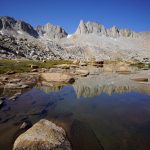
Kings Canyon National Park & John Muir Wilderness 10 Day Loop Hike Starting From Florence Lake
All Photos From This hike | Watch the HD video of my Sierra hike on Youtube
- Location – Sierra-Nevada Mountains, CA
- Park Administration – John Muir Wilderness, Kings Canyon National Park & Inyo National Forest
- Fees & Permits – $5 for a wilderness permit, required for overnight camping
- Travel Logistics – Flew into Fresno, rented a Chevy Sonic for the drive to Florence Lake
- Trailhead – Florence Lake
- Length Of Time Hiked – 10 days, 9 nights
- Miles Hiked – 95
- Trail Type – Loop, 50/50 mix of on and off trail hiking
- Route Difficulty – 8
- Fires Allowed – Only below 10,000ft
- Bear Canister Required? – No, not along my route. See map of where bear canisters are required in the Sierras
- Scenic Beauty – 9
- Solitude – 6
Kings Canyon/John Muir Wilderness Loop Hike Maps & GPS Files
[sgpx gpx=”/wp-content/uploads/gpx/SierrasRouteHiked2016.gpx”]
Pre-Hike Travel Logistics
To access the Sierras, one typically enters on the east of west side. People have mentioned using the town of Bishop as access from the east, but I chose to fly into Fresno, rent a car, and drive in from the west.
There are few direct flights to Fresno, so from Detroit I had to stop in Dallas. The problem was, bad weather in the Dallas area when it was time to leave, lots of red on the radar. We sat on the tarmac in Detroit for an hour before taking off, then we got diverted to a small airport in rural Arkansas to wait on the tarmac there for another 2 hours. Apparently, the entire DFW airport had closed down for a while due to the storm. By the time I landed in Dallas, pretty much all the flights had been cancelled. Great, gotta call the car rental company and change my reservation, as well as try to cancel tonight’s hotel in Fresno.
Now the real “fun” began… dealing with American Airline’s customer service. Calling them is a 2+ hour wait, and they suggest to leave your name and number and be called back later. Meanwhile, I waited in an hour long line to talk to an AA agent at one of the gates. I was given another flight to Fresno tomorrow morning at 10:37am, the earliest they had. I’m still optimistic at this point, thinking I could still get to Fresno, rent the car, get last minute supplies, drive to Florence Lake and hike a few miles in without wasting a whole day.
Now I’m left with the task of finding somewhere to sleep. Since the cancellation is due to weather, American Airlines doesn’t offer any kind of compensation for the delays and you’re basically shit out of luck. All the hotels inside the airport are booked. Sleeping in the chairs was not working for me, and the armrests prevented you from laying down on them as well. They did bring out cots, but at a 1 to 20 person ratio. I didn’t get one. In fact, I spent 4 hours walking all the terminals looking for a decent place to sleep, and eventually found a yoga area that had a few yoga mats. I stacked a few of these up and at least had some cushion for the cement ground. All night people were coming into this little yoga area and I could hear them murmur “ah shit”, as they realized it was taken, just as I did for 4 hours prior.
In the morning, the plane was 5 minutes from boarding and all of the sudden there was a 20 minute delay. Every time I checked back, there was another small delay added. By this time, people were getting upset as there had been no announcement as to the reason. In order to get information, I had to wait in another 1 hour line to speak with someone. The American Airlines agents kept giving me different information and the delays kept getting longer. Finally after a 3.5 hour delay, the plane boarded and I was on my way to Fresno. On the plane, my seat didn’t lean back and the charging plug underneath the seat didn’t work. The flight attendant said “old plane”. American Airlines, you gotta step up your game! Why do I even fly with you?
In Fresno, I got my rental car and headed to my hotel. I did the “name your price” thing with priceline, and got a room nearby. The room ended up being a smoking room, and there were no other rooms available. I had no idea that smoking rooms were on the table when I bid on a room. I had to sit in this ashtray of a room all night before the hike. Disgusting.
Day 1 – Sunday August 21st, 2016
Miles Hiked – 12.49
Elevation Gain – 1976′
Route – Florence Lake to Evolution Valley/Goddard Canyon Junction
Coming from Fresno this morning, I drove to the ranger station in Pranther to pick up my permit. I had called them yesterday morning to let them know that my flight was cancelled and that I could not make my intended start date, and to try and push that date back by one day. The rangers they have working there at that station are great. They accommodated my request and were very nice to deal with all round.
I took hwy 168 to Huntington Lake, where I took Kaiser Pass Rd the remainder of the way to Florence Lake. The road is fine all the way up to Kaiser Pass Rd. From Huntington Lake, it’s about 23 miles to Florence Lake along a one lane road. This road happens to a cliff on one side much of the way, along with blind curves and blind hills every couple hundred yards. Some sections where really rough and had lots of loose gravel. There were few areas to pull off and let opposing traffic through as the non-cliff side of the road was often also a rockface itself. This was a white knuckle drive to say the least. It will take at least 1 hour to drive from Huntington Lake to Florence Lake. But, it’s totally feasible for any small car. My Chevy Sonic rental made it just fine.
The trailhead parking at Florence Lake was much busier than I expected. I was lucky to find what appeared to be the last parking space. I had about 20 minutes before the 10:30am ferry leaves to take me from the northwest side of the lake to the southeast side. This saves about 4 miles of hiking from what I am told. I bought my ticket for one way across the lake, unsure of what I’ll be doing on the way back and what time I’ll be making it to the ferry. As of 2016, the ticket prices are $25 round trip and $13 one way. When picking up my backpack to walk over to the ferry, one of the straps holding the top compartment down broke off. Great, not how I want to start a hike.
The ferry across the lake was on a little boat that fit 8 people, 4 across two rows of benches. The captain of the boat was a skinny kid who looked about 25. He was wearing what looked like a 10 year old girl’s shirt with some home made hearts on it. Interesting thing for a guy to be wearing, but who am I to judge. There were two forest rangers on the boat with us, and they checked our permits during the ride. The boat ride across the lake took no more than 15 minutes or so. The boat lands at slab of rock with a floating dock. It’s a short uphill climb to get a lay of the land in front of you from here. I stopped to readjust my shoes and pack, and realized that I had forgotten my phone in the car. Bummer, no music this hike, but I’ll be fine without it.

South side of Florence Lake looking north. Not sure why this truck is here, but it was gone when I returned 10 days later.
I began hiking around 11:15am today. As always, the first mile is pretty tough. My pack is at it’s heaviest, 56 pounds including 4 liters of water, and I’m not yet acclimated to the elevation. There were a lot of small ups and downs in the beginning as well. Regardless, I was making good time and eager to get out of the rather unimpressive lowlands. There were likely some better views from the meadows, where Muir Ranch and Blaney Hot Springs are for example, but on the trail the views were minimal.
Within the first 2 hours or so, I developed a blister on my heel. Before the hike, I was looking to replace my Inov8 Roclite 315 trail runners, but was disappointed to learn that model was discontinued. I settled for the next closest thing, the Roclite 295. My 315s required no break in, and so besides trying the 295s on to confirm the fit, I did not really test these shoes out. Big mistake! Although I don’t think this was the problem causing the blisters, I also noticed the shoe had a coarser mesh allowing much more debris into the shoe. This trail was pretty sandy so far, and I was getting tons of it in my shoes. These are just not the kind of problems I want to be dealing with, let alone on day one.
The skies had clouded over now, with rain looking very possible later. I’ve been seeing a lot of people on the trail so far, but all going the opposite direction. The trail gets a little more scenic after passing Blaney Hot Springs and Muir Trail Ranch. There’s a steep trail heading up to Seldon Pass just east of Muir Trail Ranch, which I took on my return on day 10. About 1.3 miles east of here is the official JMT/PCT route up to Seldon Pass. These two routes merge together about 600ft up, so either way, you’re going to reach the same place.
The landscape opened up a bit and the super fine dirt and sand on the trail seemed to subside. This was more akin to my style of hiking. Sometime around 2pm, it started to rain. I put on my rain jacket and covered my pack, but it was pretty light and so I left the rain pants off. The rain was very light and intermittent for a couple of hours, and was not too big a deal.
I crossed the bridge over the Piute River and entered Kings Canyon National Park. From here, the canyon narrows and is a nice change of pace. There were few tress in this canyon and the trail was mostly rock now, much better!

When I made it to the point on the map labeled “Aspen Meadows”, I didn’t see any meadows. I did see a campsite, but it didn’t offer much of a view and I decided to keep moving. About a mile and a half further, there was another campsite. While there were multiple sites here, several were taken and I would be camping a little too close to others. I kept moving once again.
The next potential campsite location was at the junction of Evolution Valley and Goddard Canyon, just south of the point where Evolution Creek and the South Fork San Joaquin River intersect. I figured there’d be some people here, and sure enough, I was right. I crossed the bridge over the South Fork San Joaquin River and scouted the east side of the river. More people. I eventually found a spot, but it offered no view and no immediate access to water. This is it, even if I have to walk a little ways to get my water. I saw 2 deer near camp while searching for it.
I set up my tent and got started on water. For this trip I have a new water filtration system, a Platypus GravityWorks setup. The jist of it is, you scoop up your dirty water into this 4L bag, then carry it back to your campsite where you can hang it from a tree or set it on a rock. The bottom of the dirty water bag has a quick connect fitting, where you connect the a hose leading into the filter, which empties out another hose as a clean water via gravity. I can remove the bite valve on my 3L Platypus bladder in my backpack and with a connector fitting, connect the GravityWorks hose to the bladder. No need to remove the bladder anymore from my backpack when filling it, and never have to open it during a hike. Just keep the dirty water bag above the container used to store your clean water and let gravity work for you while you do other stuff. This thing filters fast too. I didn’t time it, but it was about 1L per minute. After filling the bladder, I can then fill my water bottle (32oz gatorade bottle). I keep extra water in the dirty bag by clamping the little shut-off valve closed on the hose below the filter.
After water, it was on to fixing the broken strap on my backpack’s top compartment. The strap is attached by being inserted into a hole in the corner of the top compartment, and then sewed in place. Since I had no needle and thread, I used super glue. I put some glue on both side of the strap, inserted it into the hole it came out of, and used my fingers to clamp it together for a while. Yes, I got super glue all over my fingers. It took a couple of days to wear it all off. The repair seemed to be working well after a few minutes, but I let it sit overnight.
Even though I could have had a fire tonight since I was still below 10,000ft, I didn’t. Instead, I went to bed shortly after sundown. My heels were pretty sore and I was really wondering how I’m going to make it another 9 days without doing too much more damage. Oh well, no choice!
Day 2 – Monday August 22nd, 2016
Miles Hiked – 10.46
Elevation Gain – 2649′
Route – Evolution Valley/Goddard Canyon Junction to McGee Lake
It rained a little bit last night around 3am, so my tent was wet this morning. I was going to be slow at packing up my stuff this morning anyways as it certainly takes a few days to get my routine polished. I put some moleskin over my blisters and covered them with Ace sports tape. I was on the trail by 8:30 this morning.
The skies were pretty clear at this morning and I had high hopes of good weather. The trail starts climbing up some switchbacks immediately after leaving camp, literally within 20ft or so of camp. Nothing like an 800ft climb to get the blood pumping in the morning!
Once near the top, the trail hugs the banks of Evolution Creek on and off as it tumbles over a few waterfalls. There are more people now, and there’s a sense of wonder among them. Hikers are moving slower and taking their time. And, many of them are older. I didn’t see so many people here under 40 it as I somewhat expected and planned, with school starting around this time.
There was a ford of Evolution Creek that required getting wet. Fortunately, the creek was very mellow here and barely knee deep at the max. I stopped on the other side for a snack and talked to a few nice people. Many of the hikers seem to be local Californians, and well familiar with the area. At least, the popular areas. I mentioned my plans to visit Ionian Basin, but many had not heard of it. That tells me I’m going to the right place!
After the water crossing, the trail passes through a mix of forest and meadows. The meadows were pretty nice, and would make a great place to camp. There’s a ranger station in McClure Meadow, right off the trail. I didn’t stop in to see if it was manned, but it looked like it could have been in operation still. I saw some pack llamas on the trail in this section as well.
Eventually, The Hermit came into view. This marks the entrance to McGee Canyon. When I reached the Evolution Creek and McGee Creek, I did not see any time of trail leading into the canyon. I was pretty surprised as this is supposed to be a very popular area (Evolution, not McGee). I just assumed the nearby canyons would all have some sort of use trail at the very least.
I headed off-trail for the first time this trip towards McGee Canyon. After hiking through a small field I was at Evolution Creek at what appeared to be the perfect crossing, despite the lack of trails or tracks here. A tree spanned the width of the creek allowing for a quick and easy crossing. On the south side of Evolution Creek now, the land starts heading uphill into McGee Canyon. I headed towards McGee Creek so I’d have something to follow and started the climb up.
Shortly after my ascent into McGee Canyon, around 12:15pm, it started to rain. A sprinkle at first, then it started picking up. I stopped to don my rain gear, and thought I might wait a few minutes under a couple of pine trees to see if it cleared up. It didn’t. Instead, the storm intensified with a display of hail, thunder and lightning. I decided to abandon my pine trees and head for more solid cover. I found a large boulder with an overhang that allowed me to stand underneath without getting wet. I ended up waiting around until around 2pm until the rain let up. I was getting pretty cold just sitting around, and was glad to get moving.
I continued uphill with grey, dreary skies above. There was no trail still, at least on the east side of McGee Creek. I crossed it for the first time around 10,250ft, but didn’t see a trail here either. The climb up to this was only 450+ feet, but felt like much more. My feet were soaked at this point.
Out of the forest and into the meadows now, the views were more to my liking. I followed the creek upstream through a soggy meadow, with increasingly impressive mountains revealing themselves as I drew closer. Patches of snow remain on Mt. McGee. It was very nice to look at, but the going was a little slow through this area as the best path through here seemed to cross the creek often.
At the south end of the meadow where it starts to climb uphill, I stayed west of the creek(s). There is still no trail visible though here that I’ve seen. After another 450+ft climb, I reached the first lake in the chain. Great views, more scenic than I was anticipating for this area.
After leaving the first lake behind, I noticed a faint trail around the lake, which I followed. I’m fairly close to camp now and done with the hardest part of the day, so it was time to slow down a bit and take some pictures around these lakes. I just wish the sun was out, the grey skies weren’t helping my cause.
I eventually found a place to camp on the little peninsula between upper and lower McGee Lakes. After doing all my camp shores I headed down to the lake to do some fishing. I had seen some small brook trout in here on my way to camp. The sun was out now too, and I was feeling pretty good. I had a couple of bites on my mepps #2. but unfortunately I didn’t catch anything. Oh well, I wasn’t expecting much out of this lake fishing wise. The better-than-expected views and lack of people her more than make up for it. I haven’t seen anyone since leaving Evolution Valley.
The blisters on my heels didn’t get any worse today, and were much less of a problem with the moleskin and sports tape. Without the tape, the moleskin always falls off after a couple of hours as my feet sweat and the moleskin gets rubbed out of place. This is the first time I’ve used it in conjunction with that sports tape and so far, it’s working.
Not much of an appetite yet, even though I was hungry earlier. I ate what I could and headed to bed at sunset.
Day 3 – Tuesday August 23rd, 2016
Miles Hiked – 4.32
Elevation Gain – 1323′
Route – McGee Lake to Lake 11,196
It was an amazingly calm night last night with zero wind. I expected it to be windy out here on this peninsula. But the lack of wind came with a cost… lots of condensation in my tent this morning. It was a nice clear morning, and I took some extra time to let my tent dry out a little.
Today I plan to hike to Ionian Basin. The Davis Lakes side of Pass 11,720 didn’t look like a sane option, so I planned to work my way up towards Davis Lakes Pass from McGee Lakes. It looks a lot easier than Pass 11,720 itself. Then I will hike around Davis Lakes, through Goddard Basin, down to Martha Lake, over Goddard Col and over to Scylla. At least, that’s the plan.
After leaving camp there were some excellent views, with the mountains reflecting in the blue water. Ah, I love the high country! I took my time around the last bit of Upper McGee lake.
When it was time to confront the first uphill battle of the day, it didn’t look so bad at all. A grassy hill with some occasional boulders. Of course, the higher I climbed the less grass there was, and eventually it was almost all boulders.
It was about 400ft up to the next small lake, and another 100ft to yet another lake. The higher lake, at 11,276ft, had a spectacular reflection on it that showcased the puffy while clouds above in contrast to the turquoise blue water. Really beautiful, and basically a “nothing” on the map.
The next section of my route takes me up to the small lake just north of point 12,262. It’s a climb of almost 500ft over boulders and large sections of granite slabs. More excellent views along the way up. I reached the top of the pass, just northeast of point 12,262, at 10:45am. From here, my view was mainly to the east/southeast towards Wanda Lake.
After a 30 minute break I moved on. From here, I had to work my way around some boulders that form a ridgeline running south/southeast from point 12,262. The pass I’m on now isn’t named, but the ridgeline I took drops me down to Davis Lake Pass. This looked like the best way over to Davis Lake from McGee Lake. On the HST map, viewing the cross country passes in the Sierras, there is a pass that more directly connects McGee Lake and Davis Lake directly called Pass 11,720. It’s labeled a class 2 route, but from the looks of the counter lines, I was extremely skeptical.
Along the ridgeline is a series of ups and downs. I didn’t follow the ridgeline far enough south to the low point at Davis Lake Pass, where the route down to Lake 11,1196 is the most gentle. Instead I started heading down sooner, eager to get out of this boulder field. The route I chose down was steep and time consuming. There were many loose boulders and treacherous chutes to traverse. I should have just continued south on the ridge a little farther! The sky was also clouding up fast, I’ll have to keep an eye on that.
Along the way down, I found a balloon that had the following written on it; “Go Dodgers”, “RIP Eddie” and “Miss you bud”, along with a date of 9-23-1993. Wow, these balloons sure do last a long time. So, friend of Eddie, next time you release a balloon into the sky, remember that it might end up somewhere like this.
The route down was long and tiring. To be honest, I felt “off” today. The scenery was great, but I was just having a hard time moving. Sure I was tired, but it was more of a mental thing. I guess I just didn’t feel like kicking my own ass today on this tough terrain. I still had a long way to go to my planned campsite, and it was already going on 1pm. It was around this time when it began to sprinkle. Now I really wanted to get a move on, but of course, there’s no shelter up here.
Now it was time to make some decisions. Strong storms look imminent now, so I’ll be very exposed with little or no shelter all day if I continue. I’ve heard Ionian Basin gets a lot of lightning and is a frightening place to be during a storm. If I do continue, it’s probably going to be pretty slow going, and I might not make it to Scylla tonight. I decided my best bet is to set up my tent for now and see if the storm passes quickly.
I hurried around Lake 11,196 looking for a place to set up my tent, and found a spot on the southwest side. There were a couple of other people camping on the southeast side of the lake as well. After getting my tent up, it rained on and off all afternoon. During this time I tried to do some repairs to my gear. One of the straps broke on my water shoes, so I repaired it with 550 cord. I added some carabiners to the bottom of my backpack on the outside so I had some way to keep my rain fly in place and taught.
Later in the afternoon I took shelter inside the tent for about an hour as heavy rain/hail, thunder and lightning pounded the area. Hail was piling up around the tent after it slid off, and it was starting to accumulate. I had a feeling it was going to storm heavily (as the weather indicated a few days ago), and I think I made the right call by staying put.
At this point I knew I was done hiking for the day. My new plan is to skip Ionian Basin. Instead, tomorrow I’ll go over the same pass I went over today, Davis Lkaes Pass, but will be taking a better route this time. Once at the top, instead of following that ridgeline, I’ll just go right over and drop down to Wanda Lake where I’ll pick up the PCT/JMT. I’ll follow that through Evolution Basin and over to Darwin Bench, where I planned to camp on night 5 anyways. I’ll be there a day early, which gives me wiggle room with the rest of my hike. I’m liking this plan, as I typically create a route and almost never deviate from it. I was disappointed in myself for not completing the route I set out to do, but at the same time, happy that I have some extra time to play with.
After the rain let up, the sky still didn’t clear. Storms loomed in the distance and the weather was still looking rather questionable. It stayed this way until I went to bed. The sunset was nice, with some reds illuminating the storm clouds. I hope this weather moves out by tomorrow.
Day 4- Wednesday August 24th, 2016
Miles Hiked – 7.7
Elevation Gain – 1372′
Route – Lake 11,196 to Darwin Bench
The storm seemed to vanish shortly after bed last night. It was very clam again, and there was a lot of condensation inside my tent again this morning. The sky was clear this morning, and I had a good feeling about today.
After breaking camp I headed around Lake 11,196 towards Davis Lakes Pass. I passed by the other group of hikers at camp who were set up on the southeast side of the lake. The terrain immediately before the route goes uphill is basically a flood plain, with various streams running through it. Combined with the rain yesterday, everything through here was drenched. Gotta love wet feet first thing in the morning.
The route up was much easier here than it was going down yesterday. Not only is the terrain less steep, but the route is a little shorter and doesn’t climb as high. There were still a lot of large boulders to contend with and some hard work, but I made great time going up nonetheless. There was another guy at the top when I arrived, although he was a little farther the ridgeline I traversed yesterday.
I stopped to eat some snacks real quick and kept moving. The path down to Wanda Lake was much easier than the Davis Lake side. The PCT/JMT runs along the east side of Wanda Lake, so I made my way towards the northern end of the lake and picked up the trail near the outlet.
Next, I headed north through Evolution Basin. I started to see a lot of people now. Almost every person I saw today was hiking south. Good views and easy trail to follow. Mostly downhill all the way to Evolution Lake too. I stopped several times to eat along the trail this morning, as I was in no rush today.
I passed by Sapphire Lake which was nice. The trail runs high above the lake though, at least until the northern end of the lake. Here, it drops down to lake level as it rounds the final bend before reaching Evolution Lake.
The first views of Evolution Lake from the south end are nice. I stopped here for a snack. I was actually eating today, at least in small doses. The jagged peaks of Mt. Mendel and Mt. Darwin to the east were impressive.
The middle section of Evolution Lake nice too, but less impressive than the southern side. There weren’t many established campsites in this area. I passed by a couple of rangers, I believe, on horseback with a team of horses in tow, carrying gear. Looked like they were going to do some trail maintenance. Well, my feet could use some maintenance. The blister on my right heel seemed to be getting worse. I’ll deal with that later when I get to camp.
The northern end of Evolution Lake is where it’s at. There were more people here hanging out around the lake as this appeared to be the best view of all. I’m glad I got to see the lake since I didn’t get to see Ionian Basin. This would definitely be the spot to camp, if you can stand camping near a ton of other people. Me, I’m headed up to Darwin Bench today.
After passing the lake, I knew I’d have to start climbing uphill soon. I wasn’t sure what to expect for an existing trail leading up to Darwin Bench, but I figured there had to be something. I was right. At the last moment before the trail starts heading down some switchbacks, there’s a very obvious trail junction with a path leading up to Darwin Bench. It quickly peters out though, and you’re left with a very faint, but super manageable path uphill. There’s probably a couple of different paths up at this point, and it really doesn’t matter which way you take as long as you follow the creek uphill. There’s an occasional cairn marking the way through this section.
Beautiful scenery near the top of the hike up Darwin Bench and all throughout this area. I didn’t see anyone up here once I reached the lower lake, so I decided to set up camp on the east side. There’s a nice spot with some decent cover and good views. It was only about 1:15pm now, so I still had a lot of time left to enjoy the day.
When I went down to the lake to get water, I noticed the bottom had a lot of algae. The lake was shallow around the shoreline here on east side of the lake. I was careful to not stir any up as I filled my bag. On the way back to my campsite, I noticed a backpack hanging over the edge of a rockface by a trekking pole. Huh, I wonder how long that’s been there.
After getting water and doing some other camp chores, I headed off to explore the lake a little. First things first, though. I need a bath! I passed a couple of small waterfall pools along the way up the creek that looked enticing, and that’s where I headed.
At the waterfall pool, a scared away a bunch of small trout as I entered the water. It was cold, but nice to clean off. Definitely one of the most scenic places I’ve ever bathed. No soap in these creeks, of course, just rinsing off. It’s amazing how much better that makes me feel out here. The cold water really gets your blood pumping, even long after getting out of the water.
After cleaning up, I headed up to the lake outlet where I saw some small trout earlier. These guys are really alert though, and they know you’re coming from a mile away. I had a bite, but didn’t catch anything. They mostly ignored everything I threw at them, which was just Mepps spinners and rooster tails. Oh, and a Crickhopper, which normally slays bass here in Michigan. But they ignored that too.
Defeated, I headed off to get some pictures of this beautiful area. There were a couple of small hills and high points near the southerly edge of the bench that I gravitated towards.
After exhausting my stay down by the lake I retreated to my campsite for the evening. Today was a really good day all around. I sat around camp all evening in awe of where I was. When the sun set, I followed suit.
Day 5 – Thursday August 25th, 2016
Miles Hiked – 7
Elevation Gain – 1650′
Route – Darwin Bench to Muriel Lake
I slept pretty poorly for the first few hours last night, but much better the second half. Once again, more condensation in my tent this morning and a very calm night. At least the weather is predictable here.
Today my plan is to go over Alpine Col and over to Tomahawk Lake, if I make it that far. While packing up my gear, I noticed 2 guys climbing up a steep rock chute right above my camp. They were just dots at this point, but I could see them up there and hear the rocks tumble down as they made their way up. I wonder if they were climbing Mt. Mendel?
After leaving camp, the trail follows the lake briefly. There is a trail here around the lower lake on Darwin Bench, but north of the lake there’s a ton of streams that converge here and in this chaos, the trail is lost. I’d bet there’s one leading off into Darwin Canyon and up over Lamarck Col, but I did not see a trail for the rest of the day after this point along my route up and over Alpine Col.

Route up to Lake 11,540
After passing the area where all the streams converge, it was time to find a line up to lake 11,540. It’s a climb of about 250′ up some rocks slabs, choked with a little vegetation. I ended up following the creek flowing out of lake 11,540 up the hill. Near the top though, the path along the creek becomes narrow and was no longer the easiest route up. I skirted the hillside to the east and climbed over some rocks to reach the top and gain my first view of lake 11,540.
While I did not check out the north/west side of lake 11,540, the south/east side appeared to be the best path. However, along the northeast side of the lake I ran into a bit of a snag. The path along the shoreline abruptly stops due to a cliff butting up to the lake itself, with no way around it other than backtracking a bit and climbing up and over it. Without any other option, I reluctantly headed up the steep mountainside looking for a route around the cliff.
The climb around the cliff was not as easy as I’d hoped. It was steep and there was no obvious line around it. I was working my way along a narrow path along a cliff when that dropped down to a lower section, requiring me to remove my pack and lower it down. Then, without my bulky pack on, I was able to maneuver around this obstacle and keep going. Much of the talus was loose here due to the grade of the slope. At one point, I stepped on a rock that moved, causing my foot to slip and my leg then became wedged in between two rocks. I lost my balance and fell over, with my leg pinned between the rocks. This caused a large scrape on my leg, but it could have snapped my leg had I fallen the other way. Whew.
Eventually I made it around the cliff and back down to the lake. Looking back the way I came along the shoreline, it was only a couple hundred feet of cliff along the shore that I had to work my way around, but it took much, much longer than I thought it would. The depth of the lake next to this cliff only appeared to be a couple of feet deep at the max, but there was no avoiding getting in the water. Because of this I chose to go up and around the cliff. Looking back though, I would seriously consider just getting in the damn lake and walking along the cliff. Keep this in mind when moving through this area.
My route now passes in between lake 11,540 and lake 11,546. Good views through this stretch. It may have been possible to setup a one man tent here, but of course, I had more distance to cover today. Just a thought for someone passing through here.
Past the section in between the two lakes, my route then climbs about 400′ up to lake 11,910. This section featured some really large slabs of granite. Higher up, pools of melt water lay in the shadows with small pockets of snow alongside them.
About halfway through the eastern side of lake 11,910 there was a small sandy beach. The water was crystal clear and had a tropical look to it. Stunning, actually. But no time to stop and enjoy this, or those no-see-ums will have chewed my arms and legs down to the bone.
Almost the entire hike from the midway point around lake 11,910 on to lower Goethe Lake consisted of boulder hopping. These boulders were manageable along the lake, but as I’d find out later going over Alpine Col, this was nothing in comparison to the large boulders on the Goethe Lakes side. There were tons of no-see-ums in this stretch too, and they were relentless.
Now on the northern side of lake 11,910, it was finally time to start heading up Alpine Col. I had read some notes about going over this pass before heading out here. Those notes basically said to angle up above some small sections of grass before you’re directly underneath the pass. From there, you’ll see 3 rock faces with sections of talus in between them. Choose the one on the right. From there, the path to the top is relatively straightforward. Those notes seemed to be spot on for me.
On the top of Alpine Col, I rested for a while and took this opportunity to refuel. Awesome views from the top in both directions. From Alpine Col, you can’t help but feel isolated and alone. There were no use trails here and almost no signs of human intervention.
Now it’s time to descend Alpine Col to Goethe Lakes. The path down was a nightmare. Giant boulders everywhere, and steep in several sections. These boulders ranged in size from a beach ball to a large SUV. Imagine the space in between a couple of SUV sized boulders piled up together. Negotiating these boulders required a lot of patience and care with every step. I normally have my camera hanging from my neck when I hike, but I had to put it away going down Alpine Col. I didn’t want it bouncing around and getting in the way, or falling and breaking it. As a result I got few pictures through here. Most of the ones I’m posting through this section are snapshots from my GoPro footage.
The top section was very steep and required some time to find a feasible line down. The best route appears to be one that angles left on the way down, as the right has even larger boulders. Dark clouds were building above the pass and it looked like it could potentially rain. The next section was not as steep as the route I just descended, but the boulders provided no relief in the difficulty of the route. Around the 12,000′ mark, there’s a steeper drop off of about 200′. If you go right, it looks even steeper and the boulders look larger. So naturally, I went left.
Now working my way west along the 12,000′ mark, I began to realize that this route is not very good either. It was more of the same, large boulders and steep slopes. At one point, the only way I could see to continue was to traverse this section of slick rock which happened to be sitting above a rather large drop off. Water was running down a section of rock a couple of feet wide, with algae on it making it very slippery. I didn’t dare walk across it standing up, but I did need to cross this area to keep going. By crab crawling on all fours I was able to cross this slick rock. That worked, but lead me to a steep rock chute shortly after. This was the only way down from where I was, and so I had no choice but to traverse it. Each step knocked rocks down the chute and caused me to slide down hill.
I continued west along my line around the 12,000′ mark for quite a while looking for a feasible route down. I started angling downhill and west, and ended up hiking over the first moraine shown on the map west of Alpine Col, farther than I wanted to go. After that I came to a another steep chute that was very loose. This one was even looser than the last one, and as a result the remaining rocks in the chute were smaller. This allowed me to turn sideways, dig in my heels and just do a controlled slide down. I got a lot of debris in my shoes from this, but it was the only way down. It appeared I was done with the worst of the descent from Alpine Col now, but definitely not done with boulder hopping just yet. I still had a ways to go to the lake, and a sea of boulders was strewn across my route as far as the eye could see.
Finally, I made it to upper Goethe Lake. I let out a loud victory cry, unable to hold back my enthusiasm for being off the pass. Even though I reached a small section of grass, the terrain moving forward appeared to be more of the same large boulders piled around the lake. I stopped and dropped my pack on one of the boulders near the lake and took a break. More of a mental break than a physical one, although I was dog tired too. Think about the mental strain that comes with needing to make sure every step is right for hours on end. That’s one thing you really can’t prepare for. It was really nice to be able to relax my mind for a couple of minutes here. Having just gone through the roughest section of my entire hike, I didn’t seem to mind the no-see-ums as much on this side of the lake as I did by lake 11,910.
I was glad to be done with the worst of it, but looking at the terrain ahead of me, it was clear that I was not out of the woods yet. The general consensus online was to take the west side of Goethe Lakes, as the east side has huge boulders. The east side was still a pain in the ass.
I guess there is no good way down Alpine Col on the Goethe Lakes side, from what I can tell. I think that many who have done Alpine Col and wrote about it online have done it in times when there was more snow, quite possibly making this route easier. Make no mistake, this route is NOT for the faint of heart. I’m not saying this route should be avoided altogether as it’s totally feasible with the right experience and mind set, but do not even think about doing this route if you have any qualms about boulder hopping for several hours on end without any breaks in the terrain. It sucks, but damn is it beautiful.
The boulders didn’t let up until I reached the lower Goethe Lake. Finally, I was walking on dirt and grass. From memory, I want to say I spent a solid 5 hours working my way through that nightmare of a boulder field that people call Alpine Col. However, looking back at upper Goethe Lake and the cirque behind it was breathtaking.
After passing lower Goethe Lake, the landscape really opened up and flatted out before reaching a rock outcrop above Muriel Lake. From here, there was a great view of Humphreys Basin and Muriel Lake to the north, and Goethe Lakes and the cirque with Goethe Glacier to the south. Scenery wise, this would have been an excellent place to camp. However, the dark clouds to the south still threatened rain. Being as exposed as it was, it was windy too. It was quite a walk back to the lower Goethe Lake from here as well, so it wasn’t ideal in terms of proximity to a water source. I kept moving downhill to Muriel Lake, bummed about not being able to stay at this otherwise beautiful place to camp.
On my way down to Muriel Lake, I saw 2 guys crest a ridge coming from Wahoo Lakes. They were headed towards Alpine Col, and so I asked the first guy if that was his plan. He said, “No, the guy I’m with is 84 years old, he’s not going over that. But he did 30 years ago!” I When I passed the 84 year old guy, I was shocked to see how good he looked. If I had to guess I would have said he was 60 years old. He barely had any wrinkles and had no physical impairments. I was tired and worn out from my hike today, but after seeing this guy out here I told myself to shut up and quit whining. I wanted to say to him, “You’re like the Jack LaLanne of hiking!” I’m sure he would have gotten the reference. Oh, and they both made comments about me going over Alpine Col in trail runners, basically saying I’m crazy doing so without the ankle support of boots.
The hike down to Muriel Lake was easy, with a solid trail to follow now. When I arrived at the lake I was a little surprised to see nobody camped here. That’s great news for me though, as I had the entire place to myself. I found a small flat area among some small trees and a few large boulders to set up my tent. From here, I had a pretty good view of Muriel Lake and Mt. Humphreys.
I didn’t eat much today. Not because I wasn’t hungry, but I was so involved in the route over Alpine Col. I mean, who wants to stop in the middle of terrain like that and eat? I just wanted to keep moving and get out of the boulder field before it started raining. But tonight, I was ready for dinner. I had a tortilla with pre-cooked bacon and cheddar cheese, as I did most nights. Simple and delicious, and last forever in my pack even in fairly mild temperatures.
After eating, getting water and doing all my camp chores, it was finally time to relax. There was some small brook trout in the lake but I didn’t bother to throw in my line. Instead, I hung out near camp enjoying the expansive view of Humphreys Basin. At this time of day the light wasn’t great over the basin, but Mt. Humphreys was perfectly illuminated. The view of Mt. Humphreys from Muriel Lake was pretty impressive. While walking around near camp, I spotted another backpack stashed in a little opening below a few boulders. It was an older model pack, and looked like it was full of gear. Why are so many people leaving their backpacks behind out here?
Day 6 – Friday August 26th, 2016
Miles Hiked – 9.31
Elevation Gain – 1226′
Route – Muriel Lake to Elba Lake
This was the first morning that I had no condensation in my tent. Finally, I could put it away dry. I heard some coyotes howling last night in the distance. My legs were a little sore for the first time this trip as well. Not surprising after what I went through yesterday.
The views into Humphreys Basin were not great as it appeared to be filled with a thick haze or smoke. It looked like forest fire smoke to be honest. Huh, hope this doesn’t get worse, and hope there isn’t a fire nearby. Either way, this doesn’t bode well for photography.

There were a couple of trails here in the Muriel Lake area, and I followed one towards Piute Pass. I could have just dropped downhill, cut across the valley west of Summit Lake and head uphill where I could intersect the trail, but I chose to stay on trail. While the terrain was open and grassy in the valley below, it also looked like much of it was wet and marshy. I figured I’d just stay on trail here even if it meant adding a little extra distance.
The trail to Piute Pass was well worn and easy. However, with the haze in the basin, I didn’t take many pictures.
From Piute Pass, I headed northwest into Humphreys Basin. The trail remains solid through this section. Humphreys Basin, which was a massive open area, was mostly grass and dirt with less rocks and boulders than my last few days, a welcome change. I made good time through this area. I started to see more people here too. I ran into a group of people along the trail and it was at this point that I realized I had gone a bit farther than I intended to. I was planning on leaving the trail somewhere south of Lower Desolation Lake, and head towards Tomahawk Lake. I had to backtrack a couple of minutes to avoid going up a steeper slope covered with thick vegetation.
Now back on track, my off trail journey for the day began. Fortunately, this was some of the easier off trail hiking I did on this trip. Huge open fields with little in the way of obstacles. Not necessarily the most spectacular views of the trip, but being alone in the middle of such a vast open area and surrounded by distant peaks like Mt. Humphreys certainly set a different mood. I was enjoying today’s hike, and just felt really good overall!
When I reached Tomahawk Lake, I had a pretty good view of it from the hill around 11,200′ to the south. I had planned on dropping down to the lake and walking along it’s western shore, but instead I chose to stay high above the lake and work my way around the slopes to the east. This saved me some ups and downs. Staying west of the long ridge southwest of Desolation lake near the 11,400′ mark, I made my way towards Mesa Lake.
I took the western shore around Mesa Lake. There was a nice section of sandy beach here along the shore, and the deep blue waters sparkled in the sunlight. Just the kind of place that looks perfect for swimming, until you remember just how cold the water is. I also saw some crap here along the shoreline that looked like it came from a coyote, only bigger. Mountain Lion? There was a lot of hair in it.
Past Mesa Lake, there was a decent trail to follow, at least for a little while. The trail faded as I made my way up the slopes leading to Carol Col, also called Puppet Pass. This section was not too difficult, and it was only a couple hundred feet up to the pass from here.
Up on the last shelf below Carol Col, the landscape consisted of smaller talus strewn about a somewhat soggy field. Carol Col, while not very distinct, can clearly be seen from here. The final approach was super easy.
The view from Carol Col is awesome. Clearly though, going down the Puppet Lake side is going to be much harder. For now, I stopped to eat and take pictures. My favorite views are typically from mountain peaks and passes, although peaks reflecting in a lake of turquoise blue water is right up there too. Enjoy this moment while I can!
When it was time to descend the pass towards Puppet Lake, I ended up taking the wrong path down twice. I didn’t make it too far before realizing this was probably not the right way. The path looked steep, too steep. I backtracked and kept looking. I found the best path down starts from the extreme northeast side of the pass, south of point 12,225′.
Coming down the pass was hardest near the top. The best route follows an obvious rockface down hill, but the rockface isn’t reached until you’ve descended 200′ or so. Also, when taking the path I took from the top, you must angle west a little in order to reach that rockface. Until then, there were some large boulders to negotiate along with some tricky sections, but nothing as bad as Alpine Col.
Once you’ve reached the rockface, it looks like you can take a high or low route. The high route hs you pretty much walking on top of the rockface, and this left me with some uncertainty about getting down from said rockface later on. Therefore I chose the low route, which basically follows the base of the rockface. This is what I recommend. This keeps you out of the worst of the boulders and gives you good landmark to work with.
After working my way past the rockface, the going became a littler easier. From here, it was more boulders to hop downhill. A couple of guys were heading up the pass now, and I stopped to chat with them. They had been fishing too and we exchanged info on our experiences so far. They had camped at Elba Lake, directly north of Puppet Lake, and said the fishing was good near the outlet. They also said there were some good campsites near the outlet. They had a dog with them, and I wasn’t sure how that dog would be able to make it up to the top of the pass considering some of the sections I had to go through.
Instead of just walking down to Puppet Lake directly from here, for some reason I worked my way around the slope east of the lake. This was a mistake as the entire hillside was more big boulders. I would not recommend this. I started dropping down towards the lake as soon as I could, but by this time I had already traversed the worst of it.
Once I got down to the shores of Puppet Lake, I started looking for potential campsites. I wasn’t sure where I wanted to camp exactly, but was considering here or Elba Lake, going on the recommendation of the guys I passed earlier. With no great campsites in sight near Puppet Lake, I kept moving. I’m sure there are plenty of campsites here but I just didn’t see anything that caught my eye. I was kinda bummed about passing by Puppet Lake since I heard the fishing was good here.
Past Puppet Lake, I found a clear trail heading downhill towards Elba Lake. Thankfully the trail was here, as this section was a lot steeper than I was expecting. It started to sprinkle a bit on my way down, but quickly tapered off.
At 10,900′, Elba Lake had more trees around it now than Puppet Lake did. I also found lots more people camped here. There were none at Puppet Lake, actually. I worked my way from the southern shore of Elba Lake east, and then around to the northern side of the lake. There were people camping in the areas the guys I had passed earlier mentioned, so I had to keep moving. There was a clear trail around both sides of the lake which made it easy to hike, but I wasn’t seeing a lot of good campsites near the water. There were a lot of places I could camp, but not a lot of places I wanted to camp. Finally, I just took a spot well off the trail and away from the lake. It was windy and still looking like rain, so I figured the trees here might provide the cover I need.
After setting up camp, I headed down to the lake to do some fishing. Again, no luck. For some reason these trout want nothing to do with my mepps spinners. In my past experiences fishing in alpine lakes, fish bite anything shiny. Hell, they’ll bite a damn hook by itself! Not this trip though. Good thing I didn’t bring all my stuff to clean and cook fish: stove, fuel, frying pan, spatula, scrubbing pad, zatarains fish fry breading, cooking oil, etc. I hike without a stove most of the time actually.
I didn’t really care for this campsite much compared to my others so far. There were much more scenic campsites along the lake, but the best ones had already been taken and I guess I just settled for this one. I didn’t have a great view of anything, there were a lot of people around, I wasn’t close to the water and the fishing was not good here, at least for me. If I could do it again, I would have looked harder for a good spot to camp by Puppet Lake. The skies had been threatening rain for much of the afternoon and evening as well, so tonight I pretty much just waited for darkness so I could go to bed. I looked like some serious rain was moving in, but it avoided my exact locale and I never got wet.
Day 7 – Saturday August 27th, 2016
Miles Hiked – 6.8
Elevation Gain – 1634′
Route – Elba Lake to Granite Park
I awoke to clear blue skies again this morning. The haze and smoke that were plaguing my long distance views yesterday didn’t seem to be a factor today. It ended up being a calm night with no rain, and no condensation this morning. Today, I planned to camp at one of the Royce Lakes, making a somewhat short day and giving myself time to explore and fish.
The trail form Elba Lake to Pine Creek pass was rather uninteresting. From Elba Lake’s outlet, the trail drops down roughly 280′ into the valley below. You’re below tree line now, although it’s still pretty open. Still, you can’t see much.
At around the 10,640′ mark, the trail starts climbing up again. The trail reaches a flat shelf around 11,000′, where the views start to improve.
After another 100′ or so, I was at the top of Pine Creek Pass. I stopped here to take some pictures, and then eat some food. Two other hikers came up Pine Creek Pass and they stopped to chat with me for a while. Martin & Maria were their names, and they had a base camp at French Lake. Nice people, great to talk to. Martin was a former mountain guide with experience all over the world. It turns out they were heading up to Royce Lakes too, and possibly beyond. They planned to return to their base camp later tonight. Martin had a map of the area that was maybe 1:100,000, so I showed him my map of the area that was 1:24,000, and let him take some pictures of it.
My route up to Royce Lakes was off trail from here. Fortunately, this part was pretty easy. There were few large rocks and boulders to deal with, as the terrain was generally just dirt and small rocks. Some sections of granite slabs too.
I hiked up the hillside until I reached a shelf with a small pond. The reflection of Royce and Miriam Peaks in the water was stunning. Such beauty for such a lackluster spot on the map. This is a perfect example of why I like to explore off trail!
Miriam Peak on the left, Royce Peak in the center. Royce Lake #3 center, #4 to the right.
After passing the unnamed lake, I could see Martin and Maria in the distance. Instead of going down to Royce Lake #2 (I believe the lowest lake is #1 and the highest is #5), I stayed high above the lake and just hiked towards Royce Lake #3. Somewhere near Royce Lake #3 I finally caught up to Martin. We stopped to chat again briefly before parting ways again.
I then hiked down to lake level when I got a chance. When I reached the lake, I found myself on the extreme north side. Great views of Miriam Peak from here.
Between Royce Lakes 3 & 4 would be a good place to camp. In fact, there’s a great spot closer to Royce Lake #4. It’s a flat, sandy area free of rocks and perfect for a tent, maybe two. However, it was early in the day and I couldn’t see myself spending the whole day right here, even though it was beautiful. The shoreline wasn’t great for fishing. It was really rocky in general, and didn’t seem to have good access to fish-able waters. To get to the deep water, you’d have to hike over some huge boulders.
I kept moving around Royce Lake #4. The first half of the lake was fairly easy to traverse, with small rocks along a flat shoreline. After the midway point or so, the boulders became larger and they were stacked more steeply. Not the kind of stuff I want to be dealing with all day if I was camping nearby.
At the northeast end of Royce Lake #4 lies Royce Pass. Here, I saw Martin & Maria again eating lunch in the only shade in the area. They mentioned trying for Italy Pass today. I had seen another possible campsite nearby, but this one looked less appealing than the last one I saw in terms of access to the lake. I was also considering checking out Royce Lake #5. With all the large boulders in the area now, I was thinking that I should probably just abandon that idea. I was now thinking of camping in Granite Park tonight instead of Royce Lakes, and considering my route options from here. I didn’t know about Royce Pass before I left as I didn’t have it marked on my map. Instead, I was considering an off trail route from Royce Lake #5 down into Granite Park. This looked roughly equal in terms of steepness on the map, this route would not lose as much elevation. It was tempting, but I decided to head downhill from what I now know to be Royce Pass, which sits between Treasure Peak and point 12,470′. This is also the way Martin chose moments earlier.
Before heading down the pass, I took some pictures. One peak stands out from the rest in the interesting geological area. Marked 12,245′ on the map, this peak is made up of a predominantly dark colored rock, but with veins of lighter colored rock zigzagging through it. Pretty unique looking. Actually, when I look back at the picture I took of this same peak from the Pine Creek Pass area, I can see that the light colored veins are a feature of the entire ridge line all the way up to Bear Creek Spire. I don’t ever remember seeing another mountain quire like this one.
Another interesting thing about Royce Pass is that it offered my first solid view of the eastern Sierras. I could see down into Owens Valley, somewhere around 4,000′ at the floor, from my position here at 11,750′. Mt. Whitney borders Owens Valley too, making it “one of the deepest in the US” according to Wikipedia. Then, what’s deeper?
Descending Royce Pass was easy. There was nothing technical about it, and no large boulders to traverse. I made good time going down.
Following the ridge line down from point 12,470′, there was a tiny pond around the 11,150′ mark. This looked like a viable route over the ridge line, and would save me from dropping down to about the 10,600′ mark. There were even some use trails now leading the way as I approached the pond. It turned out to be another off trail gem, and another one of my favorite photos from the trip. But then again, I have so many favorites!
Past the little pond, I dropped downhill a very short distance and met up with the main trail running through Granite Park. Everything about this area was beautiful. The farther I hiked, the more spectacular it became. I was really enjoying my hike today and definitely glad I made the decision to visit Granite Park instead of camping at Royce Lakes. Around this time, I saw Martin & Maria heading back towards their base camp. They didn’t make it to Italy Pass, but they seemed more than happy about just being in Granite Park.
I took my time hiking through this area, stopping anywhere I could to take pictures. I only hiked about 3/4 mile from the tiny pond earlier before finding a campsite I couldn’t pass up. From the trail, I could see a large flat sandy spot below, perched above a chain of small lakes. I headed down to check it out, and decided to make it home for the night. This was my favorite campsite of the trip.
After getting water and snacking, I headed down to the lake to wash up. It had been a few days now since I’ve got in the water completely, and so it was time to take the plunge once again. Damn it’s cold, but it makes you feel sooo good when you’re done. Not only do I feel cleaner, but it really gets your adrenaline flowing being in that icy water. I sat by the lake afterwards soaking up the sun and drying out. Just another surreal way to spend an afternoon.
I did try fishing the small lakes by camp, but once again, no luck. The fish looked especially small here anyway. While exploring the other side of the lake I was camped alongside, I noticed another couple and their dog near their tent. They were actually very close to my camp, but completely out of sight. I wonder if they saw me change out of my underwear earlier by the lake when I was washing? I really thought I was alone up here. Later, I noticed that another person had set up camp near the outlet of the lowest lake in the chain on this shelf as well.
Back at camp, it was time for dinner. Another tortilla filled with pre-cooked bacon and cheddar cheese. This was probably the best tasting one all week for some reason. I think my appetite was improving, which is always a problem for me on these long hikes. And as luck would have it, I realized that I had an extra bacon/chz wrap, so I ate two of them tonight. Bonus meal!
Today was one of the best days of my hike. Greta scenery, great weather, and a bad ass campsite. What more could I ask for? I went to bed happy tonight, and felt like I was startling to settle in to being out here. It definitely takes a couple of days to adjust physically and mentally.
Day 8 – Sunday August 28th, 2016
Miles Hiked – 7.69
Elevation Gain – 1782′
Route – Granite Park to Vee Lake
The Milky Way was very bright last night once again. I could see it often throughout this hike, something I never see at home due to light pollution. This morning was clear and calm again, with deep blue skies. Another great day to be in the mountains! Today, I’ll hike over Italy Pass, skirt the mountainside to Dancing Bear Pass and drop down into Bear Basin, where I’ll camp at Vee Lake.
I rejoined the trail after packing up camp and headed uphill towards Italy Pass. The trail ascends a series of shelves which contain several small lakes. The landscape continued to impress today, with spectacular reflections of the mountains in almost every pool of water. Jagged peaks dot the horizon in all directions. The hike was not difficult at all through this area either. The trail was well worn and easy to follow, and nothing was too steep.
Above the 11,600′ mark, the trail winds away from the lakes for the last time. I saw a couple of other solo hikers come down Italy Pass and pass by me. Below the final approach to the pass, there was a tiny little creek bed, with just a trickle of water coming down. It was grassy and had fewer rocks alongside it, and led the way to the top. Italy Pass was both beautiful and easy, a rare combination.
On top of Italy Pass, I took a short break. I love cresting the top of a pass and seeing a whole new world open up beneath me. I always found the top of mountain passes interesting. Often times, different rocks can be found up here than at lower elevations. Looking in one direction, the mountain looked as if humans had paved it with some large stones and then weathered over time. Looking towards Mount Julius Ceaser, you can see all of the rocks are aligned in the same direction, pointing towards the sky. Then I picked up a few pieces of trash some thoughtful hikers left behind up here. Come on, people.

Skirting the mountainside towards Dancing Bear Pass, above the long patch of snow on the left. Jumble Lake below
Heading down from Italy Pass wasn’t too bad. I originally planned on dropping down much farther towards Jumble Lake than I actually had to. I was surprised at how easy the route looked going from Italy Pass to Dancing Bear Pass. It looked much easier in person than it did on the map. Usually, the opposite is true.
This section didn’t have much in the way of giant boulders, which was nice. The rocks were smaller in size and there were a few patches of snow here and there. Great views as well. I even passed a campsite up here, a flat spot with no rocks just large enough for a one man tent. It also seemed like there was a use trail here, but it faded away often. It was not really needed though as the terrain was open enough and easy enough to not be a problem regardless.
Below Dancing Bear Pass there was a large patch of snow that remained. I stayed north of the snow, where the route looked easiest. The climb up the pass was short and simple.
Dancing Bear Pass is an interesting one. It’s a long, flat area in between two peaks. Most passes have a bunch of rocks piled up and generally are just more rugged. Towards the middle of the pass, it’s actually very sandy. Since the pass is so long on the top, you can’t really see much from the middle.
Exiting Dancing Bear Pass, I had my first view of Bear Basin. Seven Gables can been seen clearly in the distance. I stopped here to take a food break. While doing so, I heard some yelling in the distance. I scanned the horizon and saw a couple of guys above White Bear Lake. One of them was waving his arms. I waved back, and I think that was the purpose of the yelling… to say hello. Well, hello back, and glad you aren’t injured or something, because that’s what I was thinking at first. I watched them drop down towards White Bear Pass, and eventually they headed down the pass towards Lake Italy.
It was a short hike down Dancing Bear Pass to the knob above White Bear Lake, near the area the guys where yelling from earlier. I hugged the eastern side of the knob as I made my way downhill towards Big Bear Lake. Light use trails exist, but nothing you can count on to take you from one place to another. Most of my hike through the area would be considered off trail.
The hike through Bear Basin was awesome. I thoroughly enjoyed the entire route through the basin. My only regret is not having more time to spend here and explore. I got the impression that few people visit the area, exactly what I was looking for. The terrain wasn’t as tough as other places, with large area of grass and flatlands, along with some occasional boulder fields of course. At least, it was fairly easy along my chosen route. There were only a few sections where I was forced to work my way through large boulders.
Little Bear Lake was particularly appealing to me. Coming from Big Bear Lake, the outlet drains into a narrow little canyon where the stream runs underneath some boulders. After hiking through this short section, Little Bear Lake comes into view with Seven Gables in the distance beyond the west end of the lake. This area looked appealing to camp at, but I had my mind made up already for Vee Lake.
In between Little Bear Lake and Vee Lake lie more tiny, unnamed lakes that offered spectacular views as well. For anyone interested in photography, I would try to fit more time in here as I could not walk very far without finding something to shoot. I also saw a marmot bumbling around in this section, one of a handful I’ve seen this trip.
When I got my first glimpse of Vee Lake, I realized how large it actually was. I dropped down almost 200′ to get to the lake, and quickly realized that there weren’t many good campsites. Not that the view wasn’t good, but there was nowhere to camp that offered any “amenities”, such as places to sit or protection from the wind. And right now, it was really windy.
On the eastern end of the northern spoke of the “V”, there was a large grassy field that I was thinking could be a potential campsite. When I got there though, it was really soft and soggy, not a place you’d want to camp. I kept walking around the lake, towards the inside of the “V”. Again, I saw no previously used campsites, although I did not make it all the way to the inside of the “V”. It was just too windy here to consider it. After having my tent blown over by wind in the middle of the night twice before, I have a strong distaste for windy campsites. I turned around and went back to the northern shore, near where I originally came down to the lake.
I found a flat spot to place my tent here on the northern shore of Vee Lake. It was windy here too, but probably less windy than the little peninsula in the inside of the “V”. I figure the wind will just die down when the sun sets as it has done every day since I’ve been here. After getting my tent set up, I walked the shoreline for a bit taking some pictures. I then noticed another guy camping on the peninsula in the center of the “V”, just past where I was checking earlier. I wonder if he was there when I was over there and I just didn’t see him, or if he moved in right after I left the area. Either way, he can have that constant wind that was coming directly across the lake from the direction of Seven Gables. Plus, less distance for me to cover in the morning tomorrow when leaving from this spot.
Now it was time to try my hand at fishing once again. I headed down to the lake and found a bit of a peninsula that jets out into the water, with deep water alongside it. First cast, bam! Landed a 10″ Golden Trout, my first Golden ever. Caught it on a mepps #2 spinner with a gold blade. Awesome, the fishing is going to pick up, I thought. I got my GoPro out and attached it to my headband, hoping to get some fishing action on tape. After that though, no bites all night. I moved around several times and switched lures, but that was the only fish of the night. Since my 10 day non-resident fishing license cost me a staggering $47, I dubbed this fish the $47 trout.
I try to do the right thing by buying these non resident fishing licences, but I know many people don’t buy them out here and I can understand why. $47 is way too much for a 10 day licence. I firmly believe that states need to lower these prices to encourage more people to buy the licences. Chances are, you’ll never get caught out here, especially in places like this well off the beaten path. But if you expect people to do the right thing, then give them some incentive to do so! Don’t rape us with those insanely overpriced fishing licences, and then wonder why people don’t buy them.
Done with fishing, I headed back to camp to wait for the sun to set. With no fire, I found myself going to be shortly after sunset each day this trip. Thankfully it was summer (the best season!) and there was actually some day light to work with. When I do my annual desert hike in January, the sun sets at 5 something. With no fires, that’s a looong night to spend in the tent. At least this was more manageable.
Day 9 – Monday August 29th, 2016
Miles Hiked – 8.96
Elevation Gain – 1274′
Route – Vee Lake to Marie Lake
Just as I thought it would, the wind died down last night right after the sun set. It was a calm and very cold night, the coldest yet. It was 31°F in my tent when I checked around 4am. Amazingly though, within 15 minutes of the sun rising, I was perfectly comfortable in shorts and a t shirt!
Today my plan is to hike down the outlet of Vee Lake to the Seven Gables Lakes area, then follow that downhill to East Fork Bear Creek. Follow that down to the PCT/JMT junction and then head to Marie Lake for my final night in the Sierras.
After packing up camp and heading out, I took my time hiking around Vee Lake. The water was calm and provided an excellent reflection of Seven Gables.
I hiked towards the outlet of Vee Lake. There was a spotty trail along the shoreline which quickly faded away where outlet starts draining downhill. I saw no trail or cairns to help me navigate down. It wasn’t super hard, but it was slow going. There was a myriad of tiny streams crisscrossing the hillside, with some thicker shrubs along some of these streams too.
Once down into the Seven Gables Lakes area, I was expecting to find a trail. I didn’t. There were some very occasional cairns, but nothing solid to follow the entire way through the valley. At least not that I saw. I stayed west of the creeks and lakes. Not saying that’s the best route, it’s just what I happened to choose based on what I saw.
It was actually a little chaotic down here in the valley. There were tons of little streams flowing from every which way. There were also many small hills and rock outcrops to navigate around, and it made it tough to just look at the terrain and choose the best way through it. It’s obvious which direction I need to go, but which is the best path through the obstacles in front of me? It wasn’t tough terrain, but slightly time consuming from a route finding perspective.
I ended up hiking west of the lowest Seven Gables lake, but later I saw what appeared to be a trail to the east of the creek flowing out of the lake. Later, where the canyon narrows near point 10,851′, I found myself up on a small set of cliffs where I had to backtrack in order to get down. Great view from the cliffs though. It looks lake a lake from above, but the map shows a river.
Down by the water I saw from above, I saw some prints in the muddy shoreline that could have been mountain lion. They were too big to be a coyote and didn’t appear to have claws. Not bear prints either. Despite the fact that these prints were here, it would have been my choice for a campsite if I were to stay in the area overnight. I found this area to be the most scenic of part of this morning’s hike.
I still wasn’t sure if I was on the right or wrong side of the creek when I reached the point where the canyon narrows. There was no easy way across it, so I just kept moving downstream. I took an awkward path over a rocky ridge at the narrowest point of the canyon, and found myself about 40′ above the creek below. The narrow section was only a few hundred yards long, and then the landscape widens again.

Looking west from East Fork Bear Creek
From here on out, the trail was extremely spotting for a while. I know I need to follow the creek downhill,but there wasn’t much in the way of cairns or markers to let you know you’re on the right path. The best route appeared to alternate between the two sides of the creek, requiring semi-frequent crossings. Nothing that you can’t hop rocks across, but without cairns or trail markers, it’s easy to continue on well past an area where you should have crossed. This meant hiking through thick bushes, boulder fields and all sorts of other obstacles when I missed the “right way”. Needless to say, the next couple hours weren’t necessarily fun.
The top section of East Fork Bear Creek was the worst. The middle section got a littler better. I passed a European guy in this section going uphill, and man, I did not envy him at the moment. The long slog uphill alone is enough, but he’s carrying a 65 pound pack. He was headed to Vee Lake, and like Martin 2 days ago, was only carrying a 1:100,000 map. I let him take some pictures of my 1:24,000 map of the route from here to Vee Lake and gave him some info on my hike through the area before we parted ways.
There was a short section where the trail headed uphill again, working it’s way around a hillside. After this section, which is roughly halfway between the PCT/JMT and the point where the canyon narrows at the top, the trail started to become more solid. Finally, something to follow and I can start to cover some miles. The pine trees were getting larger now, and the smell was a refreshing reminder of life below the treeline.
I made great time through the bottom half of East Fork Beak Creek and eventually hit the PCT/JMT. There was an easy water crossing here, with rocks strewn across the creek. The trail seemed massive to me now since I haven’t seen anything this well maintained in several days. Almost like a 4 wheeler path.
I made great time moving along the PCT/JMT. For the first mile or two, there wasn’t much to see. Then, the trail winds through some nice meadows as it nears Marie Lake. I didn’t see a single person the entire way to Marie Lake, which was maybe 3 miles.
I saw a few people at Marie Lake when I got there. They were all basically congregated near the large peninsula in the center of the lake. I kept moving towards Seldon Pass, thinking I could grab a campsite near the pass so I’d have less distance to cover tomorrow morning heading back to Florence Lake. I didn’t see much, but then I found a great spot perched above the extreme southern end of the lake, near the inlet. This was also directly below Seldon Pass, so it was perfect for me. The only downside was that my campsite required a bit of a walk down to the water.
After setting up camp, I set up my GoPro on the tripod to do a time lapse of the clouds moving over Marie Lake. I had tons of GoPro batteries left since my solar charging panel was working so well, and didn’t mind setting it up and just running it til the battery dies.
While the GoPro was doing it’s thing, I went down to the lake to fish. The shoreline was pretty poor for fishing on this side of the lake. The shoreline was soggy and wet, and the water was shallow in many areas. I could see a clear, distinct channel running through the lake coming from the inlet, so I had a closer look at this. The shoreline here was soft and soggy too, but I could see tons of fish sitting in the channel. Following that channel to the inlet itself, there was a pool filled with hundreds of trout! They got spooked as I approached, but hey, they’re here!
I went back to the channel, away from the pool by the inlet and proceeded to cast. Before long, I had caught a couple of 12″ brookies. I’m glad I caught these fish, because I didn’t really want to call that golden I caught last night the $47 fish. I had fun chasing these fish around for a few hours, and I think I ended up with 4 on the night. I caught them all on the same mepps #2 spinner with the gold blade.
Back at camp, it was time to reflect on my hike as sun set on my final night. I was feeling great for being out here for 9 days. I wasn’t overly tired, sore, sunburnt, hungry, anything. I just felt good. Of course, I was really looking forward to a hot meal and a shower.
I was treated to an incredible sunset tonight filled with lots of red and orange, reflecting over Lake Marie. There was also this weird looking “funnel cloud” very nearby that ended up turning red as well. That was interesting. All in all, a great way to end my last night out here.
Day 10 – Tuesday August 30th, 2016
Miles Hiked – 12
Elevation Gain – 780′
Route – Marie Lake to Florence Lake
I woke up at 6am today, much earlier then the the rest of the days on the hike. I want to make it to Florence Lake by 11am so I can catch the Ferry. Otherwise, I’ll have to wait until 1pm for the next one. I was on the trail by 6:55 this morning.
The climb up Seldon Pass wasn’t too tough, but as I’ve said before, there’s nothing like a mountain pass in the morning to get the blood pumping. The view from Seldon Pass was better in the direction of Marie Lake then Sallie Keyes, but at this time of the morning, the lighting wasn’t up to par yet to take many pictures. Besides, I was on a mission to get back to Florence Lake, and since I wasn’t sure exactly how long it was going to take, I had to get moving.
I stopped only briefly along Heart Lake and Sallie Keyes Lakes to take a few pictures, and moved on as quickly as possible.
There were a few people camping neat lower Sallie Keyes lakes, but nowhere else along this morning’s hike. Sallie Keyes Lakes looked so different then the lakes I’ve grown accustomed to in the high country. These lakes were surrounded by tall, thick pines and I thought I could have been at 5,000ft if I didn’t know any better.
After Sallie Keyes Lakes, I really hauled ass. I was already fast walking all morning, and I stepped it up a notch from here on out. I was guessing this hike would be about 12 miles, and I was hoping to do it in 4 hours flat. Fortunately there was a very good trail today all the way from Marie Lake on, and it was all basically downhill. I was keeping a close eye on the time, and it was going to be close.
There was not much to see after passing Sallie Keyes Lakes. There were few meadows, and few distant views. You’re basically in the forest the entire way with nothing super interesting to see. That’s fine with me, since I don’t have time to stop and enjoy the scenery anyways. I’m really glad I didn’t choose to hike up this way in the beginning though. I didn’t even consider it, to be honest. 4,000’+ of elevation gain with a full pack on day one, when you’re not acclimated yet… not my first choice in routes. Still, I saw several people making this slog uphill. I’m just glad I’m going down!
After crossing Senger Creek, the trail heads downhill steeply. Here, there’s a series of switchbacks that wind through an entire mountainside of manzanitas. All I could think about was my hike in the Sierras Ancha Wilderness, AZ in May, and some of the nightmare off trail sections there where I was hiking through thick patches of manzanitas. I have a big scar on my shin from one of them now, and have a new respect for that plant.
I continued to fast walk down the switchbacks until they ended, and it was just s teep trail through the forest again. Coming down, there’s a trail that leads off to the left and the right. The one that heads left is the official PCT/JMT, but heads southeast and away from Florence Lake. The other trail, heading right, is a “shortcut” trail that just runs directly south and joins up with the main trail running through the Blaney Meadows area. I went right as this was the obvious route for someone heading back to Florence Lake.
Now done with the worst of the downhill and on generally flat ground, I started to run a little. I had about an hour left to get back to the lake and it still looked a long ways away. Running with a backpack on is not fun, with the extra weight and having it flop around. Straps tend to come lose on your pack making it even more awkward. To make matters worse, I was running on about 500 calories for the day. I literally had no time to stop and eat, as I was realizing every minute counts.
I alternated between running and fast walking for much of the last hour. It was going to come down to the wire, and so I was running the last section. You can’t see the ferry until the you crest the final hill, and when I did, the boat was halfway across the lake already. I looked down at my watch and saw it turn form 10:59 to 11. So, he must have left at least 5 minutes early. I waved my armed and yelled at the top of my lungs before I realized he either can’t see/hear me, or he doesn’t care. Great, I just busted my ass for 4 hours to get here on time, just so the ferry could leave without me. Now i have to wait another 2 hours for the next one.
I took refuge in the only shade in the area and took a nap. I was too pissed off to do anything else. I had plans to get back to Fresno early and actually have time to do something today, but now that’s not going to happen.
Eventually, other hikers started pouring into the area. We all moved towards the dock before 1pm, waiting for the boat to come. When 1pm rolls around, we still don’t see him coming. 1:30 hits, and still no boat. One of the other guys said there was some sort of phone at the top of the hill that can be used to call them, so he went up there to ask what’s going on. He came back and told us that there was a lot of wind on the other side of the lake and that their dock blew away. They said they would try to send out the boat again later this afternoon, but could not give us a time as to when they would be here to pick us up. Oh man, really? So now, I’m thinking I should just hike around the lake back to the car. It’s another 4 miles or so, but would require a little backtracking form here. Plus, I know as soon as I leave to do that, the boat will come. I considered it but stuck with my instinct to stay and wait for the boat. I pulled out my fishing pole to kill some time, and sure enough, just as I did that, we could see the boat on it’s way.
When the boat arrived, the captain was complaining that someone called and complained that he hadn’t shown up. He said something like, “Alright, who’s the one who called and complained that I wasn’t coming? I’m pissed now, you put me in a bad mood. I was busy chasing our dock that got blown away”. I turned and said to one of the other hikers “Ha, he’s pissed? I was here at 11am and he had already left. I’ve been waiting here for almost 3 hours”. Later on the boat, he admitted to leaving 5 minutes early. He said I was supposed to use the phone to call them before I had crested the hill above the boat docks so they know I’m close. Well, that was never explained to me. If it’s that important, it should be something you mention while everyone is on the boat, not after we’ve docked and people have already walked away. Apparently, that’s when he does the explanation of the phone bit. I mentioned what I went through this morning, doing 13 miles in 4 hours and running with my pack to get here on time, and the captain says “Oh, you must be a really good hiker”. Really? You smug little bastard. Kind of a crappy way to end a great trip.
Final Thoughts
I would not start my hike from Florence Lake again. I’d rather just not deal with the ferry ride, or the long scary drive on Kaiser Pass Rd. I’d rather start somewhere like North Lake where I can start at 9,000’+ instead of 7,000 at Florence. Logistically though, it’s more difficult, but that would be my ideal approach to the area.
Many of my past hikes were ones where I created a route and never wavered from it. It feels good to create a plan and stick to it, but this hike taught me some valuable lessons in flexibility. My 3rd day here forced me to re-evaluate my route when the weather turned bad. I ended up chopping off the Ionian Basin section as well as the Sabrina Basin section. I had a feeling that my exit plan from the Sabrina Basin area was going to be tough, and was unsure of the danger level. I chose a safer route and worked in an extra day to either take as a zero day or to spread out between the remaining days. This layer of flexibility was something I am not used to, but I enjoyed. I supposed I forced myself to do shorter days this hike and focus on enjoying the area instead of just covering ground.

How my feet looked everyday. The Inov8 Roclite 295s do a piss poor job of keeping the fine debris out.
My Inov8 Roclite 295 shoes were a major let down. They let way too much fine debris into the shoe to be viable for most types of terrain. Damn you Inov8, bring back the Roclite 315s! These shoes allowed me the “opportunity” to perfect my blister care methods though. Putting a band aid over the blister and then putting Ace sports tape over the band aid seemed to work wonders for me in terms of preventing the blisters from getting worse and minimizing the pain.
As always, questions and comments are welcome!
If you found my trip report useful, please don’t hesitate to leave a comment! Alternatively, if you feel you have any information you’d like to share with others regarding this hike, please feel free to leave that below in a comment as well.
Superstition Wilderness, AZ – January 2014 (Backpacking Trip Report)
Superstition Wilderness 7 Day Hike Overview
All Photos From This Hike | HD Video
- Location – Superstition Wilderness, AZ
- Park Administarion – Tonto National Forest
- Fees & Permits – None
- Trail Name – Custom route, various trails
- Trail Type – Semi-loop
- Length Of Time Hiked – 7 days, 6 nights
- Miles Hiked – 92
- Trail Difficulty – 8
- Solitude – 7.5
- Fires Allowed – Yes
For my annual winter hike, I thought I’d give the Superstition Wilderness in Arizona another try. My previous attempt here in March of 2013 was a failure due to sickness, and further hindered by weather and gear problems. This will be a solo hike as was my previous visit here.
[sgpx gpx=”/wp-content/uploads/gpx/supes 2014 7 day trek(completed hike).gpx”]
(more…)
Elk Park/Needleton Loop – Weminuche Wilderness, CO Aug 2013 (Backpacking Trip Report)
Weminuche Wilderness, CO – Elk Park/Needleton Loop Hike
Complete Weminuche Wilderness Photo Gallery | Weminuche HD Video
- Trail Name – Elk Park/Needleton Loop
- Location – Weminuche Wilderness in the San Juan National Forest, CO
- Park Type – National Forest, Wilderness Area
- Fees & Permits – None
- Length Of Time Hiked – 6 days, 5 nights
- Trail Type – Semi loop – Train drops you off and picks you up
- Miles Hiked – 48
- Trail Difficulty – 8
- Fires Allowed – Yes (No fires in Chicago Basin or Needleton drainage)
[sgpx gpx=”/wp-content/uploads/gpx/WeminucheRouteHiked.gpx”]
Elk Park to Needleton Loop Hike Map – Weminuche Wilderness Maps
Here’s an overview map of the Weminuche Wilderness, which includes trailhead locations.
Here’s my caltopo map of the Elk Park/Needleton hike:
Fees & Permits
There are no fees or permits needed to hike or camp in the Weminuche Wilderness. However, to hike this trail as I did, you will need to secure a train reservation through the Durango & Silverton Narrow Gauge Railroad. This was $90 each person for a round trip ticket, plus $10 to each to haul your backpack. Not cheap by any means, but it was a cool way to enter and leave the wilderness.
Day 1 – Monday August 5th, 2013
Miles Hiked – 5.4
Route – Elk Park train stop to camp along Elk Creek at ~10,300ft
Finally, it was time to start this hike. We’d been in Colorado a week now, doing other cool stuff like the Colorado National Monument, Mesa Verde National Park, Denver & Boulder, Rocky Mountain National Park, Telluride, etc. This time, we were sure to be acclimated to the elevation. Lisa had a bit of trouble last year in the Maroon Bells when we hiked the Four Pass Loop, and I may have had a slight headache that first day as well. Not this time though! (more…)
Four Pass Loop – Maroon Bells Wilderness, CO Aug 2012 (Backpacking Trip Report)
Maroon Bells Wilderness, CO – Four Pass Loop Backpacking Overview
Complete Maroon Bells Wilderness Photo Gallery | Maroon Bells Wilderness HD Video
- Location – Maroon Bells Wilderness, CO
- Park – White River National Forest
- Trail Hiked – Four Pass Loop
- Miles Driven To Destination – 2980 miles Round trip
- Length Of Time Hiked – 6 days, 5 nights
- Trail Type – Loop
- Miles Hiked – 38 (includes summit of Snowmass Mountain)
- Trail Difficulty – 8/10
- Fires Allowed – Yes
Download a GPX file of my hike (right click and choose “save as”): Four Pass Loop – Maroon Bells Wilderness, CO
[sgpx gpx=”/wp-content/uploads/gpx/Maroon Bells Trip 2012.gpx”]
The Maroon Bells Wilderness caught my attention this spring when planning a backpacking trip during the month of May. I had read about the Four Pass Loop and after seeing some incredible pictures of this place, and I knew this was one hike I couldn’t pass up. There was too much snowfall on the ground still in May, and instead I hiked the Gila Wilderness in New Mexico. However, I would not have to wait long for my chance to hike here. I decided that the Four Pass Loop would be my destination of choice for my mid summer trip after my plans for Isle Royale fell through yet again. The plan was to hike the Loop, but camp an extra night at Snowmass Lake and summit Snowmass Mountain on the extra day. It would be a step above all my previous hikes in most aspects, especially elevation. Wikipedia has this to say regarding Altitude Sickness: “It is hard to determine who will be affected by altitude sickness, as there are no specific factors that correlate with a susceptibility to altitude sickness.”
The area we planned on hiking lies in the Elk Mountain Range in the Maroon Bells Wilderness, just outside of Aspen, CO. This is within the White River National Forest.
Prior to this trip, the highest elevation I’ve hiked t was 10,643ft (Black Mountain, Gila Wilderness, NM). This trip would raise that number by 3,455ft if I can summit Snowmass Mountain, 14,098ft. If not, the Four Pass Loop is comprised of four mountain passes between 12,400 and 12,500ft, so I’ll still surpass my highest elevation by more than 1,850ft anyways. I didn’t have a problem with the elevation in New Mexico this past May, but this was going to be the real test!
My girlfriend was coming with me on this trip. I was a little concerned with how she will handle the elevation, as well as the rigors of a big hike like this. She had gone with me on my trip to Manistee River last fall, a really easy hike, but that was her only prior backpacking experience. She was short some gear and had to buy rain pants, hiking boots, socks, sleeping bag, and a backpack. There was no way she could use my crappy High Sierra backpack I have as a “spare” for a trip like this. In fact, she used it last year at Manistee with maybe 20 pounds in it, and even that was uncomfortable. The only gear I had to buy for this trip was a few more OPsaks so the critters can’t smell our food. I didn’t even have to make a last minute trip to REI for something… nice.
Getting There
I won’t bore you with much details of driving here, it was pretty uneventful. Almost 1500 miles of farmland is enough to put anyone to sleep. We left Detroit on Saturday July 28th and drove about 15 hours before stopping in North Platte, Nebraska. We assumed that there would be plenty of hotel rooms available, but every hotel was pretty much booked. There were a few events going on, such as a soccer tournament. We had to settle for a smoking room at a Days Inn I think it was. It smelled awful, and apparently pets are welcome in the hotel because we heard dogs barking all night. It was pretty ghetto, but it was either this place or nothing since there were no other towns around.
The next day, we only had about 4 hours left to Denver where, where we planned on staying with Lisa’s friend. It was a pretty gradual rise in elevation the rest of the drive. We were relieved to finally see the Rockies about 30 miles outside of Denver. We arrived early in the afternoon, so we decided to grab a bite to eat and check out the Red Rocks area just outside of town. After that, we went to bed early and tried to get as much rest as possible before setting out on the final stretch tomorrow morning.
Day 1 – Monday July 30th, 2012
Miles Hiked – 4
Route – Maroon Creek Rd. Trailhead (West Maroon Portal Parking Lot) to camp along West Maroon Creek at 10,800ft
We left The Denver area around 5:45am today after spending the night at a friends apartment, which was about 4 hours from the trailhead in Aspen. After leaving Denver on I-70w, the drive was all mountains. It was a beautiful drive and really built up my anticipation for the hike. We stopped for breakfast at the Golden Burro in Leadville, which was pretty good. Their menus were full of history of the town, which included things like Doc Holiday’s last shootout. I recommend this place if you are passing through… good food, big portions, cool atmosphere.
After leaving Leadville, we passed over the Continental Divide at Independence Pass. We stopped here for a couple of pictures, but didn’t stay long. After this, the road really winds through the mountains, and offered some great views. It was a white knuckle drive though, thanks to the swarms of cyclists on the road. These guys were all over between Independence Pass and the Maroon Creed Rd. Trailhead in Aspen. They don’t move out of the way either, they ride in the middle of the road as if they are a car. I was ready to get out of the car by the time we reached Aspen, where I was picking up my fishing license I had ordered online. I was looking for “King Sooper’s”, which I thought was some type of gas station. There seem to be no visible addresses on buildings in Aspen, but I stopped where my GPS said the address was. We got out and walked around for a while trying to find it before figuring out that King Sooper’s was actually a grocery store called “City Market”. Apparently, it’s called King Sooper’s City Market, but how the hell would anyone know that from the sign outside that says “City Market”?
After grabbing the license, we dodged about a 1,000 more cyclists before reaching the entrance to the Maroon Bells Wilderness. We paid the $10 entrance fee and were told that the overnight parking lot was full and that we needed to park at the West Portal lot. This lot was packed with cars too, but we found a spot and began to gear up. I always bring a scale with me to the trailhead so I can weigh my pack right before the hike. Mine was 52+ pounds, Lisa’s was 34. Intersecting the parking lot was a trail that headed into the woods in the direction we wanted to go, but it was not clear where it was going. So, we hiked the pavement, following other hikers we saw leaving the parking lot. It was probably another 1/3 mile or so before we reached a bus loading/unloading area where they drop off hoards of day hikers shuttled in from somewhere. We weren’t sure where we needed to obtain the free permit needed to hike here, but after following the cement pathway we came to a small building that had some info on the wildlife and whatnot. There was another hiker in here filling out a permit, but there were none left on the counter and no park employees around. It was already around 11:30 and we couldn’t wait around for anyone to get us a permit, so I rummaged through the drawers on the other side of the counter and found a stack of permits, which I placed on the counter for everyone to use.
Finally, we were on our way. Today, we were going to hike about 4 miles and find camp somewhere near 10,800ft along West Maroon Creek. I had read that there were not many campsites past this mark, unless you plan on going over West Maroon Pass.
Maroon Lake is right there by the place we got the permit, with the Bells visible from the start. It was very beautiful but I was a little discouraged by the massive amounts of people in the area. I know that the trailhead area is always the most crowded, but I was having a hard time believing we were going to have any type of solitude here. However, many of these people had nothing on their backs and were clearly only here for the day, so we figured it would clear up after Crater Lake.
After leaving Maroon Lake, we hiked through a short wooded section before hiking a mile or so of rocky ups and downs leading to Crater Lake. The entire way here we encountered people coming or going every minute or two, and often much more frequently that that. Crater Lake was pretty dry, evidence of the drought this area has been experiencing. Only a week prior the fire ban was lifted for the White River National Forest, which was good news for us. Who doesn’t love a good campfire?
We should have scoped out the campsites near Crater Lake while we were here, since this was our intended campsite for night 5. However, since we were not making very good time today, we didn’t stay long. After passing the lake, we began to see less and less people, which was a good thing. Although we hadn’t hiked too far, it had been a while now since breakfast so we stopped for lunch at the base of a talus field below North Maroon Peak. Here, we caught our first glimpse of a Marmot. Lisa and I had never seen one, so watching them run around on the rocks was entertaining. We also saw our first Pika in this area, and saw our last person for the day… finally, some solitude!
After finishing up with lunch, we put our packs back on and immediately Lisa noticed a large water leak coming from her backpack. It was obviously the hydration bladder as this was the only item with water in it, but upon inspection we did not see any leaks or even a wet spot on the bladder itself. We were stumped as to where the leak came from, but my best guess is that the quick connect mechanism for the bladder’s tube had too much pressure on it causing the hose to be partially open. It’s just odd that there was no water in this area, nor was it wet. We kept our fingers crossed and hoped this would not happen again, and thankfully it didn’t.
Now late afternoon, it was pretty hot out at this point. We were both a little dehydrated, despite drinking tons of water in the morning and throughout our hike today. I had a bit of a headache, which I blamed on the elevation and dehydration. Lisa wasn’t feeling good, and was ready to stop. I wanted to make it to around 10,800ft today as I’ve read that there are not many good campsites past this mark. As we pushed on towards our destination, we encountered a few mountain goats grazing alongside the trail, maybe 30 feet away. I took a few pictures, and moved in closer to shoot a video of them. One of the goats turned and started trotting towards me, so I backed off and let them be. These guys were big, and I did not want to find out what they were capable of.
After leaving the goats behind, we crossed over to the East side of West Maroon Creek. I decided to start looking for a place to make camp for the night and dropped my pack to scout the area. We were just below the Len Shoemaker Ridge at this point. Leaving the trail and hiking up the hillside towards the ridge, I found a nice campsite on a hill with some good tree cover and a nice view. As we set up camp we could see several other mountain goats on the slopes South of Maroon Peak and above us near the Len Shoemaker Ridge. Great, hope these guys leave us alone!
Next, we headed back down to West Maroon Creek to filter some water. My MSR Miniworks water filter was usually good for 2-4 liters of water before needing to be cleaned, but the water was so clean here that I filtered 8 liters without the flow slowing down much. Of course, Giardia is still a threat no matter how clean the water looks and this water must be filtered or boiled in order to drink it. I chugged a liter of water while I was filtering, which I typically do in order to rehydrate and still leave with a full supply of water. After taking an asprin and downing that liter of water, my headache was gone.
Now it was time to hang our food. There are VERY few good places to hang food along the Four Pass Loop as most of the trees are coniferous and do not have long branches. My first attempt at a bear hang here ended up in the loss of my cordage, as it got tangled in the jagged branches of a leaning tree. I tried climbing this tree as well as the one next to it to get my rope back, but after a half hour I gave up. Fortunately I had a spare rope, but it wasn’t as long as it really needed to be. I brought a large dry sack to keep our food in, which was stored in my OPsaks. Being in the OPsaks, I didn’t worry too much about the quality of the hang as these bags seem to do an excellent job of masking the smell of it’s contents. I’ve never had a problem yet with animals getting into anything I have stored in these bags.
We ate our dinner in the talus field below the Len Shoemaker Ridge, about 200ft from our campsite. I happened to glance at our camp and noticed a large buck wandering around near our tent. So far, we had seen quite a bit of wildlife and this made us think what we were in for in the upcoming days. After finishing up with dinner we had a nice fire on the rocks below our camp and watched the stars for a while, before the brightness of the moon took over. We decided to call it a day around 10 or 10:30. Tomorrow is going to be a long day with two mountain passes to traverse.
Day 2 – Tuesday July 31st, 2012
Miles Hiked – 7.5
Route – Camp to Fravert Basin
I awoke on our second day to an awesome view of the unnamed peaks to the North. It was a relief to see daylight after a pretty uncomfortable night’s sleep. I felt great today, but my thermarest air mattress had a small leak in it that I thought I had patched up during my last trip to the Dolly Sods Wilderness of West Virginia. Apparently there was another leak somewhere as it was completely deflated. Then I checked my half-assed bear hang, which I was happy to see untouched. Being our first morning, and Lisa’s first hike since our trip to Manistee almost a year ago, we were pretty slow to break camp this morning. I also went down to the creek to top off our water supply which took an extra half hour. We have two mountain passes to climb today, West Maroon Pass and Frigid Air Pass, so I wanted to make sure we had enough water.
I think it was around 9am when we hit the trail today. After hiking about a half mile, we passed another group of hikers getting a slower start than us, still sitting around in camp. Around this point we began to see a ton of hikers going up West Maroon Pass, and I couldn’t figure where they all came from. Many of these people had nothing on their backs, so they were day hiking from somewhere, maybe their campsite nearby? Doubt they came all the way from the visitor’s center at this time of day. We probably passed 30 people going up to the top of this pass, way more than I was expecting.
We hiked in and out of small pockets of wooded areas, but it was mostly low brush. Wildflowers were pretty abundant here, we passed several varieties that got Lisa’s attention. After crossing West Maroon Creek again, we crossed a few more small streams before the landscape really began to open up. The view of the mountains surrounding us was incredible, even more so as we climbed higher. We couldn’t see the exact path of the trail leading up to West Maroon Pass until we were almost near the final 1/2 mile or so ascent.
Once at the top of West Maroon Pass (12,500ft), we were greeted by several other hikers. The first thing I did was pull of my boots and let my feet air out while we had the chance. It was noticeably colder and windier up here, but my feet needed to breathe. We ate lunch up here as well, and the chipmunks were already out investigating and begging for food. Obviously, they were pretty used to people, they were not afraid of us in the least. While I was sitting on a rock eating a sandwich, one crawled up my back! Crazy little bastards.
I also took this opportunity to pull out my Sony Nex-5 camera and take some pictures. Before I left for my hike in West Virgina in June, I ordered a bunch of camera equipment that didn’t arrive until after I got back, so this was my first trip that I had took with my new graduated neutral density filters, polarizer lens, etc. I set up the tripod and got a few decent pictures, but I still need to learn/practice more. Fortunately, the beauty of this place does most of the work for you, and there is no shortage of amazing things to photograph here!
Now on our way down West Maroon Pass and northwest towards Frigid Air Pass, the trail quickly gives way to a much gentler slope. It was really nice through here, just rolling green hills and meadows with tons of wildflowers. It was mostly downhill for quite a while, but not to the point where it’s hard on the knees. This was a relief after having just hiked 1700ft up the last pass. We only encountered one or two other hikers in this section before Frigid Air Pass, and played leapfrog with one of them for the last half of the section.
At the base of Frigid Air Pass, there was a dried up pond and a sign indicating the direction of the trail. This pass was much short in distance, but would turn out to be pretty damn steep near the top. Once over this, it was all downhill for the rest of the day.
At the top of Frigid Air Pass, we were again presented with unbelievable views, this time of the vast Fravert Basin. We decided to take a break up here before descending, so it was time again to air out the feet and have a snack.
We saw at least 3 marmots up here and this time I was able to get a few good pictures of one up close. Camp for the night was going to be somewhere down in the Fravert Basin, wherever we find a decent site. However, the clouds were really starting to move in, and we weren’t sure exactly how far we’d have to go until we find a good spot. We this in mind, we cut our break short and descended into the basin as quickly as possible. After all, it was late afternoon now, and I’d hoped to be at camp already.
We made great time getting down from the pass, and before we knew it we had made it to the forested area near the bottom. I knew there was a river down here and somewhere near it was going to be our best bet for a campsite. Once we got close enough to actually see the river, I left the trail and began to look for potential campsites. I didn’t see any previously used ones, but found a descent site on the opposite bank of the river. It was a tall grassy area situated a few hundred feet from the bank, forming a clearing around 30′ in diameter. I wasn’t too pleased with the site myself, but we we tired and the weather was looking pretty nasty.
The good news about this site was that the ground beneath us was pretty soft, so we should sleep good tonight. Well, as good as you can with a deflated air mattress. It was also much closer to a water source than our site last night, which was a huge bonus. On the downside, there was nowhere to hang food here, not one tree. I climbed up the rocky hillside above our campsite and found a dead tree trunk on which I set our food bag. I didn’t like the idea of letting it sit out like that, but here was nowhere to hang the food near our site. I felt pretty confident that the OPsaks would do their job, and those were stuffed inside the dry sack, so I didn’t feel too bad about it.
As it got dark, it began to sprinkle a little bit on and off. The rain wasn’t a worry, but the winds were picking up and lightning was flashing all around us. At one point we saw a bolt strike the unnamed 13’er that towered above our campsite. This was the nearest peak and had us a little worried, but after an hour or two the weather calmed down and we were finally able to get some rest.
Day 3 – Wednesday August 1st, 2012
Miles Hiked – 9
Route – Fravert Basin to Snowmass Lake
I woke up around 6am today, determined to get an earlier start than the day before. It was very cold this morning, and everything was wet from the rain last night. Fortunately, all of our gear stayed dry and our food bag was untouched once again. I headed down to the creek to top of our water while Lisa packed up the gear inside the tent. This became our morning routine… I took care of the outside stuff like the bear hang & filtering water while she rolled up the sleeping bags, the air mattresses, etc. I took some of Lisa’s weight when were packing our backpacks so that today might be easier for her. I would have taken more, but there’s only so much room in my pack! After eating a met-rx bar and whole wheat bagel for breakfast, we were on the trail today by roughly 8am.
As soon as we we back on the trail, we passed several campsites. I knew we had to be close yesterday, but you never know… could have hiked another mile or two before finding a suitable site. We also passed several hikers in the first hour of today’s hike. After about an hour, the trail leads you to a nice overlook of a river in the valley below. A waterfall can also been seen just off the trail. I tried to take some pictures up here, but the lighting wasn’t the greatest at this time of day. Lisa went ahead of me while I took some pictures, and when I was done I caught up with her. After a sharp decent of a couple hundred feet, we were on the valley floor.
Now looking back up to our overlook spot above, I was tempted to try and get some pictures of that waterfall. this would require a short off trail hike, maybe 1/2 mile. Lisa didn’t want to go, so she stayed behind as I worked my way towards the falls. The vegetation was still covered with last night’s rain, and soon I was too. The route I chose to the falls was much thicker than I thought, but I eventually made it. I took a few quick pictures before heading back. Lisa was waiting for me so I didn’t want to stay too long. Instead of working my way through the woods again, I opted to follow the waterfall down. It was very rocky but it looked like there was less vegetation on the rocks and this offered a glimmer of hope for not becoming completely soaked. However, even here existed thick shrubs that had me drenched by the time I made it to the bottom. Lisa was glad she didn’t go when she saw me!
The next section was fairly flat and wandered though a pine forest with a ton of downed trees before hugging the North Fork Crystal River. There were a few nice campsites through here that I really would have loved to have stayed at had we hiked this far yesterday. This was a really peaceful hike… didn’t see a soul and it wasn’t too difficult. It seemed like we covered some good ground too.
After crossing the North Fork Crystal River, the trail remained somewhat flat for another mile or so before steep switchbacks led the way to Trail Rider Pass. I think we both agreed that this was the longest and most difficult pass of the trip. Now in direct sunlight, I put on my hat so I didn’t get to burnt. Lisa didn’t have a hat though, and was getting quite red even with the application of sunscreen. The views of Lead King Basin were incredible though!
The entire way up, we couldn’t really see where Trail Rider Pass was exactly. After a short climb to the top of the hill above the Geneva Lake Trail intersection, we reached a bit of a plateau. There was a small lake up here, and this made me think how awesome it would be to camp up here. However, this didn’t fit with our plans, and knowing that Snowmass Lake is on the other side of the pass I quickly forgot about the idea. From here, we could finally see where the trail was heading. It seemed like a really long way to go still, especially after the long hike up to where we were now.
The “plateau” was a nice break from the steep inclines, but soon the path up Trail Rider Pass became just as steep as any of the passes before it. Once again, I was blown away at the view! Snowmass Lake looked incredible, and we couldn’t wait to get down to it. This was the only pass that we did not share with any other hikers, which was nice. It was very cold and windy up here, even after sweating our way up to the top. We hung out up here for about 45 minutes to air out our feet, eat, and take pictures before heading down.
The trail was very visible on the mountainside, and it could be seen for quite a ways here. Some of the gullies still had snow in them, and this was the closest we’d come to them yet. Once we got our first view of Snowmass Mountain, I pointed it out to Lisa. Although we had planned on climbing it together, after seeing it first hand, she decided against it. This was somewhat of a relief to hear because I had a feeling this was a little more than she could handle. I have to admit that I was having second thoughts as well, since I had never climbed anything like this before. Not even close. But, I had my mind set on it and that was that.
We made great time hiking through this next section as we were both pretty eager to get to camp. There were some cool views of the lake as we emerged from small patches of wooded areas. The water was an incredibly vibrant turquoise blueish color that seemed to change every time we looked at it. It didn’t seem like Snowmass Lake was too far, but the hike ended up taking much longer than I thought. I wasn’t exactly sure where the campsites were located along the lake, and I assumed they were scattered along all sides. However, the trail took us to the far end of the lake and past it. Now, I wasn’t sure if we had missed a trail leading to the lake. Eventually we crossed the river and the trail headed up towards the lake again. While there must have been a shorter route, the way we ended up hiking seemed like it added another 45 minutes by the time we passed the lake and had to hike uphill again to get to the campsites. Just before the lake were two good sized waterfalls, and pools filled with Brook Trout. We passed a few guys who had caught some, which I hoped to do tomorrow!
Once we reached Snowmass Lake, we were surprised to see how many people there were here. Of course, all of the good campsites were taken now that it was 6:30pm. We settled on a less than prime campsite, which was disappointing knowing that we were spending 2 nights here. We could always move sites tomorrow when others clear out, but is it really worth the time and effort? I’ll be climbing Snowmass Mountain tomorrow, so will I want to move when I get back? Probably not. The site wasn’t all bad though. Being set a little farther back from the lake, it seemed like it offered more privacy than some of the other sites. And, people weren’t walking past our site every 2 minutes since it was off the main path. However, there are no campfires allowed within 1/2 mile of Snowmass Lake, which was another disappointment. There were signs posted warning of a $325 fine for having a fire!
Despite being in a wooded area, there is nowhere good to hang food near the lake. My bear hang ended up being maybe 5 feet off the ground, suspended in between 2 trees that were about 12 feet apart. Not ideal, but better than nothing. I saw many others with half-assed bear hangs as well. After setting up camp and finding a bear hang location, we headed down to the river to filter some water and take pictures. There were no colors on the mountains tonight to reflect in the water as I have seen in some pictures online, but I have one more sunset and 2 sunrises still to look forward to here! It sprinkled on and off for the rest of the night, but not hard enough to keep people out of their tents.
Back at camp, I packed my Camelbak for tomorrow’s climb. I had debated on the necessity of bringing the Camelbak, but knew it would be perfect for my climb and was worth the extra weight in my pack. I figured 2 liters of water would be enough, stored in my Osprey bladder. I packed my map, compass, gps, first aid kit, food, and camera equipment. I took out some moleskin so that it was ready for me to put on in the morning to cover the blisters on the back of my heels, which fortunately were not hurting too bad. Packed and ready for tomorrow, I was in bed by 10pm.
Day 4- Thursday August 2nd, 2012
Miles Hiked – 5.7
Route – Summit Snowmass Mountain, same campsite
To be honest, I didn’t sleep much last night. I was pretty nervous about climbing my first 14er, and doing it solo. Sleeping on a deflated air mattress also doesn’t help either. When my alarm went off at 5am, I was having a hard time getting myself up to do this, but after a few minutes I got up and moving. The weather was clear, and I could still see the stars quite well. I retrieved our food from the bear hang, ate some breakfast and packed my lunch into the Camelbak.
I left camp around 5:30-5:45am and began the hike around the lake. This was actually one of the worst parts about the entire climb! The trail was cut through thick vegetation that one could not help but to brush up against, which was still wet. It winds along the lake, sometimes on the shore and sometimes on the hillside. There were many roots sticking up that you either trip over or slip on. After 10 minutes, I was soaked to the bone. My boots were full of water, and at this point I felt like it would have been easier to walk through the lake itself! Near the other side of the lake now, I found it easier to follow the very narrow shoreline of the lake instead of the trail itself. In doing so, I missed where the trail went and I ended up scouring the shore for a route inwards toward the base of the scree field, unsuccessfully. Blocking my path was some very thick vegetation, a stream, and some very soft ground. I had to turn back and find the trail. I saw another group of climbers making their way around the lake as well, so I watched where they went and took the same route out onto the scree field.
There were 2 climbers already working their way up the scree field when I passed another group of 5 stopped at the bottom putting on their helmets and checking their gear. I was able to follow the path of the 2 climbers above me through the scree field, which was not as bad as many people had made it out to be. It was steep and loose in spots, but I was expecting worse. The steepest section of the scree field was near the top, below the grassy area.
Now on the grass, I passed the 2 climbers that were above me. We stopped briefly to chat, discussing routes up the mountain. I was planning on doing the typical over-the-ridge route, but now that I was up here I was thinking about the shorter route that people take when there is no snow. I opted for the shorter route, while the other 2 hikers were going to ascend via the standard route.
It was nice to be off that scree field. The grassy area was a nice break, although still a climb. There were many small streams of water flowing through this area, with lots of large boulders dotting the landscape. I made pretty good time going up through this section as it gave way to larger boulders. Now you must hop from rock to rock, and sometimes climb from one to another. Some tilt, move, or shift when you step on them, so being conscious of where you step is crucial. The entire way up, I could hear rocks falling in the distance from Snowmass Peak (not Snowmass Mountain).
Once I got close enough to the top of the ridge to see some detail, I could see that it was pretty damn steep. It got steeper and steeper towards the top, until the last 20 feet or so became almost vertical. This climb definitely had some exposure. Although a fall from this height isn’t likely to be fatal, the terrain below was very steep and rocky. You would certainly tumble down the mountainside along with a ton of rocks, which could easily be lethal. So, I hesitated for a few minutes before attempting this climb. After all, I was by myself, and If I get hurt, who would even know?
My adrenaline was pumping like crazy as I started climbing. The handholds on the rock face were good, but extremely crumbly. Even large handholds would just fall right off, so it was vital to test each hold before committing to it. I made the mistake of looking down once, which made me a little dizzy. I turned around and calmed myself down by concentrating on what’s above me and not thinking about what’s below. This worked well and I made it to the top of the ridge. I was a little shaken, so I stopped here for 10 minutes to plan my final ascent to the top and regain my composure. This was the scariest part of the entire climb for me.
The final ascent along the backside of the ridge looked daunting when I first saw it, but once you start moving you can start to see the lines. There are some cairns here and there, follow them when you see them. The summit itself is hidden for most of the ascent and only visible near the top.
Even at 14k feet, I didn’t feel like it was difficult breathing. I felt perfectly fine, and did not feel any shortness of breath whatsoever. I was really surprised at this, but certainly not complaining. This made me wonder how high I’d have to climb before experiencing any breathing problems. I had never been this high up in elevation, so it was nice to know what my body is capable of for future trips.
I made it to the summit of Snowmass Mountain around 9:30am. My GPS said 14,061ft but I am going to trust the folks at the USGS over Garmin and go with the 14,098ft figure they claim. The weather was surprisingly calm and not too windy, but it was turning cloudy fast. The view was so incredible, I just wish the skies were blue for my pictures and it would have been perfect! Views of the red colors on the mountains contrasting against the greens were especially beautiful, never seen anything like that. I could see Geneva Lake below, which would have been a nice place to camp had I planned my trip to include a night there. Maybe on a trip in the future? I could see myself coming back here!
About 15 minutes after I reached the top, the 2 climbers I passed earlier had joined me. I was taking pictures at this point, and we exchanged some of each other before moving on to our lunches. We chatted and ate for about 45 minutes before heading down around 10:30am.

The other 2 climbers descending Snowmass Mountain. This is just over the ridge, along the standard route
I didn’t want to down climb that death wall I climbed up earlier to get over the ridge, so I decided to take the longer route that the other climbers had taken. I missed the route up over the ridge going this way and had to backtrack a little to find it, but I was over the ridge by 11am. The next few hundred feet of my descent involved climbing down and jumping from rock to rock, which were surprisingly stable. Once I got the hang of moving on these large boulders near the top, I was flying downhill at a good pace. Before I knew it, I could no longer see the other 2 climbers, who went over the ridge at the same time as I did.
Now at the top of the scree field, I was searching for the route I took up but didn’t see it. The route I ended up taking put me in the scree field higher up than the way I ascended, and this meant steeper terrain and more time in the gully. Parts of this gully had water flowing down it, and it was pretty slippery. At one point I slipped and fell on my ass, and slid about 5 feet down before stopping myself. I’m just glad I didn’t pick up any real speed. Going down the rest of the scree field wasn’t too bad though. The easiest way to move here was to walk downhill “sideways”, and slide down the rocks in a controlled manner.
Near the very bottom of the scree field, I was crossing over a small stream when I slipped on some roots and fell on a boulder, right on my hip. This fall hurt but I was ok. Later on, this would turn into a softball sized bruise. Going around Snowmass Lake was still a pain in the ass, even now that it was mostly dry. I fell once or twice making my way around the lake. It’s funny that the the most treacherous part of the climb wasn’t even up on the mountain!
I made it back to camp early afternoon, around 1pm. Just then, it started sprinkling. What great timing, I thought. I had neglected to bring any rain gear with me since it wouldn’t fit in my Camelbak, which in hindsight was probably a mistake on my part. Especially since I could have used it in the morning when traveling around the perimeter of the lake. My first priority was removing my boots and getting some air to my feet, and secondly, chugging some water. I had only drank about 1.5 liters of water during the climb, as well as a full liter in the morning before leaving camp. I wasn’t feeling dehydrated, but my pee was pretty yellow.
While I was gone climbing, Lisa took a few pictures with the Canon Powershot:
After getting my fill of h20 and filtering more water, I had the rest of the day to relax. Lisa was happy to sleep in and use today as a recuperation day, and had a very laid back morning by the lake. We thought about moving camp to a better site, but decided that it didn’t matter and the time spent moving would be better used fishing, exploring, etc. We headed down to the lake shore, and hung out here for a while taking pictures and getting some sun. It was pretty hot when it wasn’t cloudy, but pretty cool otherwise. Lisa and I laid out on a large rock at the edge of the shore for a while before trying my hand at fishing. I didn’t bring much for gear, and other than a Mepps spinner and a spoon I didn’t have anything for trout. I completely forgot to pick up some worms when we stopped for my fishing license in Aspen. Needless to say, I didn’t catch anything in the lake. Back by the mouth of the river, we saw a mink or weasel, not sure exactly. It appeared to have a mouse in it’s mouth as it scurried along a log protruding into the water.
I also fished the pool below the 2nd waterfall on Snowmass Creek, heading away from the Lake. I could see several trout in here, maybe 15 or so. There were a few that were 10″ plus, but they didn’t want anything to do with my tackle. After a few snags and no bites, I gave up. I wouldn’t have been able to eat them anyways, since I left my stove behind for this trip and opted for easier to prepare food, and there are no fires allowed by the lake. So either way, it was going to be catch and release.
Closer to sundown, I set up my camera equipment in hopes of capturing some colors on Snowmass Peak reflecting in the lake. There were no colors yet again, but it was still very picturesque! We pigged out on some sour patch kids as the sun went down. Without being able to have a fire, there wasn’t much else to do but go to sleep. We did hear a coyote howl shortly after lying down though. After it’s 2nd or third howl, someone camping near the lake did his own coyote call to mock it. I could have gone without that.
Day 5 – Friday August 3rd, 2012
Miles Hiked – 5.6
Route – Snowmass Lake to Minnehaha Gulch campsite
My alarm went off at 6:15 today. I wanted to catch the sunrise and hopefully capture some great photos. The water was like glass and so far the sky was completely clear. Absolutely perfect conditions! I set up the tripod and got my camera ready while Lisa filtered water. We hung out here for quite a while taking pictures, eating, and just taking in the beauty of this place before we hit the trail at 9:15.
The hike back to the main trail seemed much longer than I remembered. Maybe 20 minutes after leaving camp, we passed a large pile of boulders that housed a family of marmots. These guys were all over the place… I wasn’t expecting to see so many! Finally back on the main trail and heading towards Buckskin Pass, we only passed a handful of hikers, mostly closer to Snowmass Lake.
Today’s hike had us traveling through more forests than the other days it seemed. I was surprised to find out how wide open everything is here, I wasn’t expecting to have huge views almost every step of the way. That’s how it is here though… huge, spanning views everywhere. Seldomly did we find ourselves in a forest area for more than a few hundred feet at a time. Being in the shade was a welcome feeling, especially for Lisa who had gotten quite a bit of sun by this point.
After crossing Snowmass Creek late in the morning, we saw a beaver dam. We saw the “lodge” off in the distance, but no beavers. A waterfall lies downstream of the dam, but I didn’t stop to explore. The trail follows the creek a short ways before splitting off in a V. The funny thing is that in between the fork lies a tree with a sign on it that just says “Trail” and doesn’t point in either direction. It’s placement in the fork doesn’t indicate which direction to go, so the sign is completely useless! I chose the one that went up, and apparently I chose wisely.
The trail worked it’s way up the mountainside for a while before emerging from the tress and once again exposing us to intense sunlight for the ascent of our final mountain pass. On the bright side, Buckskin Pass was probably the easiest one of the four, at least in the clockwise direction we hiked it.
We saw several more pikas and marmots on the way up. The marmots had burrowed into parts of the trail, leaving large holes in places. We still couldn’t see where the trail was taking us, or where exactly the pass itself was. By the time we could see where the trail was taking us, we were almost at the top. It didn’t seem as long or steep as the other passes, and we made it to the top by midday.
Of course, there were several other hikers up here already. We ate lunch and chatted with a woman who was by herself. She told us that a climber had died on North Maroon Peak the week before. This made me feel glad to have returned from my solo climb unscathed. Very sad to hear though. We saw a man descending Buckskin Mountain as we sat eating lunch, who eventually came over our way. I asked him about his climb and he on his way rather quickly.
The cool thing about this view from Buckskin Pass is the different perspective you get of Snowmass Mountain and Snowmass Peak. From Snowmass Lake, Peak looks taller than Mountain. But from here, you can clearly see that Snowmass Mountain is taller. North Maroon Peak can be seen to the south and Pyramid Peak dominates the landscape to the southeast.
The east side of Buckskin Pass was much steeper, thankfully we were going down it. The weather was threatening to rain on and off like always, so we were trying to hurry up and get to our intended campsite at Crater Lake asap. However, after descending about 1300ft we camp across a campsite that had a pretty badass view, and was only a few hundred feet from a small stream. I knew Crater Lake was going to have a ton of people, and if you haven’t guessed yet, I like my solitude. Tomorrow’s hike was only going to be 2 miles back to the car, so adding 2 more miles of downhill hiking wasn’t really an issue. This is it, our final campsite of the trip.
It was 3pm when we stopped for the day, which was our earliest time yet. It sprinkled briefly as we set up the tent. While we were setting up camp, a group of 3 or 4 people passed by on horseback, with about 10 horses total. We had seen piles of horse shit here and there, but this was the first time we’d actually seen people on horseback. This site had a rope tied between 2 trees about 15 feet up, so this was the easiest bear hang of the whole trip. We really wanted a fire tonight since we only had one on our first night. We gathered some wood and stored it under the base of a pine tree to keep the wood dry, just in case it rains. We filtered water from the creek, which would be enough for tonight and tomorrow since it’s an easy hike back to the car. Filtering water always seems like it takes a long time, but as clean as the water was here in the Maroon Bells Wilderness, it went a lot faster not having to stop every other liter to clean the filter.
Back at camp, we were sitting around on a log when an overly territorial bird started messing with us. We later found that it was a Grey Jay. Just as it did in a previous campsite, the bird would circle us, hopping or flying 10 feet or so at a time. It would look at us for a few seconds before moving to another position. After making a complete circle, the bird stood on a stump facing away from us. It then proceeded to do a 180, stared at us for a few seconds, then flew directly at us! It turned away only 6 feet from our heads. We must have been near it’s nest or something, but I had never seen a bird act like that. It was pretty comical!
Sometime later, the thong piece on my sandal had come off and it was now almost impossible to walk in them. The thong had separated from the foam body of the sandal, taking with it a chunk of the foam. I sliced a narrow hole through the body of the sandal underneath the area of foam that was missing, just large enough to force the foam chunk attached to the thong through. I was skeptical of the longevity of this solution, but it felt great and was still intact by the end of our trip. Good fix, but now I’m in the market for another pair of sandals before my next trip.
Our campsite offered excellent views of Pyramid Peak, Sleeping Sexton, and North Maroon Peak. We spent most of the evening lounging around, just enjoying the view. Below our campsite, it was evident that an avalanche had been through this area at some point. All of the trees were uprooted and a path was cleared through the forest. We didn’t get a direct view of the sunset, but there were some cool colors going on in the sky behind Pyramid Peak. It was actually fairly dark when all of the sudden the sun, which was behind Buckskin Pass somewhere, started shining on the clouds behind Pyramid Peak somehow. This seemed to defy all logic, but gave us a 5 minute window of some beautiful reds and oranges before finally going down for the night.
The stars came out very bright tonight as it was mostly clear. However, the moon was almost full and drowned out the stars by around 10pm. I was really hoping to see the night sky with great clarity on this trip, but between the weather and moonlight, that never happened. Being from the city, I don’t get to see very much of the night sky, so I always look forward to it when I go backpacking. Next time, I might try to plan a trip concurrent with the phases of the moon for best results. We stared at our campfire for a little while longer before calling it a day.
Day 6 – Saturday August 4th, 2012
Miles Hiked – 4.2
Route – Camp to car
This morning I awoke at 6:30 with the hopes of viewing the sunrise, but again there was no direct line of sight as it rose behind a ridge blocking my view. I’m sure the Maroon Bells would have looked spectacular this morning viewed from Crater Lake, but I was not regretting my decision to avoid the crowds. The weather was cool and clear as it was every morning here, and looked like a gorgeous day. As beautiful as it was here, we were ready to go back to the car and have a taste of civilization. We packed up camp and were en route back to the trailhead by 9:15am.
After leaving camp we hiked through the avalanche area that we overlooked yesterday. It’s pretty amazing to think that snow can literally wipe out everything in it’s path like this. The rest of the hike to Crater Lake was downhill from here, and mostly covered by trees once we passed the avalanche zone.
Once we neared Crater Lake, you could see how dried up it was from above. This must be a far cry from last year, which I was told had near record snowfall, so I’m sure the water level was much higher then. There weren’t any other people around yet, but that’s because it was still a little too early. After leaving Crater Lake, we were once again confronted with an army of day hikers. They come in by the busload at the visitor’s center, and seem to hike no farther than Crater Lake for the most part.
It seemed that the trail in between Crater and Maroon Lakes was much shorter this time around. Our large packs gave us away to the day hikers, who frequently stopped us to ask about our trip. I don’t mind stopping to chat, but after 6 days, we were ready to get back to the car, with a shower as our ultimate goal for the day. That, and a hot meal.
By the time we reached Maroon Lake, the day hikers were out in full force. We stopped for a minute at the lake for few final pictures. I couldn’t help but look back at the Maroon Bells and reflect upon the most amazing backpacking trip of my life.
The hike back to the car seemed much longer from here though, despite being downhill this time. We made it back to the car around 11am, just in time to avoid the heat of the day. It felt great to finally change into shorts and sandals, and to sit on a comfortable seat instead of a log.
On the drive through Aspen, there were even more cyclists than I remember. We passed over a small bridge that had so many bikers that they had to get off their bikes and walk them across. There must have been 50 bikers on a bridge that was only 100 feet long! It was a biker traffic jam, pretty ridiculous if you ask me. There also seems to be a shortage of gas stations in this town. The ONE we stopped at was cleaning it’s bathroom so we had to look elsewhere. We ended up going to the King Sooper’s “City Market” grocery store again. I saw a few bikers almost get clobbered by cars backing out of parking spaces, and I almost hit a few myself. This place is a nightmare with all the pedestrians!
I was relieved to be out of Aspen, but we weren’t out of the woods yet. There were still tons of cyclists on the narrow mountain roads going all the way up to Independence Pass. After going over the pass they seemed to disappear from the roads and I felt much more comfortable driving.
We stopped in Leadville again for some food, and there was some sort of festival going on. We parked a few blocks off the main strip and headed towards a cool looking place called the Silver Dollar Saloon. The place was packed because of the festival, but a busboy showed us to a seat right away. The atmosphere was very cool in here, very old looking with lots of cool artifacts on the walls. There were several guys in here with handlebar mustaches, cowboy hats, and had pistols holstered on their side. We sat there for about 20 minutes and didn’t see ONE waitress anywhere in the entire restaurant. The only employees we saw were the busboy and one bartender, and nobody came by to give us a menu or take our drink order. We left and went to another place down the street called the Pasttime Bar. We were served immediately here, despite them being very busy as well. The food was great and the service was so-so.
We got back to the Denver area by late afternoon and immediately jumped in the shower. Finally, the moment I had been waiting for! After getting clean, we headed to downtown Denver for dinner before going to bed around 10pm. Tomorrow we would drive straight through to Detroit, but for now, it was time to get some good sleep on a real bed.
Final Thoughts
The Maroon Bells Wilderness is absolutely beautiful! This was easily the best hike of my life, no questions about it. This is the trip that all others will be measured against in the future. On top of the non-stop postcard perfect views, abundant wildlife, and sense of real adventure, the weather was pretty damn good. We didn’t get rained on once during our hike, only light rain at camp and slightly heavier rain our second night. No injuries, no altitude sickness beyond a bit of acclimation woes our first day, and overall just a smooth trip. Everything went according to plan, which is always a great feeling.
The downside is that there were a lot of people hiking here, which takes away from the whole experience in my opinion. At this time of the year though, crowds are to be expected, so I wasn’t holding out hope for a whole lot of solitude. Still, there were many more people than I had anticipated.
Climbing my first 14er, and doing it by myself was a huge thing for me. Just a great feeling that I really can’t describe. So glad I did it and hoping to do another someday soon!
I was disappointed with the fishing aspect of the trip, which is becoming the norm for me unfortunately. I don’t pick my trips with fishing as the main goal though, so when it doesn’t pan out it’s not too big of a deal. I didn’t get to see the stars like I’d hoped, nor was I able to photograph any good sunrises or sunsets. You can’t win them all though, and I still got some great pictures.
Complete Maroon Bells Photo Gallery
As always, questions and comments are welcome!
If you found my trip report useful, please don’t hesitate to leave a comment! Alternatively, if you feel you have any information you’d like to share with others regarding this hike, please feel free to leave that below in a comment as well.
[tcb_comment_count]



